Eskişehir, Türkiye
Wednesday (Çarşamba) 26 November (Kasim) 2024

Nighttime sharpens, heightens each sensation
Darkness stirs and wakes imagination
Silently the senses abandon their defenses
Slowly, gently, night unfurls its splendor
Grasp it, sense it, tremulous and tender
Turn your face away from the garish light of day
Turn your thoughts away from cold, unfeeling light
And listen to the music of the night
Close your eyes and surrender to your darkest dreams
Purge your thoughts of the life you knew before
Close your eyes, let your spirit start to soar
And you’ll live as you’ve never lived before.
Softly, deftly, music shall caress you
Hear it, feel it, secretly possess you
Open up your mind, let your fantasies unwind
In this darkness which you know you can not fight
The darkness of the music of the night
Let your mind start a journey though a strange new world
Leave all thoughts of the life you knew before
Let your soul take you where you long to be
Only then can you belong to me
Floating, falling, sweet intoxication
Touch me, trust me, savor each sensation
Let the dream begin, let your darker side give in
To the power of the music that I write
The power of the music of the night
You alone can make my song take flight
Help me make the music of the night

Six weeks have flown by with little opportunity for me to catch my breath.
I started my new job with a different school than the one that first brought me to Eskişehir.
I have found and moved into a new apartment.

Above: Sazova Park, Eskişehir, Türkiye
To say that all this novelty has wrought within me a little nervousness is, I suppose, quite natural.
A new employer, a new group of colleagues, a new neighborhood – I simply want to put my best foot forward.

It is challenging – decoding a new environment, integrating with the people and culture of an organization that operates and thinks differently to the place that was left behind, the insecurity and uncertainty of how to set yourself up for success.
Of course, it is very natural to feel some anxiety about something unknown or uncertain.
The audience does not know what to expect from you nor you from the audience.
Butterflies batter the lining of the stomach.
No matter how hard you have worked up until this point in your career – my very first teaching gig was at the tender age of 19 – you are having those opening night jitters because you care so much about the venture you are about to embark on.

Your job matters to you.
Rightly or wrongly, others define you by your job.
You want to do your best and show your audience your most capable and vital performance.
There is a lot to keep in mind and to prepare for when you are about to start a new job.
We have all witnessed what can go wrong and it ain’t pretty.
New hires come into a new organization.
They bring impressive backgrounds and lots of potential.

Somehow they got off on the wrong foot or got sidetracked – for me, for example, changing apartments can be quite distracting.
Perhaps they never quite fit in with the culture – in three years here, my Turkish remains abysmally bad – rubbed key people the wrong way, were arrogant or fatally misjudged what was expected of them.
Maybe, unbeknownst to them, they got caught in the crossfire of company politics – an inevitable scourge of every work environment.
Analysis of my behavior in my last place of employment creates caution for my new place of employment.
What mistakes did I make there?
How can I avoid making more here?
It is terrifyingly easy to derail one’s career in a new organization, failing to remember the basics, to move away from one’s core strengths, to listen and learn about the new environment, and then to stay in step with others.

The decision to play your own tune by marching away from your former employer may mean failing to march to the beat of the music of your new organization.
This is the harsh reality, but the fact is that you are an unknown.
Perhaps in smalltown America, you are beloved as the new kid in town, but coming into a new situation, a new job or a new role, you will be judged dispassionately.

No matter how supportive the organization’s culture, no matter how warm and wonderful the people, you will be viewed and evaluated 360 degrees.
Human nature dictates that the people you are working with will all form initial impressions of you.
Your competence, how well you fit in, what you can do for them and how much time and energy they should invest in you and the relationship are being assessed.
Others you will interact with – in my case, students – also will be sizing you up.

It is the time-stretched, fast-paced, uncertain work environments of our times.
It is the deep end of the pool.
Tell me:
Can you swim?

Rumors of your past performance garnered rave reviews, but to deal with starting a new job effectively, you need to know what to watch out for and how to prepare for the smoothest transition.
It has been suggested that this transition takes 90 days.

It has been six weeks for me, nearly half of 90, and only now do I feel I can take a step back and evaluate my progress.
I believe I am – somewhat – managing many of the aspects of starting a new job, but, of course, I am human, thus imperfect.
I make missteps.
There are bumps and potholes in the road.
Hopefully, I do much more that is right rather than wrong.

I am still learning the lay of the land, getting to know the new landscape.
Who are the key players?
How do people work together?
What seems to be valued in the organization?
What are the hot buttons, the warm issues and the high priorities?
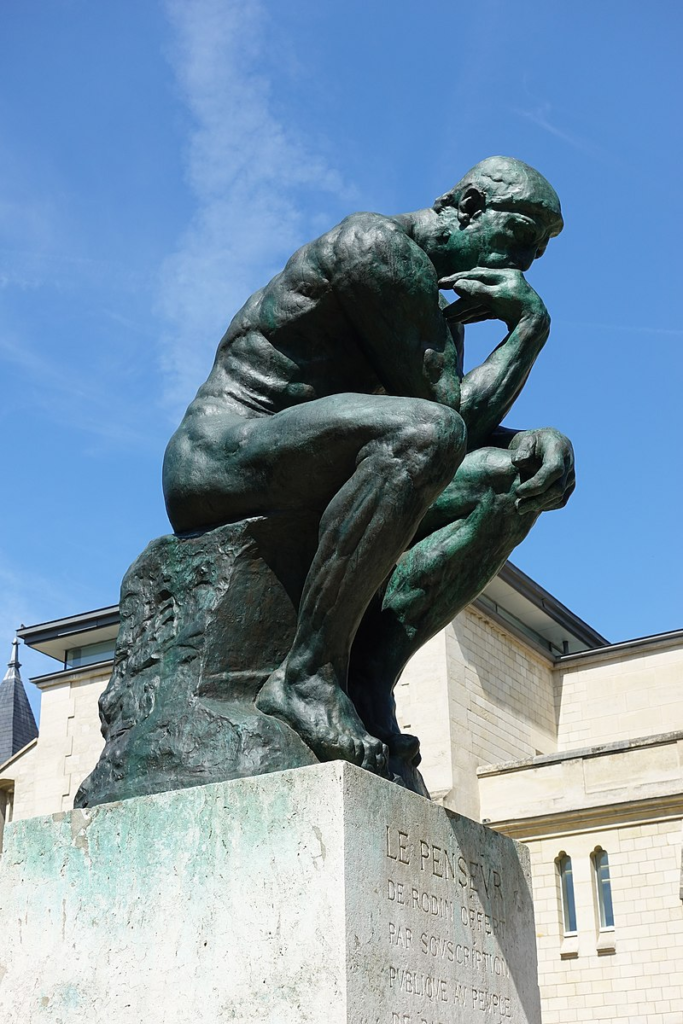
It is easy to make missteps:
- violating company policy without realizing it
- misinterpreting how critical something is and missing a crucial deadline
- debating versus discussing a topic in a group meeting – so easy to do, for your ideas may not be welcome in the culture into which you now find yourself
- asking for special perks before you have actually earned them – this may be a problem for me
- declining invitations to join colleagues outside of work – this is my particular, oft-repeated mistake as the introvert inside me prefers to keep professional separate from personal and thus alienating myself from those whom I need to successfully work with
- coming in late, wearing the wrong thing or engaging in excessive personal calls – happily I remain innocent of such offenses
- not communicating well with core people – this is a combination of hesitation of the employee versus the approachability of the employer
- criticizing the company – one begins to see the weaknesses of the workplace and must decide whether to simply accept what is seen and turn a blind eye or actively activate action to ameliorate the situation
I am slowly, hesitantly, getting to know my colleagues.
I am trying to discover what are the core values and the culture of the place.
How do people communicate?
How do they disagree?
Can they disagree?
How do people get recognized or rewarded?
What happens if a deadline is missed or someone fails?
How does management treat the employees?
How does everyone treat the customers?
How are competition, teamwork, consensus viewed?

At Amerikan Kültür (AK) each class is taught by two teachers, not in tandem at the same time, but staggered across the workweek.
I teach Class A on Mondays.
My colleague teaches Class A on Wednesdays.
I teach Class B on Tuesdays.
Another colleague teaches Class B on Thursdays.
And so on.
So, communication between teachers is critical if we wish to know what one teacher taught and what the following teacher needs to do.
Of the eight classes I teach in a six-day workweek, I share these students with two ladies (Sema / Fatemeh) and two gentlemen (Berkant / Rufat).
There are, of course, other classes and other teachers sharing those other classes, but there is little communication between myself and them, for we simply don’t see one another.
Of the two ladies with whom I share classes, here too communication is minimal, with text messaging the norm more than face-to-face interaction.
It is with the two gentlemen teachers, with whom I share weekend classes, that contact becomes more common.
Rufat often teaches his classes literally next door to mine.
Berkant and I might meet either on the 7th floor cafeteria or in the school reception area where the class binders are kept.

As a result, getting to know Rufat (“call me Ruff“) has been easier than becoming accustomed to Berkant.
Rufat of Azerbaijan and Adam of Canada share lunch on the weekends.
We have also walked from work together and have eaten a meal after work on a couple of occasions.
Despite our very different origins, getting to know Ruf has been a pleasant experience.

Above: Flag of Azerbaijan
I mention all of this as prologue and necessary context to what follows.
My free day is Wednesday, though I have private online lessons on Wednesday evenings.
Ruf’s free day is Friday, though he too might have other private lessons as well.
Last weekend, we discussed the schedule and to my surprise he told me that he would prefer to have his day off on Wednesday and hoped that he can convince the powers-that-be to switch his Friday with my Wednesday.

Personally, I have no objection to having Wednesdays off, but Fridays are appealing for one reason:
The Eskişehir Symphony Orchestra normally has its concerts on Fridays.
To see a concert at present means to pester the boss for time off.
Even before I had started working at AK, I had requested my very first scheduled Friday off to see a former Wall Street English (WSE) student, the concert pianist Eren Yahşi perform on 11 October 2024 with the Eskişehir Symphony Orchestra.
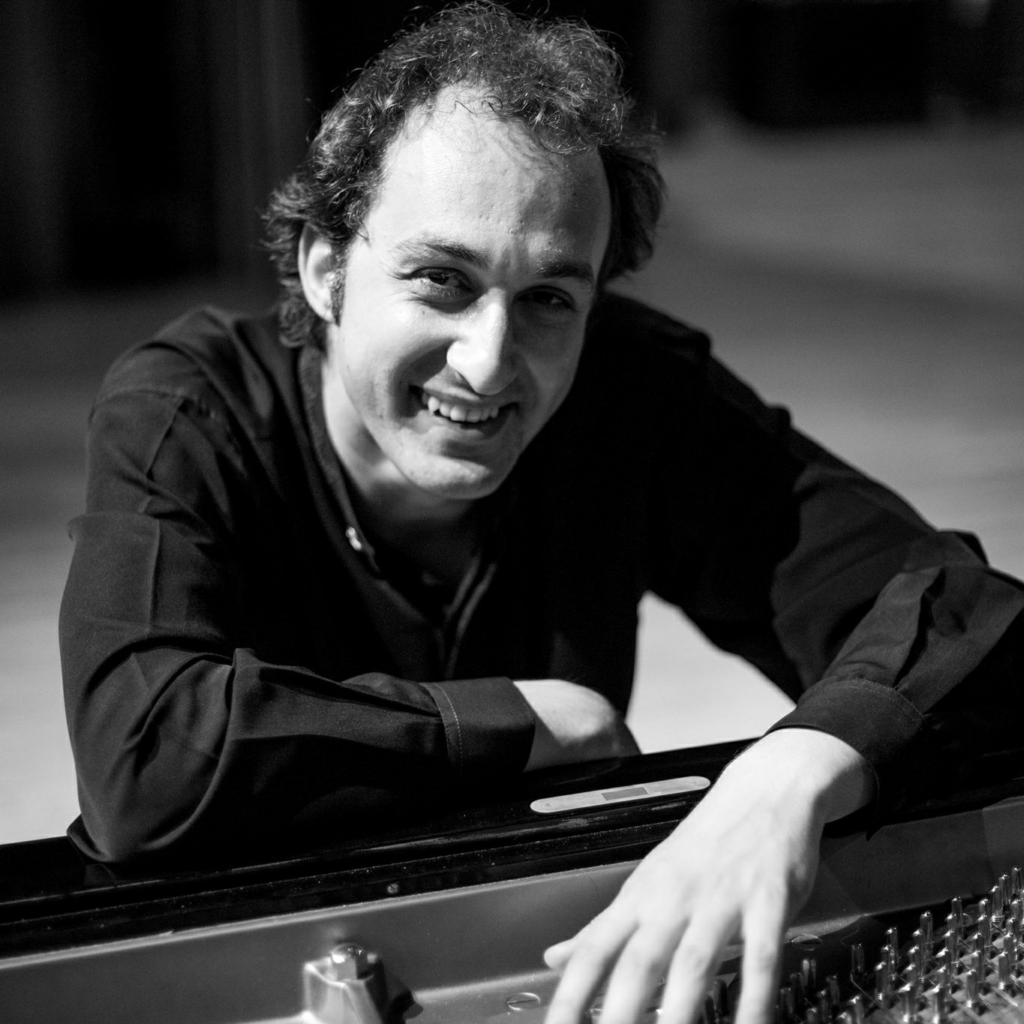
Above: Turkish musician Fahrettin Eren Yahşi
Time off was granted, because I had prearranged this, weeks in advance, but asking for perks, before I am perceived as deserving of them, can be a critical misstep if done too frequently.
As aforementioned, my life these past six weeks, with a new job and changing apartments, has been quite busy, so, to say that I have fallen behind in my journal keeping can be taken for granted.
The coincidental timing of trying to recapture the atmosphere of attending an orchestra performance last month and the intriguing possibility just offered of seeing other concerts in the future has led me to write this post.

Friday (Cuma) 11 October (Ekim) 2024
Everything seemed to fall into place.
Eren informs me back in August of his October concert.
In September, just prior to my departure from WSE, he sends me the electronic link to the Turkish equivalent of Ticketmaster so I can buy my ticket to his (and not incidentally the Eskişehir Symphony Orchestra) performance.

Because I am embarrassingly still weak in communicating in Turkish, my friend Hakan arranges a ticket for me.
I tell any and all who will listen about Eren’s upcoming performance.
(I did not see anyone, except Eren, whom I recognized at the performance.)

Above: Eren Yahşi
I marveled at how I had somehow never had been to a symphony orchestra performance before.
How had that happened?
(Or, more accurately, how had that NOT happened?)

Eren had had Encounters (WSE oral examinations after each audiovisual unit), Social Clubs (conversation groups), Complementary Clubs (level practice sessions) as well as Business and Technical English classes (that I had founded, promoted and taught) with me.
My Iranian colleague and friend Rasool prepared him and a female counterpart for the TOEFL (Test of English as a Foreign Language) exam.
(I have not learned as yet whether he did the exam nor how he fared.)

Eren revealed over the course of at least a year at WSE how he was a concert pianist and that he also teaches others how to play the piano.

(Presumedly children, but perhaps even adults as old as Groundhog Day‘s Phil Connors (Bill Murray)?
Groundhog Day tells the story of a cynical television weatherman covering the annual Groundhog Day event in Punxsutawney, Pennsylvania, who becomes trapped in a time loop, forcing him to relive 2 February repeatedly.
Murray initially hated the finished Groundhog Day.
In a 1993 interview, he said that he wanted to focus on the comedy and the underlying theme of people repeating their lives out of fear of change.

The duration of Phil’s real-time entrapment in the time loop has been the subject of much discussion.
Ramis once said that he believed the film took place over ten years.
When a blogger estimated the actual length to be approximately nine years, Ramis disputed that estimate and his own.
He replied that it takes at least 10 years to become good at an activity (such as Phil learning ice sculpting and to speak French) and “allotting for the down-time and misguided years he spent, it had to be more like 30 or 40 years.”

Above: American actor, comedian and filmmaker Harold Allen Ramis (1944 – 2014)
A similar estimate suggests that it takes at least 10,000 hours of study (just over a year’s worth of time) to become an expert in a field, and given the number of loops seen or mentioned on screen, and how long Phil could spend per day studying, that Phil spent approximately 12,400 days, or nearly 34 years, trapped in the loop.
In Rubin’s original concept draft, Phil himself estimates that he has been trapped for between 70 and 80 years, having used books to track the passage of time.
The film has been interpreted in many ways by different groups.
Rubin has said that he did not set out to write the film as a spiritual allegory.
He simply wanted to tell a story about human life and periods when a person becomes trapped in a cycle that they cannot escape.
He said it was not “just about a man repeating the same day but a story about how to live.
Whose life isn’t a series of days?
Who doesn’t feel stuck from time to time?“

Above: American screenwriter / playwright Danny Rubin
In the bowling alley scene, Phil asks two Punxsutawney residents if they understand what it is like to be stuck in a place where nothing they do matters.
He is referring to his own situation, but the two men, trapped in their own small-town lives, know exactly what he means.

Above: (left to right) Phil Connors (Bill Murray), Ralph (Rick Overton) and Gus (Rick Ducommun: 1952 – 2015), Groundhog Day (1993)
While Rubin and Ramis discussed several of the philosophical and spiritual aspects of the film, they “never intended it to be anything more than a good, heartfelt, entertaining story.”
Murray saw the original script as an interpretation of how people repeat the same day over and over because they are afraid of change.

Above: American actor / comedian Bill Murray
Rubin added that at the start of the loop, it is the worst day of Phil’s life.

By being forced to change who he is, to embrace the world around him, and each moment of his day, it becomes the best day of his life – the day he falls in love. )

I find myself both envying and pitying Eren.
Does a pianist who, as a child, liked to tickle on the piano really enjoy playing the same Chopin nocturnes over and over again all his life?

Born in 1984, Yahşi started his piano education in 1995 at Anadolu University State Conservatory.

From 1999 until his graduation in 2005, he studied with Professor Zöhrab Adıgüzelzade, a famous Azerbaijani artist.
Fahrettin Eren Yahşi won first prizes at the Second National Young Talent Piano Competition in 2022, the First Adnan Saygun International Bodrum Piano Competition in 2012, arranged by the 9th International Gümüşlük Piano Festival.

Above: Turkish composer Ahmet Adnan Saygun (1907 – 1991)
In 2013, Eren was named a finalist at the World Pianist Invitational Piano Competition in Washington DC.

Above: National Mall / Lincoln Memorial, Washington DC
He won 3rd prize at the Performance Without Limits Piano Competition arranged by Lodz Music Academy, in Poland.

Above: Flag of Poland
He also won the Aspiration Special Prize at the 1st Olga Kern International Piano Competition in 2016, Albuquerque, New Mexico.

Above: Russian-born American pianist Olga Kern
Eren Yahşi has participated in many master classes of well-known professors, such as Professor Mihail Lidsky and Professor Naum Starkman both at Tchaikovsky Conservatory in Moscow.

Above: Red Square, Moscow, Russia
In 2008, he was accepted at the University for Music and Performing Arts-Vienna to study with Professor İnci Hausler-Altınok, Professor Mikhail Krist, Professor Roland Keller and Professor Oleg Meisenberg.

Above: Skyline of Vienna (Wien), Austria (Österreich)
Turkish National Television (TRT Okul) and TV8 both have broadcasted Yahşi’s performances.


Yahşi has performed with the Anadolu University Symphony Orchestra, the Eskişehir Municipality Symphony Orchestra and the Azerbaijani Opera Orchestra.


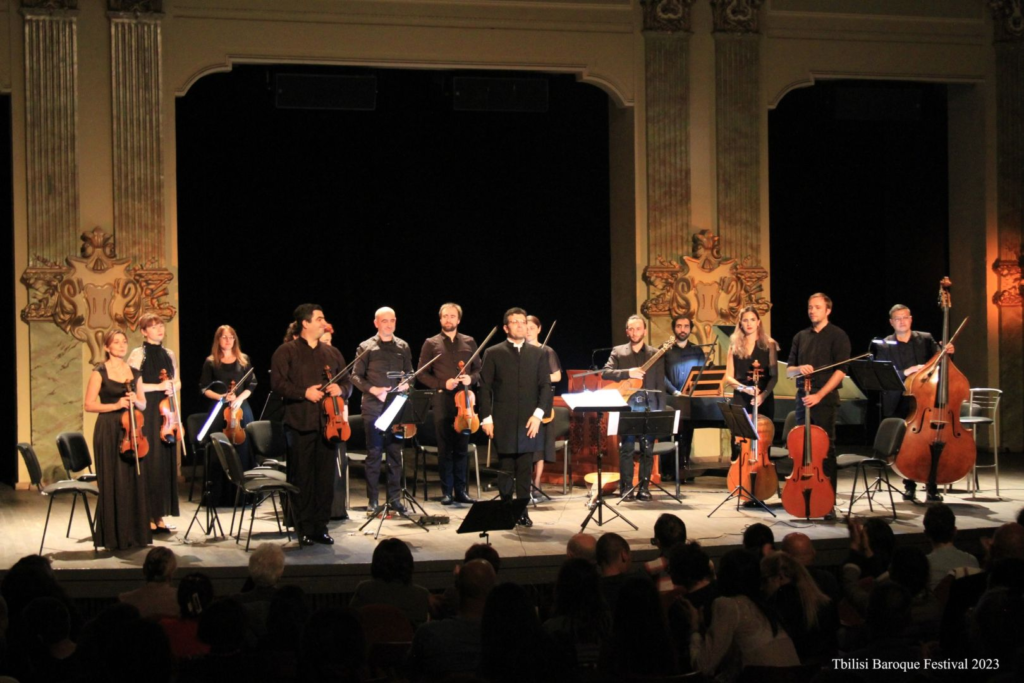
Azerbaijani and Turkish media praised his performances on many occasions, but especially his performances at Baku Music Academy and Baku State Conservatory.

Since 2005, Eren Yahşi has been a faculty member at the Anadolu University State Conservatory.

Above: Eren Yahşi
Though I have been one of Eren’s language teachers, my humble origins and status seem muted compared to his accomplishments.
I find myself wondering how our lives are so vastly different.
There are so many questions I would love to ask Eren.
Was he a child prodigy?

Above: Portrait of Wolfgang Amadeus Mozart (1756 – 1791) at the age of 13 in Verona, 1770 – a well-known child prodigy, started composing at the age of five.
Did he come from an artistic family or was he an ugly duckling – a potential swan – raised amongst ducks?

Was he cajoled and coddled once his talents manifested or did he need to discover and develop himself in the manner of a musical Martin Eden?
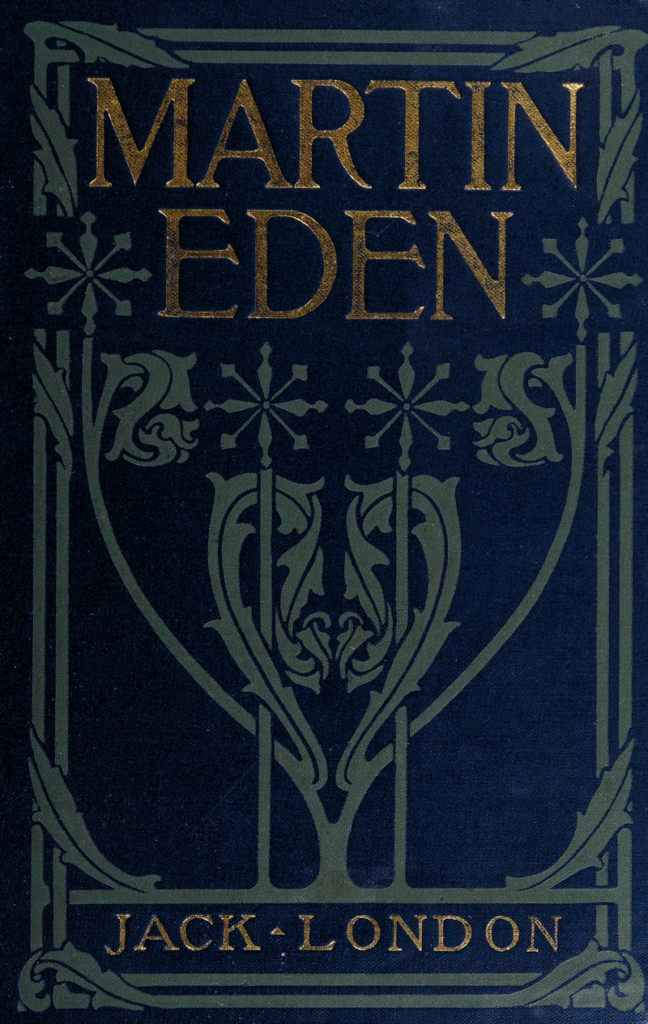
I think of my own musical background.
My mother loved singing in a band that her family had formed.
She had always felt that her marriage and the subsequent sequence of children that resulted denied her the chance to achieve the fame and recognition she deserved.
The restlessness and regret that followed led to a bitter break-up with the man whose name I carry.
The remorse she may have felt leaving him and their offspring behind was followed by disease and death.

The one child she had kept, the youngest, would subsequently be shunted into the foster care system of the province of Québec.

Above: Provincial flag of Québec, Canada
The list of homes before I landed with the clan O’Brien and the curmudgeon Allard, in the tiny village with the impossibly long name of St. Philippe d’Argenteuil de la Paroisse de St. Jerusalem, numbered at least a half-dozen.

Music entered my life via the radio that my foster mom-spinster O’Brien would constantly listen to as she kept the house ship-shape and Bristol proper for the confirmed bachelor Allard.
CFRA, which always seemed to play music from a decade behind the times, and a few vinyl 45s that she endlessly replayed – I still recall Engelbert Humperdinck – (the British pop singer not the German composer) singing how he “had the last waltz with you, two lonely people together” and how “I fell in love with you” and how “the last waltz should last forever” – Anne Murray telling how “you needed me” and wishing that the “little snowbird, take me where you go” and Tony Orlando asking his girl to “Tie a Yellow Ribbon Around the Old Oak Tree” and “knock three times on the ceiling if you want me“.




Doris Evelyn O’Brien loved watching, as she hustled and bustled about – I rarely picture her actually sitting – the Tommy Hunter Show (1965 – 1992) and Hee Haw (1969 – 1993).
Country music and “safe” easy listening / soft rock tunes was the soundtrack of my childhood.


I have hazy memories of receiving a left-hander’s acoustic guitar and lessons, for Doris briefly dreamed of my being the next Ronnie Prophet (1937 – 2018) (a local boy who rose from humble Calumet, Québec, to country music fame with his own TV show (1974) and a home in Branson, Missouri).

Above: Canadian entertainer Ronnie Prophet
I did have some initial success.
I could play “The Lord of the Dance” (“Dance, dance, whomever you may be, I am the Lord of the Dance, said the He. And I’ll lead you all whomever you may be, for I am the Lord of the Dance, said the He.”) and coax a wee bit of Spanish strumming out of the thing.
But one day I put the guitar down and never picked it up again.

In the confines of comfort that would be my final foster home the most rebellious my music tastes got were ABBA and the Beatles.

Above: ABBA in 1974; from left: Benny Andersson, Anni-Frid “Frida” Lyngstad, Agnetha Fältskog, and Björn Ulvaeus

Above: The Beatles – clockwise from top left: John Lennon (1940 – 1980), Paul McCartney, Ringo Starr and George Harrison (1943 – 2001)
The first album I ever owned and bought with my own money – I never received an allowance, but at the age of 15 I had entered a Zeller’s store contest and won a chain saw which was immediately sold with a small amount of cash mine to spend as I desired – was a K-Tel record compilation entitled “Emotions“.

I could listen to music.
My foster “father“, Zenon Frédéric Allard, could not.
When I knew him, his deafness had already worsened to the point where even a hearing aid was generally ineffective.
As a result, I cannot recall having a single conversation with the man.
He neither admonished nor praised me.
We tolerated one another, but I cannot say that we loved one another as father and son.
He was a fixture in his armchair in the living room.
He would read, smoke and watch hockey on television.

He would fix things around the house, collect and pile firewood, and drive Doris around – to Hawkesbury (across the border in Ontario) and Lachute and once a month to Cornwall for shopping / to Carillon Provincial Park to collect bottles for their deposit (never calculating that the money she earned was peanuts compared to the gas he consumed).

Above: Hawkesbury, Ontario, Canada
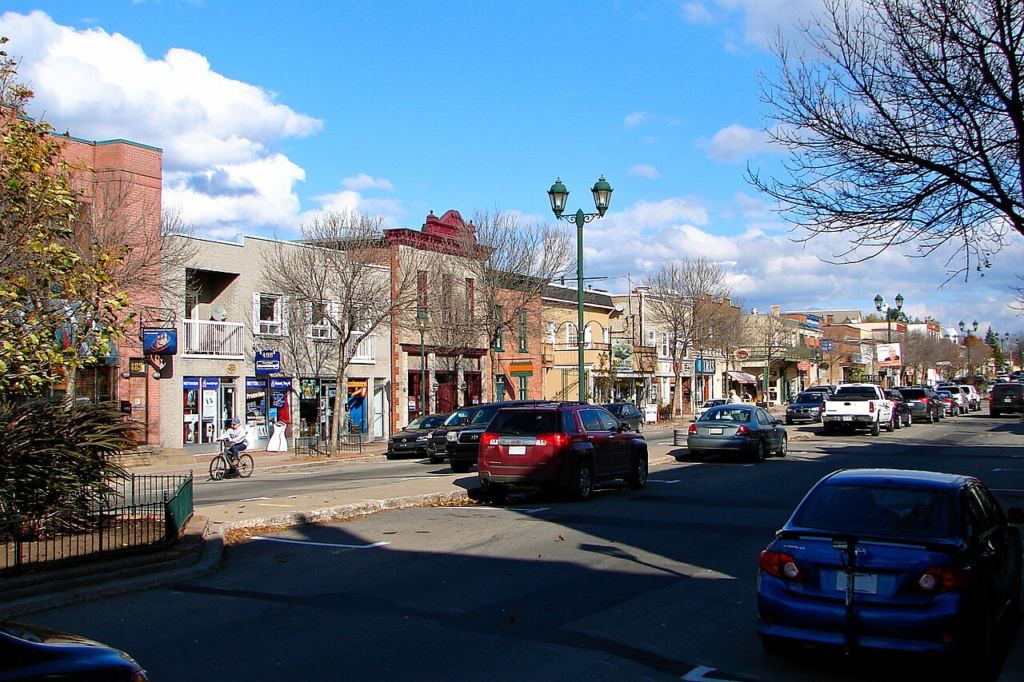
Above: Lachute, Québec, Canada

Above: Carillon Park, Argenteuil County, Québec, Canada
He, in his own silent compliant way, loved her.
She, in her headstrong manner, never truly appreciated him.
Growing up with them was akin to being the ward of a chaste priest and a willful nun.
(I have led an odd life.)

Freddy – and this mannerism I inherited from him – always agreed with Doris for the sake of peace.
He rarely spoke of what he wanted.
Part of the problem is that men are less skilled in verbal debate, being given less training as boys.
Freddy never chased Doris.
Though he was persistent and gentlemanly, he never worked to win her over.
He was her employer and homeowner.
She kept his house.

For her own sense of financial independence, she took in foster children for the money the province would give her for their maintenance.
He tolerated them.
Freddy showed great affectionate for my foster sister who left home as I entered it.
I am glad that this bond between them existed.

Doris was one of the most pragmatic women I have ever known.
Of course, I would end up marrying a woman with a similar character!

The distance between Freddy and Doris, the longing unexpressed, she did not extend a welcome, he did not chase.
They did not need sex, but they both needed love.
One can be an expression of the other.
Passion lies buried in the plot of passivity.
What anxieties, fear and rage they may have felt was never given a voice.
He could not talk to her and she could not talk to him.

Her moods manifested themselves in burst of rage over minor things.

“Bleak House“, my unspoken name for the building that housed this unlikely trio, was maintained like a Museum of Antiquities.
Look.
Don’t touch.
Freddy hid behind a newspaper or buried himself in hockey.
I sought solace and sanctuary in books.
Children are best seen, but not heard.
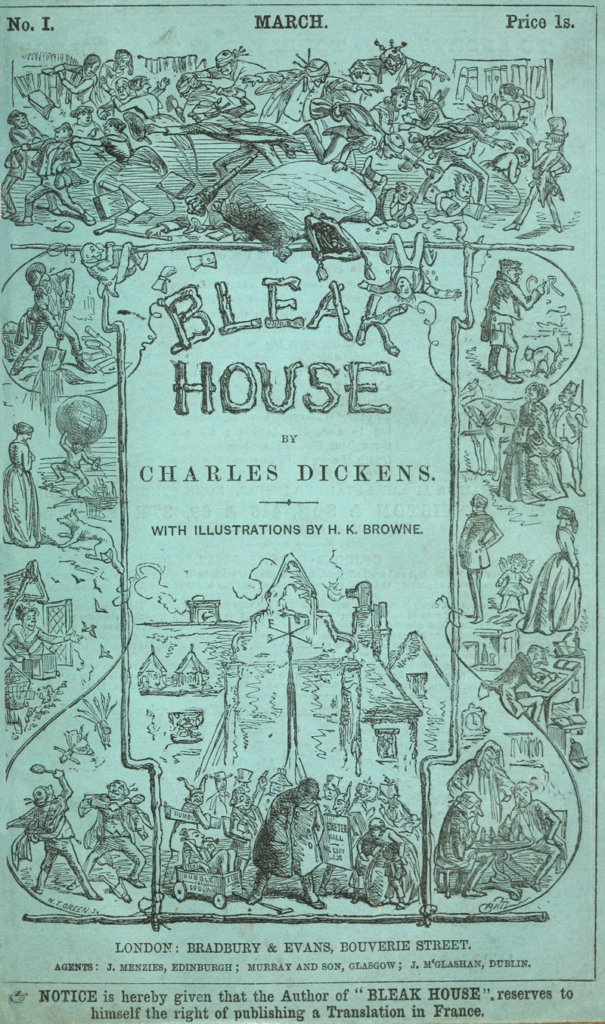
Men so often are in a relationship but not of it.
We lived together without sharing our lives together.
Somehow, the soundtrack of our shared solitude would best be expressed by classical music.
Perhaps it was this very risk of expression that may explain why I never heard classical music in this house.

I mention Freddy in connection with music, for he like all men had a past before I was foisted into his life as supplementary income for Doris.
In his youth, he played the fiddle.
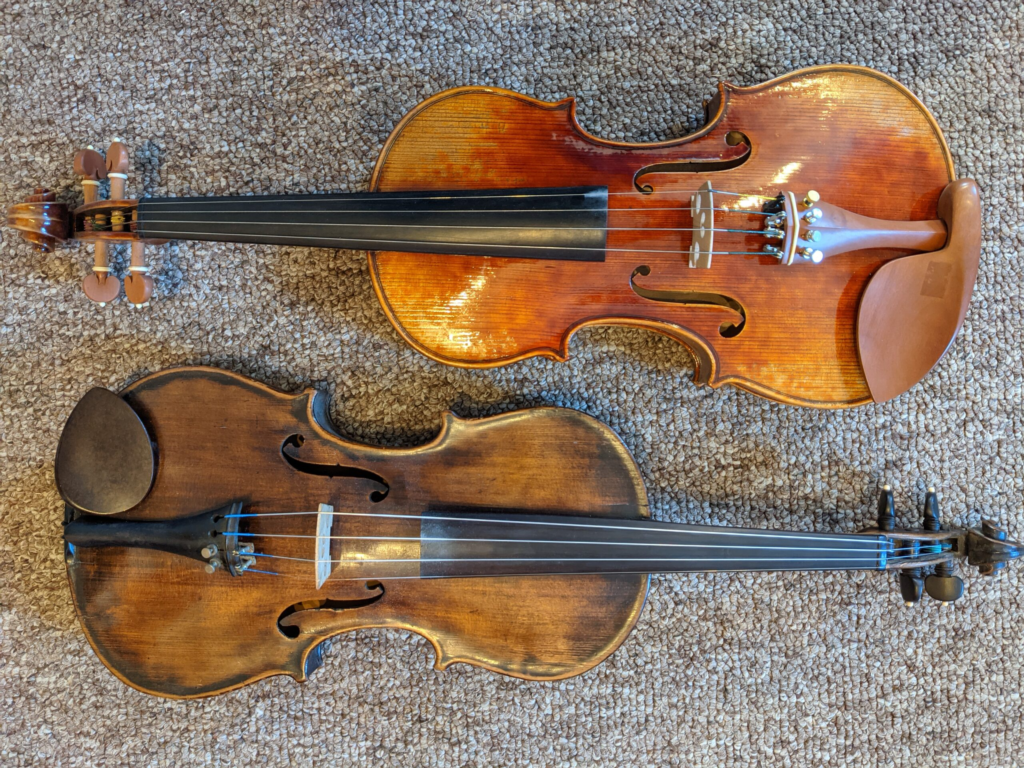
And if the few stories I heard of him were true, his fiddle-playing would have been good enough for the likes of Don Messer’s Jubilee (1959 – 1969).
(With its Down East “old-time” fiddle music of Don Messer and His Islanders, this was one of the most popular and enduring Canadian television programs of the 1960s.
Like Messer, Freddy was known as a shy fiddler, who preferred to have the other members of the band take the spotlight.)

Above: Canadian entertainer Don Messer (1909 – 1973)
He performed with his band on occasion at the long-gone never-forgotten Bar X in Calumet, but, unlike Ronnie Prophet, fortune and circumstances never favored Freddy.
He made his money as a laborer and Jack-of-all-trades.
He was a kind and generous man with whom I lived and yet never got to know.

Above: Calumet, Grenville-sur-la-Rouge, Québec, Canada
One of the few images of him that remains forever branded in my memory was one day seeing him sitting on the bed, his normally-hidden fiddle held against his ear and the evident strain on his face trying to hear the music of yesterday.
The sorrow was palpable.
I never told him how much he meant to me, despite and because of the silence between us.
At that moment, for that moment, I loved that man.
Others have told me of how truly wonderful a man he was.
Freddy was deaf, but I was truly blind.
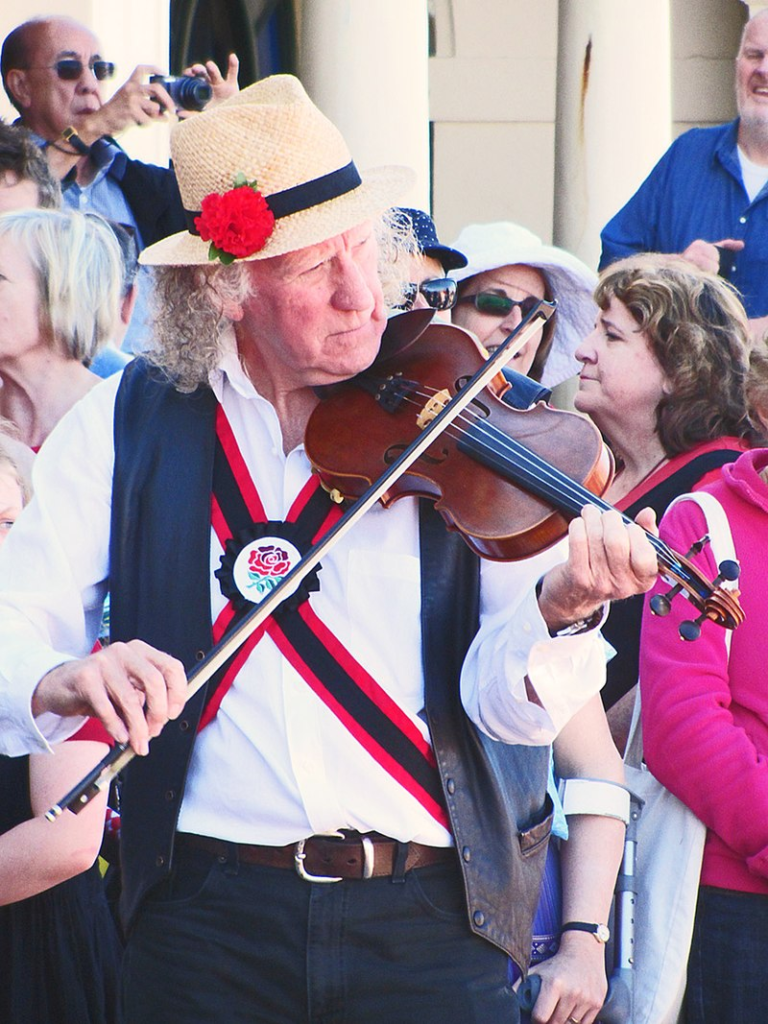
It has been estimated that 30% of men today don’t speak to their father, that they have a prickly relationship, that go through the motions of being a good son – and discuss nothing.
Manhood isn’t an age or a stage.
It is a connection.
Without connecting to the inherited masculinity of generations of older men, you are as much use as a phone without a socket.
I never had a profound conversation with Freddy nor with my biological father I met many years later.
I will never understand their lives, their reasons, their failures and their successes.
I have built my castle of manhood upon shifting sands – on guesswork and impressions of what a man should be, but, by virtue of his humanity, can never truly be.
They haunt me and within me live forever.

Pain is suppressed by hard work and denial.
“I’m alright.
Don’t have to worry about me.“
(Kenny Loggins, Caddyshack)

“I haven’t got time for the pain.“
(Carly Simon)

Lyrics are always handy mottos.
My journey in life is both geographical and internal.
Long forgotten incidents and experiences softly rise to the surface.

Every father, however much he puts on a critical or indifferent exterior, will spend his life waiting at some deep level to know that his son loves and respects him.
He will spend his life waiting.
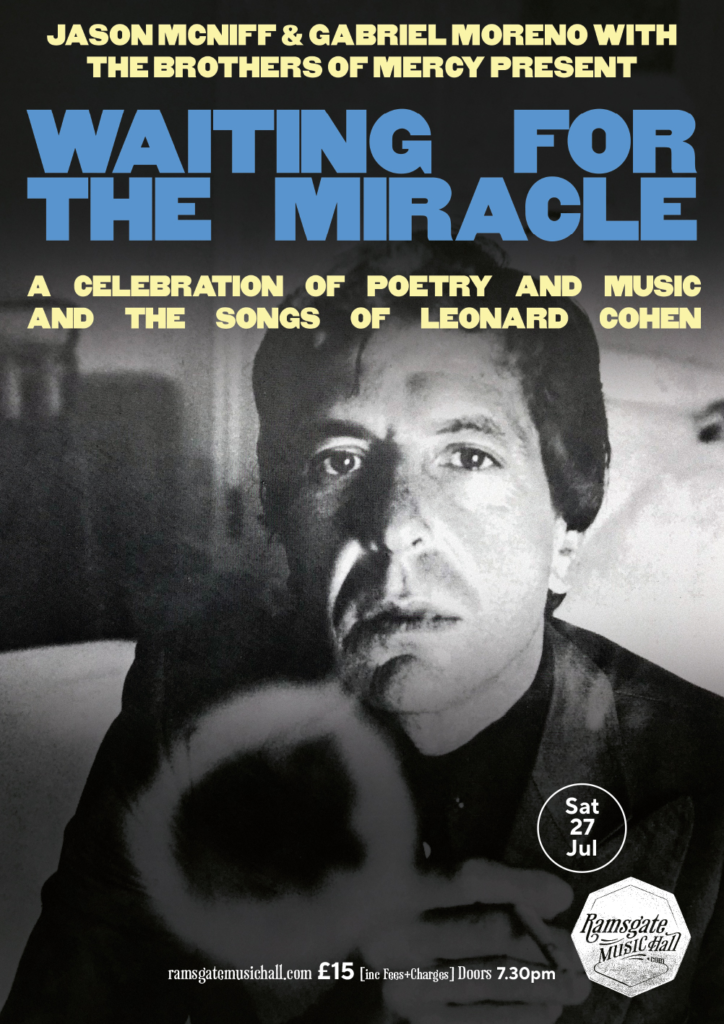
It has always been obvious that a parent has the power to crush a child’s self-esteem.
Few realize that a child, in time, holds the same power in reverse.
Many men go to their graves convinced that they have been inadequate human beings.

I may never know the true story of their lives, how were their childhoods, their work, their struggles and the decisions they made, and what it was like for them to have me in their lives – albeit in a limited fashion.
It is easy to cast a man into the role of a monster.
It is difficult to see a monster in the role of a man.
Only by humanizing the men who shape us can we truly accept the limits of our own humanity.

(Sometimes I think that one of the biggest mistakes between fathers and sons is the same one made in conflicts around the world.
The goal is to break down the defenses and negotiate peace.
Break down the wall, not the man defending it.)

Of course, high school had music.
The school, Laurentian Regional High School, had a “radio room” which would play principal-approved music.
Across the road from the school, where the rough rebels, the cool dudes and those that love bad boys, was a kiosk where one would buy forbidden fast food and cigarettes and rumored “other substances“.
There the music was harder, harsher, alien to my ears in the rare moments my curiosity compelled me across the road.
Both the Radio Room and the kiosk played their music, but much like Doris’ musical selection, I heard the music but rarely listened.

I briefly flirted with the idea of becoming a cymbals player in the Army Cadets, but the act of joining the Cadets had been done secretly and with forged signature, and once discovered, was immediately quashed.
I think the cymbals appealed to me for the sole reason that Bing Crosby (another of Doris’ favorites) sang of them in his tune “McNamara’s Band“, a tune much beloved by Doris:
Oh, the drums go bang and the cymbals clang and the horns they blaze away
McCarthy pumps the old bassoon while I the pipes do play
And Hennessee Tennessee tootles the flute and the music is something grand
A credit to old Ireland is McNamara’s band

Why the cymbals and not the drums or the brass?
Blame it on the Dutch.
Well, at least, a Dutchman.

Above: Flag of the Netherlands
Somehow, unconsciously, I have always lived up to the Kerr clan motto Sero Sed Serio (“late but in earnest“).
(The motto was adopted following the Battle of Ancrum Moor, in February 1545, which took place around 10 km from Ferniehirst Castle (a Clan Kerr castle) during the Rough Wooing.
(England attacked Scotland, partly to force the Scottish Parliament to confirm the existing marriage alliance between Mary, Queen of Scots and the English heir apparent Edward, son of King Henry VIII, under the terms of the Treaty of Greenwich of July 1543.)
During 400 years of cross-border invasions, feuding and lawlessness in the Scottish Borders, survival came to depend upon a shifting pattern of allegiances.
On this occasion, the Kerrs, who were accomplished mounted troops, initially sided with the English forces.
As the balance of the battle tipped in favour of the Scots, the Kerrs switched loyalties and turned their cavalry against the English, who had a low winter sun in their eyes, and drove them from the field.
The Kerrs thus arriving late, but in earnest.)

In terms of music, I somehow managed to be the very last student to enroll in high school teacher Mr. Verkerk’s music class one year.
I wanted to play the drums.

I was assigned the tuba.
The most sound I could muster out of the brass beastie was an embarrassed fart.
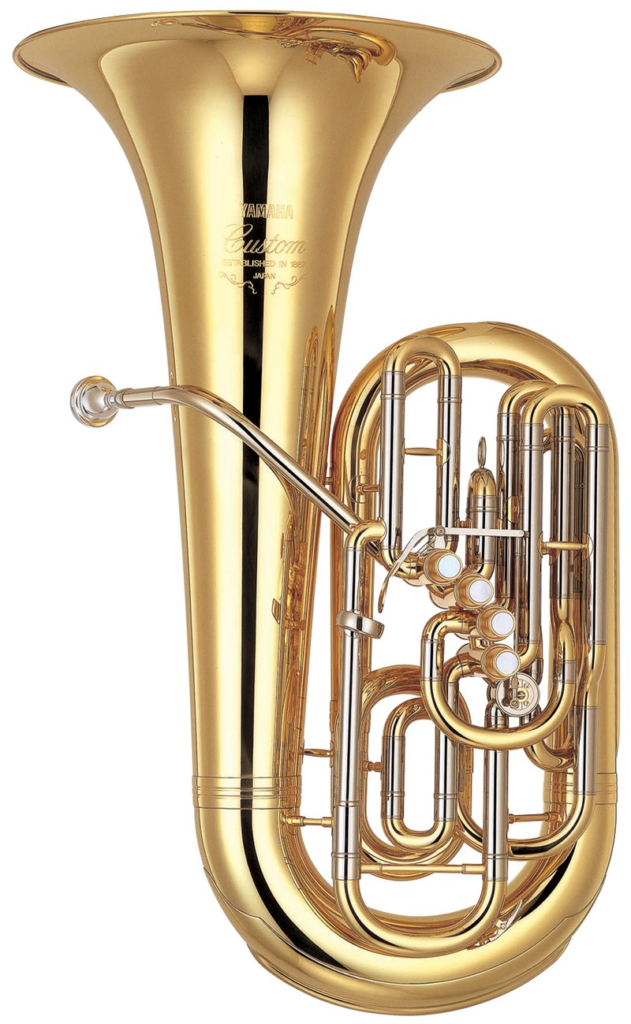
Mr. V saw little innate talent nor any hope in my developing any.
His class, his harmonic congregation, worshipped him.

And he may have been an excellent music teacher for them, even elevating them to perform in schools in his native Holland.
But the feeling of exclusion compelled me to leave the class as quickly as I could.
And created within me the association of rejection with classical music.

I had never deliberately listened to classical music until I travelled to Europe for the first time in 1995 at the age of 30.
Classical music was, for the most part, then the only music my future wife listened to.
Through her, I began to listen to classical music.
I still cannot readily identify composers with the music they are famous for, but classical music, because it is normally lacking lyrics, has proven to be the music I prefer to read and write with.
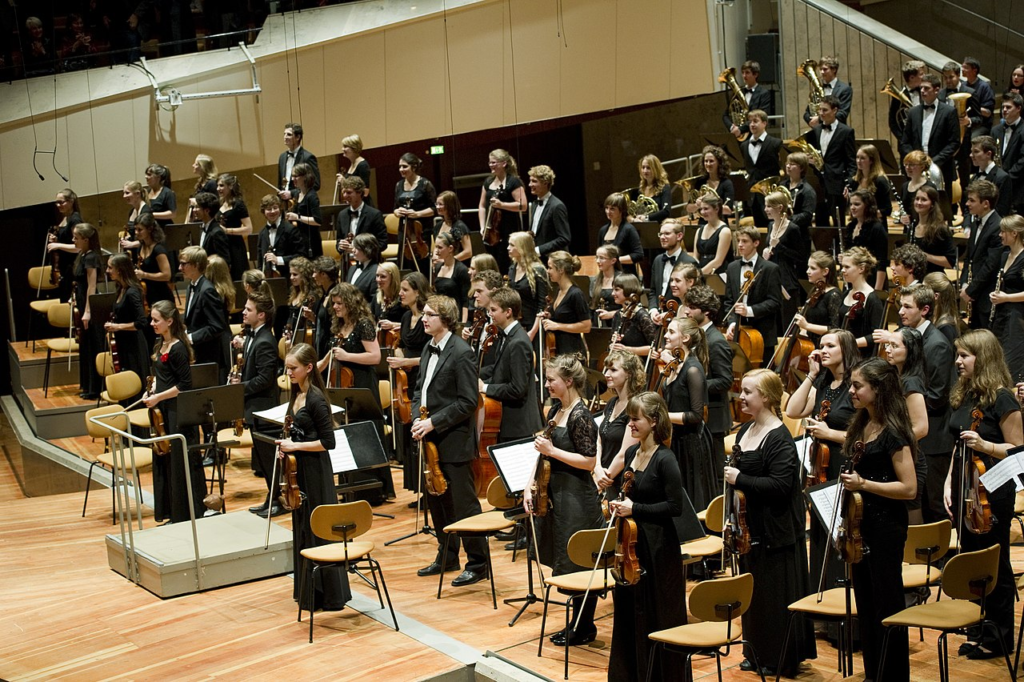
Before this evening’s concert, I googled Eren Yahşi’s name and began listening to videos of his performances on YouTube from 2016 to 2022.


I watched him perform Beethoven and Brahms, Chopin, Prokofiev and Rachmaninoff, to name just a few.

Above: German composer Ludwig van Beethoven (1770 – 1827)

Above: German composer Johannes Brahms (1833 – 1897)
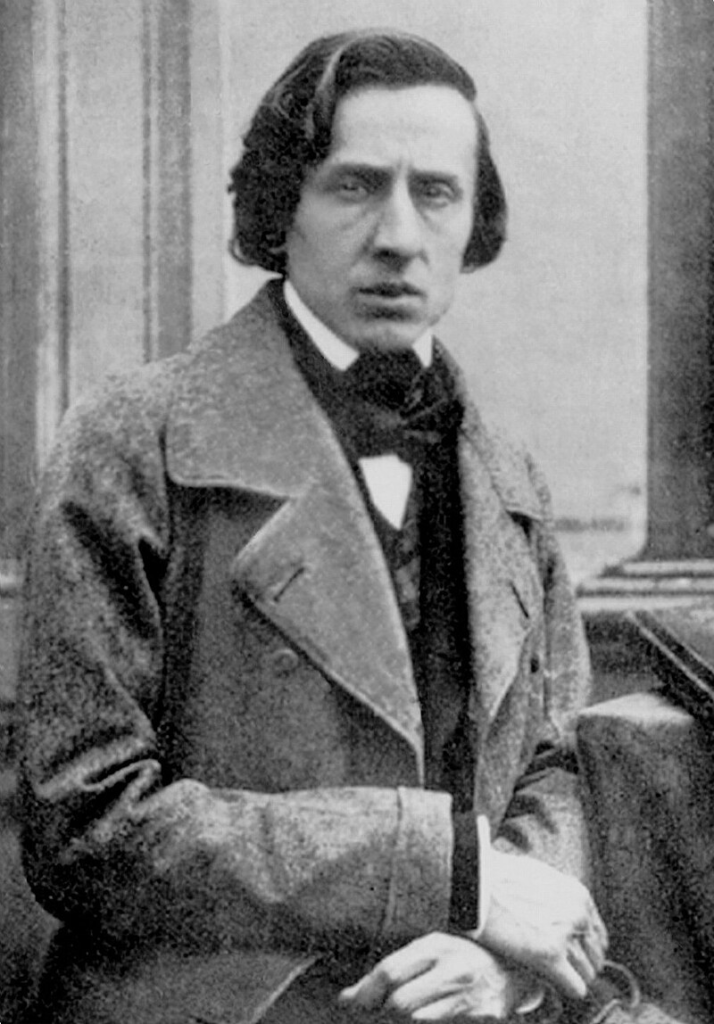
Above: Polish composer Frédéric Chopin (1810 – 1849)
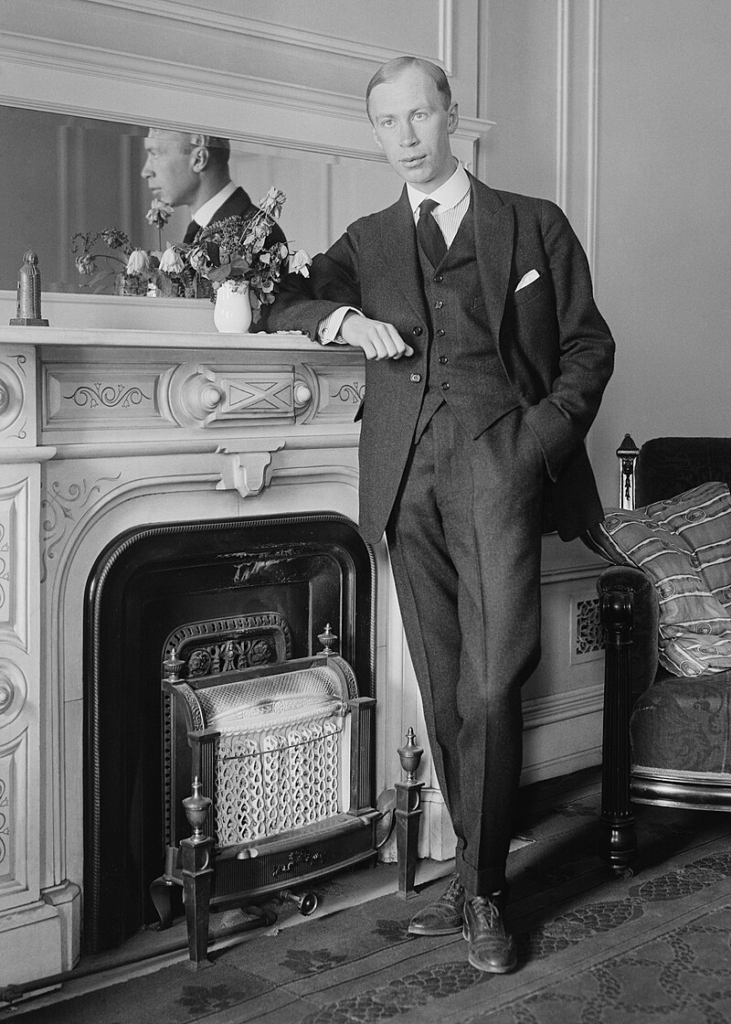
Above: Russian composer Sergei Prokofiev (1891 – 1953)

Above: Russian composer Sergei Rachmaninoff (1873 – 1943)
This evening he would perform Berlioz’s Corsair Overture, Liszt’s Piano Concerto #2 and Mendelssohn’s Symphony #5 (“Reformation“).
Were his performance pieces his choice or were these choices dictated to him?
How many hours did he practice these pieces over and over and over again?
I don’t know.
Part of me doesn’t want to know, for mystery maintains magic and mystique.
I do my homework before the concert.
I listen to the pieces Eren will perform.
I look into the history of the works and the composers who wrote them.

At first glance, playing Hector Berlioz’s Corsair Overture (Opus #21) seems to be an unusual choice.
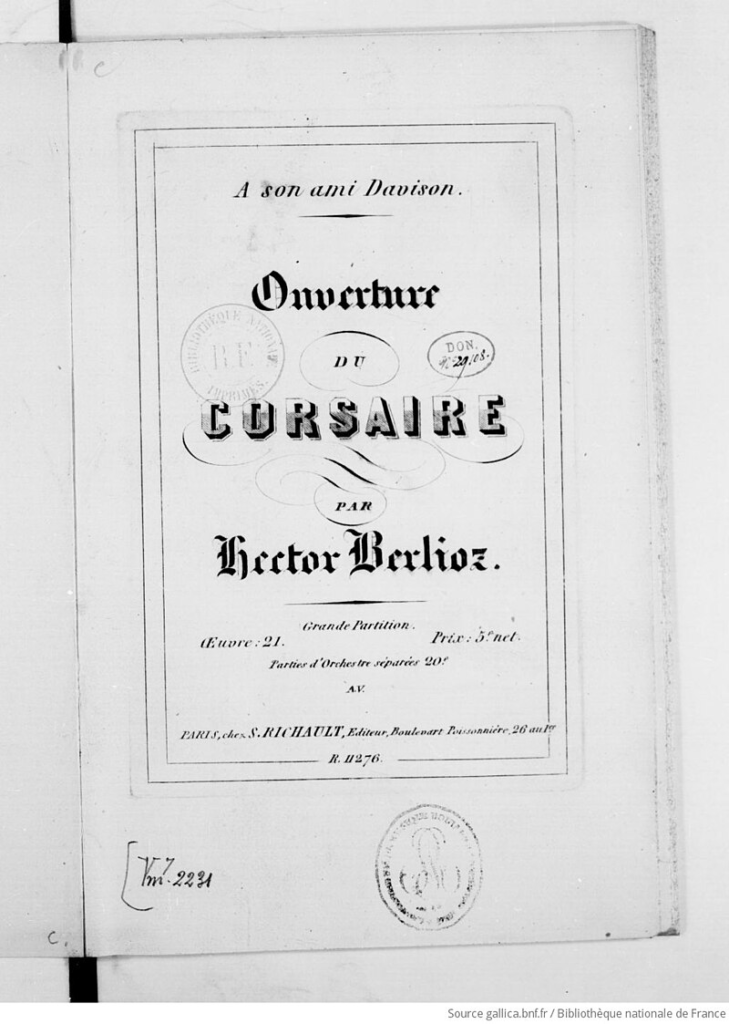
The overture was composed while Berlioz was on holiday in Nice in August 1844.
It was first performed under the title La tour de Nice (The Tower of Nice) on 19 January 1845.

Above: Images of Nice, France
It was then renamed Le corsaire rouge (after James Fenimore Cooper’s novel The Red Rover) and finally Le corsaire (suggesting Byron’s poem The Corsair).

Above: American author James Fenimore Cooper (1789 – 1851)

Above: English Romantic poet Lord Byron (1788 – 1824)
The instrumentation is two flutes, two oboes, two clarinets in C, four horns (in C and F), two bassoons, two trumpets in C, two cornets in B♭, three trombones, ophicleide, timpani and strings.
Wikipedia makes no mention of the inclusion of a piano.
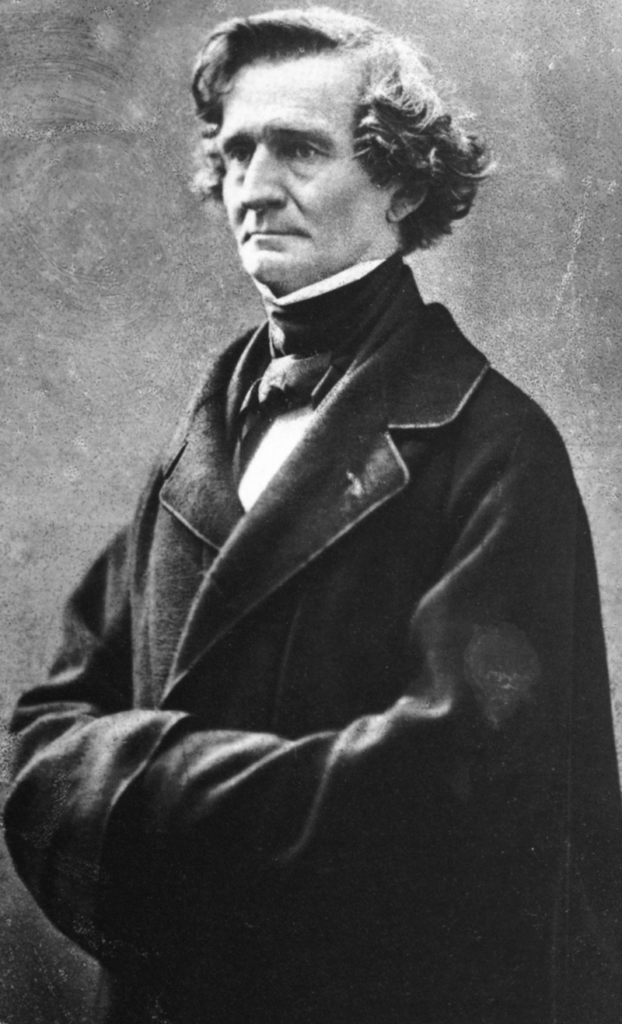
Above: French composer Louis-Hector Berlioz (1803 – 1869)
The French romantic composer and conductor Louis-Hector Berlioz produced significant musical and literary works.
Berlioz composed mainly in the genres of opera, symphonies, choral pieces and songs.
As well as these, Berlioz also produced several works that fit into hybrid genres, such as the “dramatic symphony” Roméo et Juliette and Harold in Italy, a symphony with a large solo part for viola.
Berlioz’s compositions are listed both by genre and by the catalogue developed by the musicologist D. Kern Holoman.
Opus numbers were assigned to compositions when they published.
However, they were only given to a fraction of Berlioz’s work and are not in chronological order.
Berlioz’s writings include memoirs, technical studies and music criticism.

Above: Hector Berlioz
Many of Berlioz’s works resist easy categorization.
Assigning them to a genre is often impossible.
His output includes orchestral works such as the Symphonie fantastique and Harold in Italy, choral pieces including the Requiem and L’Enfance du Christ, his three operas Benvenuto Cellini, Les Troyens and Béatrice et Bénédict, and works of hybrid genres such as the “dramatic symphony” Roméo et Juliette and the “dramatic legend” La Damnation de Faust.

Above: Hector Berlioz
The elder son of a provincial physician, Berlioz was expected to follow his father into medicine.
Berlioz’s father, a respected local figure, was a progressively minded doctor credited as the first European to practice and write about acupuncture.

He was an agnostic with a liberal outlook.
His wife was a strict Roman Catholic of less flexible views.

Above: Dr. Louis Berlioz (1776 – 1848)
After briefly attending a local school when he was about 10, Berlioz was educated at home by his father.
He recalled in his Mémoires that he enjoyed geography, especially books about travel, to which his mind would sometimes wander when he was supposed to be studying Latin.
The classics nonetheless made an impression on him.
He was moved to tears by Virgil’s account of the tragedy of Dido and Aeneas.

Above: Modern bust of ancient Roman poet Virgil (70 – 19 BC) at the entrance to his crypt in Naples (Napoli), Italy (Italia)
Later Berlioz studied philosophy, rhetoric, and – because his father planned a medical career for him – anatomy.
Music did not feature prominently in the young Berlioz’s education.
His father gave him basic instruction on the flageolet.
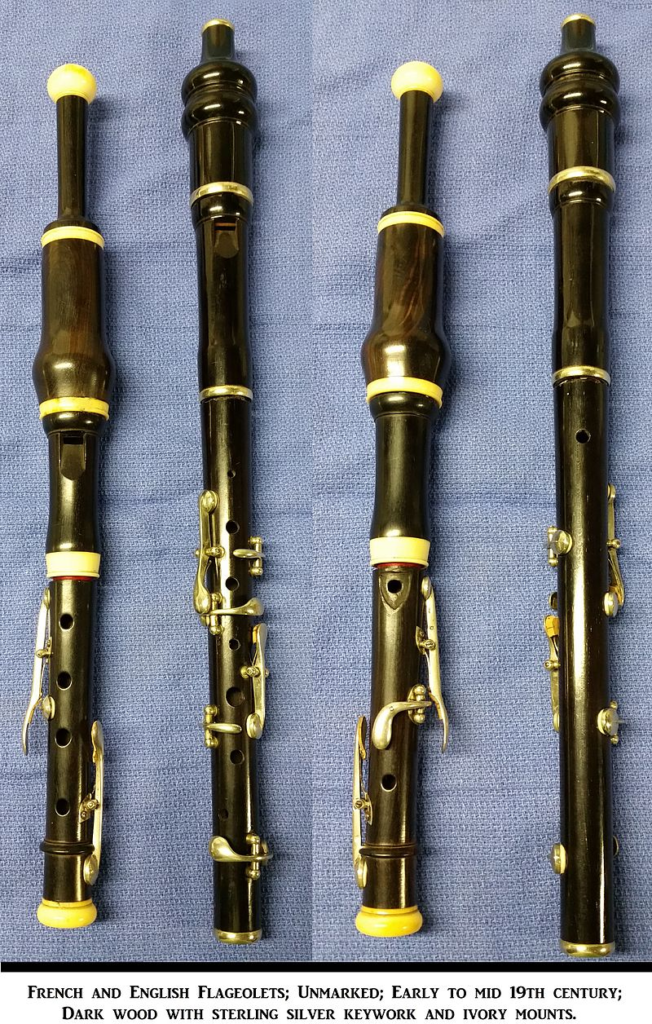
He later took flute and guitar lessons with local teachers.
He never studied the piano.
Throughout his life, he played haltingly at best.
He later contended that this was an advantage because it “saved me from the tyranny of keyboard habits, so dangerous to thought, and from the lure of conventional harmonies“.
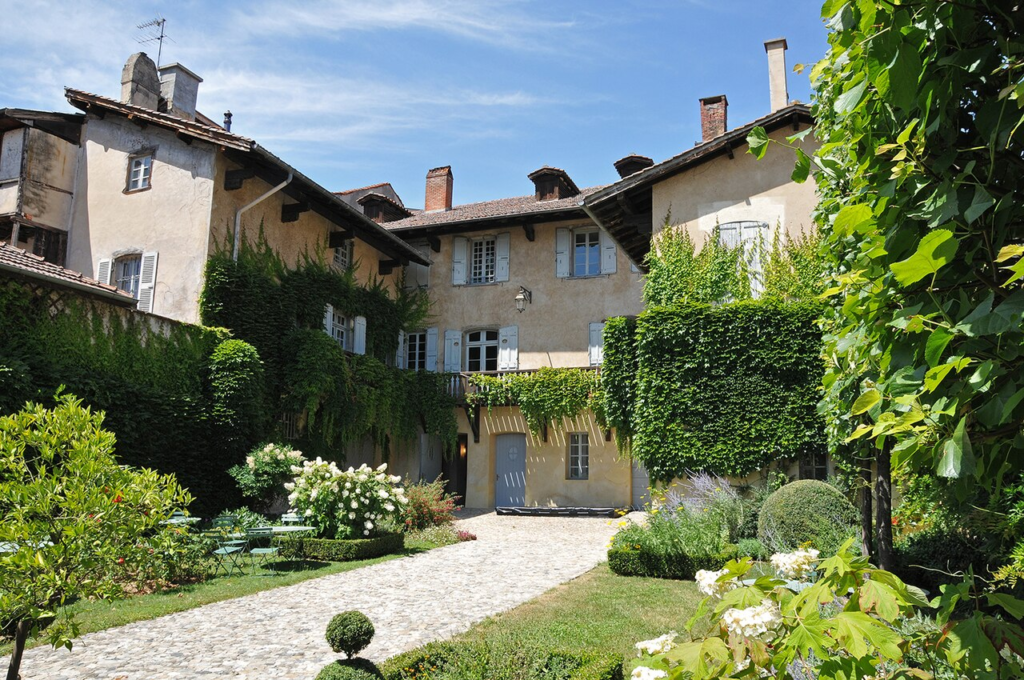
Above: Musée Hector Berlioz (birthplace), La Côte-Saint-André, Isère, France
At the age of 12, Berlioz fell in love for the first time.
The object of his affections was an 18-year-old neighbour, Estelle Dubœuf.
He was teased for what was seen as a boyish infatuation, but something of his early passion for Estelle endured all his life.
He poured some of his unrequited feelings into his early attempts at composition.

Trying to master harmony, he read Rameau’s Traité de l’harmonie, which proved incomprehensible to a novice, but Charles-Simon Catel’s simpler treatise on the subject made it clearer to him.

Above: French composer Jean-Philippe Rameau (1683 – 1764)

Above: French composer Charles-Simon Catel (1773 – 1830)
Berlioz wrote several chamber works as a youth, subsequently destroying the manuscripts, but one theme that remained in his mind reappeared later as the A-flat second subject of the overture to Les Francs-juges (The free judges or The judges of the secret court)

Above: Hector Berlioz
In March 1821, Berlioz passed the baccalauréat examination at the University of Grenoble – it is not certain whether at the first or second attempt.

In late September, aged 17, he moved to Paris.
At his father’s insistence he enrolled at the School of Medicine of the University of Paris.
He had to fight hard to overcome his revulsion at dissecting bodies, but in deference to his father’s wishes, he forced himself to continue his medical studies.
The horrors of the medical college were mitigated thanks to an ample allowance from his father, which enabled him to take full advantage of the cultural, and particularly musical, life of Paris.

Above: Coat of arms of the University of Paris
Music did not at that time enjoy the prestige of literature in French culture, but Paris nonetheless possessed two major opera houses and the country’s most important music library.
Berlioz took advantage of them all.
Within days of arriving in Paris, he went to the Opéra, and although the piece on offer was by a minor composer, the staging and the magnificent orchestral playing enchanted him.
He went to other works at the Opéra and the Opéra-Comique.
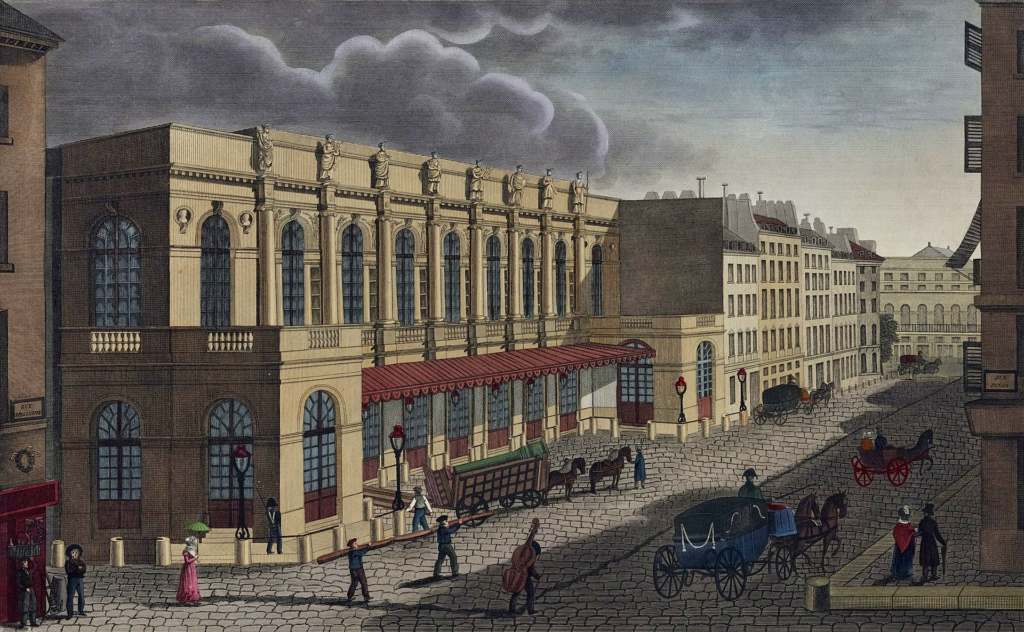
Above: The Opéra, in the Rue le Peletier, Paris, France, 1821
At the former, three weeks after his arrival, he saw Gluck’s Iphigénie en Tauride, which thrilled him.
He was particularly inspired by Gluck’s use of the orchestra to carry the drama along.
A later performance of the same work at the Opéra convinced him that his vocation was to be a composer.

Above: German composer Christoph Willibald Gluck (1714 – 1787)
The dominance of Italian opera in Paris, against which Berlioz later campaigned, was still in the future.
At the opera houses, he heard and absorbed the works of Étienne Méhul and François-Adrien Boieldieu, other operas written in the French style by foreign composers, particularly Gaspare Spontini, and above all five operas by Gluck.

Above: French composer Étienne-Henri Méhul (1763 – 1817)

Above: French composer François-Adrien Boieldieu (1775 – 1834)
Berlioz began to visit the Paris Conservatoire library, in between his medical studies, seeking out scores of Gluck’s operas and making copies of parts of them.

By the end of 1822, he felt that his attempts to learn composition needed to be augmented with formal tuition.
He approached Jean-François Le Sueur, director of the Royal Chapel and professor at the Conservatoire, who accepted him as a private pupil.

Above: French composer Jean-Francois Lesueur (1760 – 1837)
In August 1823, Berlioz made the first of many contributions to the musical press:
A letter to the journal Le Corsaire defending French opera against the incursions of its Italian rival.
He contended that all Rossini’s operas put together could not stand comparison with even a few bars of those of Gluck, Spontini or Le Sueur.

Above: Italian composer Gioachino Antonio Rossini (1792 – 1868)
By now, he had composed several works including Estelle et Némorin and Le Passage de la mer Rouge (The Crossing of the Red Sea) – both since lost.

In 1824, Berlioz graduated from medical school, after which he abandoned medicine, to the strong disapproval of his parents.
His father suggested law as an alternative profession and refused to countenance music as a career.
He reduced and sometimes withheld his son’s allowance.
Berlioz went through some years of financial hardship.

His independence of mind and refusal to follow traditional rules and formulas put him at odds with the conservative musical establishment of Paris.
In August 1826, Berlioz was admitted as a student to the Conservatoire, studying composition under Le Sueur and counterpoint and fugue with Anton Reicha.

Above: Czech-born French composer Anton Reicha (1770 – 1836)
In the same year, Berlioz made the first of four attempts to win France’s premier music prize, the Prix de Rome, and was eliminated in the first round.

Above: The Palazzo Mancini, the seat of the French Academy, who awarded the Prix de Rome
The following year, to earn some money, Berlioz joined the chorus at the Théâtre des Nouveautés.
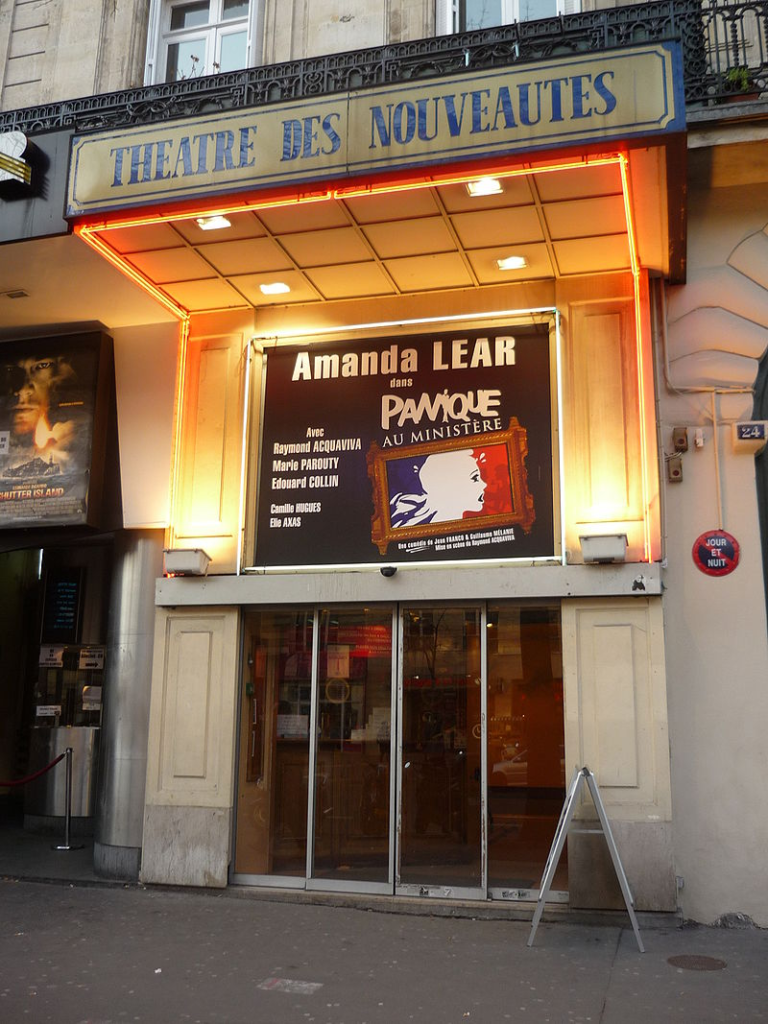
Above: Théâtre des Nouveautés, Paris, France
Berlioz competed again for the Prix de Rome, submitting the first of his Prix cantatas, La Mort d’Orphée, in July.

Above: Orpheus surrounded by animals. Ancient Roman floor mosaic, from Palermo, now in the Museo archeologico regionale di Palermo, Italia
Later that year, Berlioz attended productions of Shakespeare’s Hamlet and Romeo and Juliet at the Théâtre de l’Odéon given by Charles Kemble’s touring company.

Above: Théâtre de l’Odéon, Paris, France

Above: Welsh actor Charles Kemble (1775 – 1854)
Although at the time Berlioz spoke hardly any English, he was overwhelmed by the plays – the start of a lifelong passion for Shakespeare.

Above: English writer William Shakespeare (1564 – 1616)
At the age of 24, he also conceived a passion for Kemble’s leading lady, the Irish Shakespearean actress Harriet Smithson – his biographer Hugh Macdonald calls it “emotional derangement” – and obsessively pursued her, without success, for several years.
She refused even to meet him.
He pursued her obsessively until she finally accepted him seven years later.
Their marriage was happy at first, but eventually foundered.

Above: Irish-born English actress Harriet Smithson (1800 – 1854)
Berlioz’s fascination with Shakespeare’s plays prompted him to start learning English during 1828, so that he could read them in the original.
At around the same time he encountered two further creative inspirations:
Beethoven and Goethe.
He heard Beethoven’s 3rd, 5th and 7th Symphonies performed at the Conservatoire.
He read Goethe’s Faust in Gérard de Nerval’s translation.
Beethoven became both an ideal and an obstacle for Berlioz – an inspiring predecessor but a daunting one.
Goethe’s work was the basis of Huit scènes de Faust (Berlioz’s Opus 1), which premiered the following year and was reworked and expanded much later as La Damnation de Faust.

Above: Beethoven (1803)

Above: German polymath Johann Wolfgang von Goethe (1749 – 1832)
Berlioz was largely apolitical, and neither supported nor opposed the July Revolution of 1830, but when it broke out he found himself in the middle of it.
He recorded events in his Mémoires:
I was finishing my cantata when the revolution broke out.
I dashed off the final pages of my orchestral score to the sound of stray bullets coming over the roofs and pattering on the wall outside my window.
On the 29th, I had finished.
I was free to go out and roam about Paris till morning, pistol in hand.“

Above: Liberty leading the people, Eugene Delacroix (1830) – an allegorical painting of the July Revolution
The cantata was La Mort de Sardanapale, with which he won the Prix de Rome.

Above: Death of Sardanapalus, Eugene Delacroix (1827)
His entry the previous year, Cléopâtre, had attracted disapproval from the judges because to highly conservative musicians it “betrayed dangerous tendencies“, and for his 1830 offering he carefully modified his natural style to meet official approval.
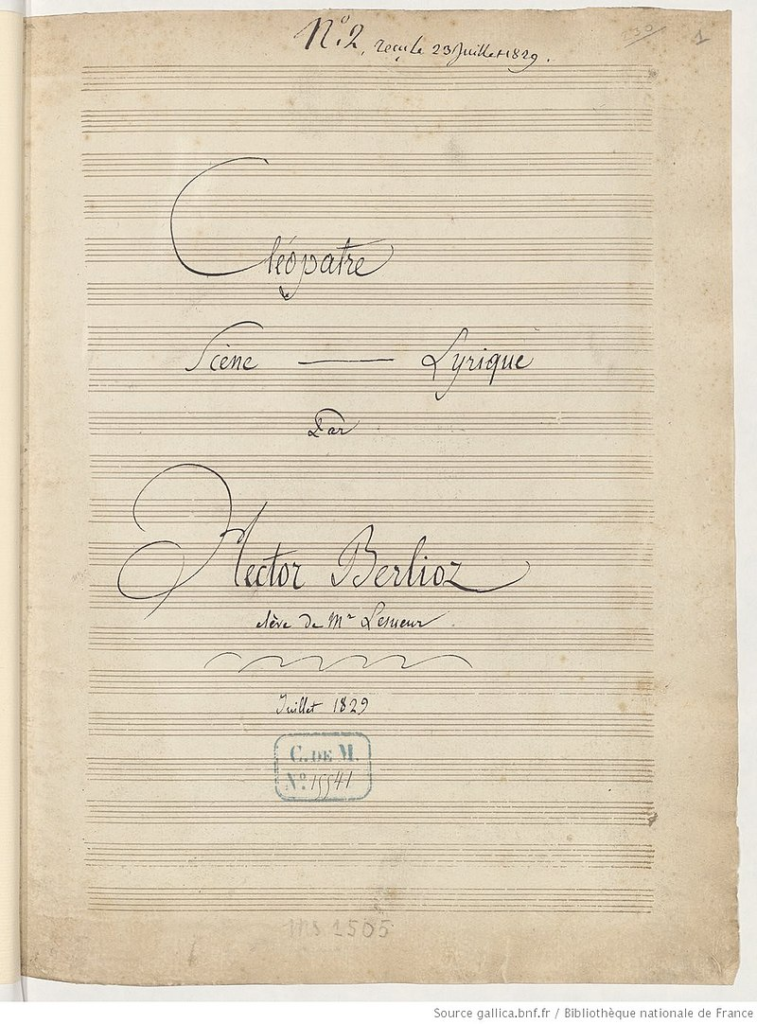
During the same year he wrote the Symphonie fantastique and became engaged to be married.
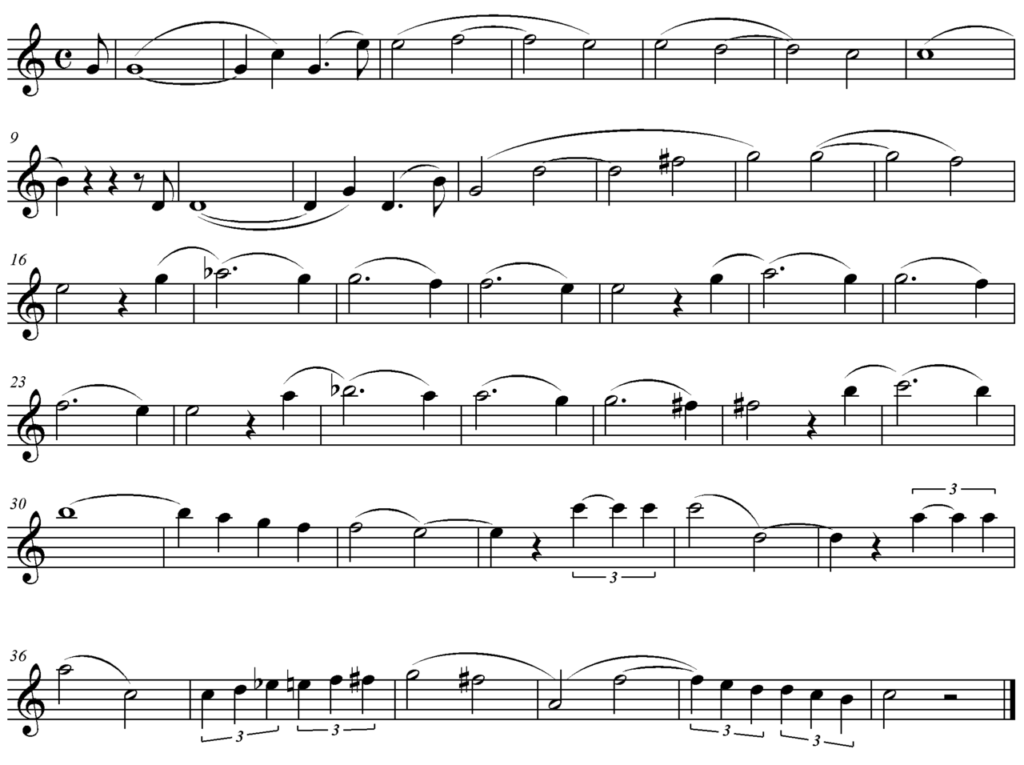
Berlioz briefly moderated his style sufficiently to win France’s premier music prize – the Prix de Rome – in 1830, but he learned little from the academics of the Paris Conservatoire.
Opinion was divided for many years between those who thought him an original genius and those who viewed his music as lacking in form and coherence.

Above: Caricature of Berlioz
By now recoiling from his obsession with Smithson, Berlioz fell in love with a 19-year-old pianist, Marie (“Camille“) Moke.
His feelings were reciprocated.
The couple planned to be married.

Above: Belgian concert pianist Marie Moke Pleyel (1811 – 1875)
In December, Berlioz organized a concert at which the Symphonie fantastique was premiered.
Protracted applause followed the performance.
The press reviews expressed both the shock and the pleasure the work had given.
Berlioz’s biographer David Cairns calls the concert a landmark not only in the composer’s career, but in the evolution of the modern orchestra.
Franz Liszt was among those attending the concert.
This was the beginning of a long friendship.
Liszt later transcribed the entire Symphonie fantastique for piano to enable more people to hear it.
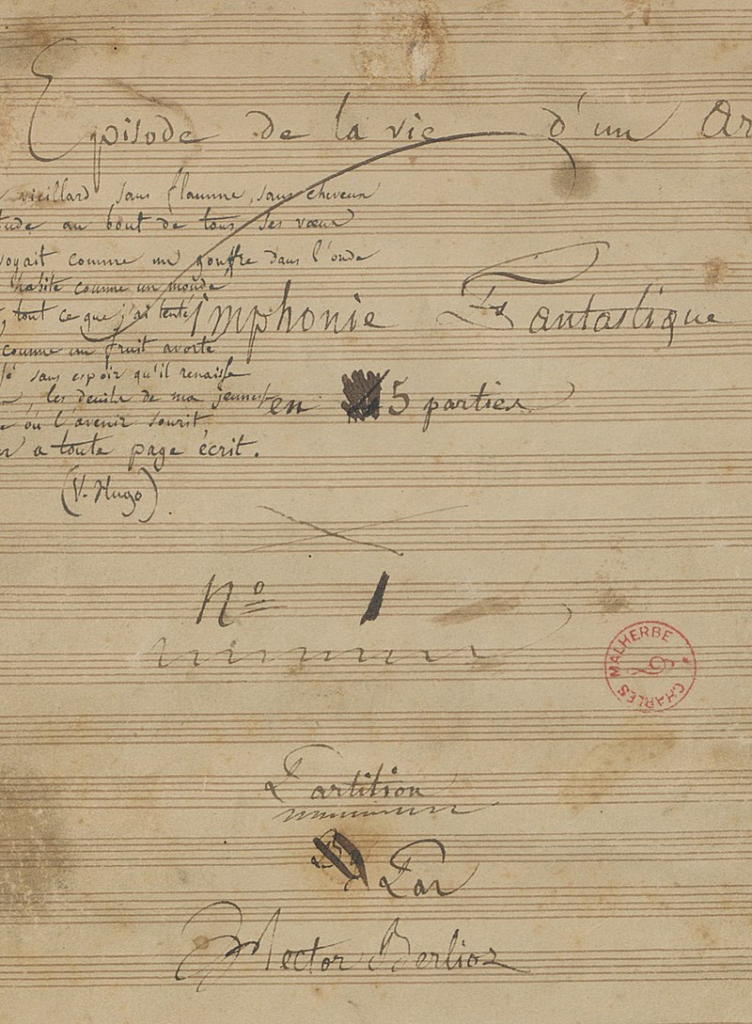
Shortly after the concert, Berlioz set off for Italy:
Under the terms of the Prix de Rome, winners studied for two years at the Villa Medici, the French Academy in Rome.

Above: Villa Medici, Roma, Italia
Within three weeks of his arrival, he went absent without leave:
He had learnt that Marie had broken off their engagement and was to marry an older and richer suitor, Camille Pleyel, the heir to the Pleyel piano manufacturing company.
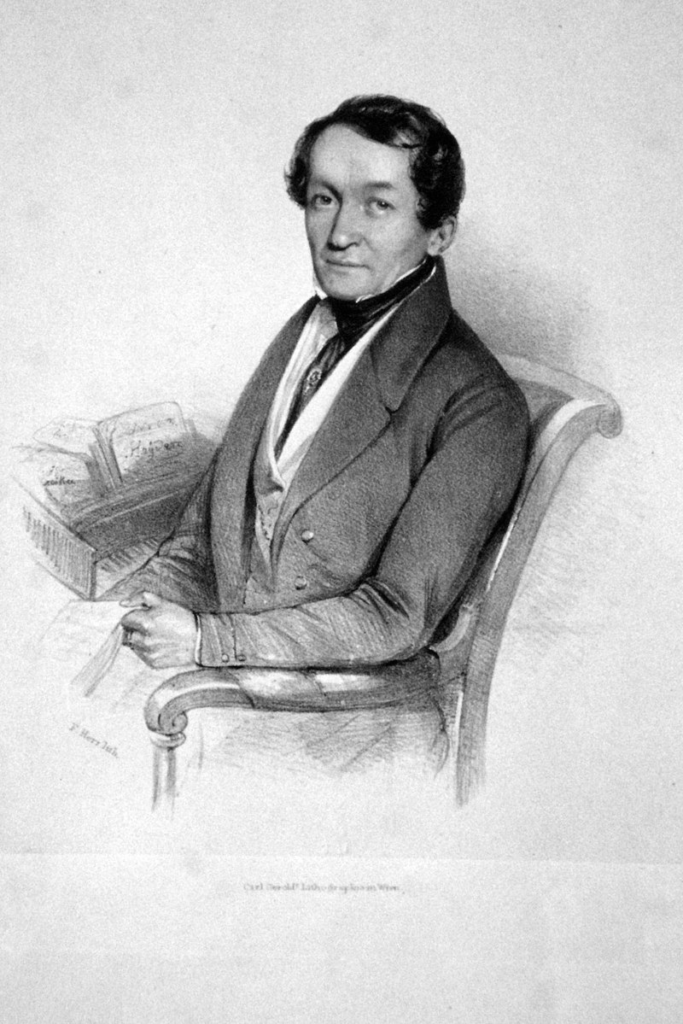
Above: French composer Camille Pleyel (1788 – 1855)
Berlioz made an elaborate plan to kill them both (and her mother, known to him as “l’hippopotame“).

He acquired poisons, pistols and a disguise for the purpose.
By the time he reached Nice on his journey to Paris, he thought better of the scheme and abandoned the idea of revenge.
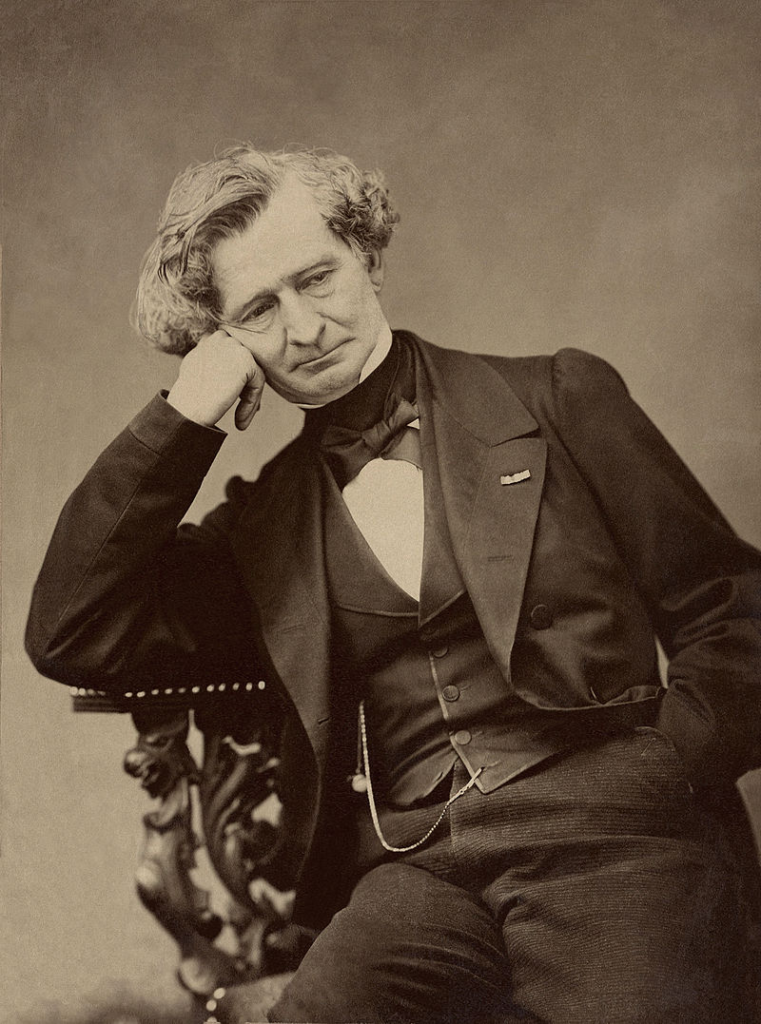
Above: Hector Berlioz
Berlioz successfully sought permission to return to the Villa Medici.
He stayed for a few weeks in Nice and wrote his King Lear overture.
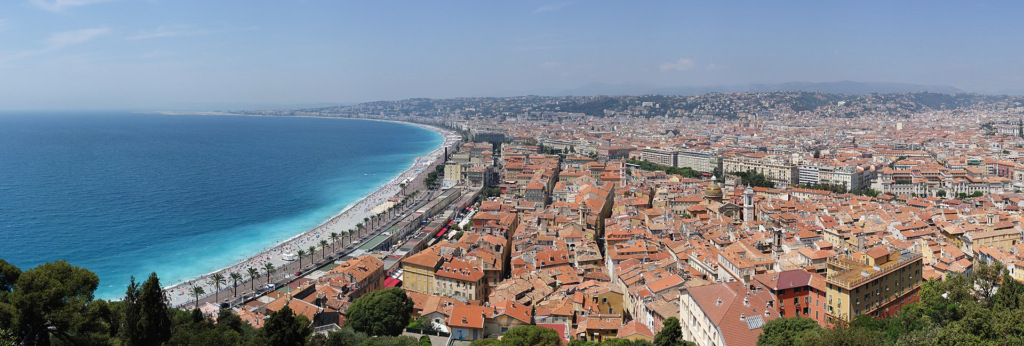
Above: Nice, France
On the way back to Rome, Berlioz began work on a piece for narrator, solo voices, chorus and orchestra, Le Retour à la vie (The Return to Life, later renamed Lélio), a sequel to the Symphonie fantastique.
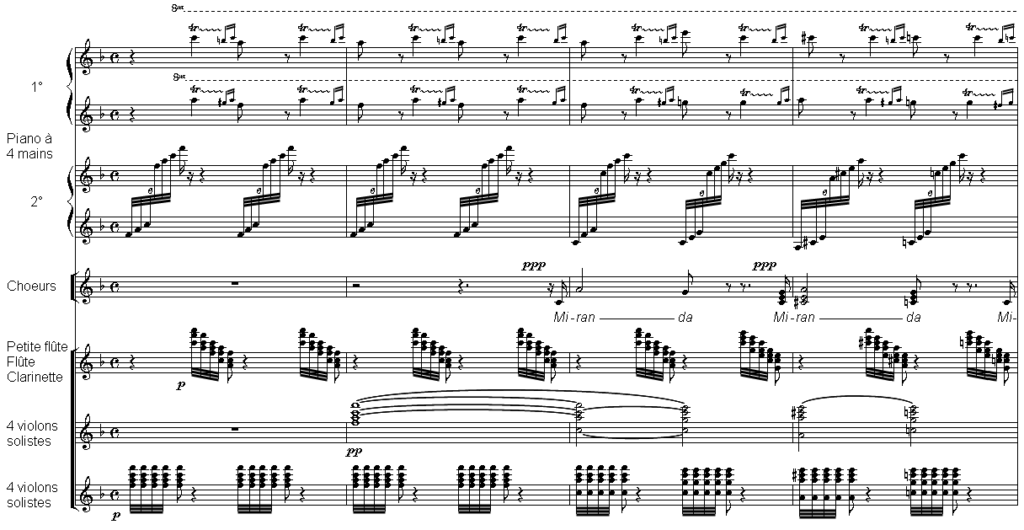
Berlioz took little pleasure in his time in Rome.
His colleagues at the Villa Medici, under their benevolent principal Horace Vernet, made him welcome.

Above: French painter Émile Jean Horace Vernet (1789 – 1863)
Berlioz enjoyed his meetings with Felix Mendelssohn, who was visiting the city, but he found Rome distasteful: “the most stupid and prosaic city I know.
It is no place for anyone with head or heart.”

Above: Skyline of Roma, Italia
Nonetheless, Italy had an important influence on his development.
He visited many parts of it during his residency in Rome.
Macdonald comments that after his time there, Berlioz had “a new colour and glow in his music … sensuous and vivacious” – derived not from Italian painting, in which he was uninterested, or Italian music, which he despised, but from “the scenery and the sun, and from his acute sense of locale“.
Macdonald identifies Harold in Italy, Benvenuto Cellini and Roméo et Juliette as the most obvious expressions of his response to Italy, and adds that Les Troyens and Béatrice et Bénédict “reflect the warmth and stillness of the Mediterranean, as well as its vivacity and force“.
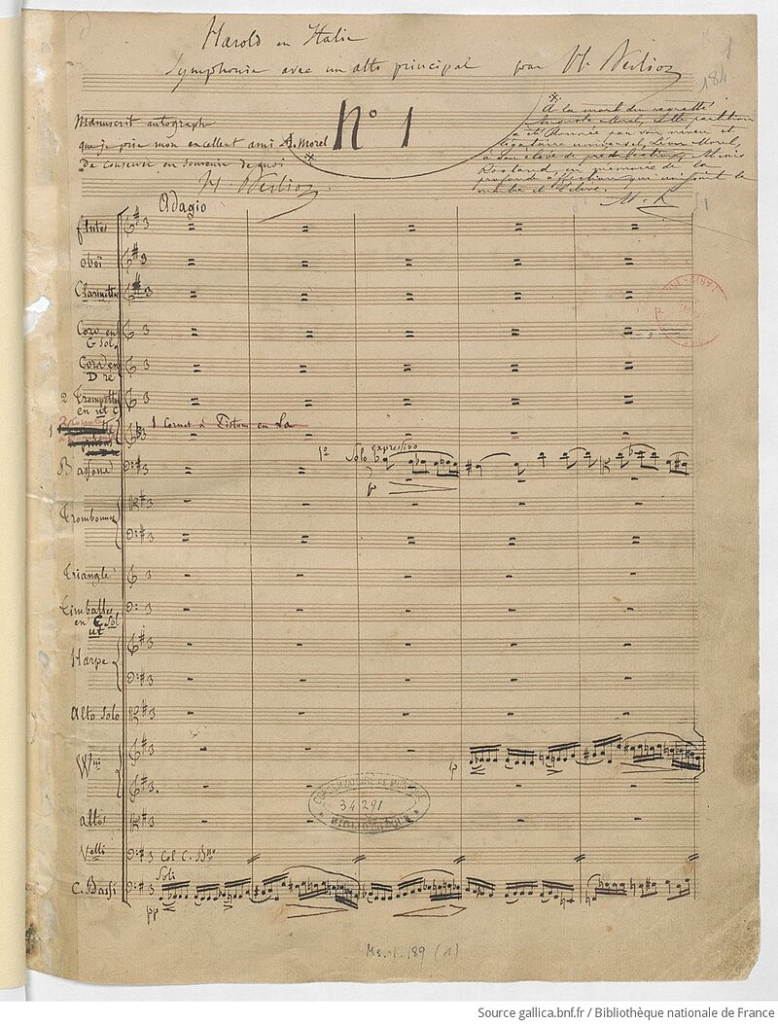
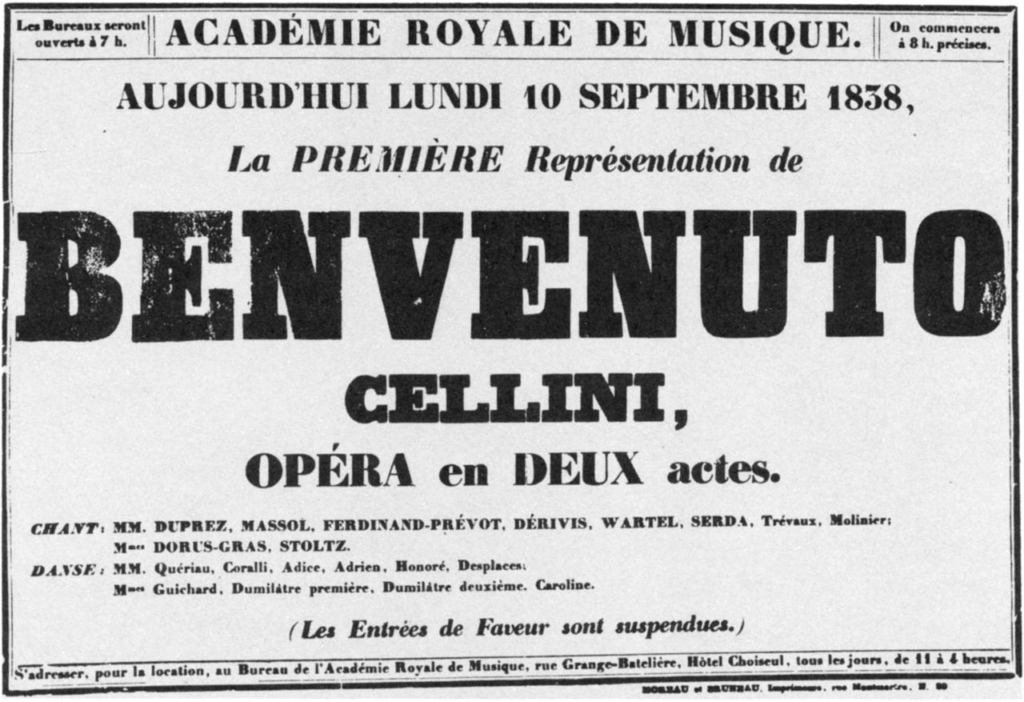
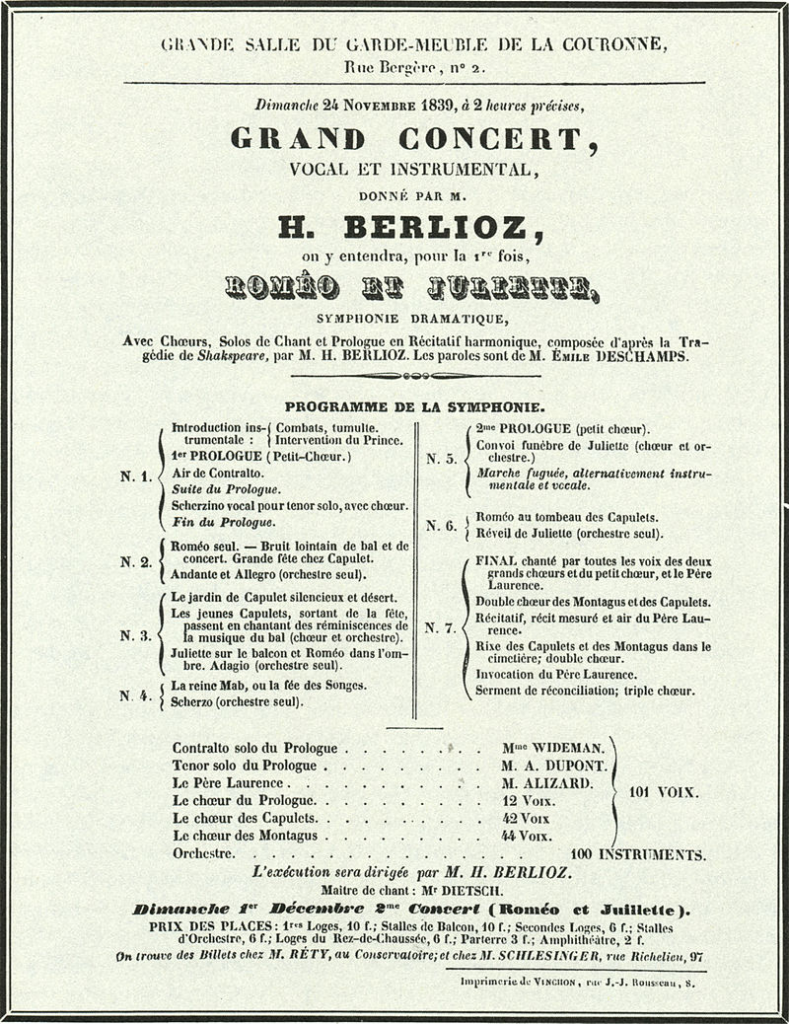
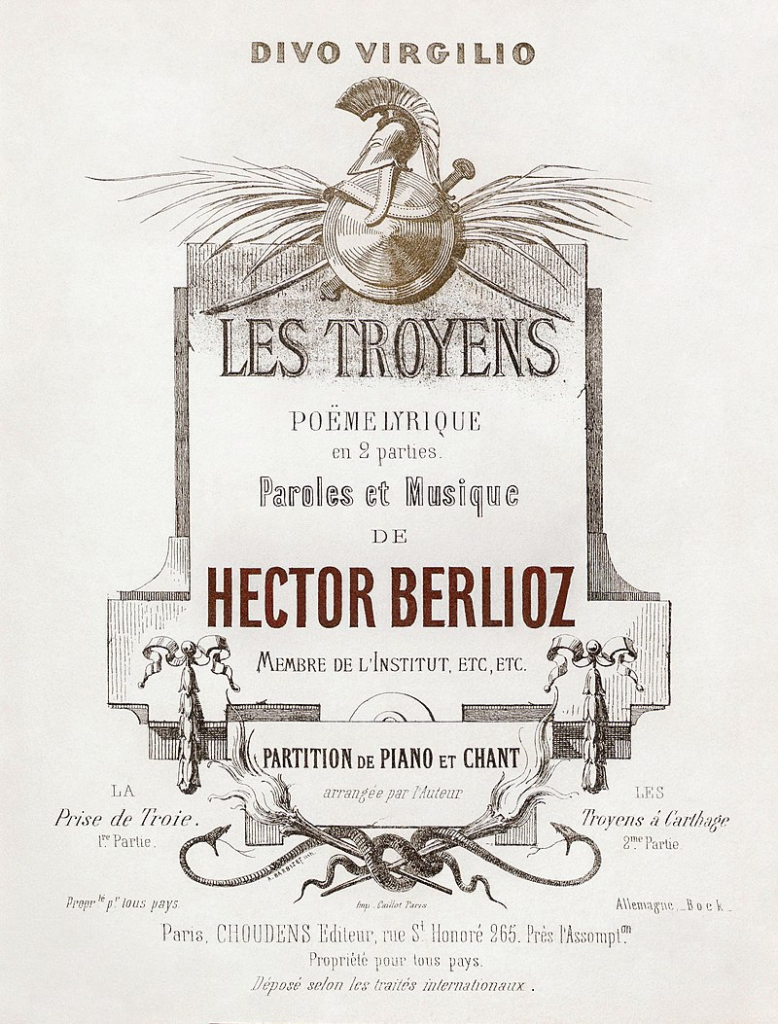
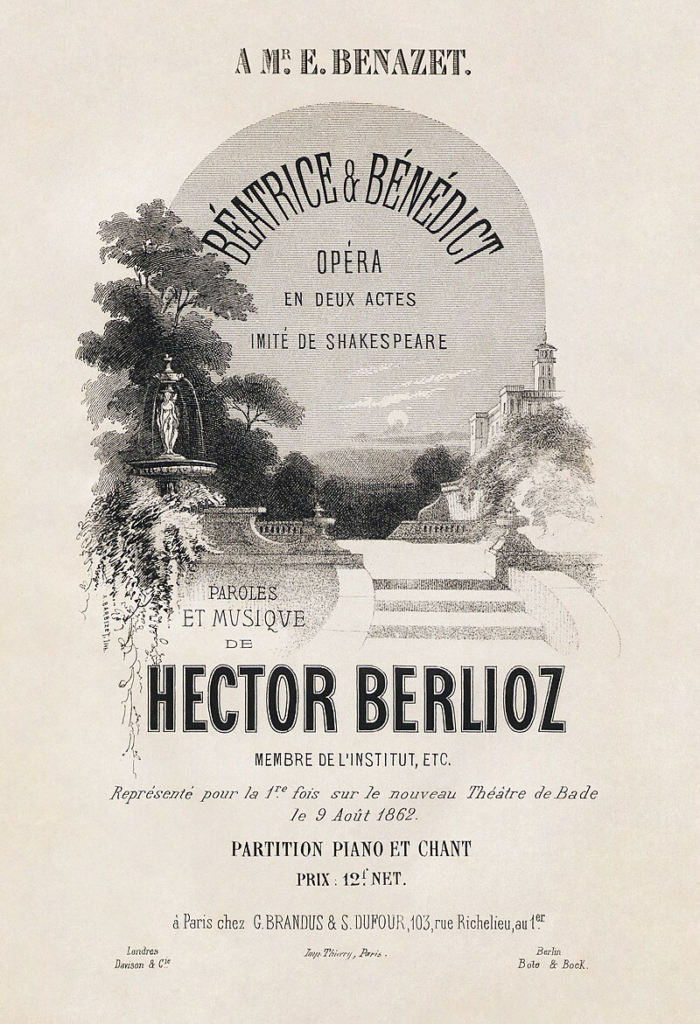
Berlioz himself wrote that Harold in Italy drew on “the poetic memories formed from my wanderings in Abruzzi“.

Above: Flag of Abruzzı (Abruzzo), Italia
Vernet agreed to Berlioz’s request to be allowed to leave the Villa Medici before the end of his two-year term.
Heeding Vernet’s advice that it would be prudent to delay his return to Paris, where the Conservatoire authorities might be less indulgent about his premature ending of his studies, he made a leisurely journey back, detouring via La Côte-Saint-André to see his family.
He left Rome in May 1832 and arrived in Paris in November.
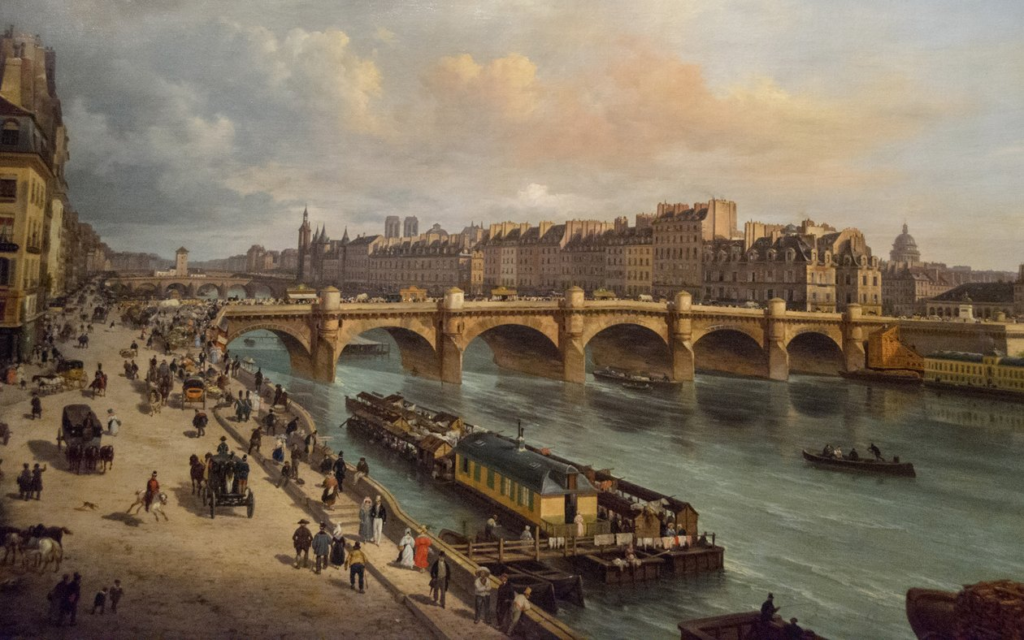
Above: Paris (1832)
On 9 December 1832, Berlioz presented a concert of his works at the Conservatoire.
The programme included the overture of Les Francs-juges, the Symphonie fantastique – extensively revised since its premiere – and Le Retour à la vie, in which Bocage, a popular actor, declaimed the monologues.
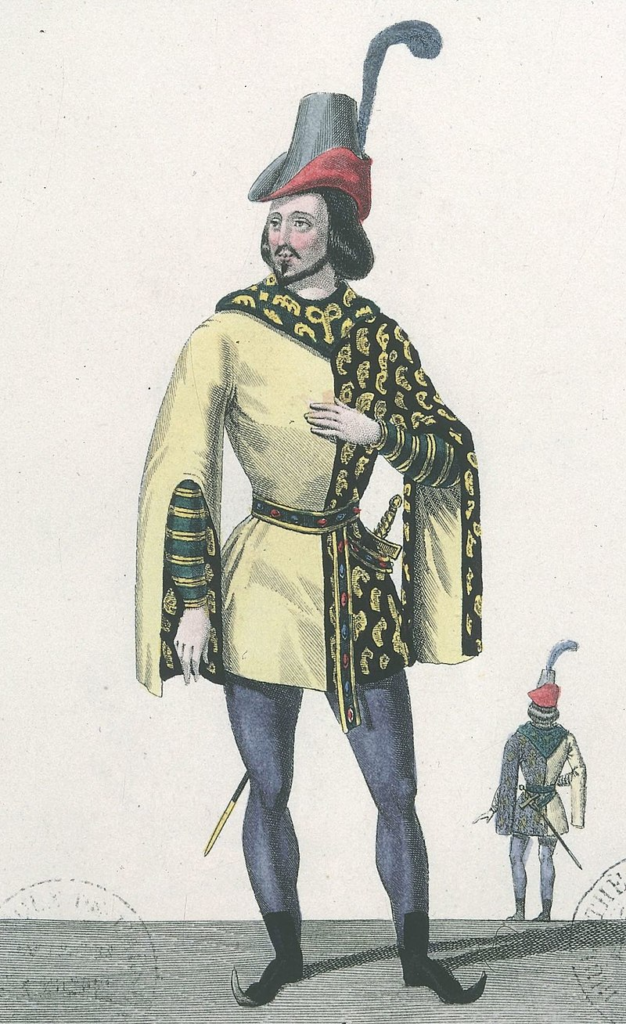
Above: French actor Pierre-Martinien Tousez, better known by his stage name Bocage, (1799 – 1862) in the role of Buridan in La Tour de Nesle by Alexandre Dumas (1832)
Through a third party, Berlioz had sent an invitation to Harriet Smithson, who accepted, and was dazzled by the celebrities in the audience.
Among the musicians present were Liszt, Frédéric Chopin and Niccolò Paganini.

Above: Italian composer Niccolò Paganini (1782 – 1840)
The writers included Alexandre Dumas, Théophile Gautier, Heinrich Heine, Victor Hugo and George Sand.
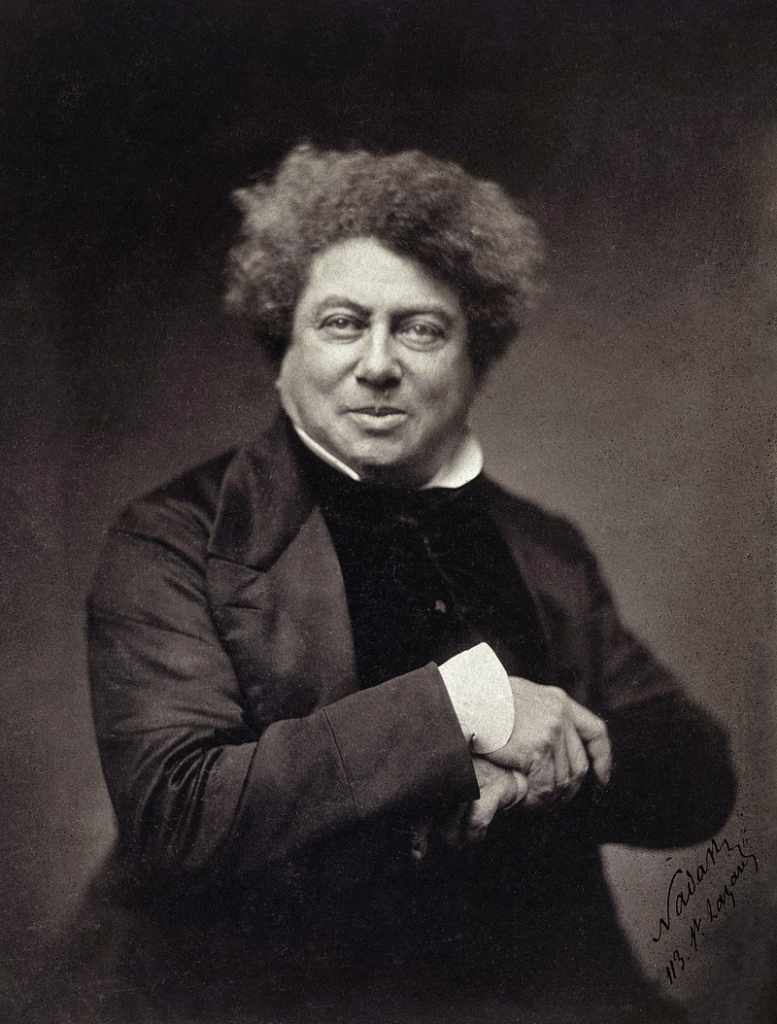
Above: French writer Alexandre Dumas (1802 – 1870)

Above: French poet Théophile Gautier (1811 – 1872)

Above: German writer Heinrich Heine (1797 – 1856)

Above: French writer Victor Hugo (1802 – 1885)

Above: French writer Amantine Lucile Aurore Dupin de Francueil (1804 – 1876), best known by her pen name George Sand
The concert was such a success that the programme was repeated within the month, but the more immediate consequence was that Berlioz and Smithson finally met.

Above: Harriet Smithson
By 1832, Smithson’s career was in decline.
She presented a ruinously unsuccessful season, first at the Théâtre-Italien and then at lesser venues.
By March 1833, she was deep in debt.
Biographers differ about whether and to what extent Smithson’s receptiveness to Berlioz’s wooing was motivated by financial considerations, but she accepted him.
In the face of strong opposition from both their families they were married at the British Embassy in Paris on 3 October 1833.
The couple lived first in Paris, and later in Montmartre (then still a village).
On 14 August 1834, their only child, Louis-Clément-Thomas, was born.
The first few years of the marriage were happy, although it eventually foundered.
Harriet continued to yearn for a career but, as her biographer Peter Raby comments, she never learned to speak French fluently, which seriously limited both her professional and her social life.
(In similar fashion, my inability to speak Turkish functionally seriously limits both my professional and social life.)
Harriet inspired his first major success, the Symphonie fantastique, in which an idealized depiction of her occurs throughout.

Above: Harriet Smithson Berlioz
Until the end of 1835, Berlioz had a modest stipend as a laureate of the Prix de Rome.
To supplement his earnings he wrote musical journalism throughout much of his career.
Some of it has been preserved in book form, including his Treatise on Instrumentation (1844), which was influential in the 19th and 20th centuries.
Macdonald comments that this was activity “at which he excelled but which he abhorred“.
He wrote for L’Europe littéraire (1833), Le Rénovateur (1833–1835), and from 1834 for the Gazette musicale and the Journal des débats.
He was the first, but not the last, prominent French composer to double as a reviewer.
Although he complained – both privately and sometimes in his articles – that his time would be better spent writing music than in writing music criticism, he was able to indulge himself in attacking his bêtes noires and extolling his enthusiasms.
The former included musical pedants, coloratura writing and singing, viola players who were merely incompetent violinists, inane libretti, and baroque counterpoint.

Berlioz extravagantly praised Beethoven’s symphonies, and Gluck’s and Weber’s operas, and scrupulously refrained from promoting his own compositions.
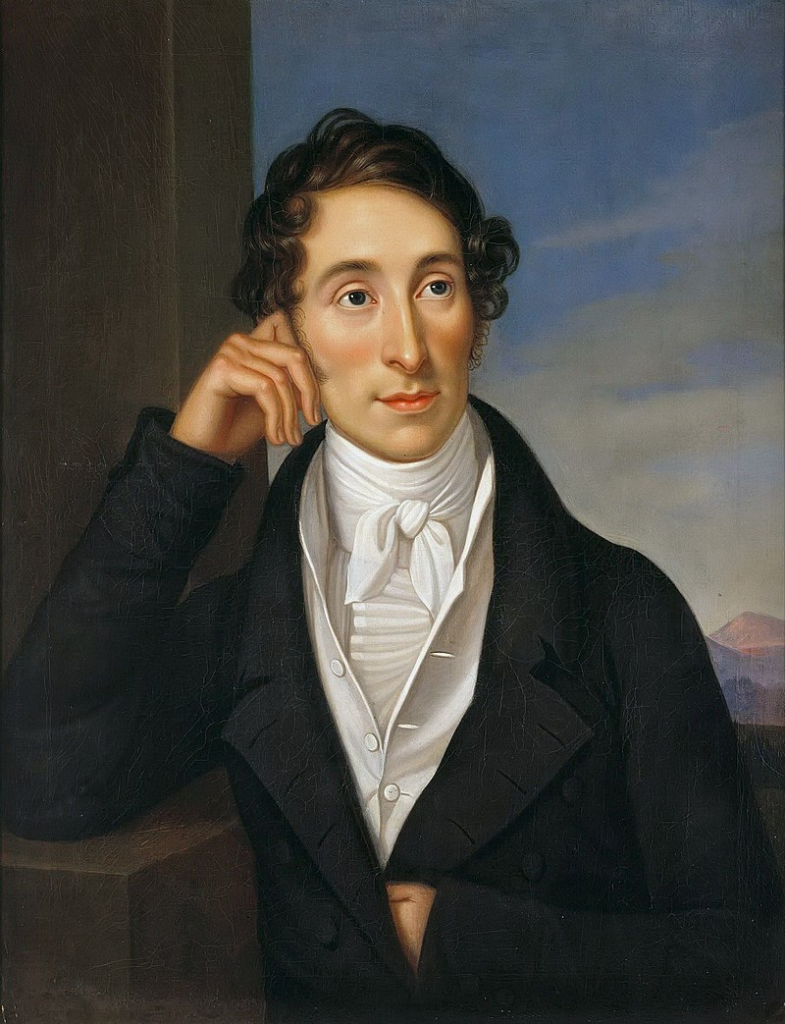
Above: German composer Carl Maria von Weber (1786 – 1826)
Berlioz’s journalism consisted mainly of music criticism, some of which he collected and published, such as Evenings in the Orchestra (1854), but also more technical articles, such as those that formed the basis of his Treatise on Instrumentation (1844).
Despite his complaints, Berlioz continued writing music criticism for most of his life, long after he had any financial need to do so.

Above: Hector Berlioz
Berlioz completed three operas, the first of which, Benvenuto Cellini, was an outright failure.
The second, the epic Les Troyens (The Trojans), was so large in scale that it was never staged in its entirety during his lifetime.
His last opera, Béatrice et Bénédict – based on Shakespeare’s comedy Much Ado About Nothing – was a success at its premiere but did not enter the regular operatic repertoire.
Meeting only occasional success in France as a composer, Berlioz increasingly turned to conducting, in which he gained an international reputation.
Shortly after the failure of the opera, Berlioz had a great success as composer-conductor of a concert at which Harold in Italy was given again.
This time Paganini was present in the audience.
He came on to the platform at the end and knelt in homage to Berlioz and kissed his hand.
A few days later Berlioz was astonished to receive a cheque from him for 20,000 francs.
Paganini’s gift enabled Berlioz to pay off Harriet’s and his own debts, give up music criticism for the time being, and concentrate on composition.
He wrote the “dramatic symphony” Roméo et Juliette for voices, chorus and orchestra.
It was premiered in November 1839 and was so well received that Berlioz and his huge instrumental and vocal forces gave two further performances in rapid succession.
Among the audiences was the young Wagner, who was overwhelmed by its revelation of the possibilities of musical poetry, and who later drew on it when composing Tristan und Isolde.
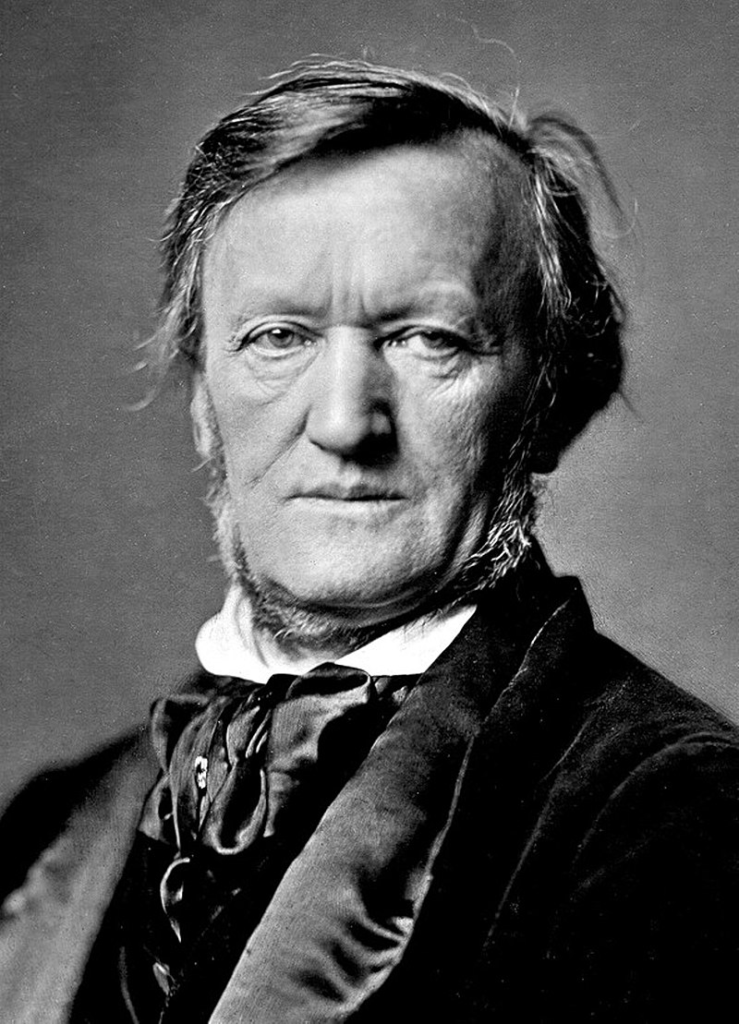
Above: German composer Richard Wagner (1813 – 1883)
During the 1840s Berlioz spent much of his time making music outside France.
He struggled to make money from his concerts in Paris, and learning of the large sums made by promoters from performances of his music in other countries, he resolved to try conducting abroad.
He began in Brussels, giving two concerts in September 1842.
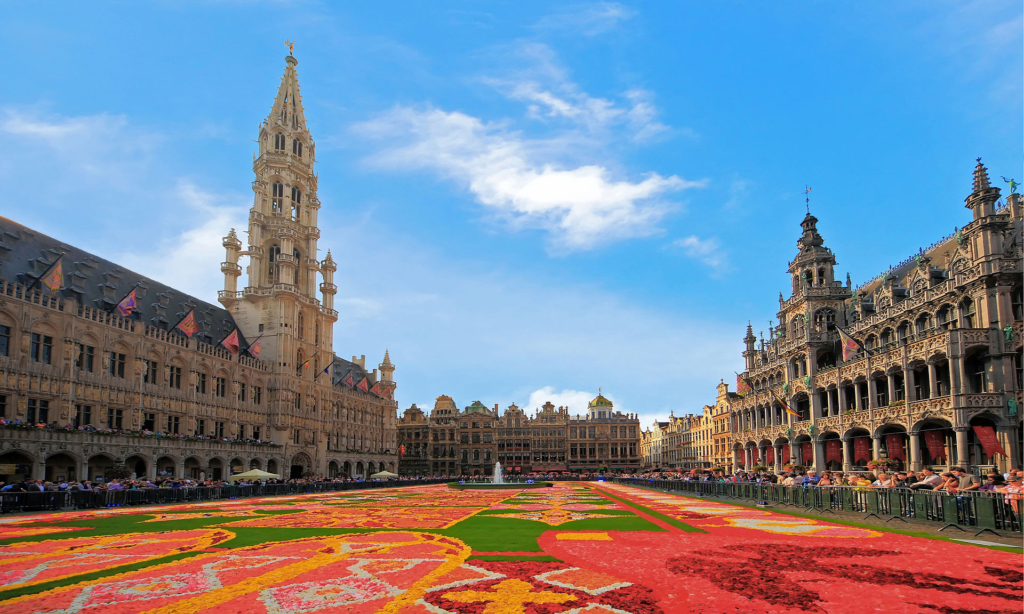
Above: Grand Place, Brussels, Belgium
An extensive German tour followed:
In 1842 and 1843, he gave concerts in 12 German cities.
His reception was enthusiastic.
The German public was better disposed than the French to his innovative compositions, and his conducting was seen as highly impressive.
During the tour he had enjoyable meetings with Mendelssohn and Schumann in Leipzig, Wagner in Dresden and Meyerbeer in Berlin.
He was highly regarded in Germany, Britain and Russia both as a composer and as a conductor.

Above: German composer Robert Schumann (1810 – 1856)
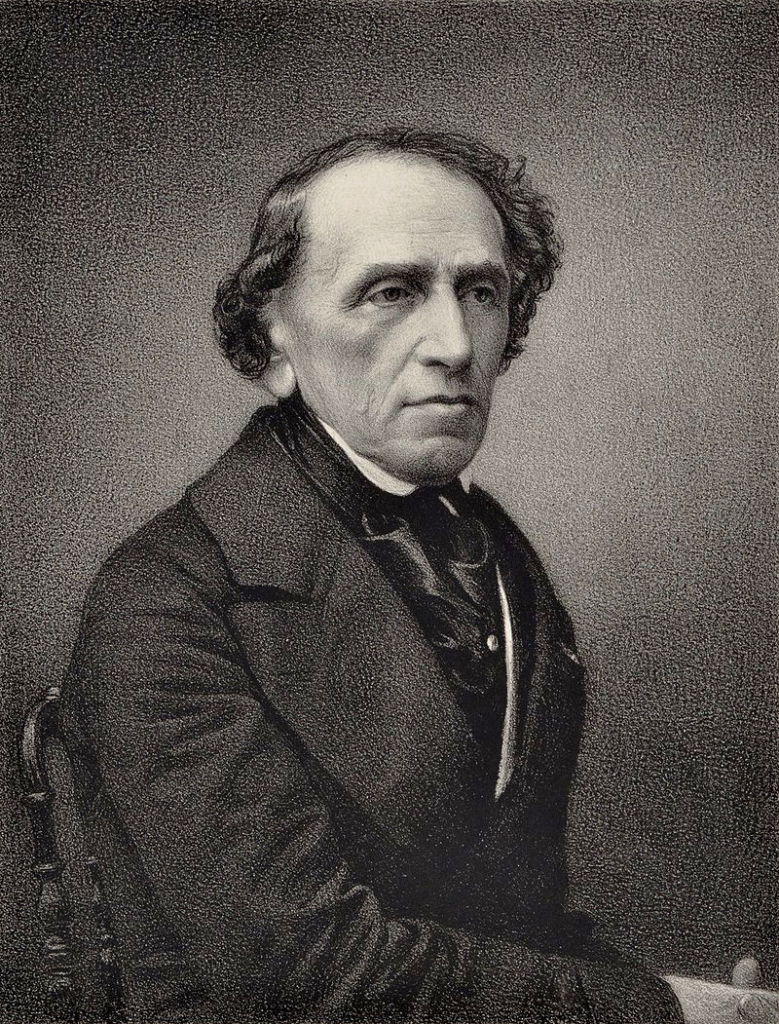
Above: German composer Giacomo Meyerbeer (1791 – 1864)
By this time Berlioz’s marriage was failing.
Harriet resented his celebrity and her own eclipse, and as Raby puts it, “possessiveness turned to suspicion and jealousy as Berlioz became involved with the singer Marie Recio“.
Harriet’s health deteriorated.
She took to drinking heavily.
Her suspicion about Recio was well founded:
The latter became Berlioz’s mistress in 1841 and accompanied him on his German tour.

Above: French opera singer Marie Recio (1814 – 1862)
Berlioz returned to Paris in mid-1843.
During the following year he wrote two of his most popular short works, the overtures Le carnaval romain (reusing music from Benvenuto Cellini) and Le corsaire (originally called La tour de Nice).
Towards the end of the year he and Harriet separated.
Berlioz maintained two households:
Harriet remained in Montmartre.
He moved in with Recio at her flat in central Paris.
His son Louis was sent to a boarding school in Rouen.

Above: Images of Rouen, France
Foreign tours featured prominently in Berlioz’s life during the 1840s and 1850s.
Not only were they highly rewarding both artistically and financially, but he did not have to grapple with the administrative problems of promoting concerts in Paris.
Macdonald comments:
The more he travelled the more bitter he became about conditions at home.
Yet though he contemplated settling abroad – in Dresden, for instance, and in London – he always went back to Paris.“
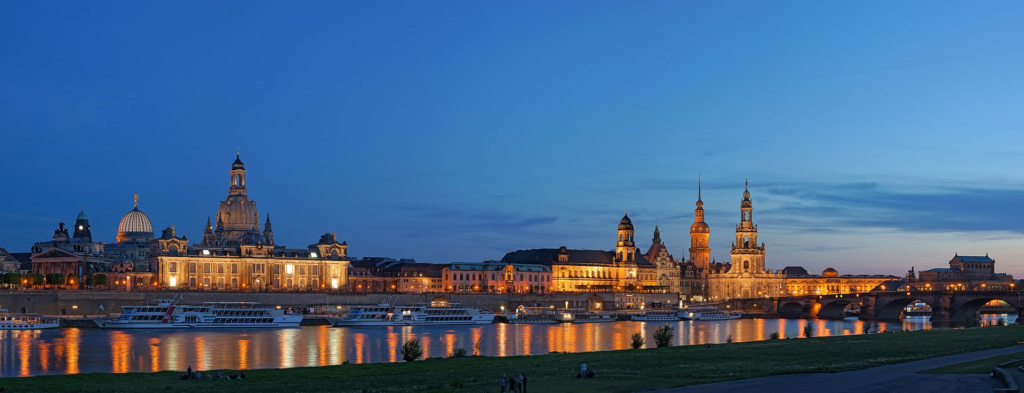
Above: Dresden, Germany (Deutschland)

Above: London, England
Berlioz’s major work from the decade was La Damnation de Faust.
He presented it in Paris in December 1846, but it played to half-empty houses, despite excellent reviews, some from critics not usually well disposed to his music.
The highly romantic subject was out of step with the times, and one sympathetic reviewer observed that there was an unbridgeable gap between the composer’s conception of art and that of the Paris public.
The failure of the piece left Berlioz heavily in debt.

Berlioz restored his finances the following year with the first of two highly remunerative trips to Russia.
His other foreign tours during the rest of the 1840s included Austria, Hungary, Bohemia and Germany.
After those came the first of his five visits to England.
It lasted for more than seven months (November 1847 to July 1848).
His reception in London was enthusiastic, but the visit was not a financial success, because of mismanagement by his impresario, the conductor Louis-Antoine Jullien.

Above: French composer Louis-Antoine Jullien (1812 – 1860)
Soon after Berlioz’s return to Paris in mid-September 1848, Harriet suffered a series of strokes, which left her almost paralyzed.
She needed constant nursing, which he paid for.
When in Paris, he visited her continually, sometimes twice a day.
In 1854, Harriet died.
Both Berlioz and their son Louis had been with her shortly before her death.

Above: Harriet Smithson
During the year, Berlioz completed the composition of L’Enfance du Christ, worked on his book of memoirs, and married Marie Recio, which, he explained to his son, he felt it his duty to do after living with her for so many years.
At the end of the year, the first performance of L’Enfance du Christ was warmly received, to his surprise.
He spent much of the next year in conducting and writing prose.

Above: Hector Berlioz
In June 1862, Berlioz’s wife died suddenly, aged 48.
She was survived by her mother, to whom Berlioz was devoted, and who looked after him for the rest of his life.

Above: Marie Reco
Berlioz’s last years were financially comfortable.
He was able to give up his work as a critic, but he lapsed into depression.
As well as losing both his wives, he had lost both his sisters.
He became morbidly aware of death as many of his friends and other contemporaries died.
He and his son had grown deeply attached to each other, but Louis was a captain in the merchant navy, and was more often than not away from home.
Berlioz’s physical health was not good.
He was often in pain from an intestinal complaint, possibly Crohn’s disease.
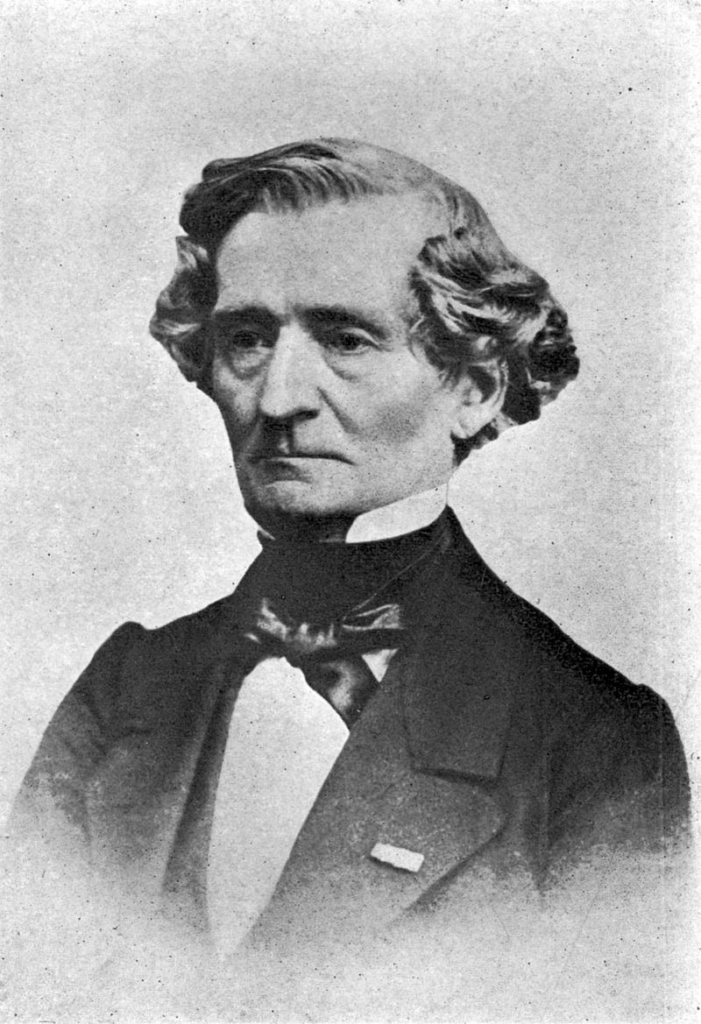
Above: Hector Berlioz
After the death of his second wife, Berlioz had two romantic interludes.
During 1862, he met – probably in the Montmartre Cemetery – a young woman less than half his age, whose first name was Amélie and whose second, possibly married, name is not recorded.
Almost nothing is known of their relationship, which lasted for less than a year.
After they ceased to meet, Amélie died, aged only 26.
Berlioz was unaware of it until he came across her grave six months later.

Above: Montmartre Cemetery, Paris
Cairns hypothesizes that the shock of her death prompted him to seek out his first love, Estelle, now a widow aged 67.
He called on her in September 1864.
She received him kindly.
He visited her in three successive summers.
He wrote to her nearly every month for the rest of his life.
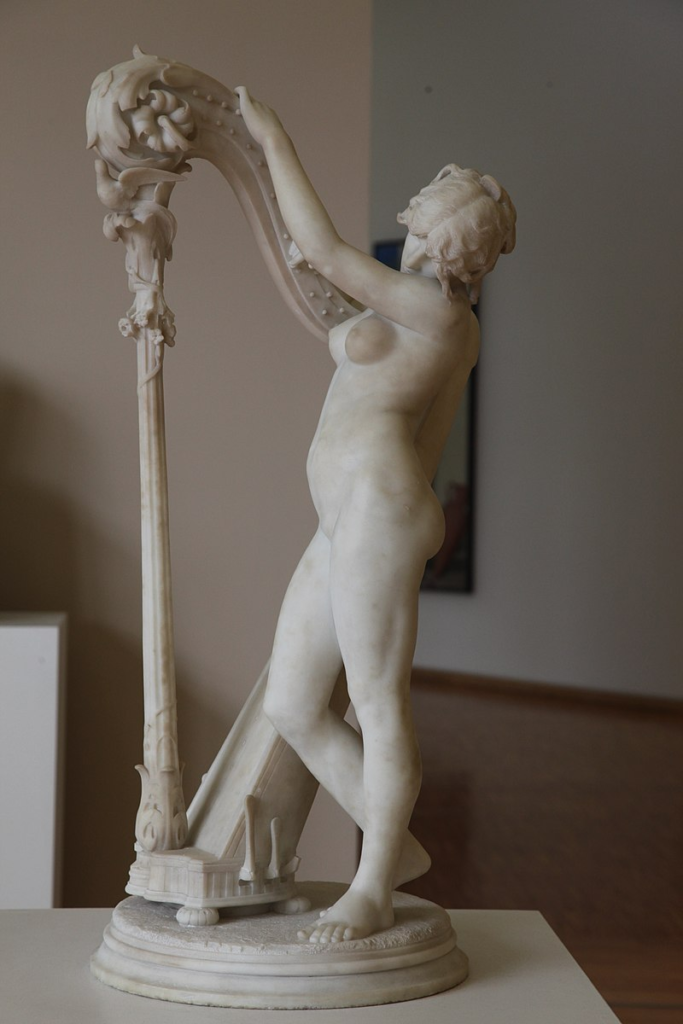
Above: Stella montis – muse of Berlioz by Henri Ding evoking the young Estelle, (Grenoble Museum).
In 1867, Berlioz received the news that his son had died in Havana of yellow fever.

Macdonald suggests that Berlioz may have sought distraction from his grief by going ahead with a planned series of concerts in St Petersburg and Moscow, but far from rejuvenating him, the trip sapped his remaining strength.
The concerts were successful.
Berlioz received a warm response from the new generation of Russian composers and the general public, but he returned to Paris visibly unwell.

Above: Hector Berlioz
Berlioz went to Nice to recuperate in the Mediterranean climate, but fell on rocks by the shore, possibly because of a stroke.
He had to return to Paris, where he convalesced for several months.
In August 1868, he felt able to travel briefly to Grenoble to judge a choral festival.
After arriving back in Paris he gradually grew weaker and died at his house in the Rue de Calais on 8 March 1869, at the age of 65.
He was buried in Montmartre Cemetery with his two wives, who were exhumed and re-buried next to him.
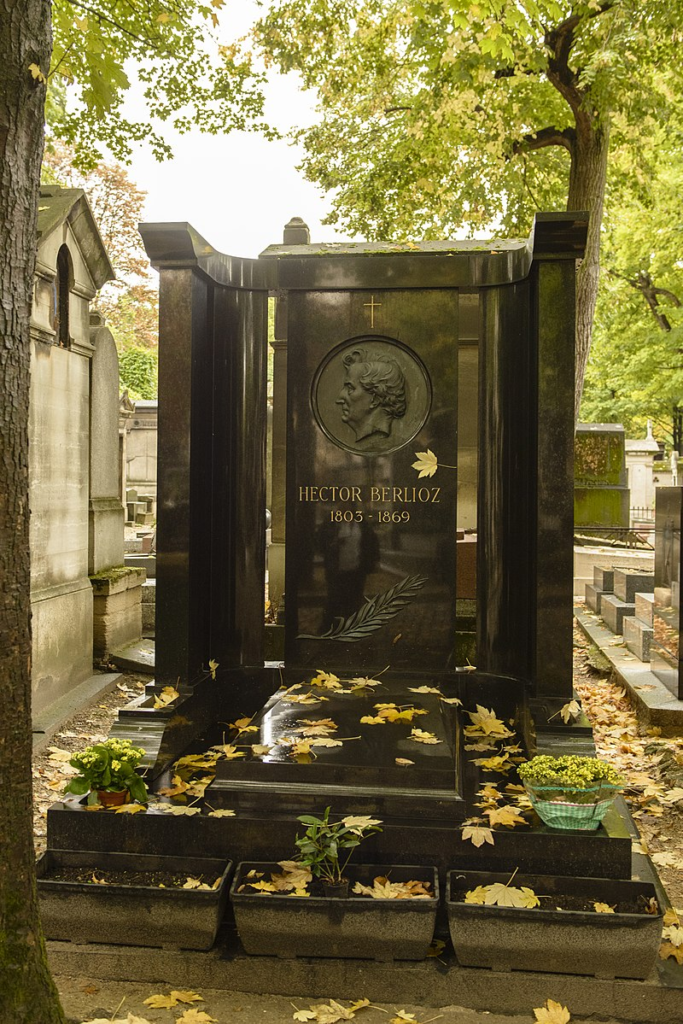
In his 1983 book The Musical Language of Berlioz, Julian Rushton asks “where Berlioz comes in the history of musical forms and what is his progeny“.
Rushton’s answers to these questions are “nowhere” and “none“.
He cites well-known studies of musical history in which Berlioz is mentioned only in passing or not at all, and suggests that this is partly because Berlioz had no models among his predecessors and was a model to none of his successors.
“In his works, as in his life, Berlioz was a lone wolf.”
It is common ground for critics and defenders that his approach to harmony and musical structure conforms to no established rules.
His detractors ascribe this to ignorance, and his proponents to independent-minded adventurousness.
His approach to rhythm caused perplexity to conservatively-inclined contemporaries.

Macdonald writes that Berlioz was a natural melodist, but that his rhythmic sense led him away from regular phrase lengths.
He “spoke naturally in a kind of flexible musical prose, with surprise and contour important elements“.
Berlioz’s approach to harmony and counterpoint was idiosyncratic, and has provoked adverse criticism.

Pierre Boulez commented:
“There are awkward harmonies in Berlioz that make one scream“.
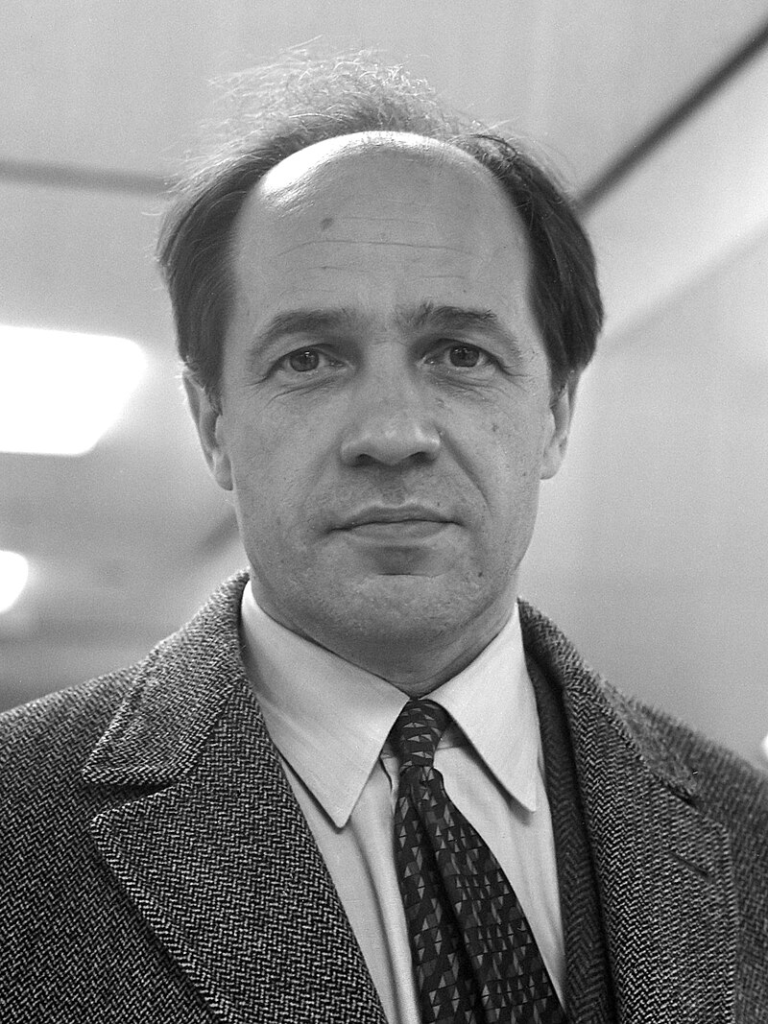
Above: French composer Pierre Boulez (1925 – 2016)
In Rushton’s analysis, most of Berlioz’s melodies have “clear tonal and harmonic implications” but the composer sometimes chose not to harmonize accordingly.
Rushton observes that Berlioz’s preference for irregular rhythm subverts conventional harmony:
“Classic and romantic melody usually implies harmonic motion of some consistency and smoothness.
Berlioz’s aspiration to musical prose tends to resist such consistency.“

Even among those unsympathetic to his music, few deny that Berlioz was a master of orchestration.
Richard Strauss wrote that Berlioz invented the modern orchestra.

Above: German composer Richard Strauss (1864 – 1949)
Debussy called him “a monster … not a musician at all.
He creates the illusion of music by means borrowed from literature and painting.”
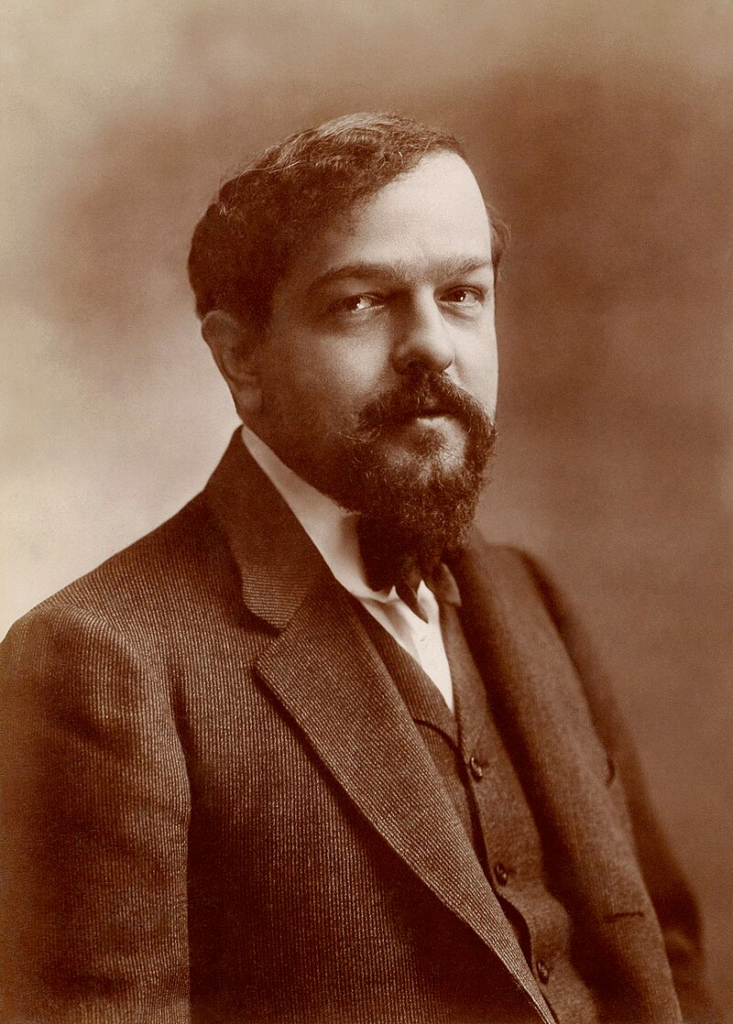
Above: French composer Claude Debussy (1862 – 1918)
By the 1960s, Berlioz seemed a quaint survival from a vanished age.
By 1963, Cairns, viewing Berlioz’s greatness as firmly established, felt able to advise anyone writing on the subject:
“Do not keep harping on the ‘strangeness’ of Berlioz’s music.
You will no longer carry the reader with you.
And do not use phrases like ‘genius without talent’, ‘a certain strain of amateurishness’, ‘curiously uneven’:
They have had their day.“
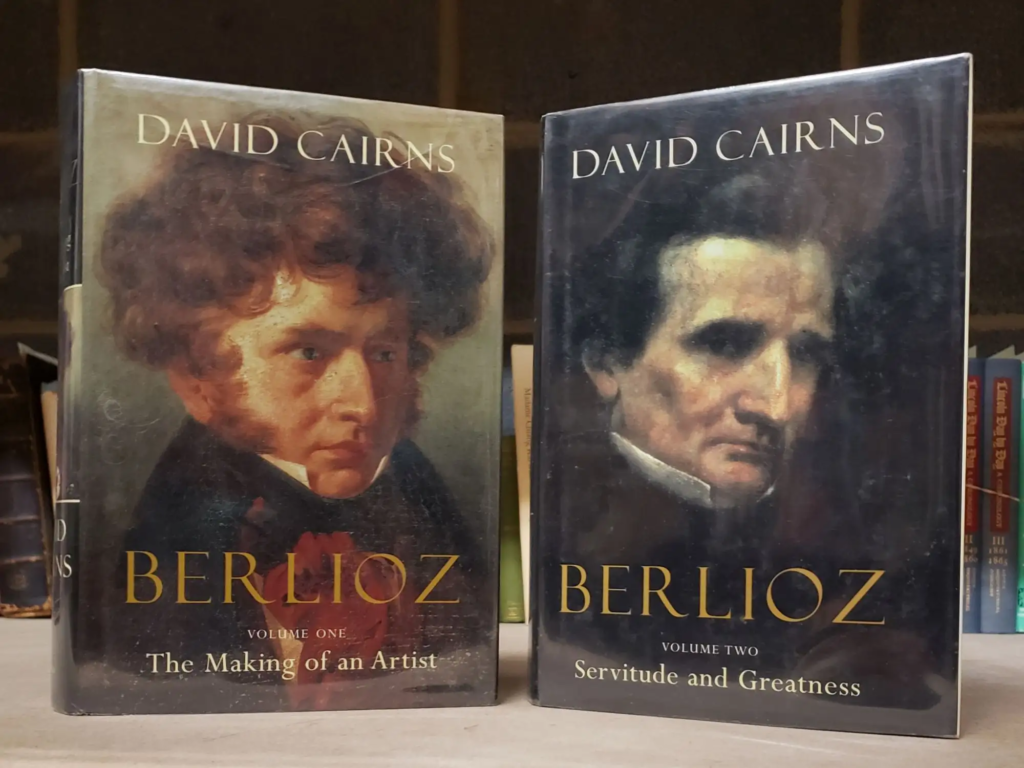
One important reason for the steep rise in Berlioz’s reputation and popularity is the introduction of the LP record after the Second World War.

In 1950, Barzun made the point that, although Berlioz was praised by his artistic peers, the public had heard little of his music until recordings became widely available.
Barzun maintained that many myths had grown up about the supposed quirkiness or ineptitude of the music – myths that were dispelled once the works were finally made available for all to hear.
As more and more Berlioz works became widely available on record, professional musicians and critics, and the musical public, were for the first time able to judge for themselves.

Above: French-born American historian Jacques Barzun (1907 – 2012)
No other composer is so controversial as Hector Berlioz.
Feelings about the merits of his music are seldom lukewarm.
It has always tended to excite either uncritical admiration or unfair disparagement.“
The Record Guide, 1955

In recent decades Berlioz has been widely regarded as a great composer, prone to lapses like any other.
Composer and critic Bayan Northcott concluded:
“Berlioz still seems so immediate, so controversial, so ever-new.”

Above: English music critic Bayan Northcott (1940 – 2022)
Wisely or unwisely, I take these critics at their word.

Above: Your humble blogger
Eren’s second of the three pieces to be performed this evening is Liszt’s Piano Concerto #2.
Franz Liszt wrote drafts for his Concerto for Piano and Orchestra No. 2 in A major, S.125, during his virtuoso period, in 1839 to 1840.
He then put away the manuscript for a decade.
When he returned to the concerto, he revised and scrutinized it repeatedly.
The 4th and final period of revision ended in 1861.
Liszt dedicated the work to his student Hans von Bronsart, who gave the first performance, with Liszt conducting, in Weimar on 7 January 1857.
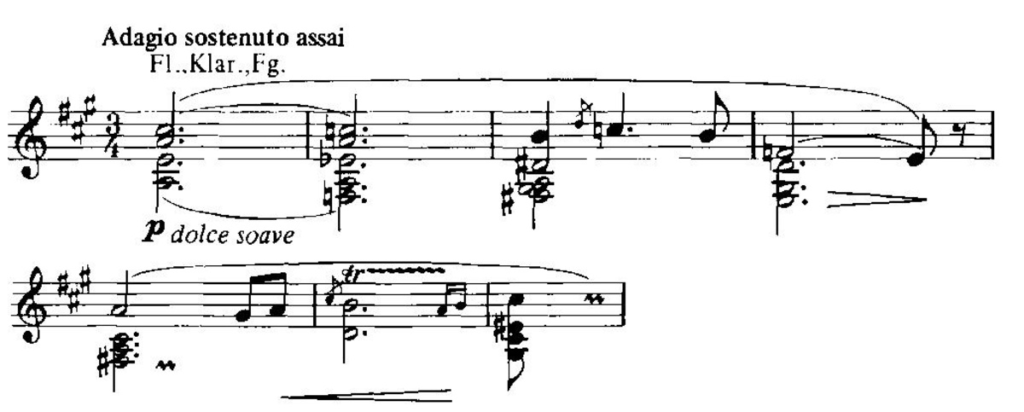
A typical performance of this concerto lasts about 25 minutes.
The concerto is scored for solo piano, three flutes (one doubling piccolo), two oboes, two clarinets in A, two bassoons, two horns in E, two trumpets in E, three trombones (two tenor, one bass), tuba, timpani in D and A, cymbals and strings.
The second concerto, while less virtuosic than Liszt’s First Piano Concerto, shows far more originality in form.
In this respect it reveals a closer link to Liszt’s better known symphonic poems in both style and structure.
Also, while the final version of the First Concerto could be considered a soloist’s showpiece, the Second shows Liszt attempting to confirm his compositional talent while distancing himself from his virtuoso performance origins.
Liszt is less generous with technical devices for the soloist.
Instead of an overbearing virtuoso, the pianist often becomes an accompanist to woodwinds and strings.
The soloist does not dominate the thematic material — in fact, after the opening, the pianist never has the theme in its original form.
Instead their role is to create, or at least seem to create, inventive variations that lead the listener through a series of thematic transformations.
The various pauses and silences are not intended breaks in the musical flow but rather serve as transitions in the musical discourse.
“Organic unity” lends structure to the entire work.

Above: Hungarian composer Franz Liszt (1811 – 1886)
Liszt called this work Concerto symphonique while in manuscript.
This title was borrowed from the Concertos symphoniques of Henry Litolff.
Liszt liked not only Litolff’s title but also the idea for which it stood.
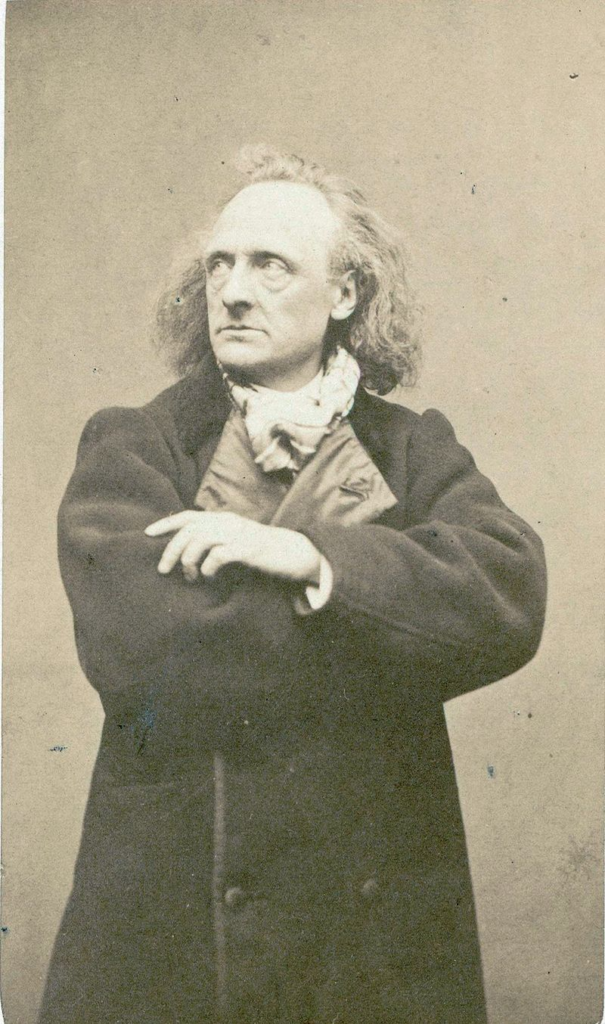
Above: British born French composer Henry Litolff (1818 – 1891)
This concept was one of thematic metamorphosis — drawing together highly diverse themes from a single melodic source.
This was a concept of which Liszt was already familiar from his study of Franz Schubert’s Wanderer Fantasy.

Above: Austrian composer Franz Schubert (1797 – 1828)
Beethoven had also used such a device in his 9th Symphony, transforming the “Ode to Joy” theme during the final movement.
With Liszt, however, thematic transformation would become a compositional device to which he would turn time and again—in the symphonic poems, the Faust and Dante Symphonies, and the B minor Piano Sonata.
This use of thematic transformation likewise changed Liszt’s attitude toward compositional form.
Compared to his contemporaries, who still used sonata form more or less conventionally, Liszt departed from the form at times radically.
Themes are shuffled into new and unexpected sequences, with their various metamorphoses showcasing kaleidoscopic contrasts.
Recapitulations became foreshortened.
Codas assume developmental proportions.
Three- and four-movement structures are rolled into one.
Liszt’s justification, as he phrased it, was:
“New wine demands new bottles.“

Above: Franz Liszt
With his Second Piano Concerto, Liszt took the practice of creating a large-scale compositional structure from metamorphosis alone to an extreme level.
Its opening lyrical melody becomes the march-theme of the finale.
That theme, in turn, morphs into an impassioned theme near the end of the concerto.
The theme which begins the scherzo reappears at that sections end disguised as a totally different melody in another key.
This last transformation is so complete that it is easy to not recognize the connection.
Key, mode, time signature, pace and tonal color have all been transformed.

Above: Franz Liszt
For Liszt to so radically alter the music’s notation while remaining true to the essential idea behind it shows a tremendous amount of ingenuity on his part.
In his essay “Liszt Misunderstood“, Alfred Brendel comments on this technique:
There is something fragmentary about Liszt’s work.
Its musical argument, perhaps by its nature, is often not brought to a conclusion.
But is the fragment not the purest, the most legitimate form of Romanticism?
When Utopia becomes the primary goal, when the attempt is made to contain the illimitable, then form will have to remain “open” in order that the illimitable may enter.
It is the business of the interpreter to show us how a general pause may connect rather than separate two paragraphs, how a transition may mysteriously transform the musical argument.
This is a magical art.
By some process incomprehensible to the intellect, organic unity becomes established, the “open form” reaches its conclusions in the infinite.
Anyone who does not know the allure of the fragmentary will remain a stranger to much of Liszt’s music, and perhaps to Romanticism in general.“
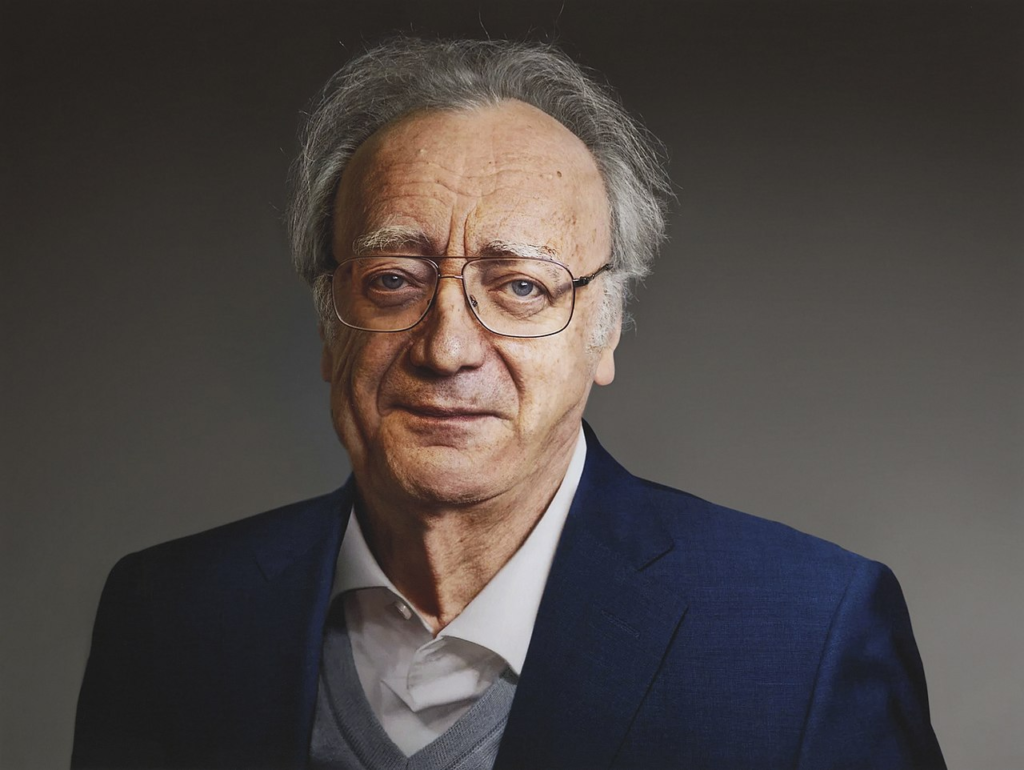
Above: Czech-born Austrian composer Alfred Brendel
For the novice that I am, terms like sonata form, recapitulations (at least in the musical sense of the word), codas and movement structures are as Greek to me as my trying to read music from a piano stand.
My meagre understanding is that Liszt did things differently in a manner as revolutionary as the aforementioned Berlioz.

Franz Liszt was a Hungarian composer, virtuoso pianist, conductor and teacher of the Romantic period.
With a diverse body of work spanning more than six decades, he is considered to be one of the most prolific and influential composers of his era.
His piano works continue to be widely performed and recorded.
Liszt achieved success as a concert pianist from an early age.
He received lessons from esteemed musicians Carl Czerny and Antonio Salieri.
He gained further renown for his performances during tours of Europe in the 1830s and 1840s, developing a reputation for technical brilliance as well as physical attractiveness.
In a phenomenon dubbed “Lisztomania“, he rose to a degree of stardom and popularity among the public not experienced by the virtuosos who preceded him.
During this period and into his later life, Liszt was a friend, musical promoter and benefactor to many composers of his time.
Liszt coined the terms “transcription” and “paraphrase“, and would perform arrangements of his contemporaries’ music to popularize it.
Liszt was one of the most prominent representatives of the New German School, a progressive group of composers involved in the “War of the Romantics” who developed ideas of programmatic music and harmonic experimentation.
Liszt taught piano performance to hundreds of students throughout his life, many of whom went on to become notable performers.
He left behind an extensive and diverse body of work that influenced his forward-looking contemporaries and anticipated 20th-century ideas and trends.
Among Liszt’s musical contributions were the concept of the symphonic poem, innovations in thematic transformation and Impressionism in music, and the invention of the masterclass as a method of teaching performance.
In a radical departure from his earlier compositional styles, many of Liszt’s later works also feature experiments in atonality, foreshadowing developments in 20th-century classical music.
Today he is best known for his original piano works, such as the Hungarian Rhapsodies, Années de pèlerinage, Transcendental Études, “La campanella“, and the Piano Sonata in B minor.

Above: Franz Liszt
Franz Liszt was born to Anna Liszt (née Maria Anna Lager) and Adam Liszt on 22 October 1811, in the Hungarian village of Doborján.
Liszt’s father was a land steward in the service of Prince Nikolaus II Esterházy.
A keen amateur musician, Adam played the piano, cello, guitar and flute.

Above: Adam Liszt
A renowned child prodigy, Franz began to improvise at the piano from before the age of 5.
His father diligently encouraged his progress.
Franz also found exposure to music through attending Mass, as well as travelling Romani bands that toured the Hungarian countryside.

Above: Franz Liszt
His first public concert was in Sopron in 1820 at the age of 9.
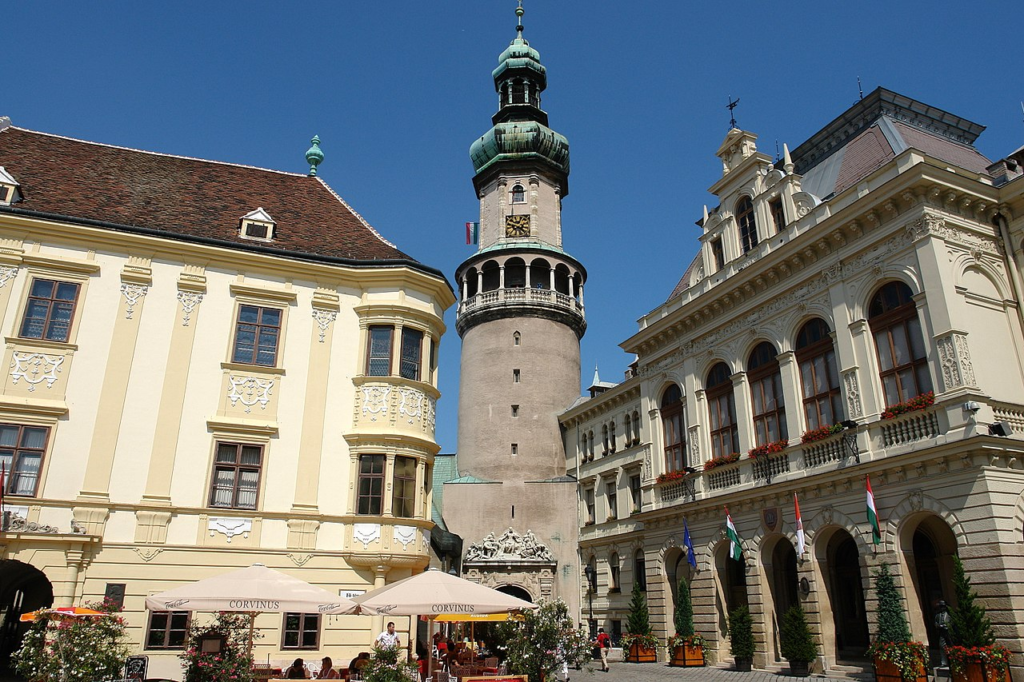
Above: Sopron, Hungary
Its success led to further appearances in Bratislava and for Prince Nikolaus’ court in Eisenstadt.
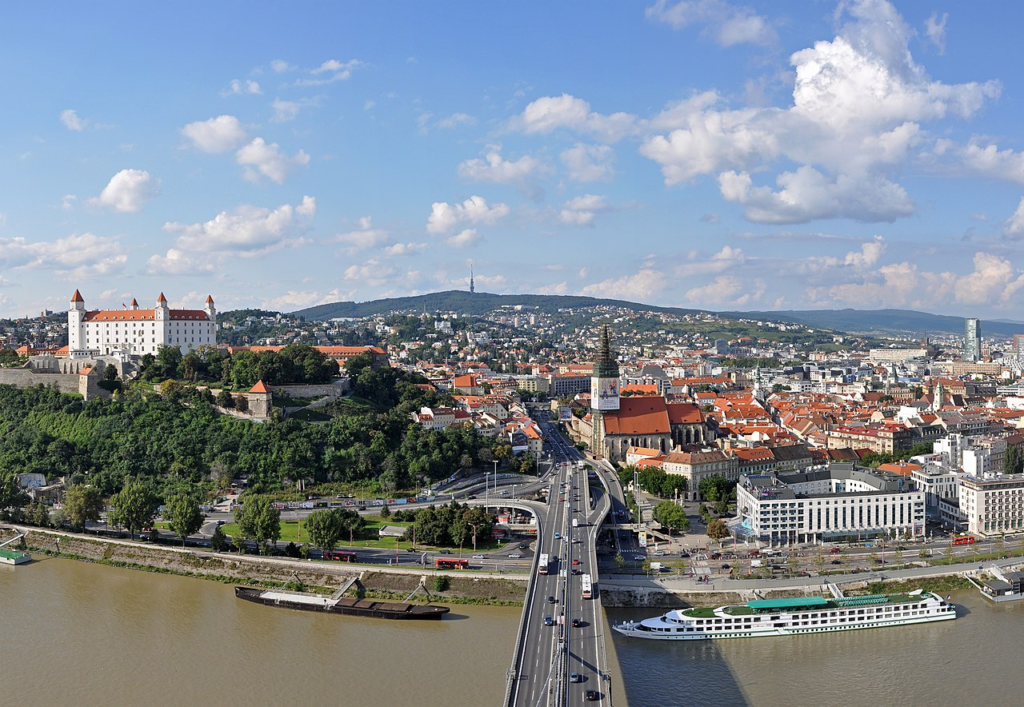
Above: Bratislava, Slovak Republic
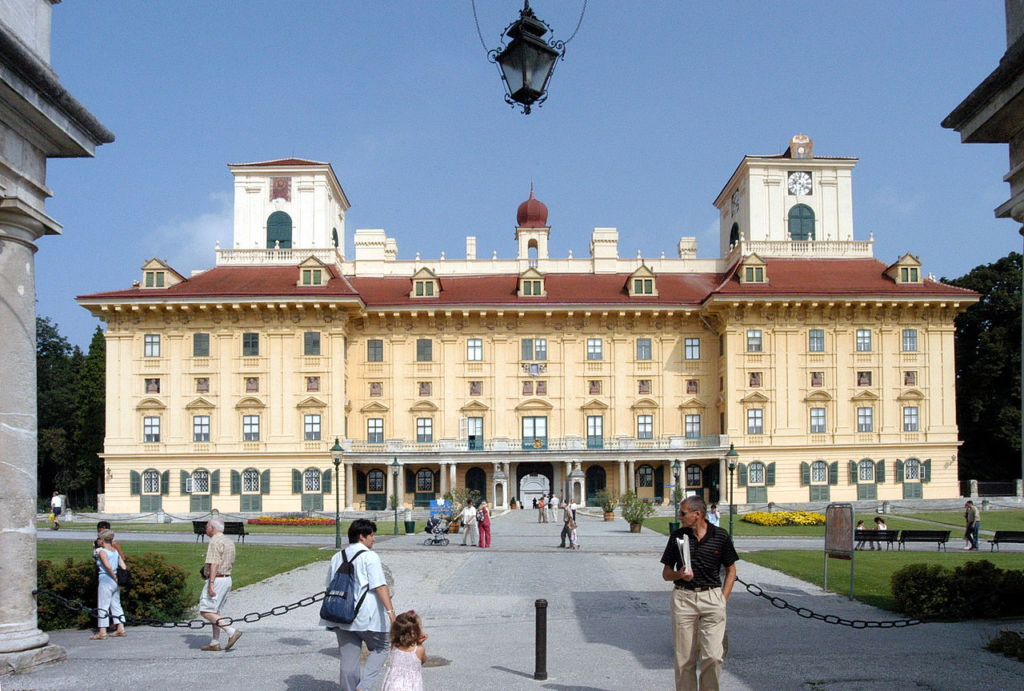
Above: Schloss Esterhazy, Eisenstadt, Austria (Österreich)
The publicity led to a group of wealthy sponsors offering to finance Franz’s musical education in Vienna.
There, Liszt received piano lessons from Carl Czerny, who in his own youth had been a student of Beethoven.
Czerny, already extremely busy, had only begrudgingly agreed to hear Liszt play, and had initially refused to entertain the idea of regular lessons.
Being so impressed by the initial audition, however, Czerny taught Liszt regularly, free of charge, for the next 18 months, at which point he felt he had nothing more to teach.
Liszt remained grateful to his former teacher, later dedicating to him the Transcendental Études on their 1830 republication.

Above: Austrian composer Carl Czerny (1791 – 1857)
Liszt also received lessons in composition from Antonio Salieri, the accomplished music director of the Viennese court who had previously taught Beethoven and Schubert.
Like Czerny, Salieri was highly impressed by Liszt’s improvisation and sight-reading abilities.
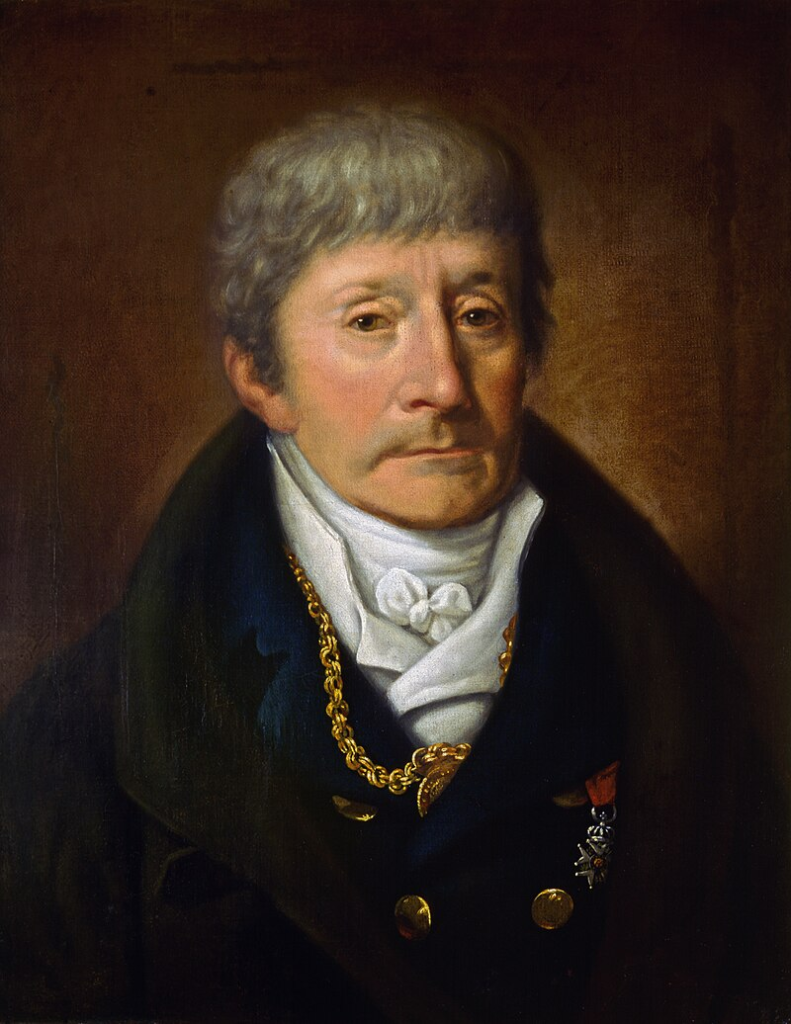
Above: Italian composer Antonio Salieri (1750 – 1825)
Liszt’s public debut in Vienna, on 1 December 1822, was a great success.
He was greeted in Austrian and Hungarian aristocratic circles and met Beethoven and Schubert.
To build on his son’s success, Adam Liszt decided to take the family to Paris, the centre of the artistic world.
At Liszt’s final Viennese concert on 13 April 1823, Beethoven was reputed to have walked onstage and kissed Liszt on the forehead, to signify a kind of artistic christening.
There is debate, however, on the extent to which this story is apocryphal.
The family briefly returned to Hungary.
Liszt played a concert in traditional Hungarian dress, in order to emphasize his roots, in May 1823.
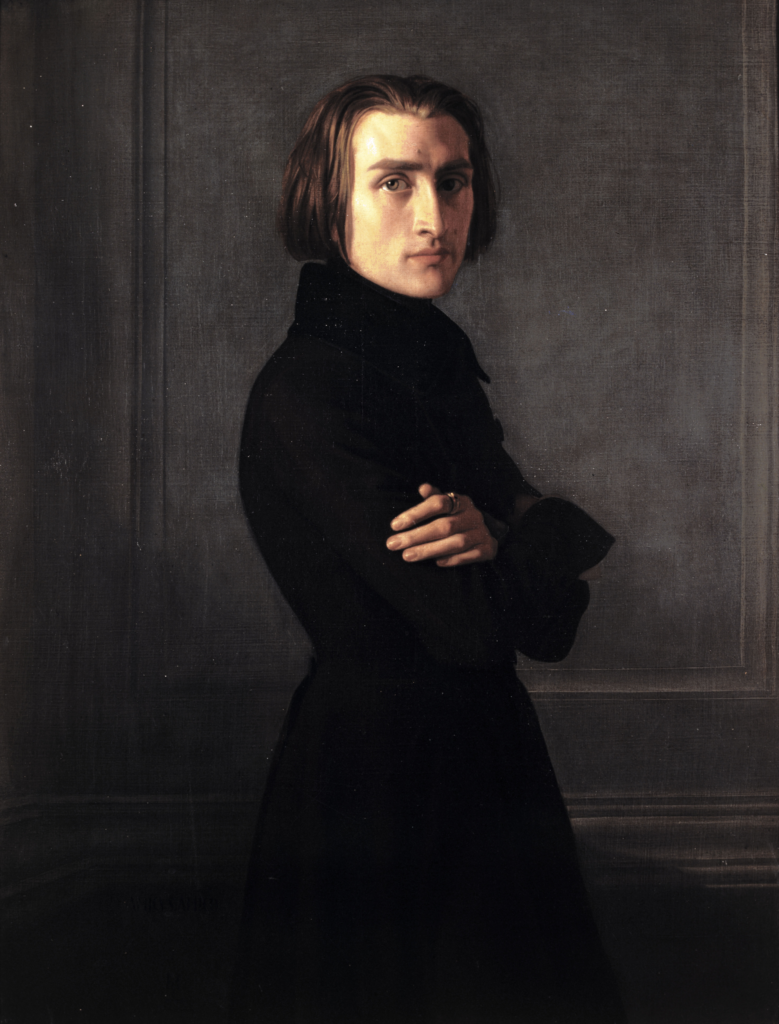
Above: Franz Liszt
In 1824, a piece Liszt had written at the age of 11 – his Variation on a Waltz by Diabelli (S. 147) – appeared in Part II of Vaterländischer Künstlerverein as his first published composition.
This volume, commissioned by Anton Diabelli, includes 50 variations on his waltz by 50 different composers (Part I being taken up by Beethoven’s 33 variations on the same theme, which are now separately better known simply as his Diabelli Variations).
Liszt was the youngest contributor to the project, described in it as “a boy of eleven years old“;
Czerny was also a participant.

Above: Franz Liszt
Having made significant sums from his concerts, Liszt and his family moved to Paris in 1823, with the hope of his attending the Conservatoire de Paris.
The director Luigi Cherubini refused his entry, however, as the Conservatoire did not accept foreigners.
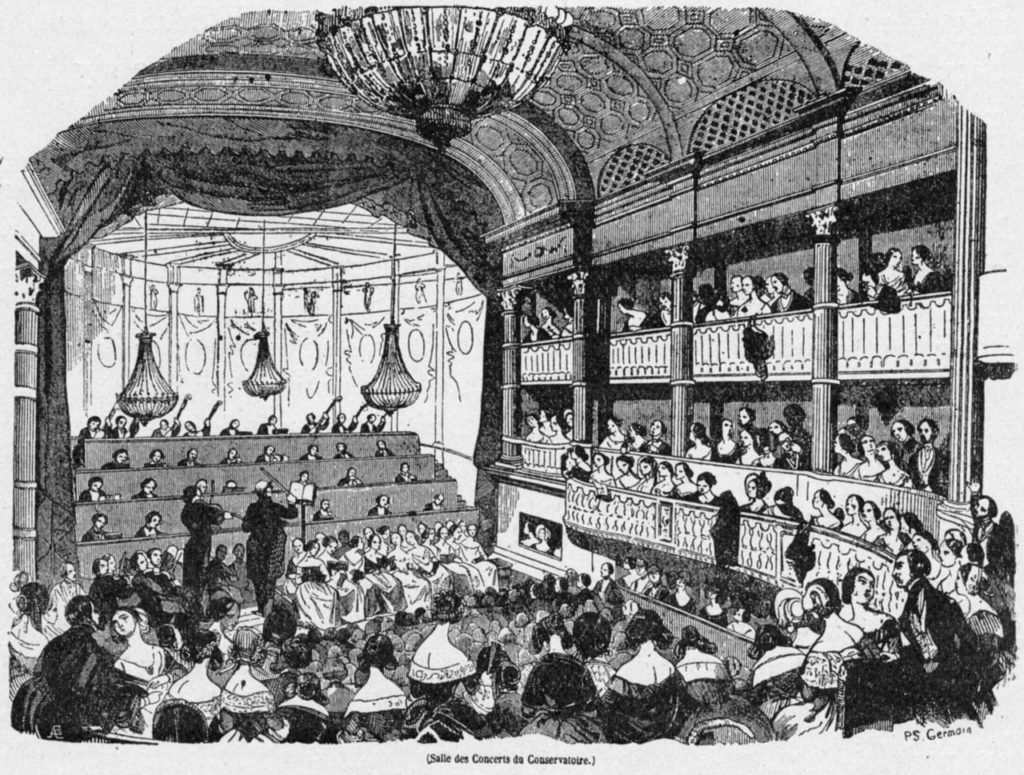
Nevertheless, Liszt studied under Anton Reicha and Ferdinando Paër, and gave a series of highly successful concerts, debuting on 8 March 1824.
Paër was involved in the Parisian theatrical and operatic scene, and through his connections Liszt staged his only opera, Don Sanche, which premiered shortly before his 14th birthday.
The premiere was warmly received, but the opera only ran for four performances, and is now obscure.

Above: Italian composer Ferdinando Paër (1771 – 1839)
Accompanied by his father, Liszt toured France and England, where he played for King George IV.
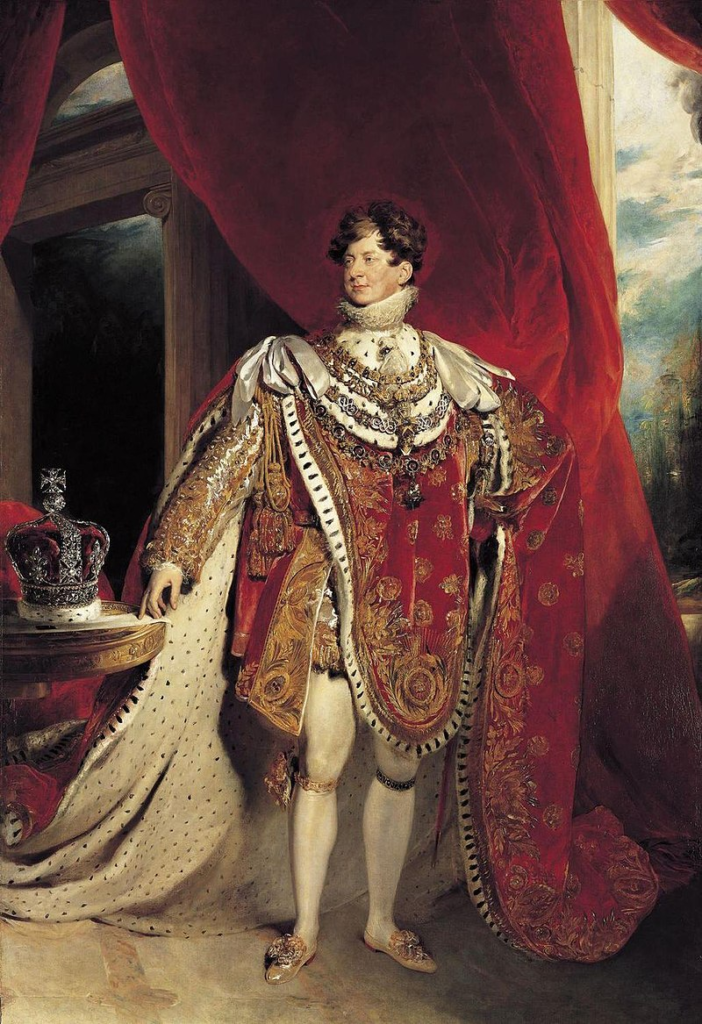
Above: British King George IV (1762 – 1830)
Adam Liszt died suddenly of typhoid fever in the summer of 1827.
For the next eight years, Liszt continued to live in Paris with his mother.

Above: Maria Anna Lager Liszt (1788 – 1866)
Franz gave up touring, and in order to earn money, he gave lessons on piano and composition, often from early morning until late at night.
His students were scattered across the city and he had to cover long distances.
Because of this, he kept uncertain hours and also took up smoking and drinking, habits he would continue throughout his life.

Above: Franz Liszt
During this period, Liszt fell in love with one of his pupils, Caroline de Saint-Cricq, the daughter of Charles X’s Minister of Commerce, Pierre de Saint-Cricq.
Her father, however, insisted that the affair be broken off.

Above: French politician Pierre de Saint-Cricq (1772 – 1854)
Liszt fell very ill, to the extent that an obituary notice was printed in a Paris newspaper.
He underwent a long period of religious doubts and introspection.
He stopped playing the piano and giving lessons.
He developed an intense interest in religion, having many conversations with Abbé de Lamennais and Chrétien Urhan, a German-born violinist who introduced him to the Saint-Simonists.
Lamennais dissuaded Liszt from becoming a monk or priest.

Above: French writer-philosopher Abbé Félicité Robert de Lamennais (1782-1854)
Urhan was an early champion of Schubert, inspiring Liszt’s own lifelong love of Schubert’s songs.
Much of Urhan’s emotive music which moved beyond the Classical paradigm, such as Elle et moi, La Salvation angélique and Les Regrets, may have helped to develop Liszt’s taste and style.

Above: French composer Chrétien Urhan (1790 – 1845)
During this period, Liszt came into contact with many of the leading authors and artists of his day.
He composed practically nothing in the years between his father’s death and the July Revolution of 1830, which inspired him to sketch a symphony based on the events of the “three glorious days” (this piece was left unfinished, and later reworked as Héroïde funèbre).
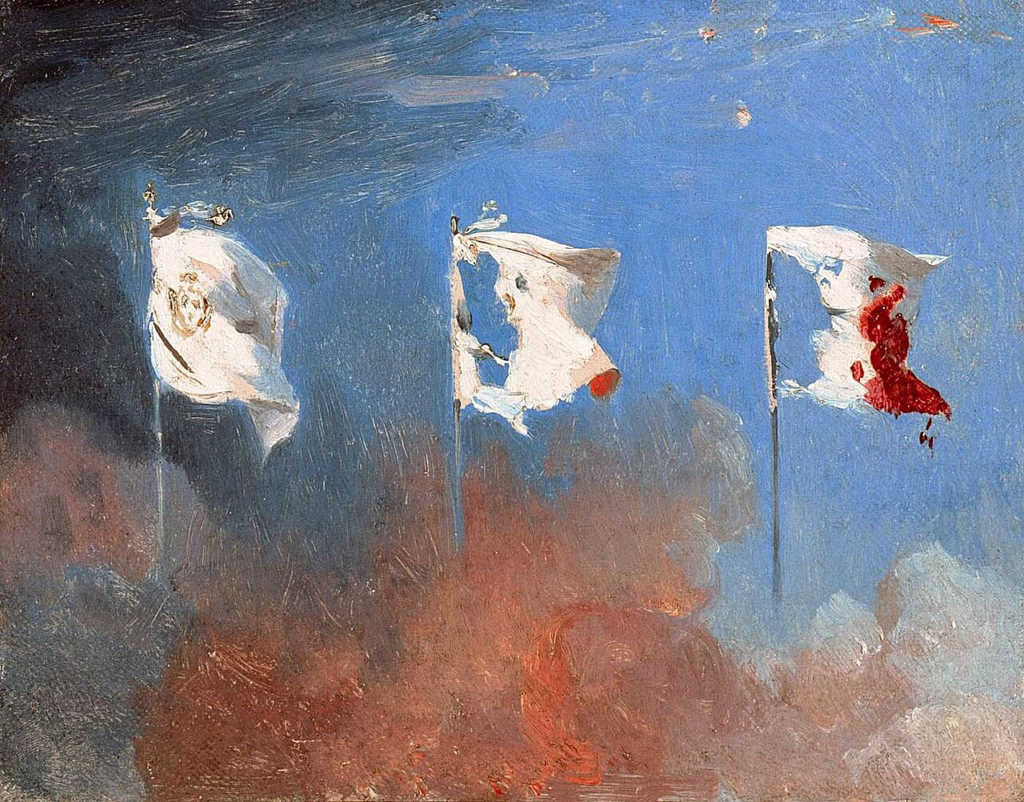
Above: Scenes of July 1830, Léon Cogniet
Liszt met Hector Berlioz on 4 December 1830, the day before the premiere of the Symphonie fantastique.
Berlioz’s music made a strong impression on Liszt.
The two quickly became friends.
Liszt also befriended Frédéric Chopin around this time.
After attending a concert featuring Niccolò Paganini in April 1832, Liszt resolved to become as great a virtuoso on the piano as Paganini was on the violin.
He dramatically increased his practice, sometimes practicing for up to 14 hours a day.
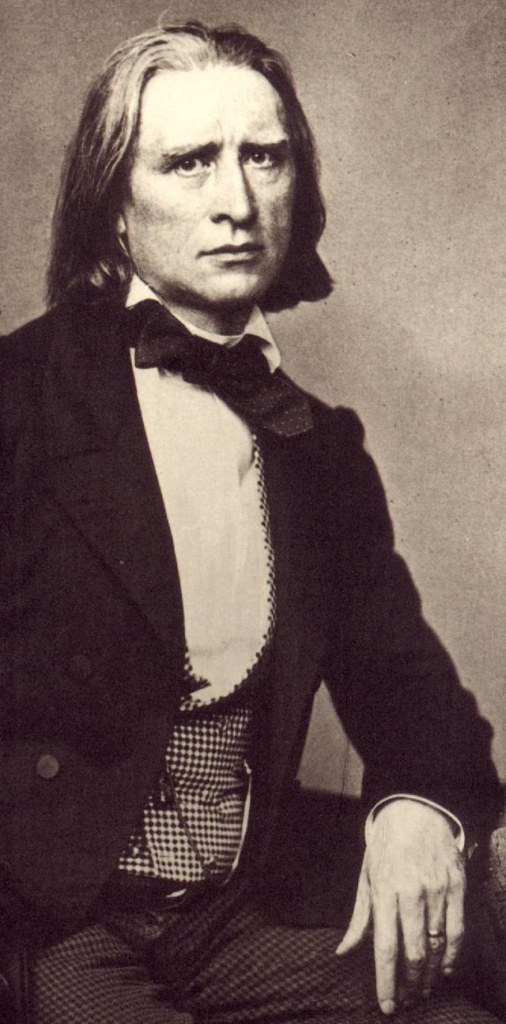
Above: Franz Liszt
Liszt slept little, went to church daily, smoked and drank constantly.
He rose at 0400 every morning, even when he had been invited out the previous evening, had drunk a good deal of wine and not got to bed until very late.
Soon after rising, and without breakfasting, he went to church.
At 0500 he took coffee and with it a couple of dry rolls.
Then work began:
Letters were written or read through, music tried out, and much else.
At 0800 came the post, always bringing a huge pile of items.
These were then looked through, personal letters read and answered, or music tried out.
At 1300, lunch was brought from the court kitchen when Liszt had not been invited out, which happened very frequently.
The meal was good and substantial, but simple.
With it a glass of wine would be drunk, or water and brandy, which he liked very much.
Then he would smoke – indeed he smoked all the time when not eating or sleeping.
Last of all, there was the coffee machine.
The coffee was burnt freshly every day, something on which Liszt placed great emphasis.
Later in the afternoon, Liszt took a long nap of two hours or more – to make up, in part, for his sleepless nights, which he spent pacing his room and sitting at the piano or writing.
Although he drank sparingly at lunch, he continued to drink steadily throughout the afternoon and evening.
By his last years he was imbibing one or two bottles of cognac and two or three bottles of wine a day, as well as the occasional bottle of absinthe.
His contemporaries remember him as having a cheerful dispositin, but Liszt obviously had his share of demons.
A younger colleague once asked Liszt why he didn’t keep a diary.
He replied:
“To live one’s life is hard enough.
Why write down all the misery?
It would resemble nothing more than the inventory of a torture chamber.“

In 1838, Liszt published the six Études d’exécution transcendante d’après Paganini (later revised as Grandes études de Paganini), aiming to represent Paganini’s virtuosity on the keyboard.
The process of Liszt completely redeveloping his technique is often described as a direct result of attending Paganini’s concert, but it is likely that he had already begun this work previously, during the period of 1828 to 1832.

Above: Franz Liszt
In 1833, Liszt began a relationship with the Countess Marie d’Agoult, who was married to a French cavalry officer but living independently.
In order to escape scandal they moved to Geneva in 1835.
Their daughter Blandine was born there on 18 December.
Liszt taught at the newly founded Geneva Conservatoire and contributed essays for L’Artiste and the Revue et gazette musicale de Paris.

Above: Images of Geneva (Genève), Switzerland (Suisse)
For the next four years, Liszt and the Countess lived together.
In 1835 and 1836, they travelled around Switzerland.

Above: Flag of Switzerland (Schweiz / Suisse / Svizzera / Svizra)
From August 1837 until November 1839, they toured Italy.
It was these travels that later inspired the composer to write his cycle of piano collections entitled Années de pèlerinage (Years of Pilgrimage).

Above: Franz Liszt
Their daughter, Cosima, was born in Como, on 24 December 1837, and their son Daniel, on 9 May 1839, in Rome.

Above: Como, Italia
That autumn, relations between them became strained.
Liszt heard that plans for a Beethoven Monument in Bonn were in danger of collapse for lack of funds and pledged his support, raising funds through concerts.

Above: Beethoven Monument, Bonn, Deutschland
The Countess returned to Paris with the children, while Liszt gave six concerts in Vienna, then toured Hungary.
Liszt would later spend holidays with Marie and their children on the island of Nonnenwerth on the Rhine in the summers of 1841 and 1843.

Above: Nonnenwerth Island with monastery, Grafenwerth on the right, Germany (Deutschland)
In May 1844, the couple finally separated.
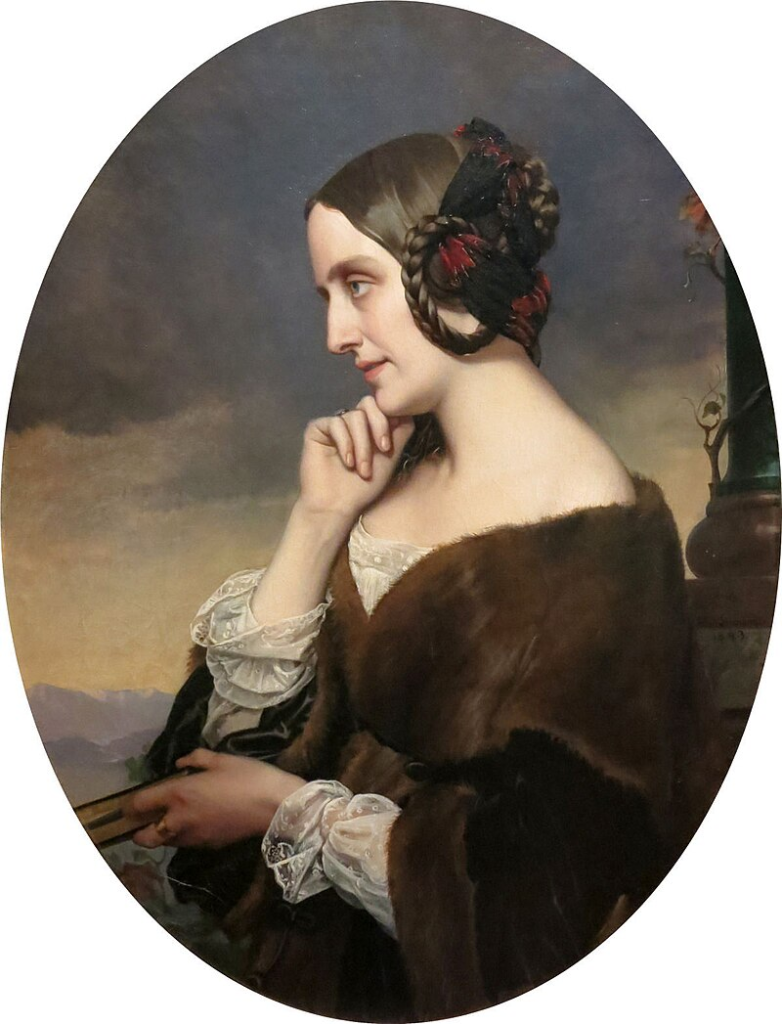
Above: French writer Countess Marie d’Agoult (1805 – 1876), known also by her pen name, Daniel Stern.
Swiss pianist Sigismond Thalberg moved to Paris in 1835 after several successful years of touring.
His concerts there were extremely well received, and Liszt, at the time living in Geneva, received news of them from his friends in Paris.
In the autumn of 1836 Liszt published an unfavourable review of several of Thalberg’s compositions in the Gazette musicale, calling them “boring” and “mediocre“.
A published exchange of views ensued between Liszt and Thalberg’s supporter, the critic François-Joseph Fétis.
Liszt heard Thalberg perform for the first time at the Paris Conservatoire in February 1837.
To settle the disagreement the two pianists each arranged a performance for the public to compare them the following month.
Liszt performed his own Grande fantaisie sur des motifs de Niobe and Weber’s Konzertstück in F minor.
This was considered to be inconclusive, so the two agreed to perform at the same concert for comparison, on 31 March, at the salon of the Princess of Belgiojoso, in aid of Italian refugees.
Thalberg opened with his Fantasia on Rossini’s “Moses“, then Liszt performed his Niobe fantasy.
The result of this “duel” is disputed.
Critic Jules Janin’s report in Journal des débats asserted that there was no clear winner:
“Two victors and no vanquished.
It is fitting to say with the poet ‘et adhuc sub judice lis est (the case is still before the judge)”.
Belgiojoso declined to declare a winner, famously concluding that “Thalberg is the first pianist in the world – Liszt is unique.“
The biographer Alan Walker, however, believes that:
“Liszt received the ovation of the evening and all doubts about his supremacy were dispelled.
As for Thalberg, his humiliation was complete.
He virtually disappeared from the concert platform after this date.“

Above: Swiss pianist Sigismond Thalberg (1812 – 1871)
After his separation from Marie, Liszt continued to tour Europe.
His concerts in Berlin in the winter of 1841–1842 marked the start of a period of immense public enthusiasm and popularity for his performances, dubbed “Lisztomania” by Heinrich Heine in 1844.
In a fashion that has been described as similar to “the mass hysteria associated with revivalist meetings or 20th-century rock stars“, women fought over his cigar stubs and coffee dregs, his silk handkerchiefs and velvet gloves, which they ripped to shreds as souvenirs.
This atmosphere was fueled in great part by the artist’s mesmeric personality and stage presence:
He was regarded as handsome.
Heine wrote of his showmanship during concerts:
“How powerful, how shattering was his mere physical appearance.”
It is estimated that Liszt appeared in public well over one thousand times during this eight-year period.
Moreover, his great fame as a pianist, which he would continue to enjoy long after he had officially retired from the concert stage, was based mainly on his accomplishments during this time.
At his performing peak Liszt was considered the greatest pianist of his time, and was perhaps one of the greatest who ever lived.
His popularity during the “Lisztomania” period of the 1840s was unrivalled. Critic Peter G. Davis has written that:
“Perhaps Liszt was not the most transcendent virtuoso who ever lived, but his audiences thought he was, and no pianist since has seriously challenged the legend.”

Adding to his reputation was that Liszt gave away much of the proceeds of his work to charity and humanitarian causes.
He donated large sums to the building fund of Cologne Cathedral and St. Stephen’s Basilica in Pest.

Above: Cologne Cathedral (Kölner Dom), Köln, Deutschland
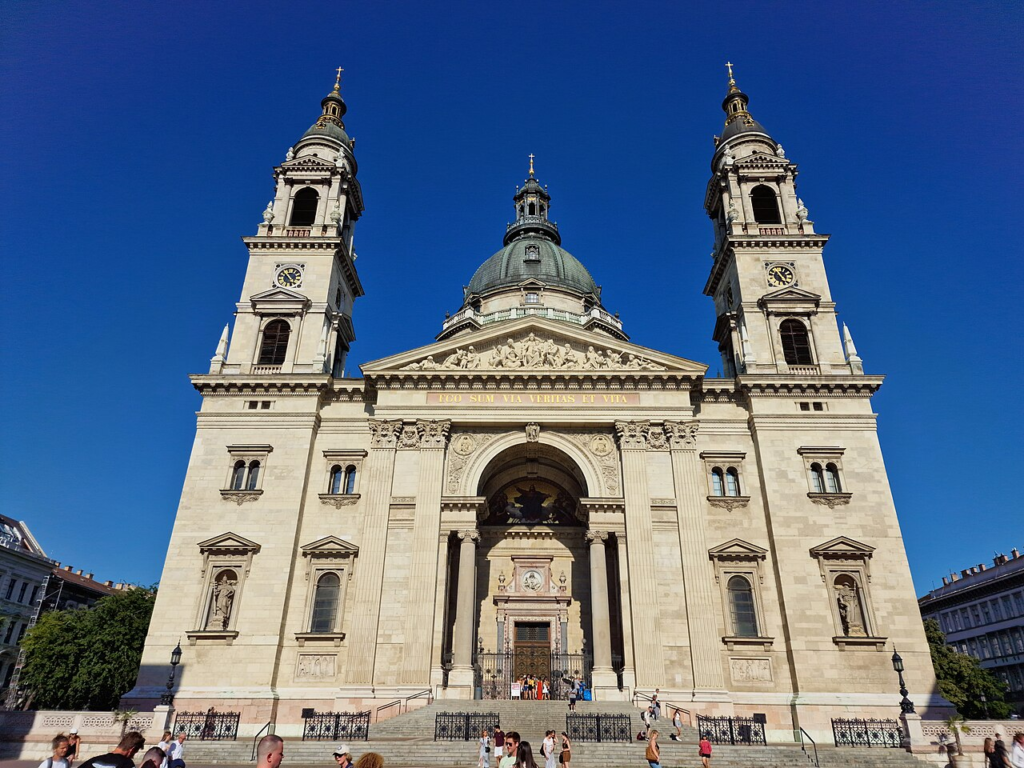
Above: Szent Istvan Bazilika (St. Stephen’s Basilica), Pest, Budapest, Magyarország (Hungary)
Liszt made private donations to public services, such as hospitals and schools, as well as charitable organizations, such as the Leipzig Musicians Pension Fund.
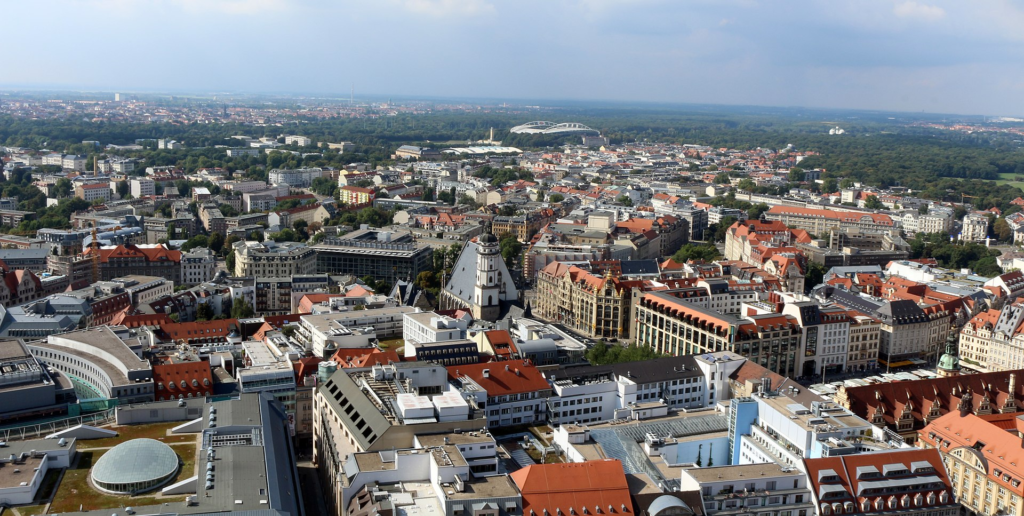
Above: Leipzig, Deutschland
After the Great Fire of Hamburg (Deutschland) in May 1842, Liszt gave concerts in aid of those left homeless.

Above: The Great Fire of Hamburg, Peter Suhr (1842)
During a tour of Ukraine in 1847, Liszt played in Kiev, where he met the Polish Princess Carolyne zu Sayn-Wittgenstein.

Above: Independence Square, Kiev (Kyiv), Ukraine (Україна)
For some time he had been considering retiring from the life of a travelling virtuoso to concentrate on composition.
At this point, he made the decision to take up a court position in Weimar.
Having known Liszt for only a few weeks, Carolyne resolved to join him there.
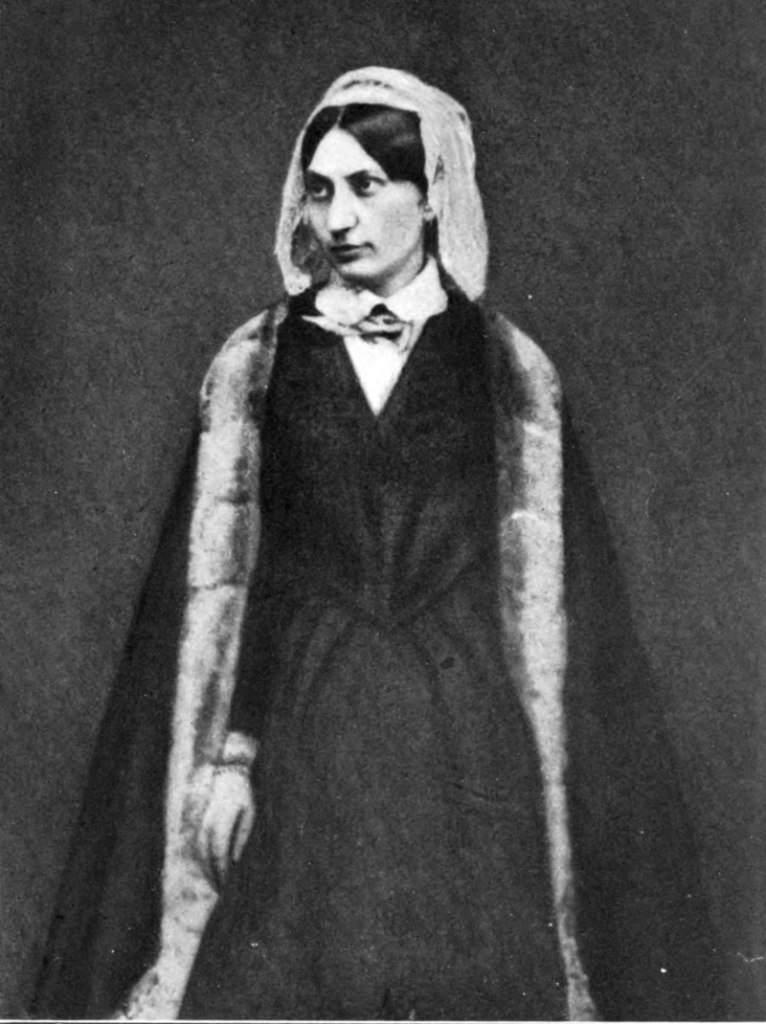
Above: Polish noblewoman-writer Princess Carolyne zu Sayn-Wittgenstein (1819 – 1887)
After a tour of Turkey and Russia that summer, Liszt gave the final paid concert of his career at Kropyvnytskyi in September, then spent the winter with the princess at her estate in Woronińce.
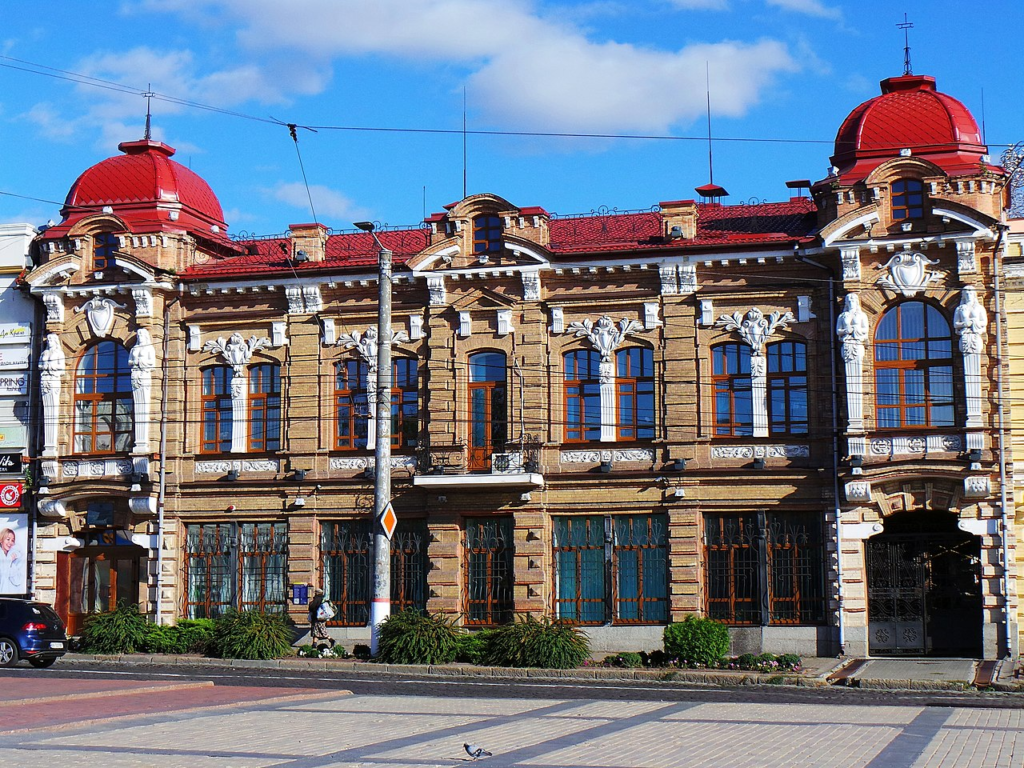
Above: Winter Theater, Kropyvnytskyi, Ukraine
In the mid-19th century, the Ottoman Empire was undergoing a period of transformative change known as the Tanzimat, or “Reorganization” era, which introduced sweeping efforts toward modernization and Westernization.
Sultan Abdülmecid I, who reigned from 1839 to 1861, was a driving force behind these reforms.
Educated in European traditions and fluent in French, Abdülmecid sought to bring the Ottoman Empire in line with European cultural, social, and political standards.
His fascination with Western music, literature, and art set the stage for the arrival of Franz Liszt in Istanbul in 1847.
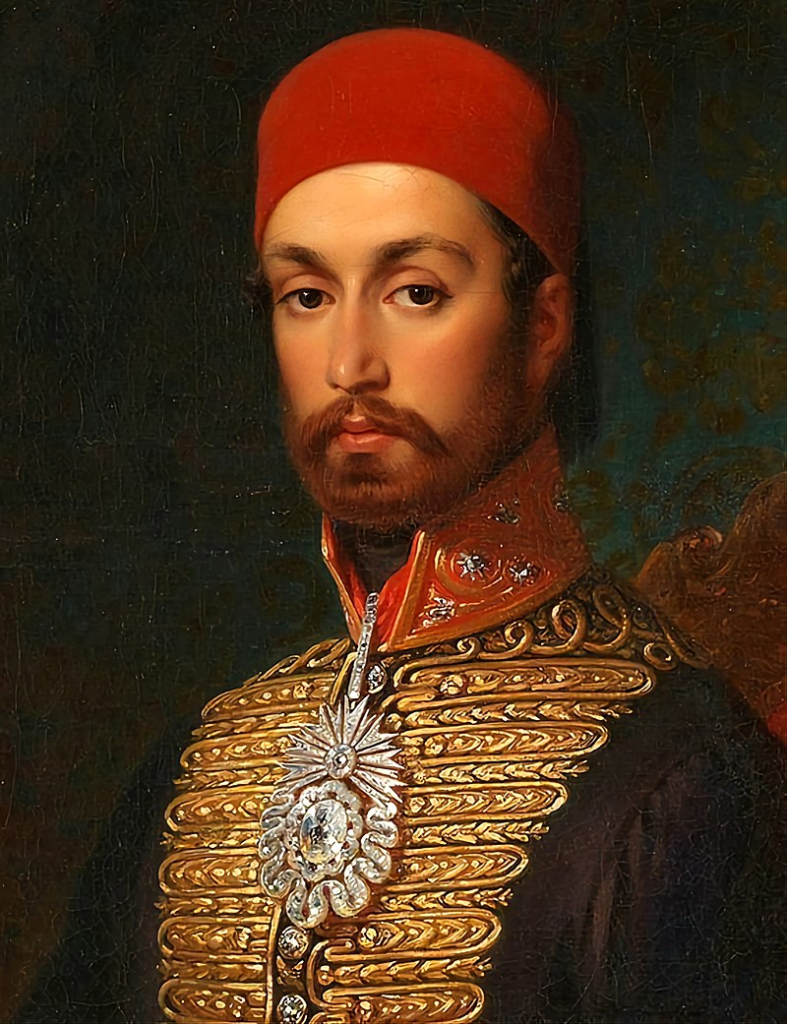
Above: Ottoman Sultan Abdülmecid I (1823 – 1861)
Liszt, a celebrated pianist and composer of the Romantic era, represented the height of European classical music.
His visit underscored Abdülmecid’s vision of Istanbul as a cultural bridge between East and West.
Sultan Abdülmecid’s appreciation for Western classical music was apparent in his court’s atmosphere, which embraced prominent European musicians and fostered intercultural exchanges.
He commissioned the Italian musician Giuseppe Donizetti (not to be confused with his nine-years younger brother Gaetano Donizetti, the famous opera composer) as his court music director, charging him with developing military bands, organizing performances, and introducing polyphonic music to Ottoman audiences.

Above: Italian musician Giuseppe Donzetti (1788 – 1856)
This blend of traditional and Western music created an environment ripe for Liszt’s arrival, where the Sultan’s vision of cosmopolitanism in Istanbul could be fully realized.
Liszt, one of the greatest musical figures of his time, found an eager audience in Istanbul, as Abdülmecid was keen to expose his court and the city’s elite to European musical innovation.
Through his reforms, Abdülmecid fostered a cultural shift within the empire that went beyond politics and governance.

Above: Sultan Abdülmecid I
Like his successor, Abdülaziz, who shared a love for literature and music, Abdülmecid viewed the arts as a vital bridge to the West, encouraging mutual understanding and artistic collaboration.

Above: Sultan Abdülaziz (1830 – 1876)
Abdülmecid’s enthusiasm for Western classical music and the intellectual currents of the Enlightenment inspired him to invite artists like Liszt, whose performances introduced Ottoman audiences to new musical horizons.
Liszt’s visit became emblematic of this era, symbolizing a unique moment in Ottoman history when Western and Ottoman cultures intertwined under Abdülmecid’s patronage, illustrating his vision of an empire that thrived through cultural openness and adaptation.
Franz Liszt’s ambition to visit Istanbul dates back to 1838 when he made plans to perform for Sultan Mahmud II.

Above: Sultan Mahmud II (1785 – 1839)
Although Liszt arranged his travel, acquiring letters of credit and references from Prince Metternich for stops in Izmir, Istanbul, and Athens, unforeseen obstacles forced him to cancel the trip.

Above: Prince Klemens von Metternich (1773 – 1859)
In a letter to his friend Victor Schoelcher on 1 October 1838, Liszt expressed his disappointment:
“People make programs, but God knows how to conduct business.
My strong desire to go to Istanbul is firm, even if plans have changed for reasons beyond my control.”
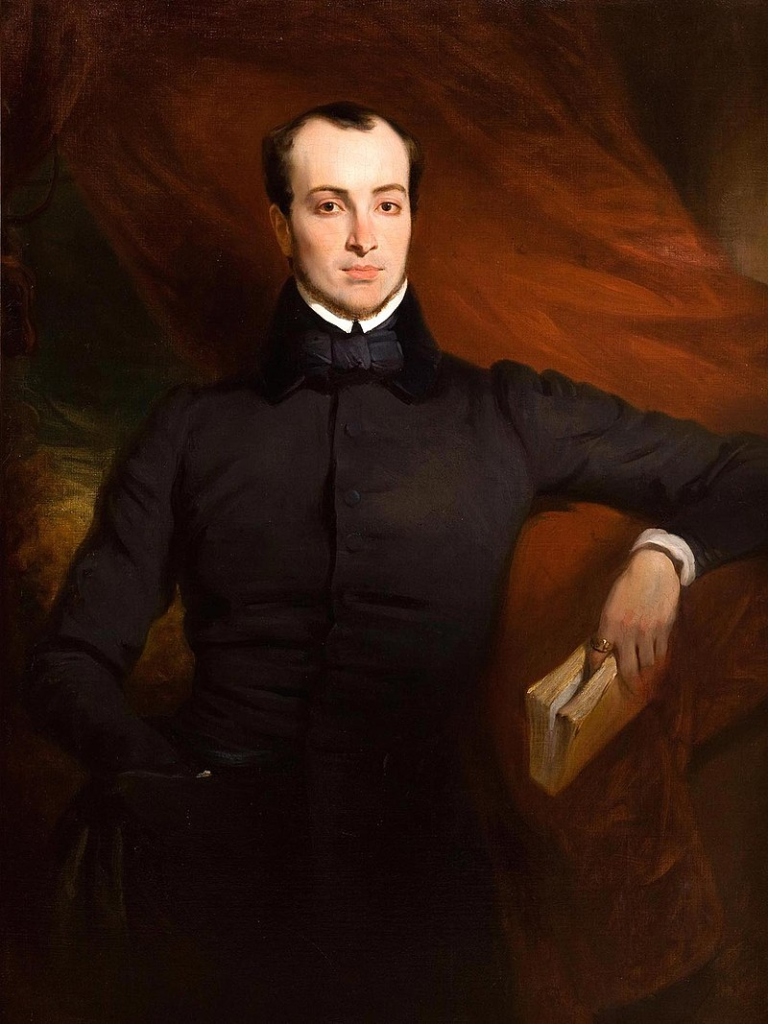
Above: French writer Victor Schoelcher (1804 – 1883)
This early correspondence reveals Liszt’s keen interest in experiencing Istanbul’s vibrant cultural scene, although the exact reasons for his delay remain unclear.
Over the next decade, Liszt’s desire to visit Istanbul persisted, as evidenced by multiple letters he wrote expressing his hope to fulfill this journey.
From Prague in April 1846, he mentioned:
“I will use this autumn to make my Istanbul and Athens dream come true.”
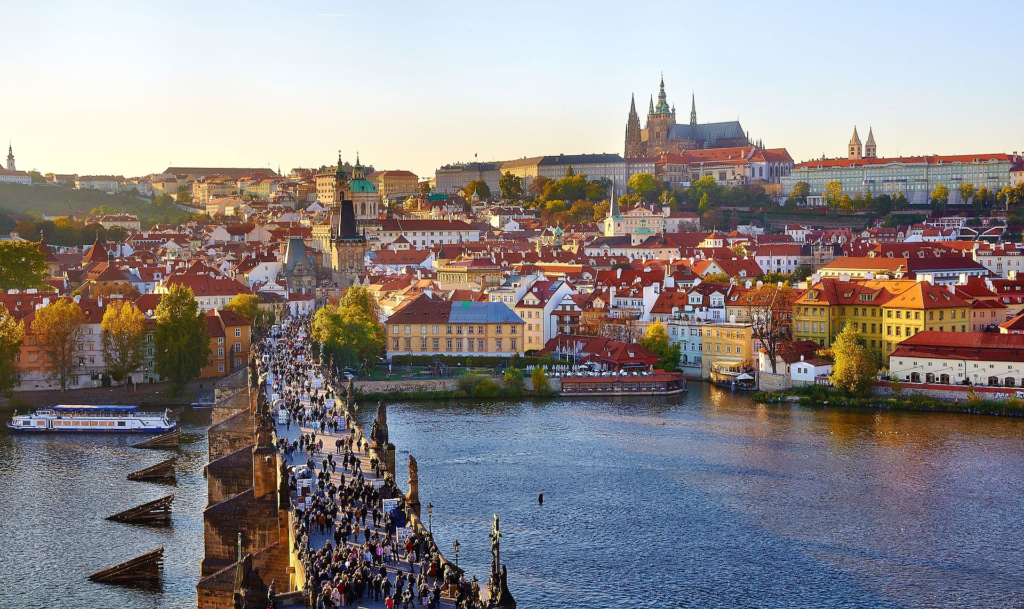
Above: Prague (Praha), Czech Republic (Česká republika)
As late as May 1846, he still expressed uncertainty regarding his schedule, noting from Graz that:
“I will be busy with concerts until the end of June.
Perhaps in September, I will travel to Istanbul via Transylvania, Iași (in Romania) and Bucharest.”
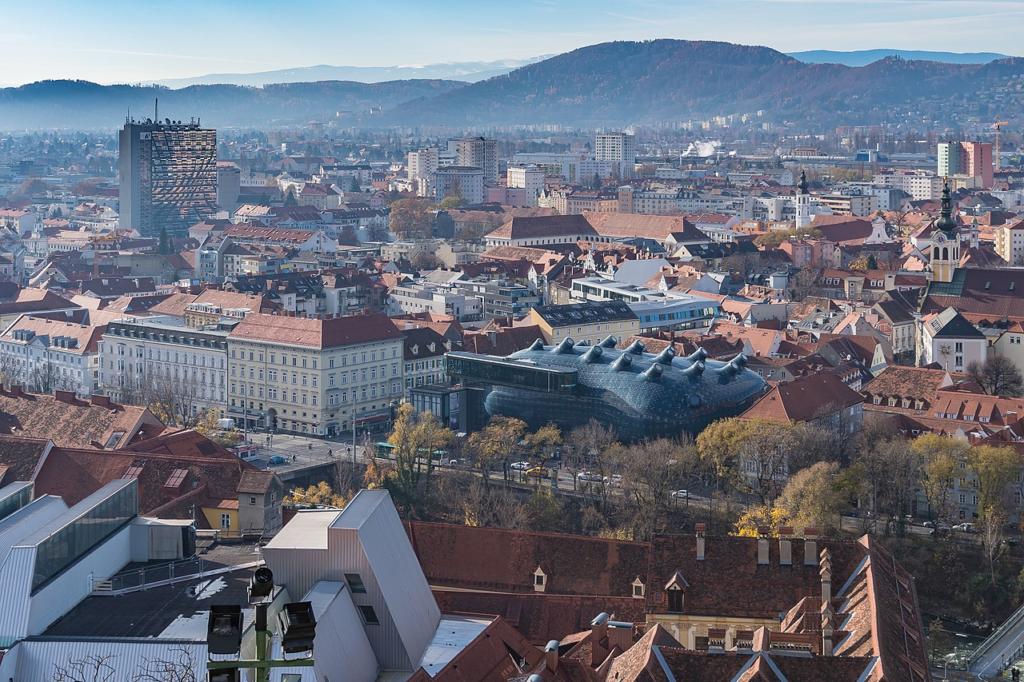
Above: Graz, Austria (Österreich)
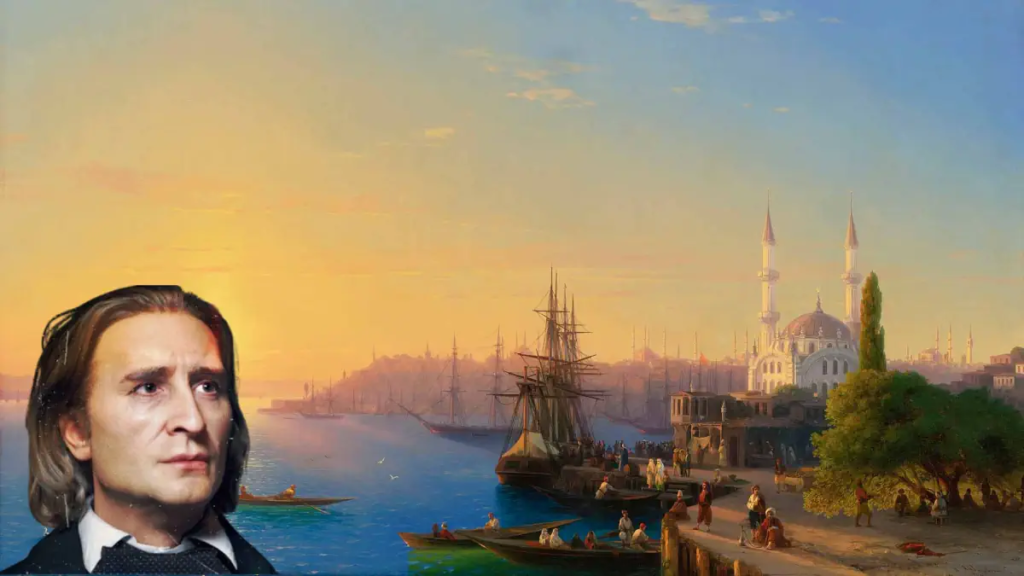
Above: Franz Liszt’s fascination with Istanbul began as early as 1838, when he planned a concert for Sultan Mahmud II, though unforeseen obstacles delayed his visit.
For nearly a decade, Liszt expressed his longing to explore Istanbul’s cultural richness, frequently mentioning it in letters to friends.
His wish finally came true in June 1847, when he arrived by ship and spent five weeks performing in the Ottoman capital, bridging European and Ottoman musical worlds through his celebrated artistry.
Original image:
Istanbul from Ortaköy at Sunset by Ivan Aivazovsky (1817-1900)
Each letter reflects the musician’s resolve despite the logistical challenges of managing concert tours across Europe.
Further delays kept pushing his trip back, but by February 1847, he wrote optimistically from Odessa, planning to await favorable weather to make his voyage to Istanbul by sea.
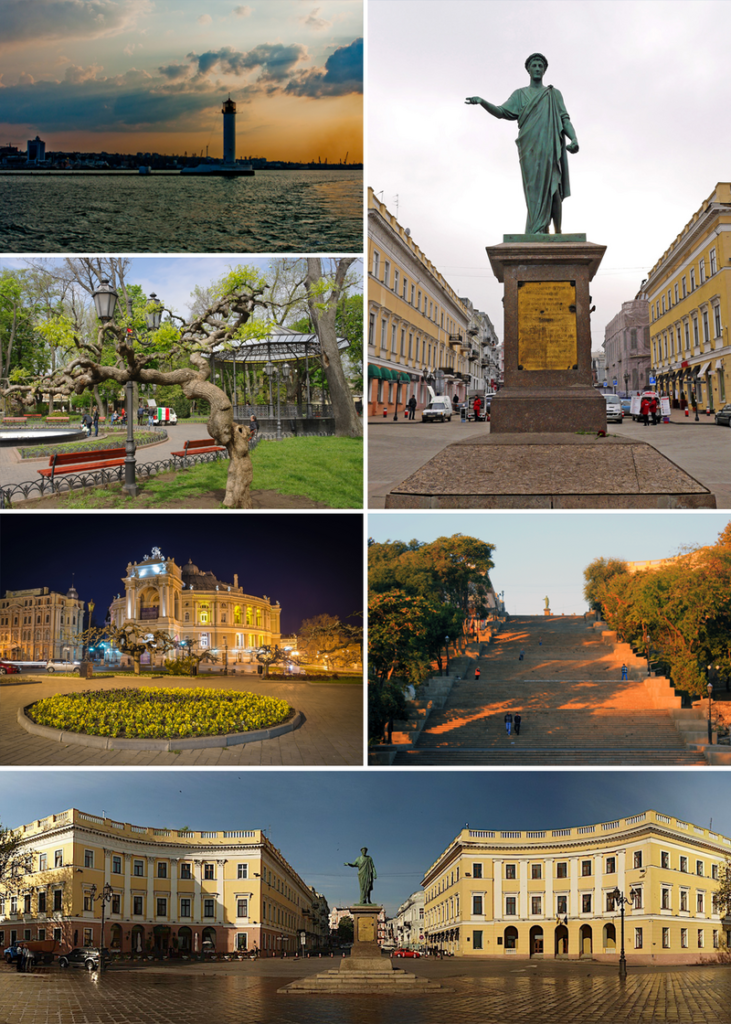
Above: Odessa, Ukraine (Україна)
Liszt’s much-anticipated journey finally materialized in the summer of 1847.
His arrival was heralded by the Ottoman newspaper Takvim-i Vakayi (“Calendar of Events”), which, in January, announced:
“The famous piano master who has become renowned across Europe’s major capitals will soon come to Istanbul.”

Above: Takvim-i Vekayi, Issue 1831, Ottoman Turkish
After performing in Lviv and Chernivtsi, Liszt embarked from Galați (Romania) and arrived in Istanbul by ship on 8 June 1847.
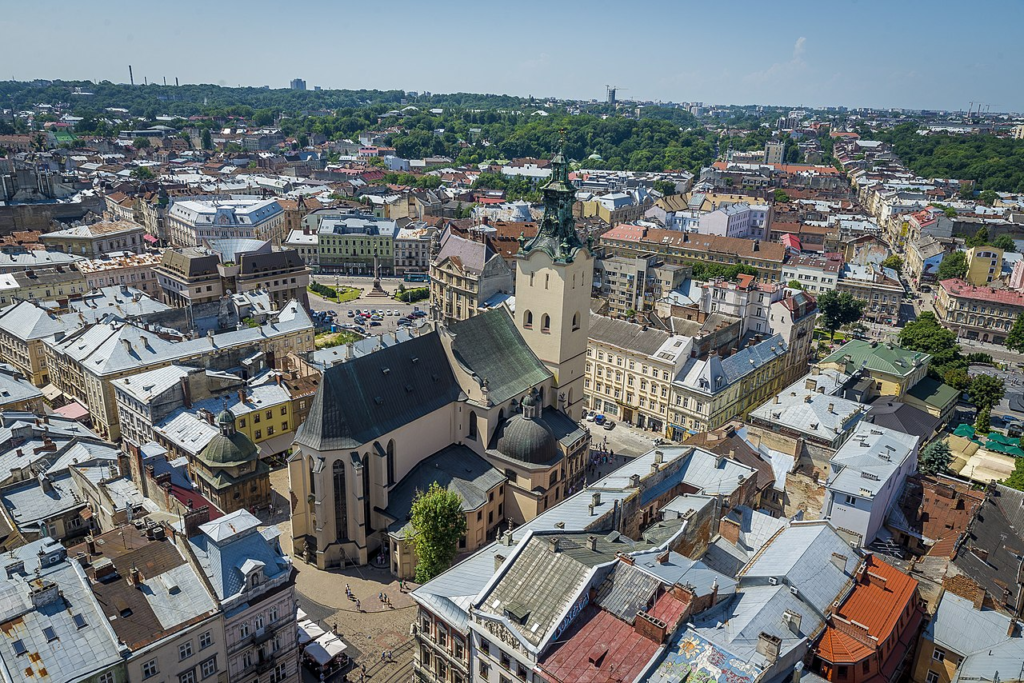
Above: Lviv, Ukraine
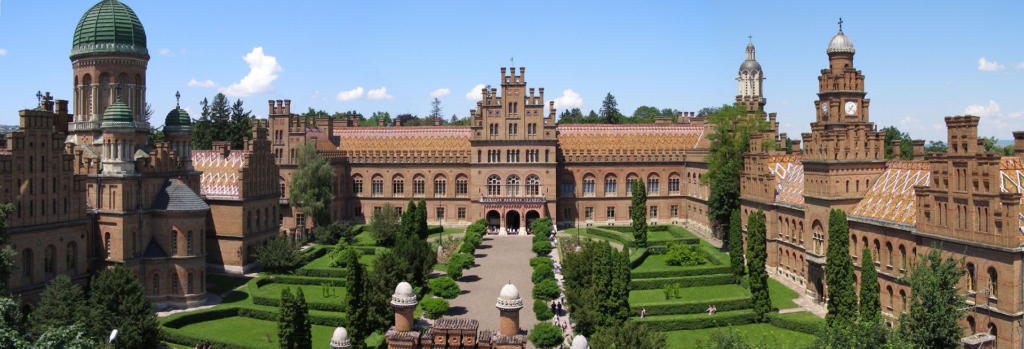
Above: Chernivtsi National University, Chernivtsi, Ukraine

Above: Galați, Romania (România)
Liszt would stay in the city for five transformative weeks, immersed in the vibrant cultural landscape of the Ottoman court.
When Franz Liszt arrived in Istanbul, he was warmly received by Sultan Abdülmecid, who invited him to perform at the Çırağan Palace.
Liszt’s visit was reported with some humor by the preeminent 19th-century British music journal, The Musical World: a Weekly Record of Musical Science, Literature, and Intelligence, (published weekly in London between 1836 and 1931) which wrote:
“Liszt was welcomed with enormous honor and compliment.
A big celebration was prepared.”

Above: An 1840 painting of the original Çırağan Palace, where Franz Liszt was warmly welcomed by Sultan Abdülmecid I for a performance during his 1847 visit to Istanbul.
The Palace was later replaced by the current structure between 1863 and 1867.
“The Sultan organized an elaborate concert to display his appreciation for music and invited palace musicians and singers to perform symphonies and choral pieces.
After this grand performance, Liszt was asked to showcase his piano skills, and he obliged by performing the Andante from “Lucia di Lammermoor”, an overture from William Tell, and “Norma”.”

Above: Fanny Tacchinardi-Persiani as Lucia di Lammermoor (1839)
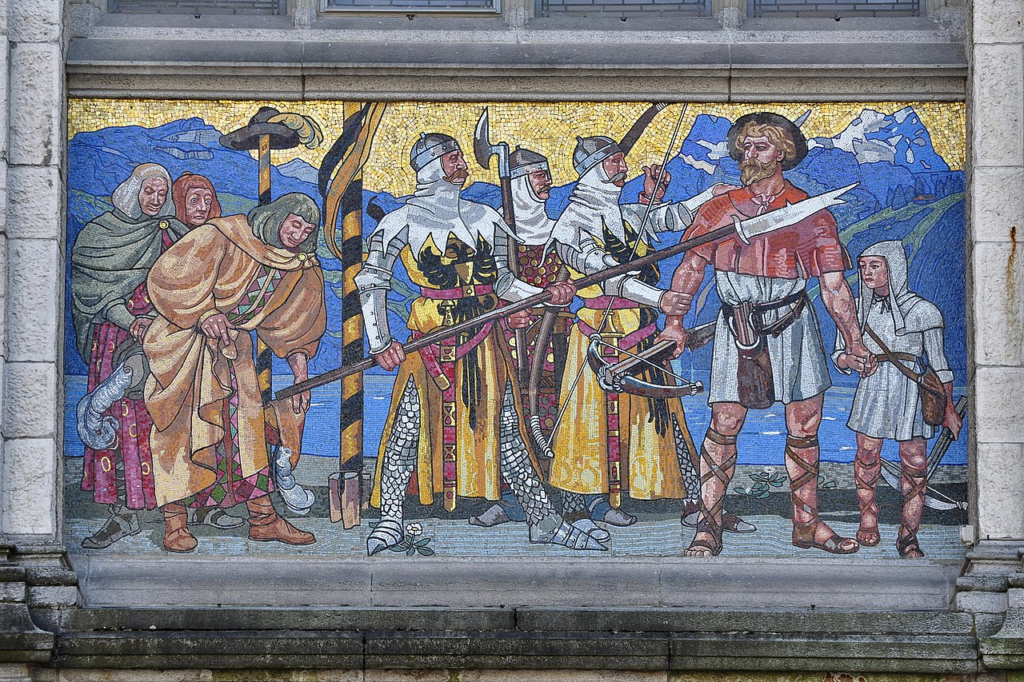
Above: Swiss fictional folk hero William (Wilhelm) Tell arrested for not saluting Albrecht Gessler’s hat, Altdorf, Switzerland (Schweiz)

Above: A performance of the opera Norma
“The Sultan, enjoying himself thoroughly, even ordered a water pipe during the concert, causing an amusing atmosphere as he continued to smoke loudly.
Liszt, unaccustomed to the smoke, adjusted his performance, an act that reportedly delighted the Sultan.”

Above: A painting of a Bengali Muslim woman in muslin, relaxing while smoking hookah
“On his next palace visit, the Sultan presented Liszt with a diamond-studded snuffbox, which was seen as a high compliment.”
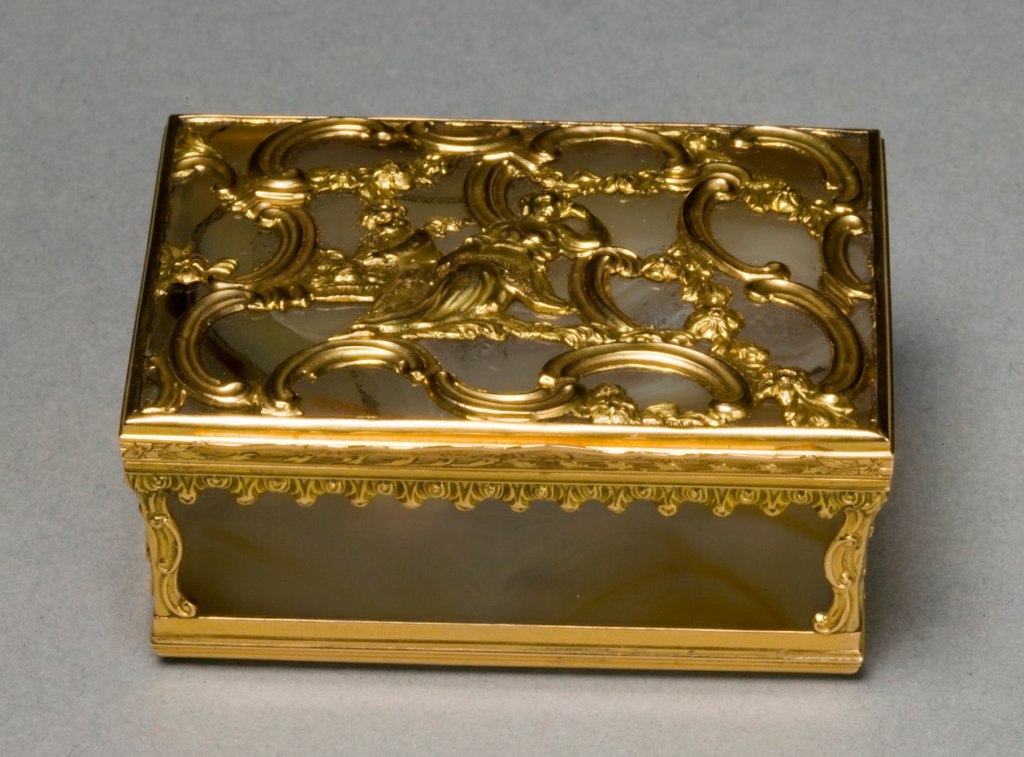
The same story appeared, without the humor, in La Revue et Gazette Musicale de Paris (1827 – 1880) on 11 July 1847.

Reflecting on the experience, Liszt wrote from Galati on 18 July that he was touched by the Sultan’s kindness, mentioning the gifts, a payment of a hundred Louis and the Nişan-ı İftihar (Badge of Honor) with diamonds.
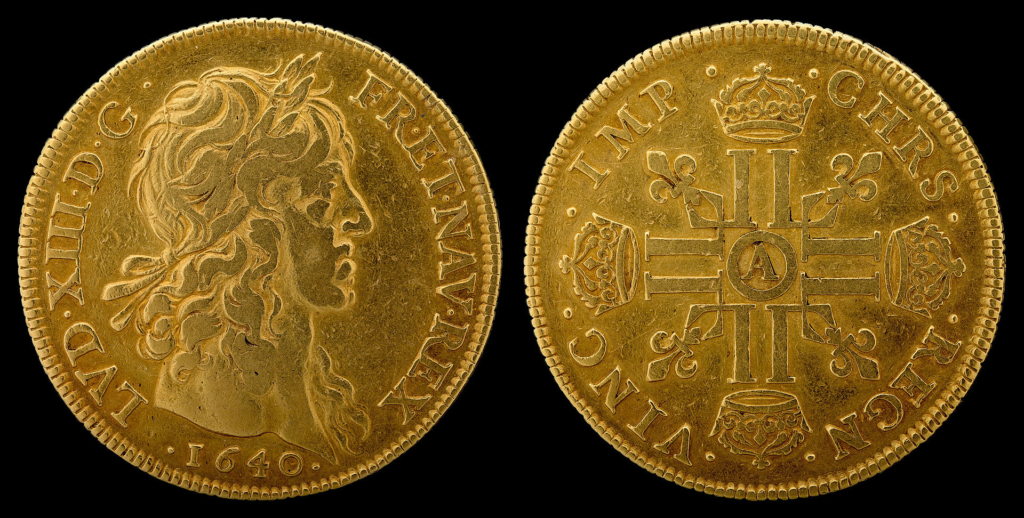
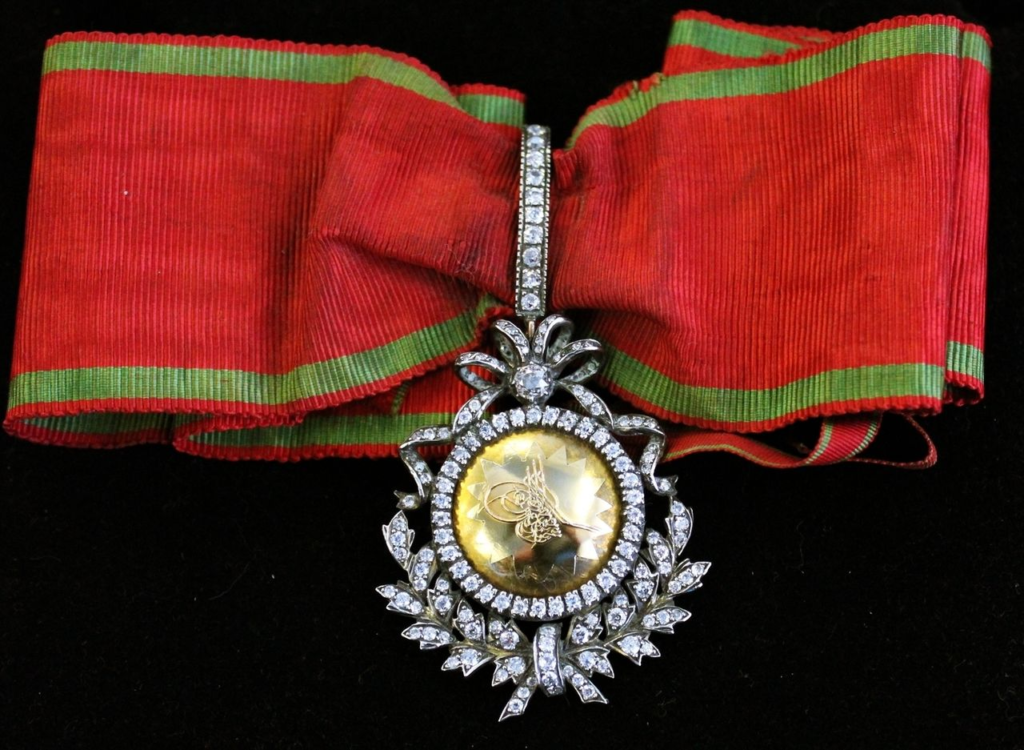
Liszt added that he was surprised at how much the Sultan knew about his fame.
Liszt also performed a benefit concert, on 18 June, at the Franchini Mansion in Büyükdere.

Advertised in Turkish newspapers, this matinee concert featured works by Gaetano Donizetti, Bellini, Chopin, and Schubert, showcasing Liszt’s virtuosity and his well-known transcriptions of popular operatic themes.
Tickets were sold for 100 kuruş at Hotel de l’Europe and at the concert entrance.
According to Gazimihal, these pieces were selected to highlight Liszt’s technical skills.
Operas like Lucia di Lammermoor and Norma, which were popular at Istanbul’s Naum Theatre, were included in the program.
His final piece, Hexameron, offered a rhapsodic flair.

Above: Naum Theater, Istanbul, Türkiye
Liszt performed at several private and public venues, including Fethi Pasha Mansion and the Russian Embassy in Pera.

Above: Fethi Pasha Mansion, Istanbul

On 28 June, Liszt gave a concert for the Association Commerciale-Artisane de Pierre, which expressed their gratitude in a letter preserved in Weimar archives.
During this performance, Liszt gazed out the window at Istanbul’s panorama.
He became captivated by the idea of simultaneously viewing the East and West.
Enthralled, he thought he saw Mount Olympus, today’s Uludağ (The Great Mountain) in Bursa, which can indeed be seen from Istanbul on clear days, creating a poetic resonance for the musician amidst the city’s cultural crosscurrents.

Above: Franz Liszt performed at the Narmanlı Han, then the Russian Embassy in Pera in 1847.
This historic building, built in 1831, served as the Russian Embassy in Istanbul until 1880, after which it became a Russian prison until 1914, reflecting the diverse cultural encounters of 19th-century Istanbul, where Liszt’s music brought East and West together in a memorable concert.

Above: Aerial view of Uludağ
Said Naum-Duhani (1892 – 1970), a prominent figure in early 20th-century Istanbul, known for his contributions to literature and his deep connection to the city’s cultural heritage, provides details about the house where Franz Liszt stayed during his visit to Istanbul:
“The renowned piano maker M. Alexander Kommendinger lived at Number 19 (according to the Hungarian Memories in Turkey website, Number 11) Nuri Ziya Street, Beyoğlu, where Franz Liszt stayed as a guest of the Kommendinger family.
The great composer had the honor of performing for the Sultan at the palace.
On 18 June 1847, he also played at the Franchini Mansion in Büyükdere.”
Dühani adds that the room Liszt occupied (on what was then Polish Street) is now used by B.D. Demarchi, the current owner and a descendant of the Kommendinger family.
He laments:
“It is a pity that there is no plaque indicating Liszt’s stay in Istanbul.
This void should certainly be addressed by friends of art and music.”
The house where Liszt resided does not exist today.
However, a commemorative plaque by sculptor Miklós Borsos marks the location, honoring Liszt’s stay.
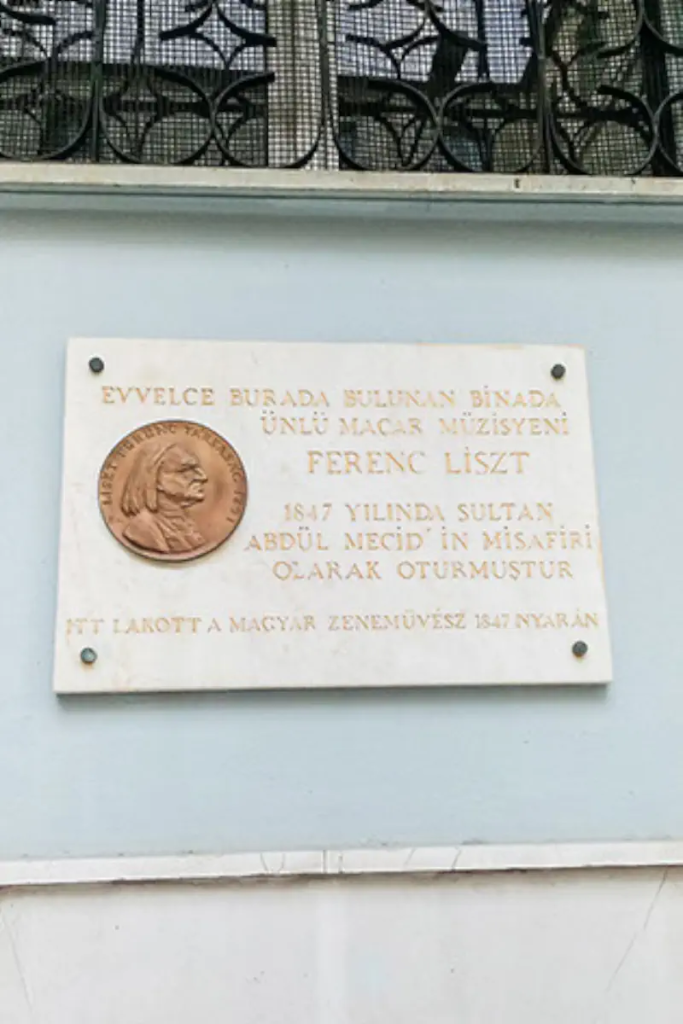
Above: The commemorative plaque reads:
“The famous Hungarian musician Franz Liszt stayed in the building formerly located here as a guest of Sultan Abdülmecid in 1847.”
Before Franz Liszt’s arrival in Istanbul, a special Érard piano – one of the finest brands of the time – was ordered for him from Paris.
The task of arranging and overseeing the delivery fell to Giuseppe Donizetti.

Donizetti managed all official correspondence related to the piano, including a letter from Pierre Érard (1794 – 1855), the piano and harp maker at the head of the Érard pianos after his uncle Sébastien Érard, the founder of the company) detailing its features, which was published in the Journal de Constantinople.
Donizetti’s journal, titled Giornale e Memorie Diverse di Giuseppe (Journal and Various Memoirs of Giuseppe), now housed in the Topkapi Palace Museum Archives, contains extensive documentation of the piano’s procurement.
Four letters – dated 7 November, 18 November, 17 December 1846, and 10 February 1847 – provide intricate details on the piano’s specifications, including its size, string count, and octave range.
During a visit to Paris, Donizetti’s son Andrea even went to the Érard factory to inspect the instrument.
According to the final letter, dated 10 February 1847, the piano was purchased for 4,000 francs.
Initially, the piano was kept at Donizetti’s residence, but was later moved to the Çırağan Palace in anticipation of Liszt’s arrival.
In a letter to Pierre Érard dated 5 August 1847, Liszt expressed his appreciation:
“While waiting in quarantine at Galati, I read about the preparations for me in the Ottoman capital in the “Journal de Constantinople”.
The piano I played was truly powerful and exceptional.
Thank you for sending such a high-quality instrument.”
Liszt played this piano at the Çırağan Palace.
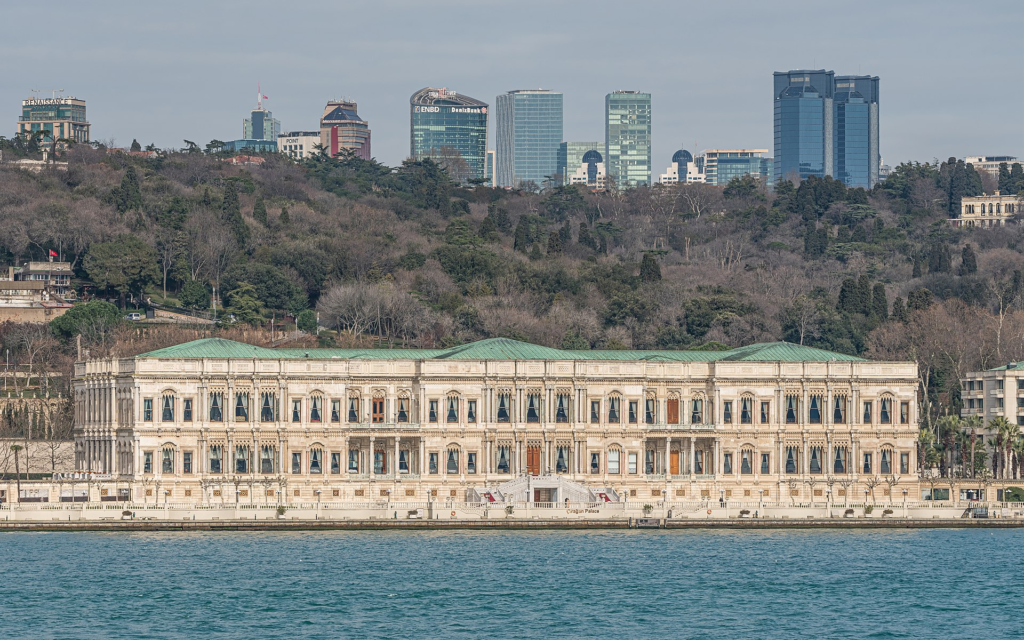
Above: Çırağan Palace, Istanbul
Shortly before Liszt left Istanbul, the instrument was sold to a young Turkish man for 160 lira as a gift for his fiancée.
Liszt, reflecting on this unique event, wrote:
“C’est un sort tout à fait romantique que celui de cet instrument, et il faut avouer qu’il le mérite bien par ses qualités classiques.”
(“The piano deserved this romantic destiny.”)

Above: Topkapı Palace, Istanbul
Giuseppe Donizetti was not only instrumental in organizing Franz Liszt’s visit to Istanbul-handling everything from his invitation to the arrangement of a special Érard piano – but was also a constant companion during Liszt’s stay.
Donizetti personally welcomed him upon his arrival and escorted him to the Çırağan Palace to meet Sultan Abdülmecid.
During his time in Istanbul, Liszt was hosted by Donizetti and, upon request, received copies of two marches Donizetti had composed for the Sultan.
In a letter to his son Andrea dated 9 June 1847, Donizetti wrote:
“Liszt was in my house.
He has just left.
He wanted the sheet music for the two marches I composed for the Sultan, saying he intended to play them in a variation.”
Liszt later transformed Donizetti’s Mecidiye March into a concert piece titled Grande Paraphrase de la Marche de Giuseppe Donizetti, Op. 87, which he performed for Sultan Abdülmecid.
The date of composition is 14-15 June 1847, at Büyükdere during his concerts in Istanbul.
This work was subsequently published by Schlesinger Publishing House, capturing a piece of his remarkable Istanbul experience in music.
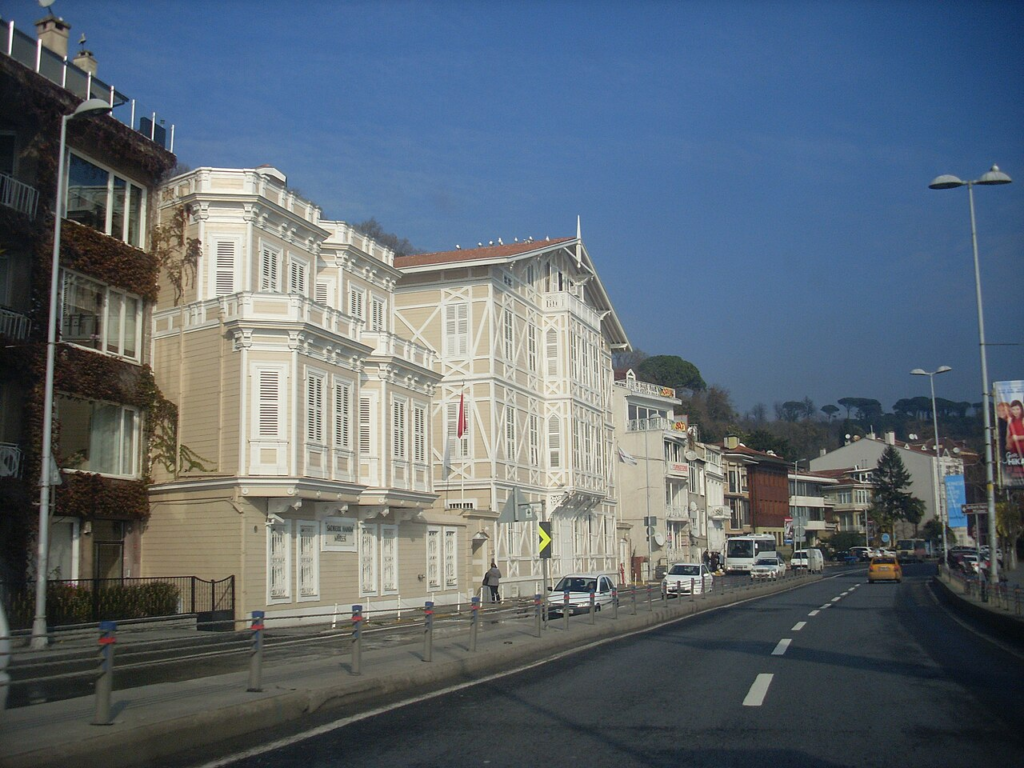
Above: Sadberk Hanım Müzesi, Büyükdere, Istanbul
Giuseppe Donizetti, known as Donizetti Pasha, was an influential Italian musician and conductor born on 6 November 1788, in Bergamo, Italy, and died on 12 February 1856, in Istanbul.
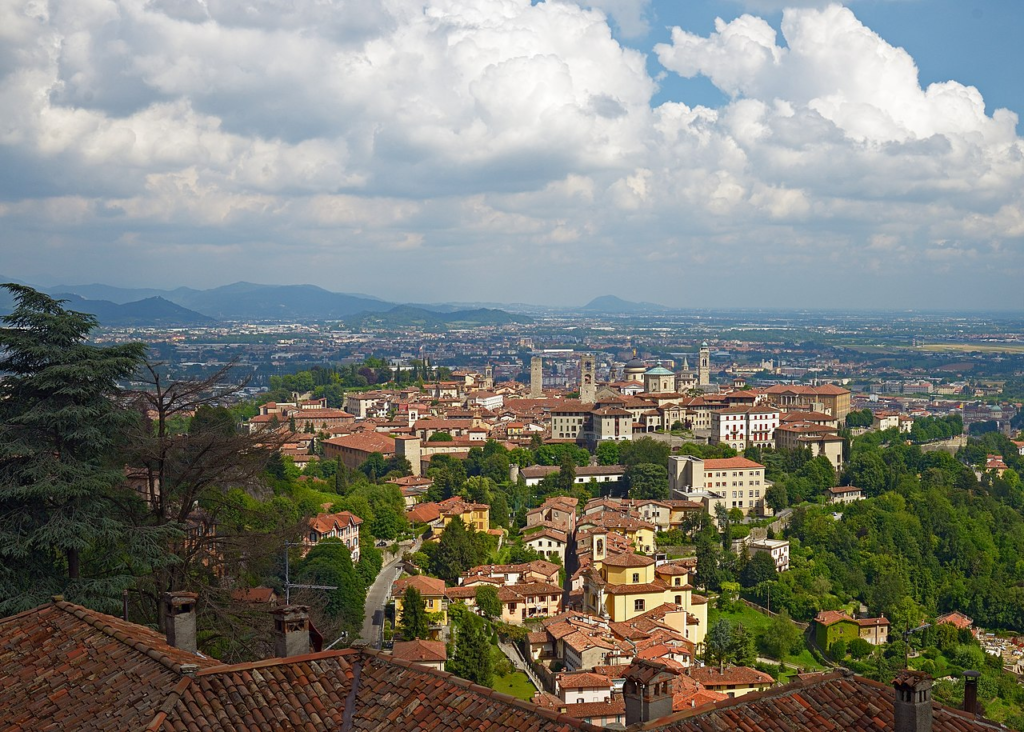
Above: Bergamo, Italia
Donizetti was instrumental in introducing Western music to the Ottoman Empire in the 19th century.
He significantly contributed to the development of the Empire’s first Western-style military band, known as the Mûsikâ-i Hümâyûn, now the Presidential Symphony Orchestra.
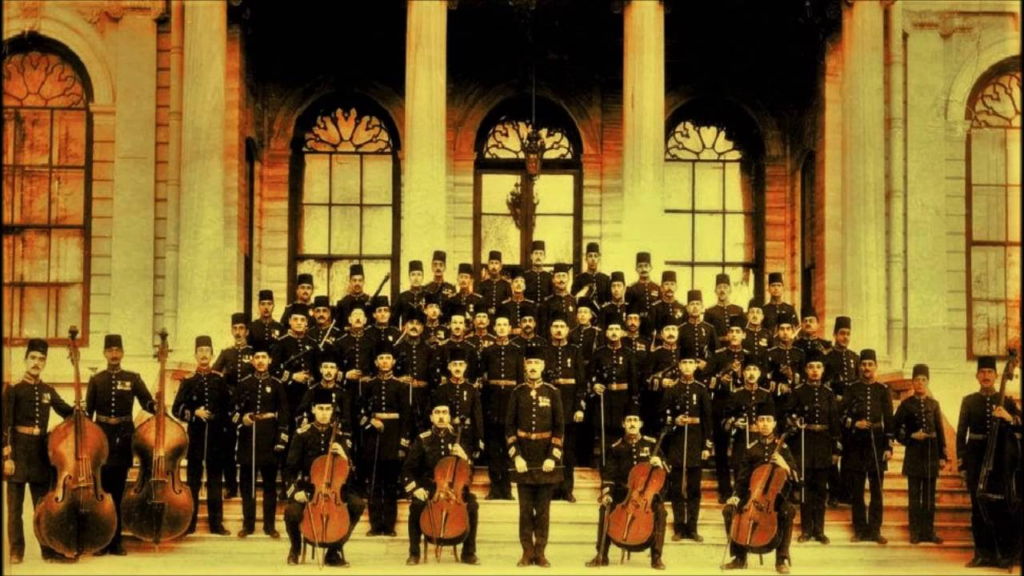
Over his 28 years of service to the Ottoman State, he held the rank of “Pasha”, a title awarded to him in recognition of his contributions.
Appointed by Sultan Mahmud II in 1828, Donizetti arrived in Istanbul to lead the newly established military band as part of Mahmud’s reforms, which aimed to modernize the Ottoman military and cultural practices in line with European standards.
Under Mahmud’s orders, Donizetti created a sophisticated military band using Western musical instruments he brought from Italy, quickly organizing a performance for the Sultan within his first month in Istanbul.
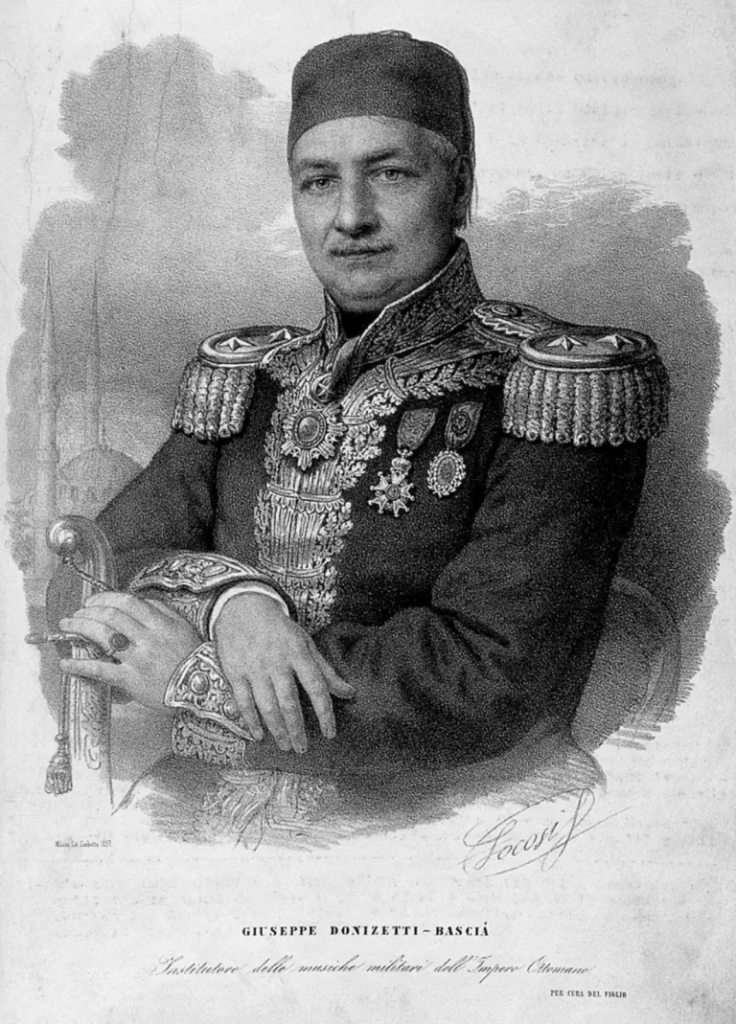
Above: Giuseppe Donizetti (Donizetti Pasha), older brother of the famous opera composer Gaetano Donizetti
He also composed official marches for the Ottoman rulers, including the “Mahmudiye March” for Mahmud II and the “Mecidiye March” for Mahmud’s successor, Sultan Abdülmecid, which were used as the official anthems of the Ottoman Empire.
These compositions symbolized the increasing integration of Western musical forms within Ottoman state culture.
Donizetti’s influence went beyond military bands.
He adapted several pieces from Turkish music to Western classical standards, adding polyphonic elements and composing works that included traditional Turkish motifs.
He also taught music to members of the Ottoman court, including Sultan Abdülmecid.
He mentored Turkish musicians who later contributed to the country’s musical evolution.
His efforts were recognized with honors such as the Ottoman “Order of Honor” from Mahmud II, the “Order of the Medjidie” from Abdülmecid, and France’s prestigious “Légion d’honneur”.
Donizetti supported annual Italian opera performances in Pera (now Beyoğlu) and hosted leading European musicians, including Franz Liszt, who composed a tribute march for Sultan Abdülmecid after his visit to Istanbul.
Donizetti’s impact on Ottoman music was significant, leaving a legacy of cultural exchange and modernization that shaped the Empire’s music scene well into the 19th century.

Above: Coat of arms of the Ottoman Empire (1299 – 1922)
(I wonder if Liszt visited Eskişehir….
I doubt it, but it is nice to imagine he might have…)
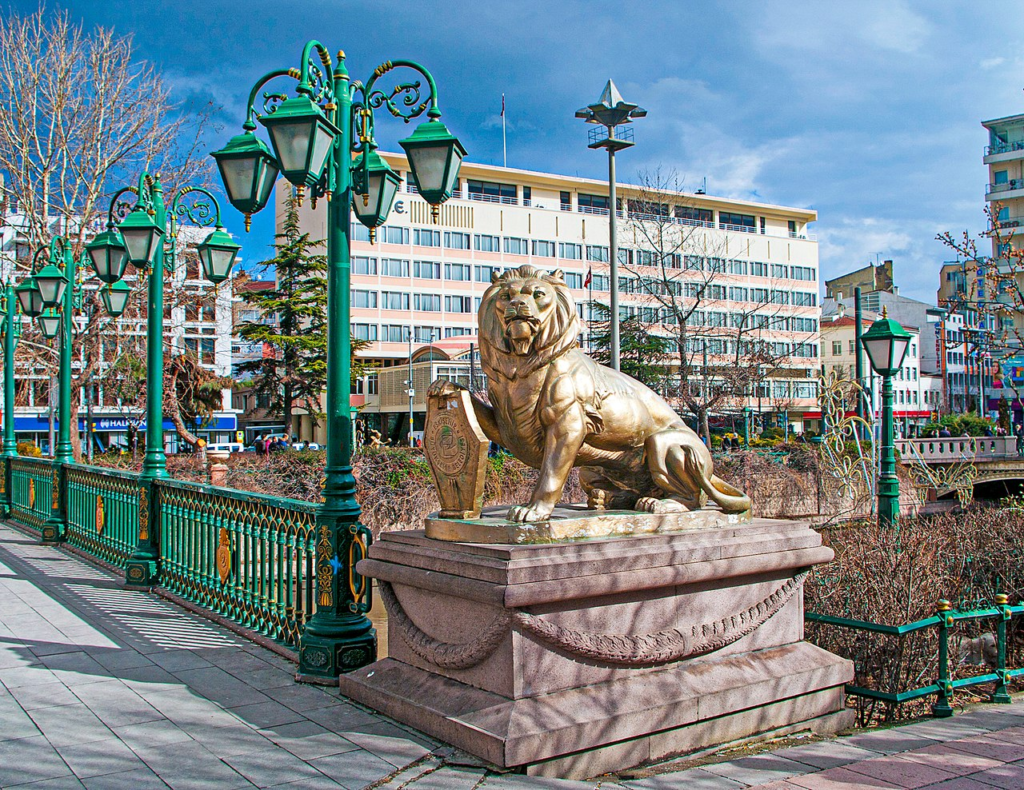
Above: Lion statue at Köprübaşı in Eskişehir, Türkiye
By retiring from the concert platform at the age of 35, while still at the height of his powers, Liszt succeeded in keeping the legend of his playing untarnished.

Above: Franz Liszt
In July 1848, Liszt settled in Weimar, where he had been appointed the honorary title of “Kapellmeister Extraordinaire” six years previously.
He acted as the official court Kapellmeister at the expense of Grand Duchess Maria Pavlovna of Russia until 1859, jointly with Hippolyte André Jean Baptiste Chélard until his retirement in 1852.

Above: Grand Duchess Maria Pavlovna of Russia (1786 – 1859)

Above: French composer André Hippolyte Chélard (1789 – 1861)
During this period, Liszt acted as conductor at court concerts and on special occasions at the theatre, arranged several festivals celebrating the work of Berlioz and Wagner, and produced the premiere of Lohengrin.
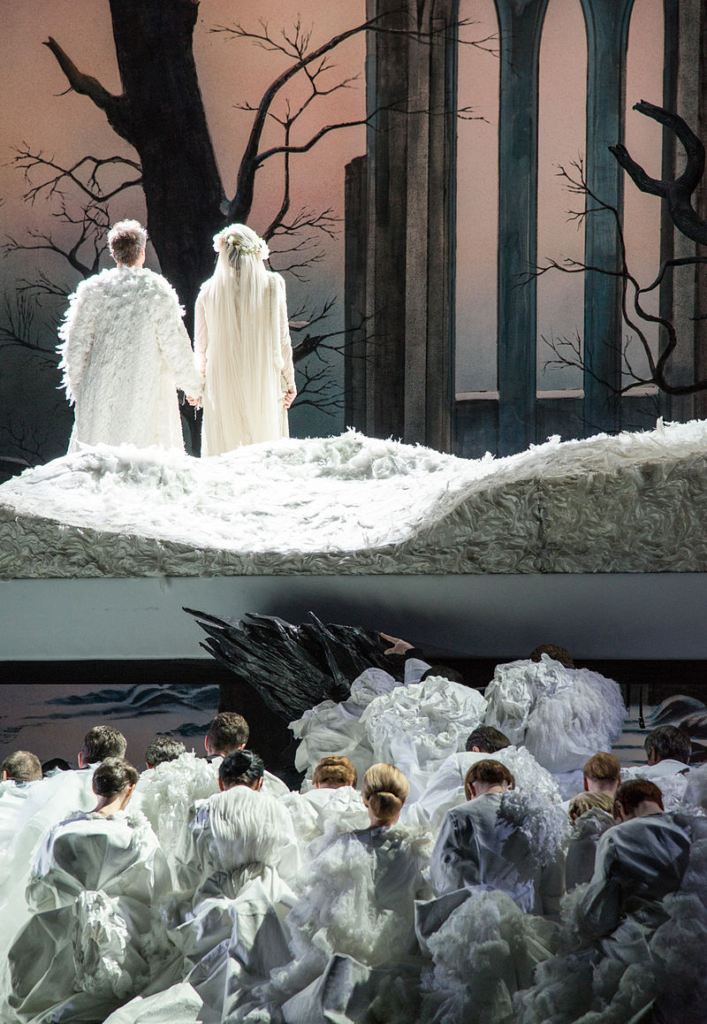
Above: Lohengrin, Oslo Opera, Norway (Norge)
Liszt gave lessons to a number of pianists, including the great virtuoso Hans von Bülow, who married Liszt’s daughter Cosima in 1857 (she would later marry Wagner).
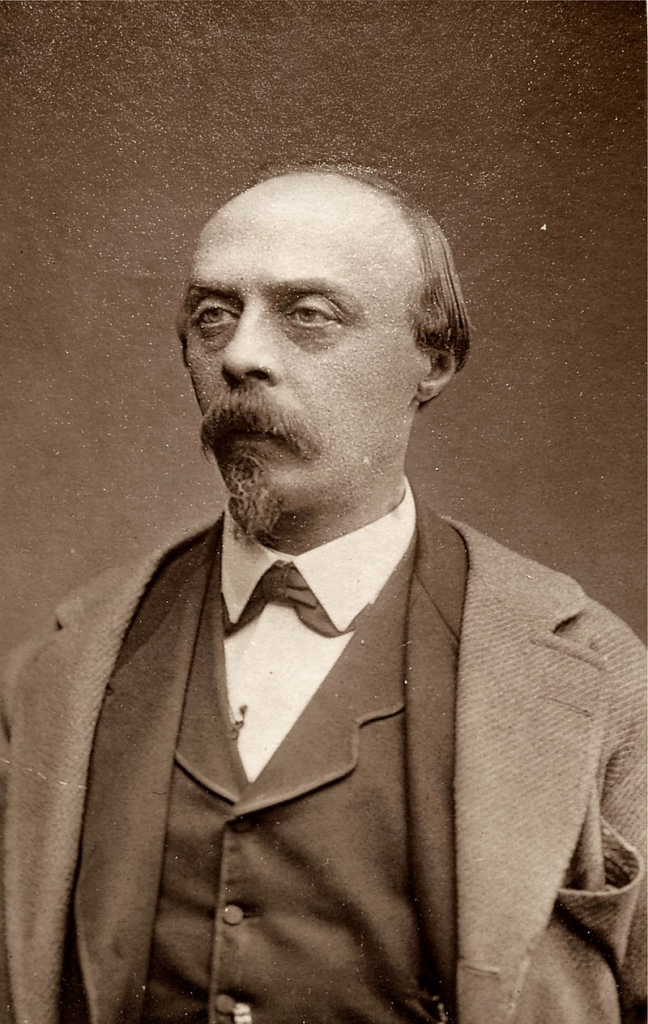
Above: German conductor Hans von Bülow (1830 – 1894)
Liszt’s work during this period made Weimar a nexus for modern music.
As Kapellmeister, Liszt was required to submit every programme to the Court Intendant for prior approval.
This did not cause large problems until the appointment of Franz von Dingelstedt in 1857, who reduced the number of music productions, rejected Liszt’s choices of repertoire, and even organized a demonstration against Liszt’s 1858 premiere of Der Barbier von Bagdad.

Above: German poet, dramatist and theatre administrator Franz von Dingelstedt (1814 – 1881)
Faced with this opposition, Liszt resigned in 1858.
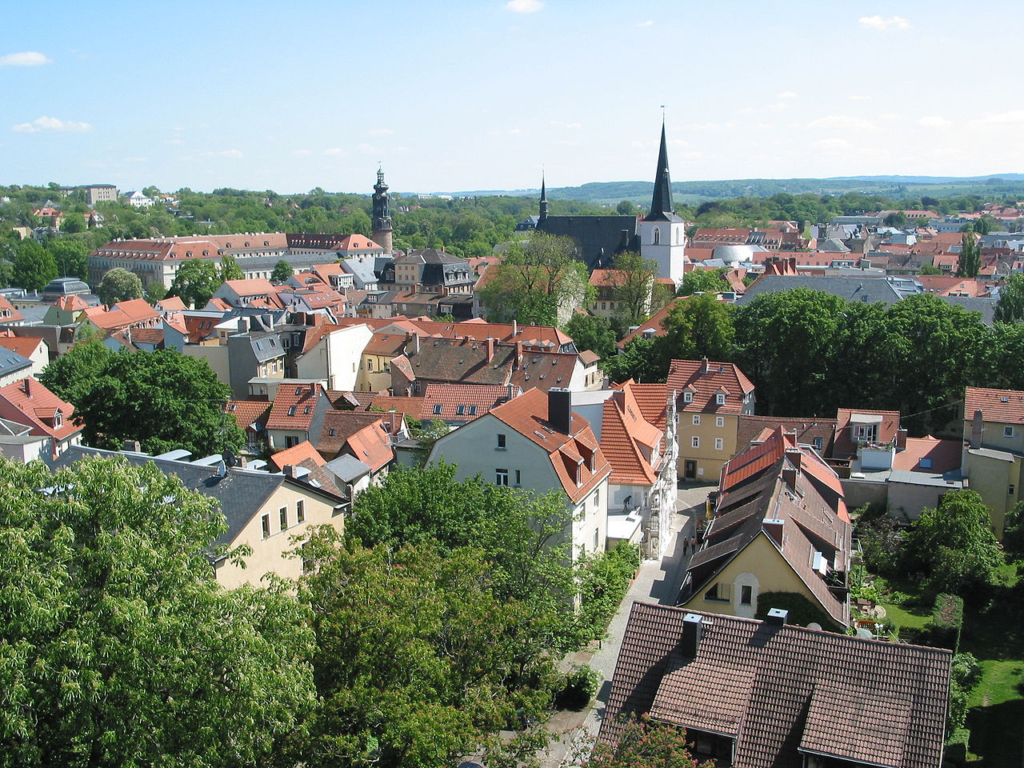
Above: Weimar, Deutschland
At first, after arriving in Weimar, Princess Carolyne lived apart from Liszt, in order to avoid suspicions of impropriety.
She wished eventually to marry Liszt, but since her husband, Russian military officer Prince Nicholas von Sayn-Wittgenstein, was still alive, she had to convince the Roman Catholic authorities that her marriage to him had been invalid.
Her appeal to the Archbishop of St Petersburg for an annulment, lodged before leaving Russia, was ultimately unsuccessful.
The couple abandoned pretense.
They began to live together in the autumn of 1848.
Nicholas was aware that the couple’s marriage had effectively ended.
Carolyne and Nicholas reached an agreement to annul in 1850, whereby the Prince would receive some of Carolyne’s estates.
However, this arrangement was struck down in 1851 by the consistory court of Zhytomyr.
Throughout the decade, the couple would continue to negotiate through the complex situation.

Above: Carolyne and her daughter Marie
In 1859, Franz Brendel coined the name “New German School” in his publication Neue Zeitschrift für Musik, to refer to the musicians associated with Liszt while he was in Weimar.

Above: German music critic Franz Brendel (1811 – 1868)
The most prominent members other than Liszt were Wagner and Berlioz (although Wagner rejected the label).
The School was a loose confederation of progressive composers, mainly grouped together as a challenge to supposed conservatives, and so the term is considered to be of limited use in describing a particular movement or set of unified principles.
What commonalities the composers had were around the development of programmatic music, harmonic experimentation, wide-ranging modulation and formal innovations such as the use of leitmotifs and thematic transformation.

Above: Franz Liszt
The disagreements between the two factions is often described as the “War of the Romantics“.
The “war” was largely carried out through articles, essays and reviews.
Each side claimed Beethoven as its predecessor.
A number of festivals were arranged to showcase the music of the New German School, notably in Leipzig in 1859 and Weimar in 1861.
The Allgemeine Deutsche Musikverein, intrinsically linked to the School, was founded at this time, with Liszt becoming its honorary president in 1873.
However, as most of Liszt’s work from the 1860s and 1870s received little attention, and Brendel and Berlioz died in the late 1860s, the focus of the progressive movement in music moved to Bayreuth with Wagner in the 1870s, who definitively moved on from the School and the Neue Zeitschrift.

After a visit to Rome and an audience with Pope Pius IX in 1860, Carolyne finally secured an annulment.
It was planned that she and Liszt would marry in Rome, on 22 October 1861, Liszt’s 50th birthday.
Liszt arrived in Rome on 21 October, but a Vatican official had arrived the previous day in order to stop the marriage.

Above: Pope Pius IX (né Giovanni Maria Mastai Ferretti)(1792 – 1878)
This was a result of the machinations of Cardinal Hohenlohe, who wanted to protect a complex inheritance agreement brokered by Tsar Alexander II.
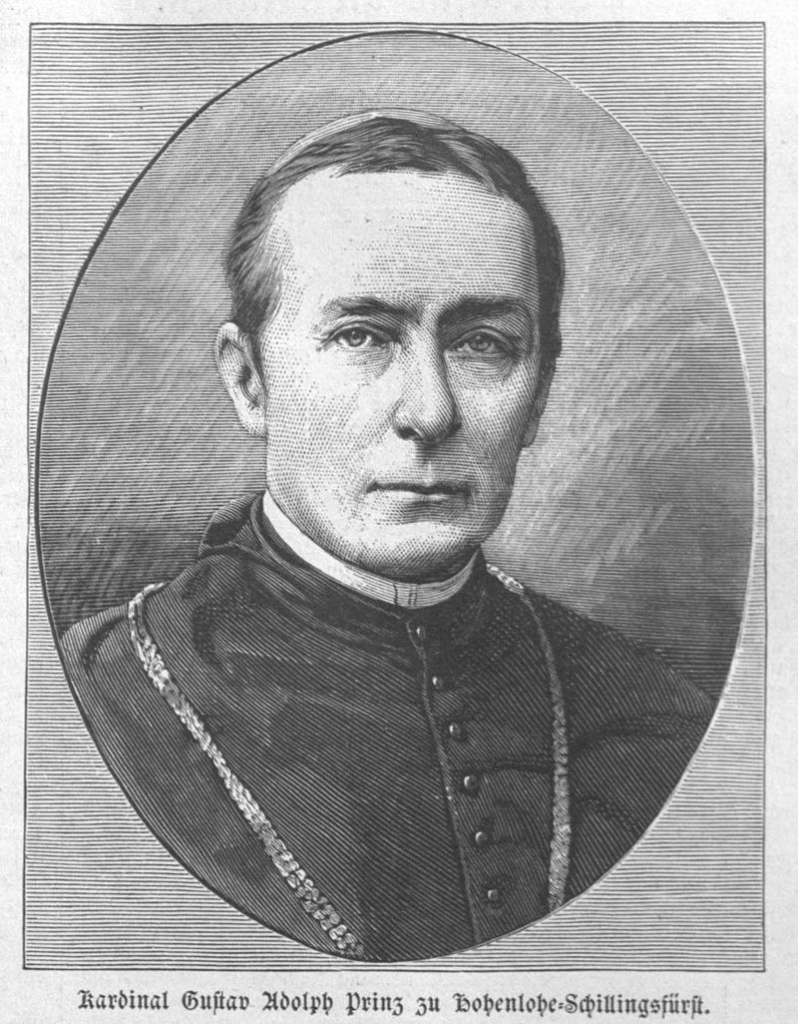
Above: Cardinal Gustav Adolf (1823 – 1896)
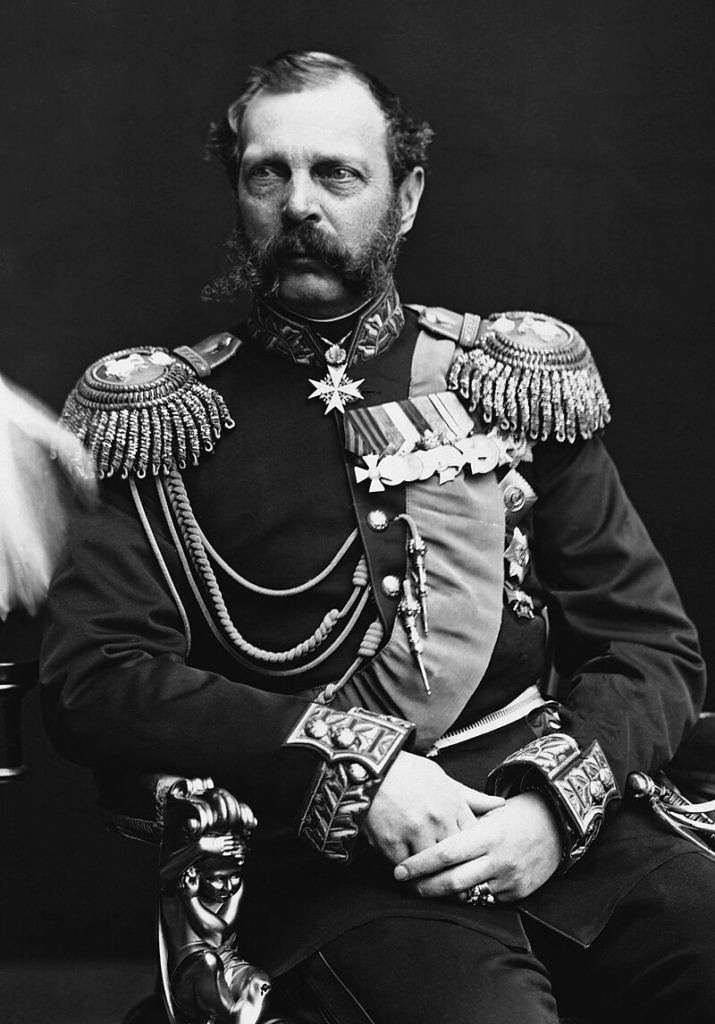
Above: Russian Czar Alexander II (1818 – 1881)
Carolyne subsequently gave up all attempts to marry Liszt, even after her husband’s death in 1864.
She became a recluse, working for the rest of her life on a long work critical of the Catholic Church.

Above: St. Peter’s Basilica, Vatican City – the largest Catholic church building in the world
The 1860s were a period of great sadness in Liszt’s private life.
On 13 December 1859, he lost his 20-year-old son Daniel to an unknown illness.
On 11 September 1862, his 26-year-old daughter Blandine also died, having contracted sepsis after surgery on a breast growth which developed shortly after giving birth to a son she named in memory of Daniel.
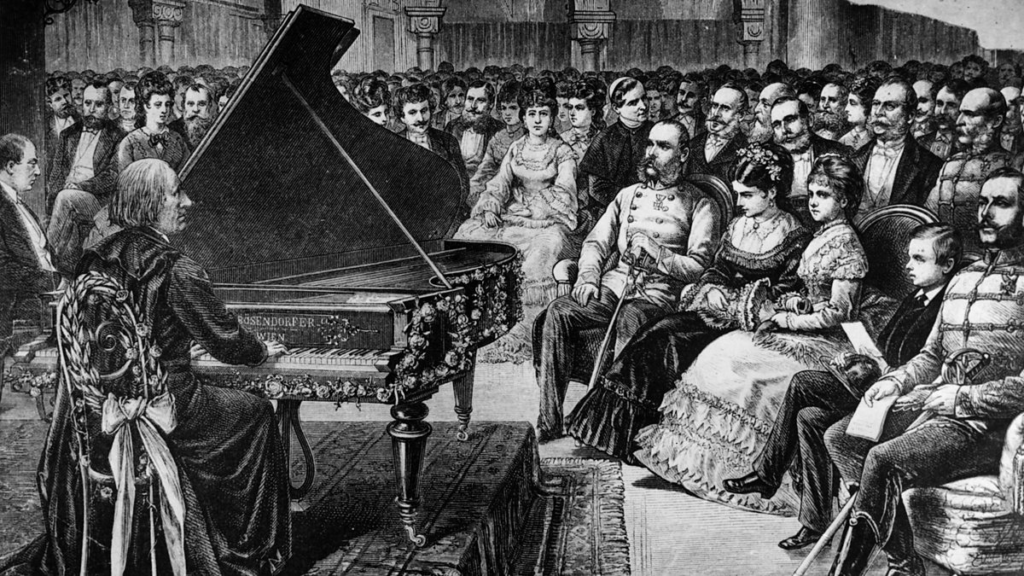
In letters to friends, Liszt announced that he would retreat to a solitary living.
He moved to the monastery Madonna del Rosario, just outside Rome, where on 20 June 1863 he took up quarters in a small, spartan apartment.
He had a piano in his cell.
He continued to compose.

Above: Madonna del Rosario, Roma, Italia
He had already joined the Third Order of Saint Francis previously, on 23 June 1857.
On 25 April 1865, he received the tonsure at the hands of Cardinal Hohenlohe, who had previously worked against Carolyne’s efforts to secure an annulment.
The two men became close friends.
On 31 July 1865, Liszt received the four minor orders of porter, lector, exorcist and acolyte.
After this ordination he was often called “Abbé Liszt“.
On 14 August 1879, he was made an honorary canon of Albano.
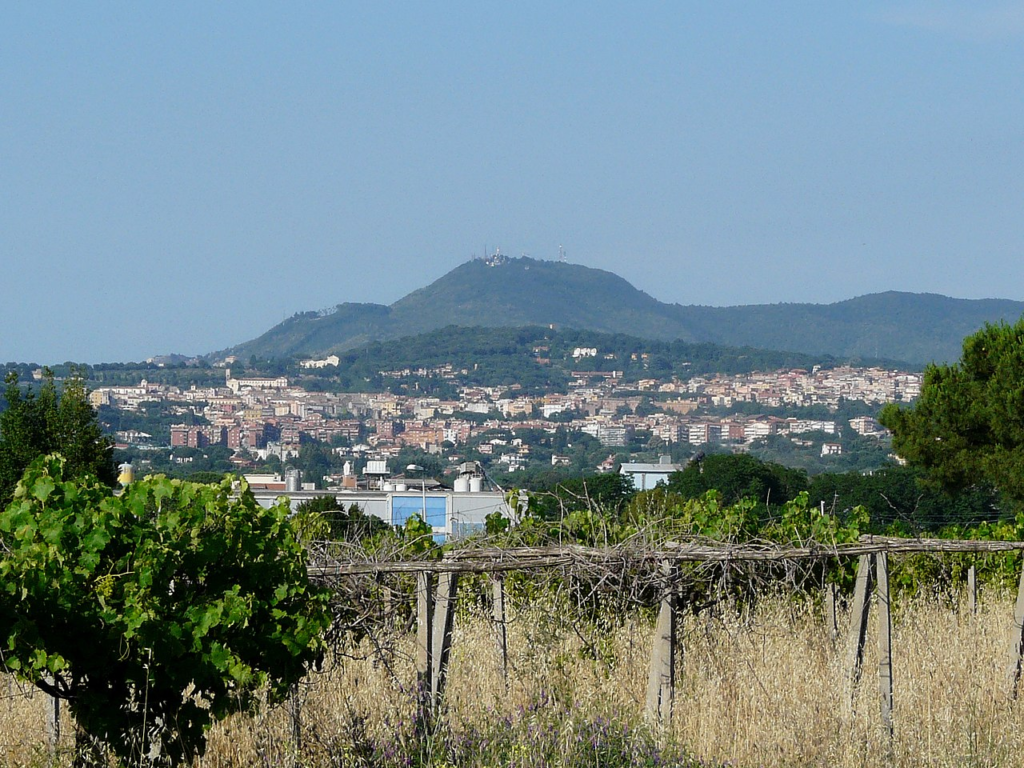
Above: Albano Laziale, Roma, Italia
In 1867, Liszt was commissioned to write a piece for the coronation ceremony of Franz Joseph and Elisabeth of Bavaria.
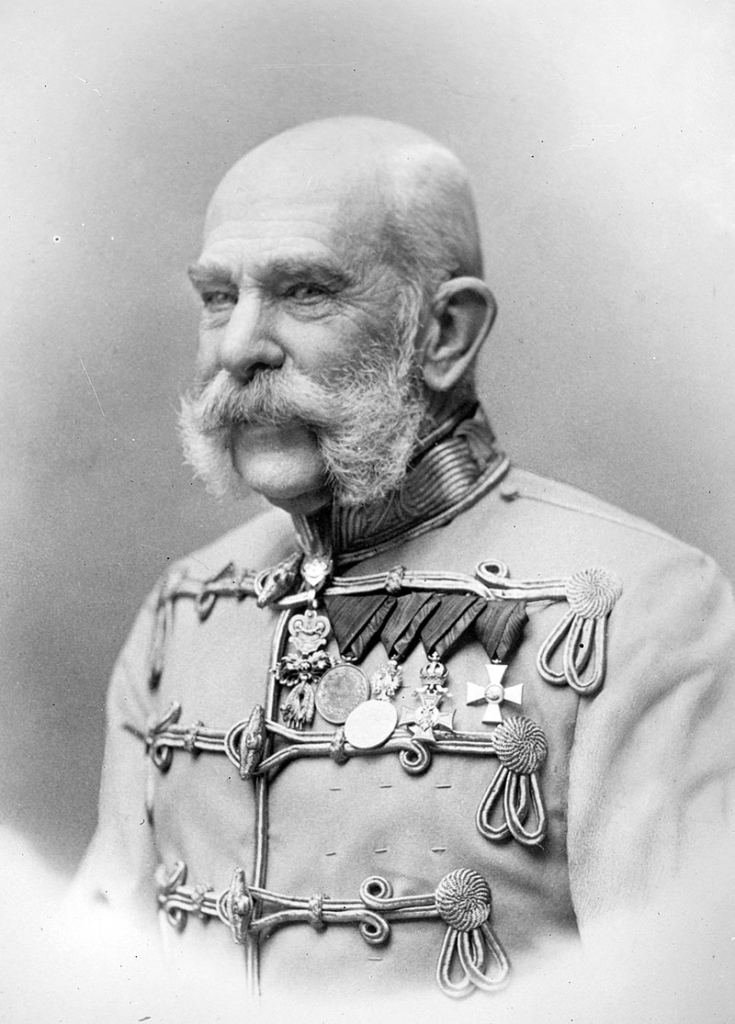
Above: Austrian Emperor Franz Josef (1830 – 1916)
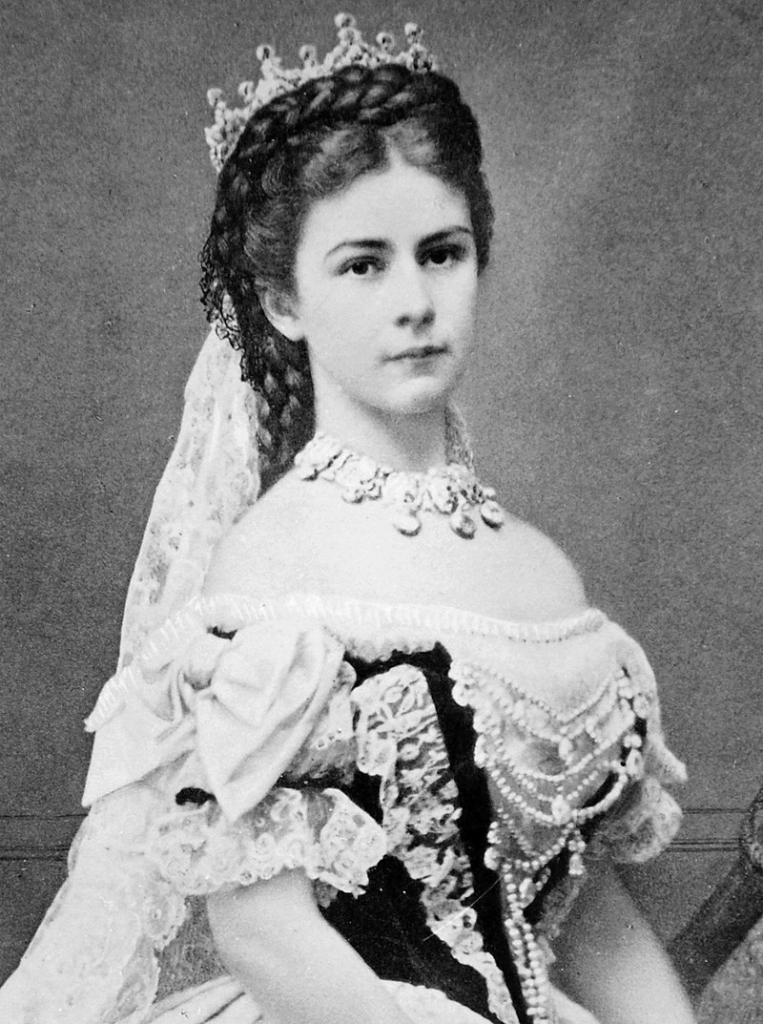
Above: Austrian Empress Elizabeth (1837 – 1898), nicknamed “Sissi“
Liszt travelled to Budapest to conduct it.

Above: Parliament, Budapest, Hungary
The Hungarian Coronation Mass was performed on 8 June 1867, at the coronation ceremony in the Matthias Church, by Buda Castle, in a six-section form.

Above: Mathias Church, Budapest
After the first performance, the Offertory was added and, two years later, the Gradual.
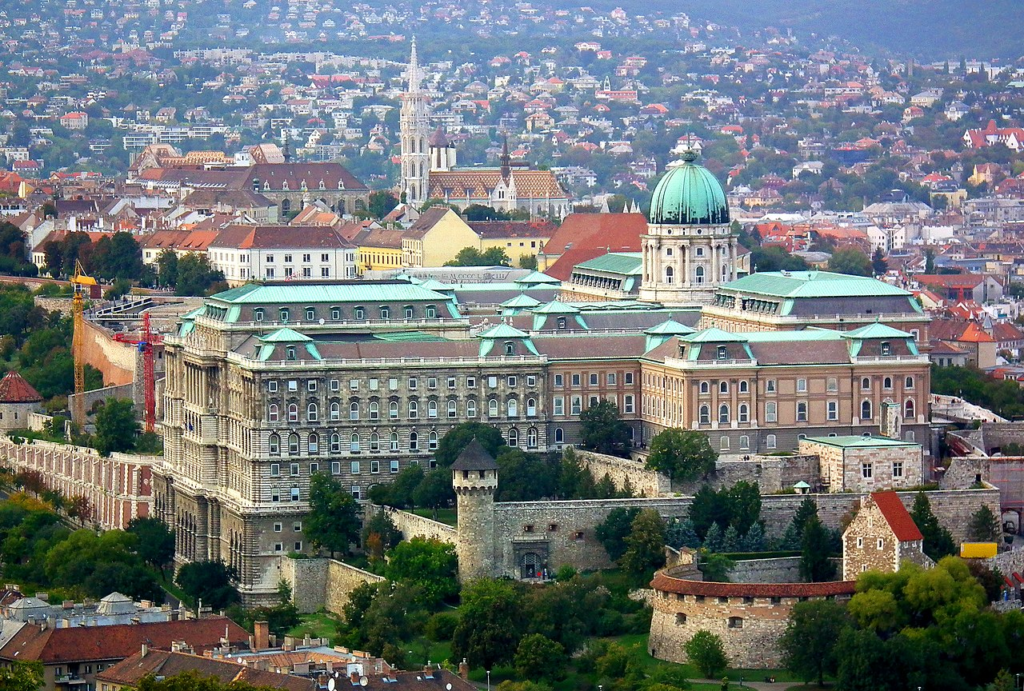
Above: Buda Castle, Budapest
Grand Duke Karl Alexander had been attempting to arrange Liszt’s return to Weimar ever since he had left.
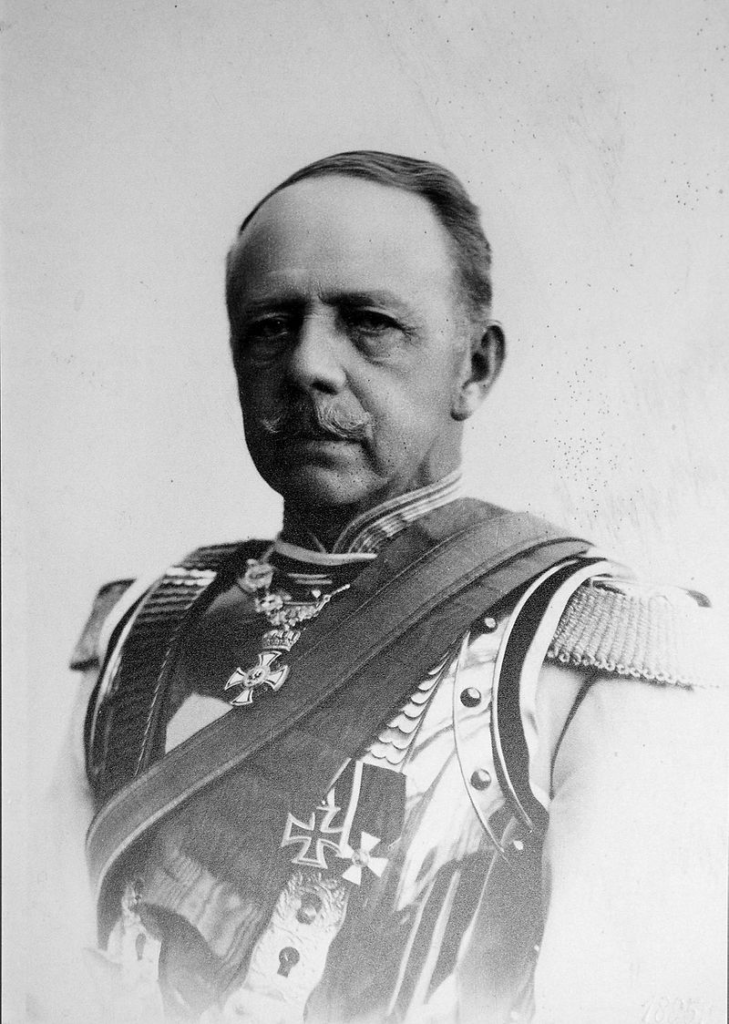
Above: Grand Duke Karl Alexander (1818 – 1901)
In January 1869, Liszt agreed to a residency to give master classes in piano playing.
A master class is a class given to students of a particular discipline by an expert of that discipline — usually music, but also science, painting, drama, games, or on any other occasion where skills are being developed.
“Masterclass” is also used in a figurative sense to describe a display of great skill in a context where education was not the primary intention; e.g., “his last few laps were a masterclass in overtaking” (referencing a race around a track).
The difference between a normal class and a master class is typically the setup.
In a master class, all the students (and often spectators) watch and listen as the master takes one student at a time.
The student (typically intermediate or advanced, depending on the status of the master) usually performs a single piece which they have prepared.
The master will give them advice on how to play it, often including anecdotes about the composer, demonstrations of how to play certain passages, and admonitions of common technical errors.
The student is then usually expected to play the piece again, in light of the master’s comments.
The student may be asked to play a passage repeatedly to attain perfection.
Master classes for musical instruments tend to focus on the finer details of attack, tone, phrasing and overall shape.
The student is expected to have complete control of more basic elements such as rhythm and pitch.
The value of the master class setup is that all students can benefit from the master’s comments on each piece.

Liszt was based in the Hofgärtnerei (court gardener’s house), where he taught for the next 17 years.
From 1872 until the end of his life, Liszt made regular journeys between Rome, Weimar and Budapest, continuing what he called his vie trifurquée (“tripartite existence“).
(In Christian theology, the tripartite view (trichotomy) holds that humankind is a composite of three distinct components: body, spirit, and soul.
It is in contrast to the bipartite view (dichotomy), where soul and spirit are taken as different terms for the same entity (the spiritual soul). )

It is estimated that Liszt travelled at least 4,000 miles a year during this period in his life – an exceptional figure given his advancing age and the rigors of road and rail in the 1870s.

Liszt’s time in Budapest was the result of efforts from the Hungarian government in attracting him to work there.
The plan of the foundation of the Royal Academy of Music was agreed upon by the Hungarian Parliament in 1873.
In March 1875, Liszt was nominated its President.
The Academy was officially opened on 14 November 1875 with Liszt’s colleague Ferenc Erkel as Director and Kornél Ábrányi and Robert Volkmann on the staff.
Liszt himself only arrived to deliver lessons in March 1876.
From 1881, when in Budapest he would stay in an apartment in the Academy, where he taught pupils in much the same way as he did in Weimar.
In 1925, the institution was renamed in honour of Liszt.
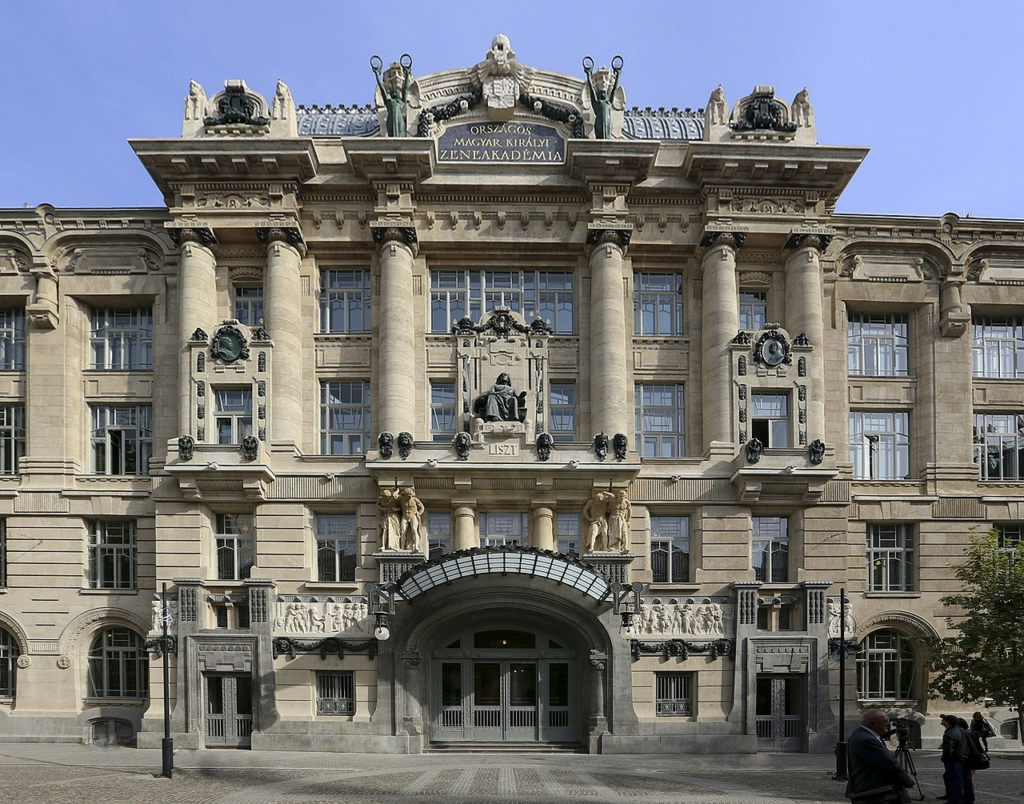
Above: Liszt Ferenc Academy of Music in Budapest
Liszt fell down a flight of stairs at the Hofgärtnerei in July 1881.
He remained bedridden for several weeks after this accident.
He had been in good health up to that point, but a number of ailments subsequently manifested, such as a cataract in the left eye, dental issues and fatigue.
Since around 1877, he had become increasingly plagued by feelings of desolation, despair and preoccupation with death — feelings that he expressed in his works from this period.
As he told Lina Ramann:
“I carry a deep sadness of the heart which must now and then break out in sound.“

Above: German writer Lina Ramann (1833 – 1912)
On 13 January 1886, while Claude Debussy was staying at the Villa Medici in Rome, Liszt met him there with Paul Vidal and Ernest Hébert, Director of the French Academy.

Above: French composer Paul Vidal (1863 – 1931)

Above: French painter Ernest Hébert (1817 – 1908)
Liszt played “Au bord d’une source” from Années de pèlerinage, as well as his arrangement of Schubert’s Ave Maria for the musicians.
Debussy in later years described Liszt’s pedalling as “like a form of breathing.”
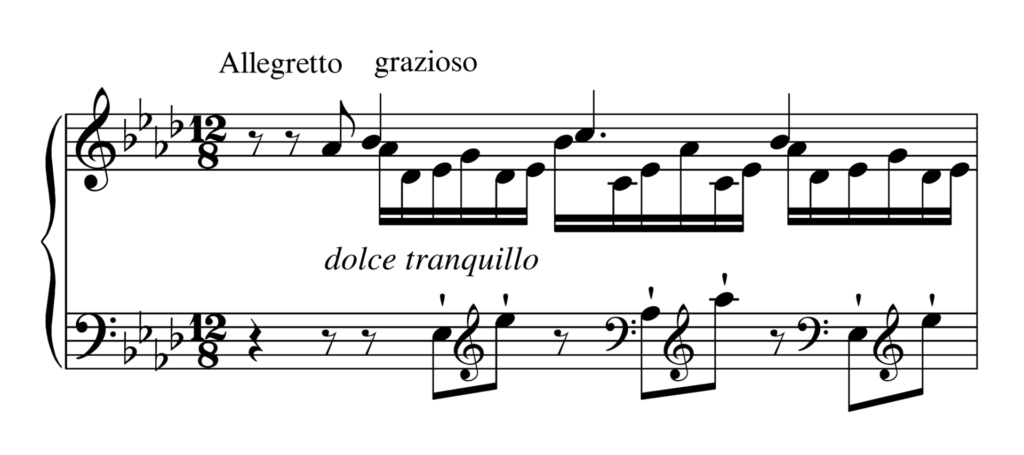
Liszt travelled to Bayreuth in the summer of 1886.
This was in order to support his daughter Cosima, who was running the Festival but struggling to generate sufficient interest.
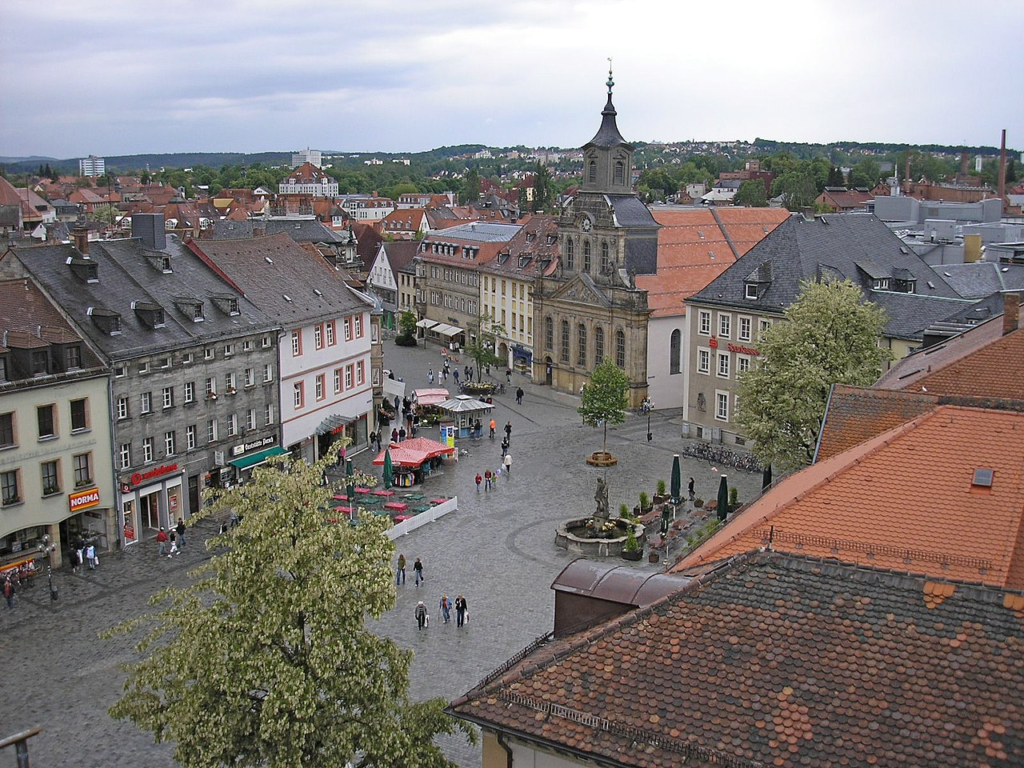
Above: Town Square, Bayreuth, Deutschland
The Festival was dedicated to the works of her husband Richard Wagner, and had opened ten years previously.
Wagner had died in 1883.

Above: Cosima Wagner (1837 – 1930), Franz Liszt’s daughter / Richard Wagner’s wife
Already frail in his final week of life, Liszt’s health deteriorated further, as he experienced a fever, cough and delirium.

Above: Franz Liszt
He died during the Festival, near midnight on 31 July 1886, at the age of 74 — officially as a result of pneumonia, which he had contracted prior to arriving in Bayreuth, although the true cause of death may have been a heart attack.
He was buried on 3 August 1886, in the municipal cemetery of Bayreuth, according to Cosima’s wishes.
Despite controversy over this as his final resting place, Liszt’s body was never moved.
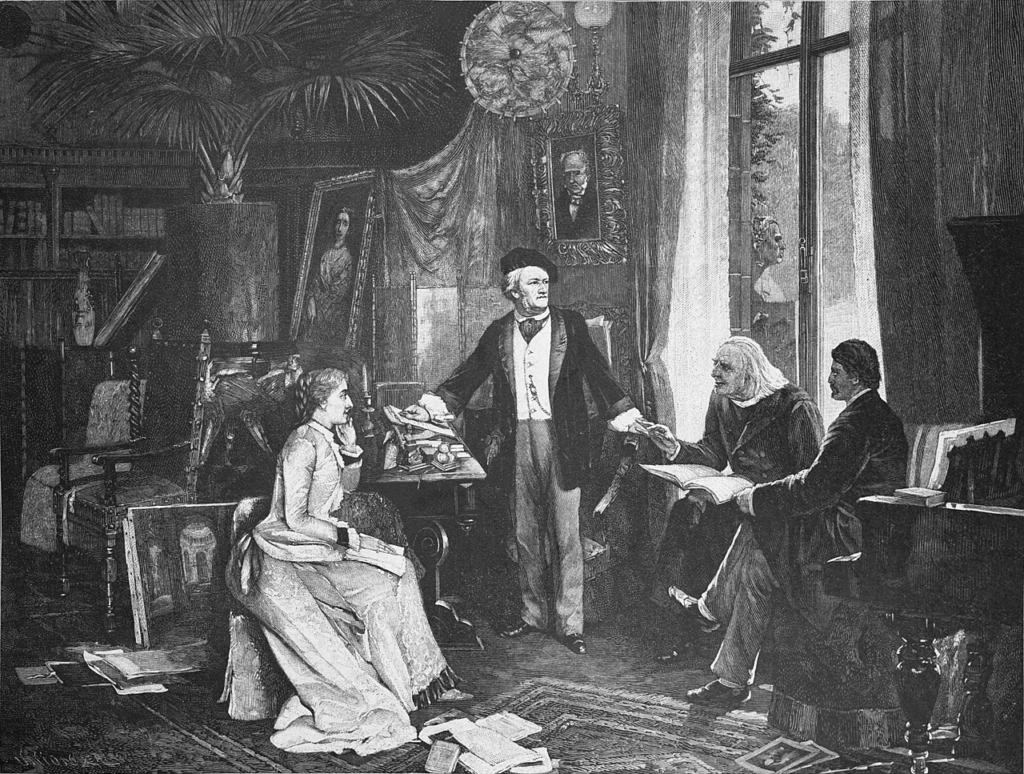
Above: Cosima and Richard Wagner at their home Wahnfried, with Liszt and Hans von Wolzogen (1880)
Liszt’s performance style changed throughout his life, in his interpretive decisions as well as his physicality (the young Liszt was extremely animated at the keyboard, but in old age he was very still).
No recordings of Liszt exist, so to get an impression of his style scholars must go by contemporary writings and the output of his pupils, while allowing for a certain amount of mythologizing around his extraordinary talent.
From a young age, Liszt had displayed an aptitude for improvisation and sight reading.
Czerny observed that Liszt was a natural who played according to feeling:
“One saw that Nature herself had formed a pianist.”
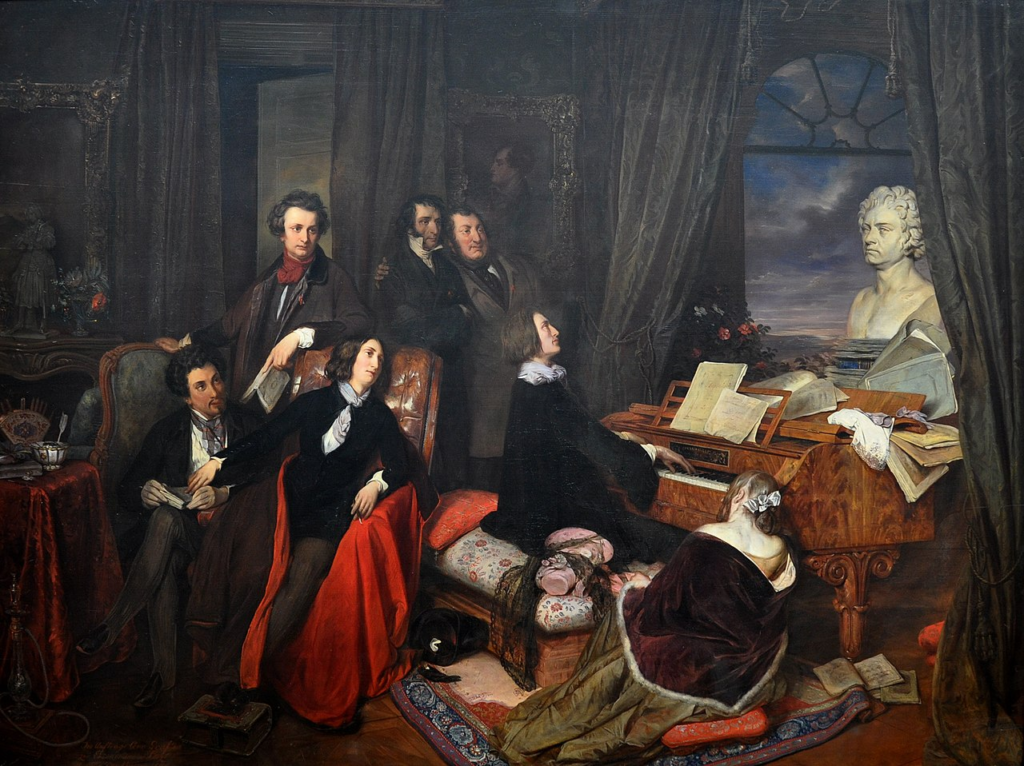
Above: Franz Liszt Fantasizing at the Piano (1840), by Danhauser. The imagined gathering shows seated Alexandre Dumas, George Sand, Liszt, and Marie d’Agoult; standing Victor Hugo, Niccolò Paganini, and Gioachino Rossini; with a bust of Beethoven looking on.
Liszt’s 14 months under Czerny solidified his technical skills as he enthusiastically studied exercises and works.
In later life, however, he would express the opinion that despite his work under Czerny his early training had been unfocused, and he had excelled mainly “by force of personality“.
Reviews of his early concerts especially praise the brilliance, strength, and precision in his playing.
At least one also mentions his ability to keep absolute tempo.
One of the most detailed descriptions of his playing from that time comes from the diary entries of Caroline Boissier-Butini, whose daughter Valerie was a pupil of Liszt’s from 1831 to 1832, when he was earning a living primarily as a teacher in Paris:
Boissier records that Liszt did not keep his hands ‘in a rounded position’ nor were they ‘altogether flat’, but rather his fingers were ‘so flexible as to possess no fixed position’.
Mme Boissier writes that Liszt’s ‘hand is never unwieldy, for he moves it with grace according to his fancy’, then she stresses that ‘he does not play with his arms or shoulders’.
In a later lesson, Liszt instructed Valerie to play ‘without exception, entirely with a wrist action’ … without any interference by the arm.
Crucially, Liszt emphasized the role of the wrist, not the arm, in producing a full tone for individual notes, and did so not just in relation to octaves or chords.“
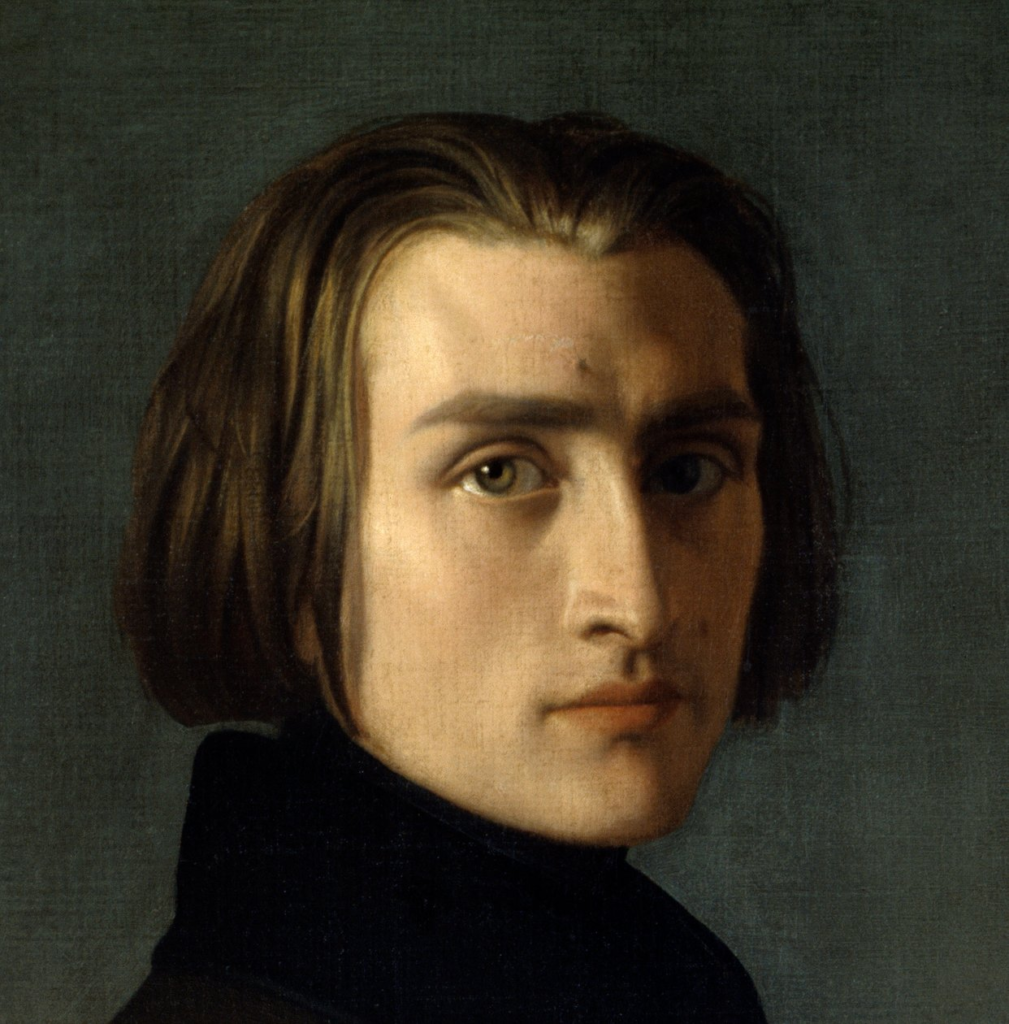
Above: Franz Liszt
During his performance career, Liszt took unusually bold liberties with the score, changing tempo and adding embellishment at will.
In one instance, he decided on “a sudden, drastic slowing down” while performing the Scherzo movement of Beethoven’s 6th Symphony.
In a regretful letter to George Sand from 1837, Liszt admitted that he made such decisions to gain public acclaim:
In order to wring bravos from the public that is always slow, in its awesome simplicity, to comprehend beautiful things, I had no qualms about changing the tempos of the pieces or the composers’ intentions.
In my arrogance I even went so far as to add a host of rapid runs and cadenzas, which, by securing ignorant applause for me, sent me off in the wrong direction — one that I fortunately knew enough to abandon quickly.
Now I no longer divorce a composition from the era in which it was written, and any claim to embellish or modernize the works of earlier periods seems just as absurd for a musician to make as it would be for an architect, for example, to place a Corinthian capital on the columns of an Egyptian temple.“
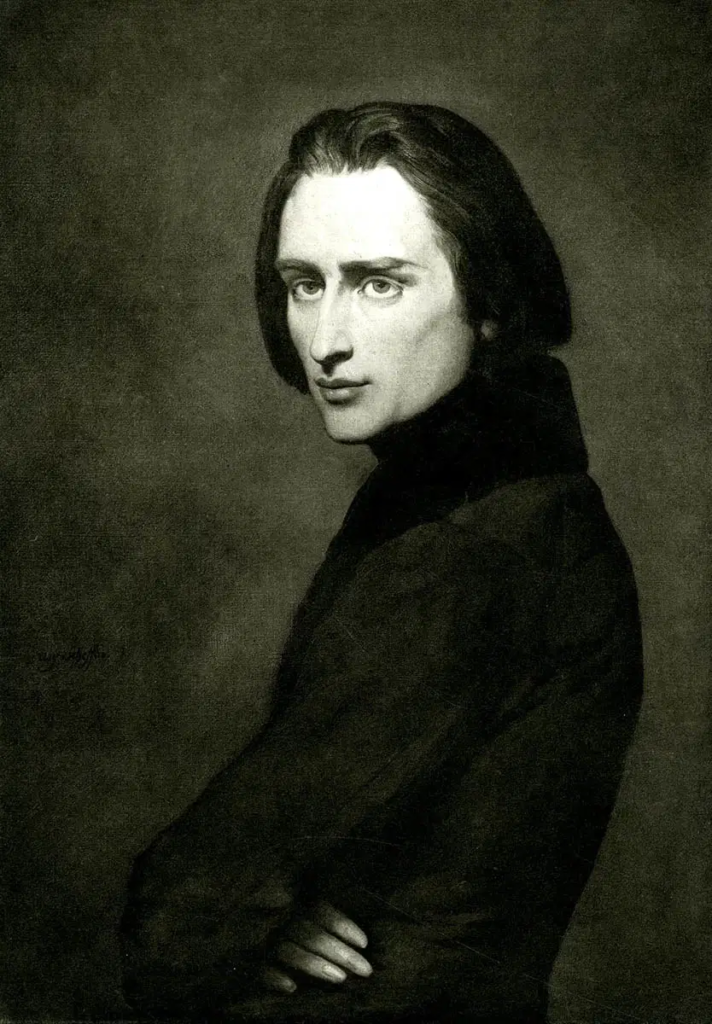
Above: Franz Liszt
Despite his apparent contrition, however, Liszt did continue to make large interpretive changes while performing, although he would be more concerned with fidelity to the score and composer’s intentions later in life.
He would be more open to pupils revising his own compositions, and he himself often produced different versions of his works over the course of his lifetime.
This attitude was in keeping with the shift in audience preferences that began in the 1830s, which started to favour a faithfully rendered memorized performance over the improvisation that Liszt employed in these years.

Above: Franz Liszt
Certain information about Liszt’s style can be inferred from the writings of his many pupils.
Musicologist Kenneth Hamilton identifies several themes which occurred through Liszt’s teachings, including avoiding excessive sentimentality, imagining the orchestration of the piece, flexibility of tempo, and the importance of a sense of music.
Amy Fay studied under Liszt in his later life, 1869 – 1875, and her writings align with Boissier’s four decades earlier.
She also notes that Liszt kept his fingers close to the keyboard to achieve a better legato.
Liszt discouraged unnecessary hand movements, in contrast to his flamboyant gestures during his prime.
Notes by his pupil Pauline Fichtener in the 1870s again stress freedom and flexibility of the wrist.

Above: Liszt giving a concert for Emperor Franz Joseph I
Up to 1840, most concerts featuring a solo pianist included other acts, such as an orchestra, singers and ballet.
The increasing prominence of the solo piano virtuoso in the 1830s led to other acts on the bill being described as “assistant artists“, with Liszt declaring his pre-eminence in a letter to a friend dated June 1839:
“Le concert, c’est moi“.
Liszt is credited as the first pianist to give solo recitals in the modern sense of the word.
The term was first applied to Liszt’s concert at the Hanover Square Rooms in London on 9 June 1840.

Above: Hanover Square Rooms, London (1774 – 1900)
During his years as a travelling virtuoso Liszt performed an enormous amount of music, usually from memory.
He was the first to include the full range of repertoire, from J. S. Bach to Chopin.
His concerts included original compositions, (such as Grand galop chromatique, Fantaisie romantique sur deux mélodies suisses and Grande Valse di Bravura) and his transcriptions of Schubert’s Schwanengesang, Symphonie Fantastique by Berlioz and Beethoven’s 6th symphony.
Liszt would champion Beethoven’s work throughout his life.
His concerts helped popularize the Hammerklavier Sonata and Diabelli Variations.
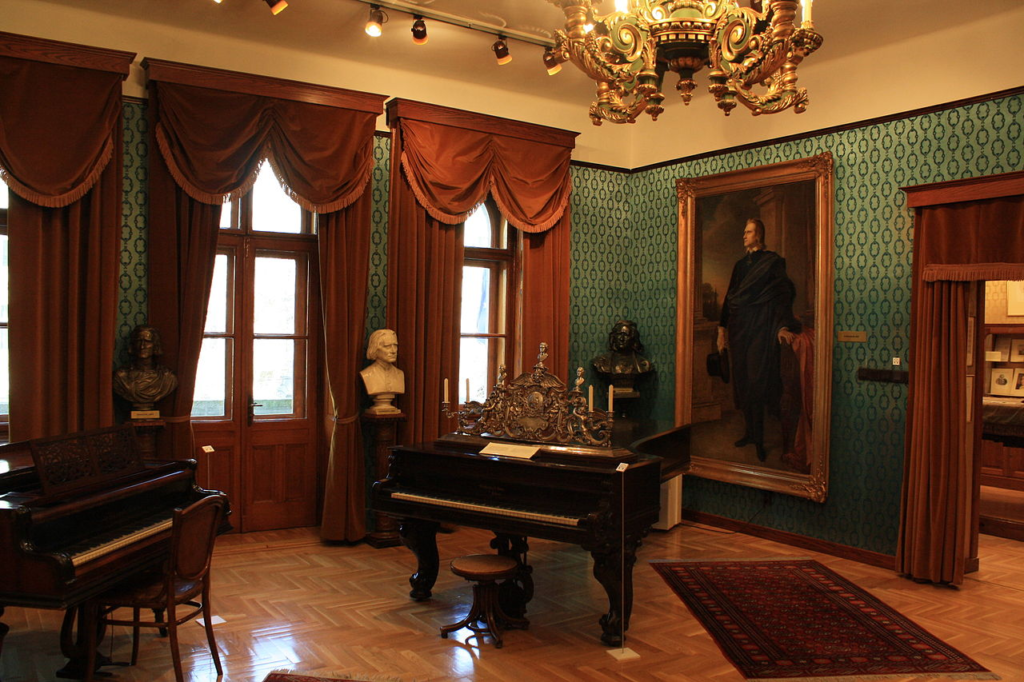
Above: One of Franz Liszt’s pianos from his apartment in Budapest
Liszt was a prolific composer.
He is best known for his piano music, which forms the majority of his oeuvre, but he also wrote for orchestra and for other ensembles.
His piano works are often marked by their difficulty.
Some of his works are programmatic, based on extra-musical inspirations, such as poetry or art.
Liszt is credited with the creation of the symphonic poem.

Above: Die Hunnenschlacht, as painted by Wilhelm von Kaulbach, that in turn inspired one of Liszt’s symphonic poems
The best-known portion of Liszt’s music is his original piano work.
During the Weimar period he composed the first 15 Hungarian Rhapsodies, themselves revisions of his earlier Magyar Dalok/Rhapsódiák, which were influenced by the Romani bands he heard while visiting Hungary.

Above: Flag of Hungary
Harmonies poétiques et religieuses, also the result of a long gestation, was published around the same time, and dedicated to Princess Carolyne.
Likewise, the six Grandes Études de Paganini were revised from an earlier 1840 edition and published in 1851.
These include the famous piece “La campanella“.
Other notable pieces include the thoroughly revised collections of Années de pèlerinage (“Years of Pilgrimage“), inspired by his travels around Europe, the Piano Sonata in B minor, which has been described as “one of the most original contributions to sonata form to come out of the 19th century“, and the Transcendental Études, which are stylistically varied, technically difficult, and have been described as “Liszt at his most Lisztian“.
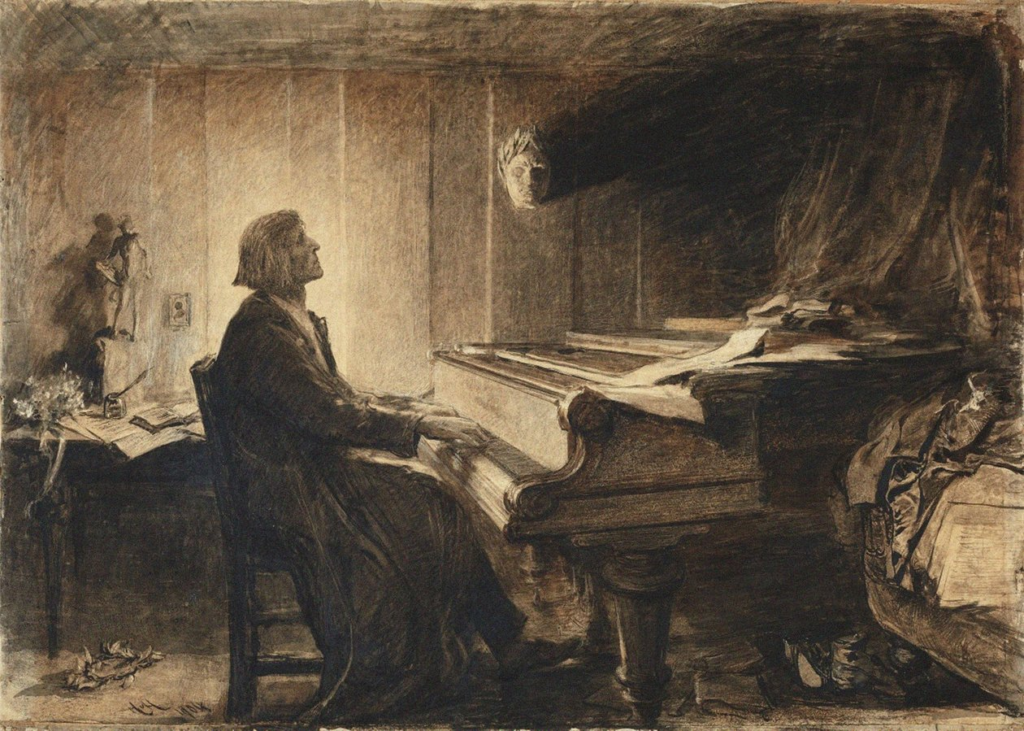
Above: Franz Liszt
Liszt coined the term “program music” in an 1855 essay on Berlioz’s Harold in Italy, referring to pieces which are “driven by an overarching poetic image or narrative” (in the case of Harold in Italy, the piece “describes” the scenes witnessed by the character Harold as he travels through Italy).
This is presented in opposition to absolute music, which stands for itself and is intended to be appreciated without any particular reference to the outside world.
This was not a new idea – such pieces had been written since the early 18th century.
Liszt himself had written works such as the early version of Années de pèlerinage which invoked his experiences travelling – but he presented the novel argument that program music was artistically superior, counter to the prevailing view that such work was unserious.
This developed into the idea that the historical development of music as an art form was destined to move from absolute to representational:
Beethoven’s symphonies had mostly been non-representational, but his 9th Symphony had included some extramusical elements.
Berlioz had taken this further with Harold in Italy and Symphonie fantastique.
Wagner saw these developments as a stepping stone to the all-encompassing Gesamtkunstwerk, and in this sense Liszt’s programmatic works were part of his vision of the “Music of the Future“.

Believing in the power of music to transcend people’s typical quotidian existence, with his program music Liszt attempted to “elevate listeners to a higher realm of consciousness“.
He argued that its purpose was less to do with depicting a specific scene or experience, and more about allowing the listener to reach a higher state of existence.
Such music would act as a more direct method of communication than language, allowing people to share exactly their own experiences.

Above: Franz Liszt
Liszt published a number of prose works and letters over the course of his life, including his 1863 Life of Chopin.
One of Liszt’s notable written works was his biography of Chopin, started less than a month after Chopin’s funeral.
F. Chopin was serialised in the journal La France musicale in 1851 and published in book form the following year, having been edited by Carolyne.
The book was poorly received.
Liszt had approached Chopin’s sister Ludwika and pupil Jane Stirling for information, but they had been uncooperative, finding the timing of his enquiries so soon after Chopin’s death to be insensitive.
As a result, the work contained several factual inaccuracies.
Nevertheless George Sand, who features prominently in one of the chapters, admired the book.
English translations garnered attention in the US and UK over the subsequent two decades, leading to a second edition in 1879.
Once again, Liszt asked Carolyne to help, but her contribution was so extensive that Liszt considered it overinvolvement, going so far as to describe the book as having been “written by Carolyne“.

One significant essay by Liszt is “De la situation des artistes“ (“On the situation of artists“), which was serialized in the Parisian Gazette musicale in 1835.
This work calls for the reform of theatres:
Liszt perceived the physical buildings to be unsafe and unpleasant, and their managers to be incompetent.
He argues that they would book the cheapest variety of acts without concern for artistic merit, leading to subpar concert experiences.
Furthermore, owners would blacklist performers who had appeared at a rival venue.
Liszt was also concerned about the lack of professionalism of educational institutions, which were run by unqualified teachers and charged high tuition.
In his view, their courses lacked rigor and had an undue preference for older music over that of living composers.

Above: Franz Liszt
During his Weimar years, Liszt wrote essays for audiences on Harold in Italy, Lohengrin and Alfonso und Estrella.
In addition, he wrote the book Des Bohémiens et de leur musique en Hongrie (translated as The Gypsy in Music) about the Romani and their influence on Hungarian folk music.
This work proved controversial in the country, with Hungarians disputing Liszt’s assertion that Romani communities were responsible for a large contribution to the native music.

Above: Romani flag
Liszt also worked until at least 1885 on a treatise on modern harmony, entitled Sketches for a Harmony of the Future.
Arthur Friedheim, a pupil of Liszt’s at the time, remembered seeing it among Liszt’s papers at Weimar.
Liszt told Friedheim that the time was not yet ripe to publish the manuscript.
This treatise has since been lost.
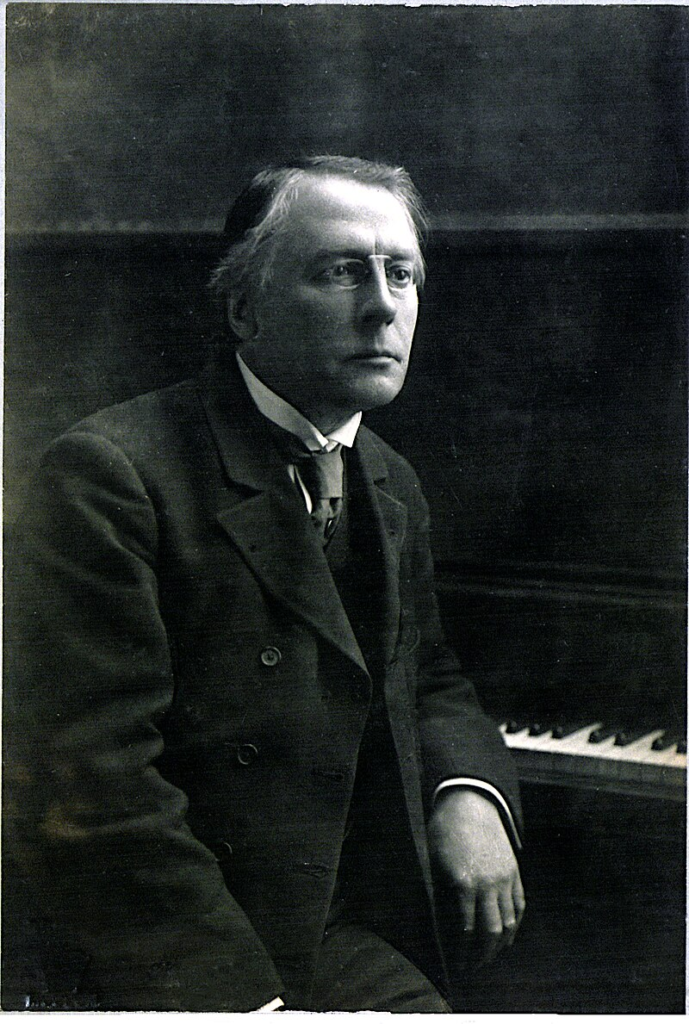
Above: Russian composer Arthur Friedheim (1859 – 1932)
The great artist’s true significance was revealed to me at last.
I came to recognize that, for the continued development of musical art, his compositions were more important than either Wagner’s or Strauss’.”
Béla Bartók on Liszt

Above: Hungarian composer Béla Bartók (1881 – 1945)
Romantic music generally fell out of favor during the first half of the 20th century, as composers took the art form in new directions.
Liszt’s music seemed “flamboyant and excessive” in contrast with their leaner styles.
His work had neither become part of the established canon nor received credit for being avant-garde.
His piano music received attention from few pianists during this period.
Only a few select popular pieces such as the Liebesträume and Hungarian Rhapsodies were published in collections.
Of his orchestral works, only Les préludes and the Faust Symphony were performed regularly.
During the Romantic Revival of the 1950s Liszt’s works and writings received greater attention.
Scholars now appreciate the wide range and originality of his compositions.
In the decades since, recordings of the vast majority of his output have become available.
Liszt competitions occur across the world
Liszt societies promote his work.

Above: Franz Liszt in Istanbul: The Sultan’s Court and a Pianist’s Legacy
Scholar James Deaville writes that:
“Few composers of the 19th century, except possibly Wagner, had the same influence upon succeeding generations as Liszt did.
Indeed, one is hard-pressed to think of an innovative composer of the early 20th century who was not influenced by Liszt’s music, especially in its departures from traditional harmonies and novel approaches to form and formal unity.”

Above: Canadian Professor James Deaville
Liszt’s method of using Hungarian folk music in his compositions integrated such themes more subtly and valued the authenticity of the source material to a greater extent.
It is now held that many of Liszt’s late compositions, such as Nuages gris, Les jeux d’eaux à la villa d’Este and Czardas macabre, anticipated future developments.
Liszt also pioneered a tonal language of building chords in fourths.
Liszt’s invention of the symphonic poem had an impact across Europe from the last years of his life through to the 1920s.
Liszt is also credited with several proto-cinematic innovations, such as audio-visual performance practices and cinematic listening.

Above: Franz Liszt
From 1827 until the last month of his life, Liszt gave lessons in composition and piano playing.
He wrote in 1829 that his schedule was “so full of lessons that each day, from half-past eight in the morning till 10 at night, I have scarcely breathing time“.
Estimates of the total number of pupils he taught range as high as over 400, although some of these may only have had one lesson, or perhaps even none at all.
In Weimar, Liszt pioneered the concept of the masterclass, in which he would instruct each pupil in turn while the others observed.
Members of these classes would also accompany Liszt to concerts and other events.
In later years some in Weimar would criticize the master classes as a vanity club more interested in praising Liszt than in learning pianistic excellence, although the success of many of its pupils proved the groups’ effectiveness.
Liszt offered his students little technical advice, expecting them to “wash their dirty linen at home“, as he phrased it.
Instead, he focused on musical interpretation with a combination of anecdote, metaphor and wit.
He advised one student tapping out the opening chords of Beethoven’s Waldstein Sonata:
“Do not chop beefsteak for us.”
To another who blurred the rhythm in Liszt’s Gnomenreigen:
“There you go, mixing salad again.”
Liszt also wanted to avoid creating carbon copies of himself, believing instead in preserving his pupils’ artistic individuality.
This was in contrast to his contemporaries, who focused on drilling students in a uniform approach.

Above: Franz Liszt
Liszt did not charge for lessons.
He was troubled when German newspapers revealed that pedagogue Theodor Kullak had earned more than one million marks from teaching:
“As an artist, you do not rake in a million marks without performing some sacrifice on the altar of Art“.
He wrote an open letter to Kullak’s sons, published in the Allgemeine musikalische Zeitung, urging them to create an endowment for needy musicians, as Liszt himself frequently did.

Above: German composer Theodor Kullak (1818 – 1882)
Can an artist keep his integrity while increasing his income?

The third selection of the evening is the Reformation Symphony of Felix Mendelssohn.
Jakob Ludwig Felix Mendelssohn Bartholdy (1809 – 1847), widely known as Felix Mendelssohn, was a German composer, pianist, organist and conductor of the early Romantic period.
Mendelssohn’s compositions include symphonies, concertos, piano music, organ music and chamber music.
His best-known works include the overture and incidental music for A Midsummer Night’s Dream (which includes his “Wedding March“), the Italian Symphony, the Scottish Symphony, the oratorio St. Paul, the oratorio Elijah, the overture The Hebrides, the mature Violin Concerto, the String Octet, and the melody used in the Christmas carol “Hark! The Herald Angels Sing“.
Mendelssohn’s Songs Without Words are his most famous solo piano compositions.
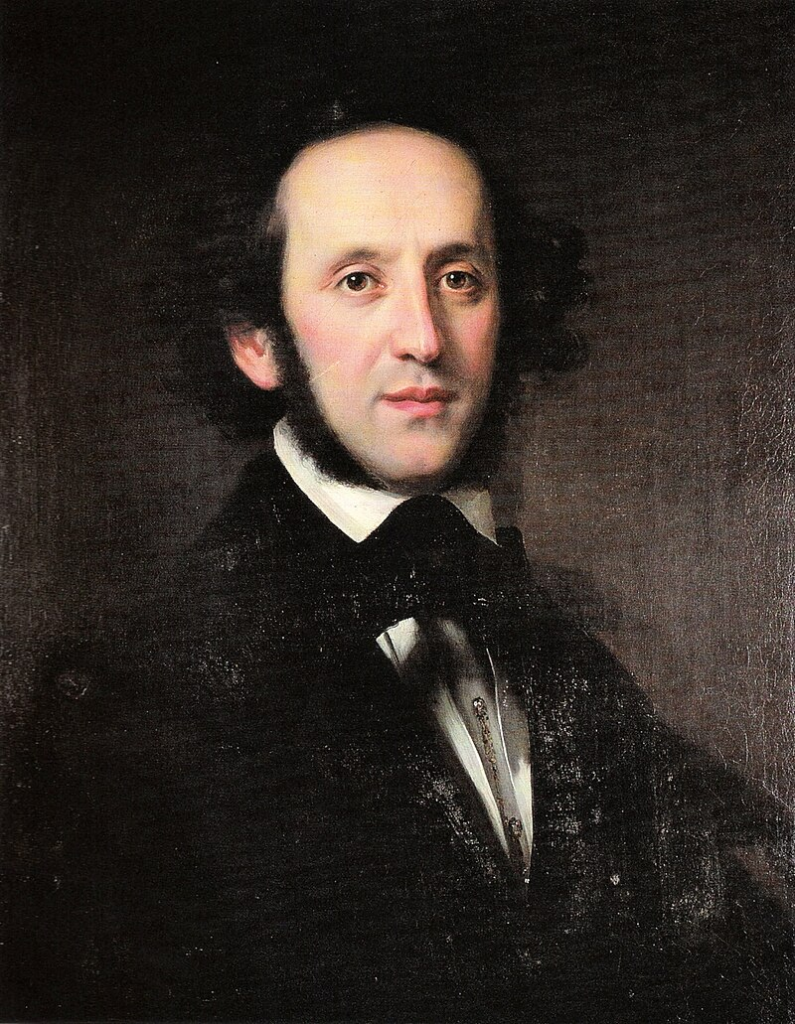
Above: German composer Felix Mendelssohn
Mendelssohn’s grandfather was the renowned Jewish philosopher Moses Mendelssohn, but Felix was initially raised without religion until he was baptized aged seven into the Reformed Christian church.

Above: German Jewish philosopher Moses Mendelson (1729 – 1786)
Felix was recognized early as a musical prodigy, but his parents were cautious and did not seek to capitalize on his talent.
His sister, Fanny Mendelssohn, received a similar musical education and was a talented composer and pianist in her own right.
Some of her early songs were published under her brother’s name.
Her Easter Sonata was for a time mistakenly attributed to him after being lost and rediscovered in the 1970s.

Above: German composer Fanny Mendelssohn (1805 – 1847)
Mendelssohn enjoyed early success in Germany, and revived interest in the music of Johann Sebastian Bach, notably with his performance of the St. Matthew Passion in 1829.

Above: German composer Johann Sebastian Bach (1685 – 1750)
Mendelssohn became well received in his travels throughout Europe as a composer, conductor and soloist.
His ten visits to Britain – during which many of his major works were premiered – form an important part of his adult career.
His essentially conservative musical tastes set him apart from more adventurous musical contemporaries, such as Franz Liszt, Richard Wagner, Charles-Valentin Alkan and Hector Berlioz.
The Leipzig Conservatory, which he founded, became a bastion of this anti-radical outlook.
After a long period of relative denigration due to changing musical tastes and antisemitism in the late 19th and early 20th centuries, his creative originality has been re-evaluated.
He is now among the most popular composers of the Romantic era.
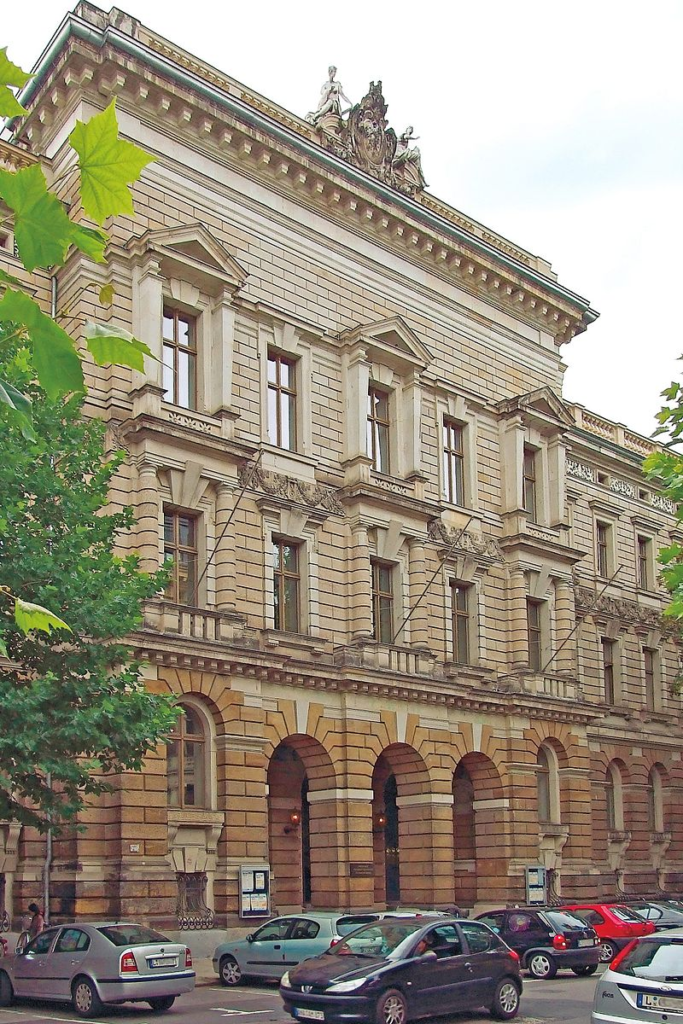
Above: Hochschule für Musik und Theater “Felix Mendelssohn Bartholdy“, Grassistraße, Leipzig, Deutschland – the oldest university school of music in Germany
Felix Mendelssohn was born on 3 February 1809, in Hamburg, at the time an independent city-state, in the same house where, a year later, the dedicatee and first performer of his Violin Concerto, Ferdinand David, would be born.
Mendelssohn’s father, the banker Abraham Mendelssohn, was the son of the German Jewish philosopher Moses Mendelssohn, whose family was prominent in the German Jewish community.
Until his baptism at age seven, Mendelssohn was brought up largely without religion.
His mother, Lea Salomon, was a member of the Itzig family and a sister of Jakob Salomon Bartholdy.
Mendelssohn was the second of four children.
His older sister Fanny also displayed exceptional and precocious musical talent.

Above: Hamburg, Deutschland
The family moved to Berlin in 1811, leaving Hamburg in disguise in fear of French reprisal for the Mendelssohn bank’s role in breaking Napoleon’s Continental System blockade.
Abraham and Lea Mendelssohn sought to give their children – Fanny, Felix, Paul and Rebecka – the best education possible.

Above: German socialite Rebecca Mendelssohn (1811 – 1858)
Fanny became a pianist well known in Berlin musical circles as a composer.
Originally Abraham had thought that she, rather than Felix, would be the more musical.
But it was not considered proper, by either Abraham or Felix, for a woman to pursue a career in music, so she remained an active but non-professional musician.
Abraham was initially disinclined to allow Felix to follow a musical career until it became clear that he was seriously dedicated.
Mendelssohn grew up in an intellectual environment.
Frequent visitors to the salon organized by his parents at their home in Berlin included artists, musicians and scientists, among them Wilhelm and Alexander von Humboldt, and the mathematician Peter Gustav Lejeune Dirichlet (whom Mendelssohn’s sister Rebecka would later marry).

Above: German philosopher Wilhelm von Humboldt (1767 – 1835)

Above: German naturalist Alexander von Humboldt (1769 – 1859)

Above: German mathematician Peter Gustav Lejeune Dirichlet (1805 – 1859)
The musician Sarah Rothenburg has written of the household that “Europe came to their living room“.

Above: Berlin, Deutschland
Mendelssohn began taking piano lessons from his mother when he was six.
At seven, he was tutored by Marie Bigot in Paris.

Above: French composer Marie Bigot (1786 – 1820)
Later in Berlin, all four Mendelssohn children studied piano with Ludwig Berger.

Above: German composer Ludwig Berger (1777 – 1839)
From at least May 1819, Mendelssohn (initially with his sister Fanny) studied counterpoint and composition with Carl Friedrich Zelter in Berlin.
This was an important influence on his future career.

Above: German composer Carl Friedrich Zelter (1758 – 1832)
Zelter had almost certainly been recommended as a teacher by his aunt Sarah Levy.
Sarah Levy displayed some talent as a keyboard player, and often played with Zelter’s orchestra at the Berliner Singakademie.
She and the Mendelssohn family were among its leading patrons.

Above: German harpsichordist Sara Levy (1761 – 1854)
Zelter, whose tastes in music were conservative, was also an admirer of the Bach tradition.
This undoubtedly played a significant part in forming Felix Mendelssohn’s musical tastes, as his works reflect this study of Baroque and early classical music.
His fugues and chorales especially reflect a tonal clarity and use of counterpoint reminiscent of Johann Sebastian Bach, whose music influenced him deeply.
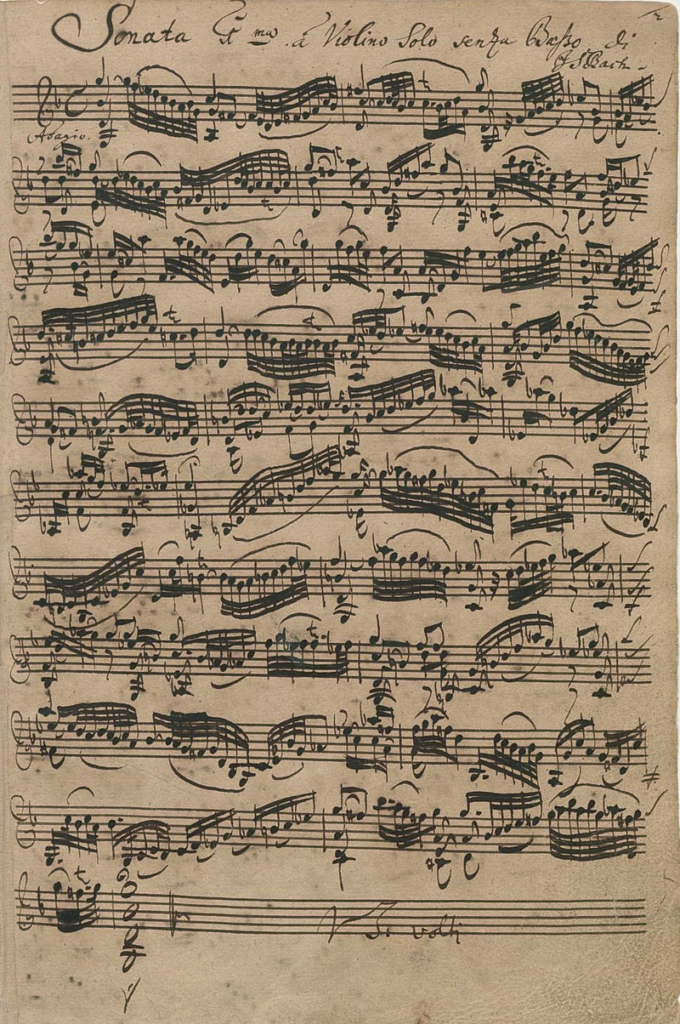
Mendelssohn probably made his first public concert appearance at the age of nine, when he participated in a chamber music concert accompanying a horn duo.
He was a prolific composer from an early age.
As an adolescent, his works were often performed at home with a private orchestra for the associates of his wealthy parents amongst the intellectual elite of Berlin.
Between the ages of 12 and 14, Mendelssohn wrote 13 string symphonies for such concerts, and a number of chamber works.
His first work, a piano quartet, was published when he was 13.
It was probably Abraham Mendelssohn who procured the publication of this quartet by the house of Schlesinger.
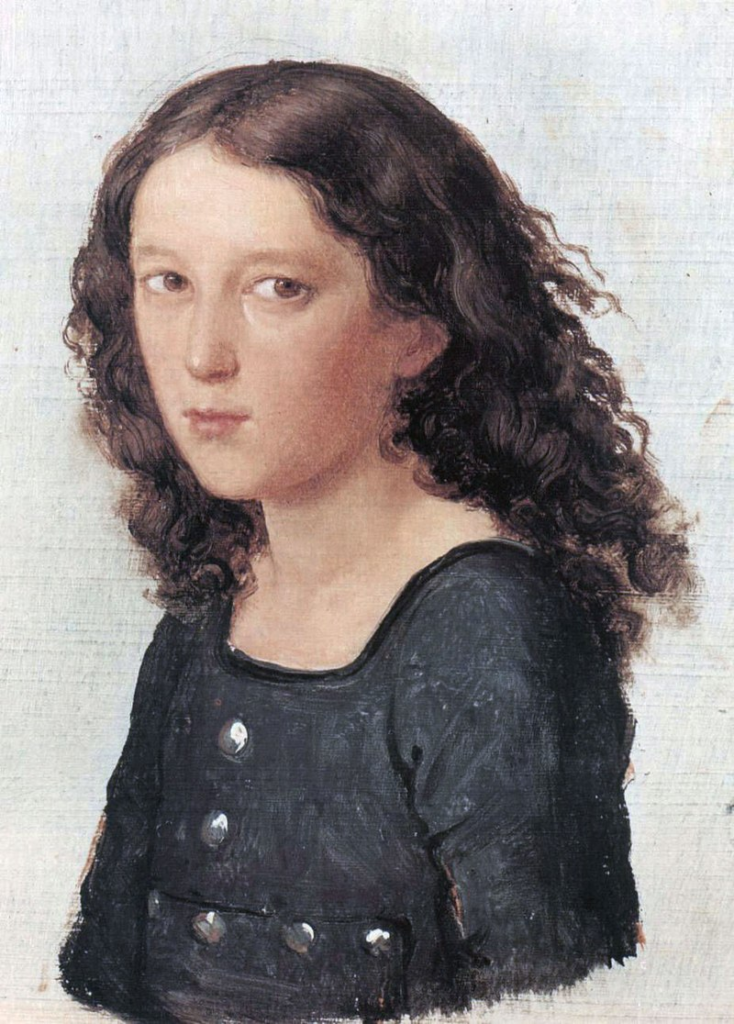
Above: Felix Mendelssohn
In 1824, the 15-year-old wrote his first symphony for full orchestra (in C minor, Op. 11).
At age 16, Mendelssohn wrote his String Octet in E-flat major, a work which has been regarded as “marking the beginning of his maturity as a composer“.
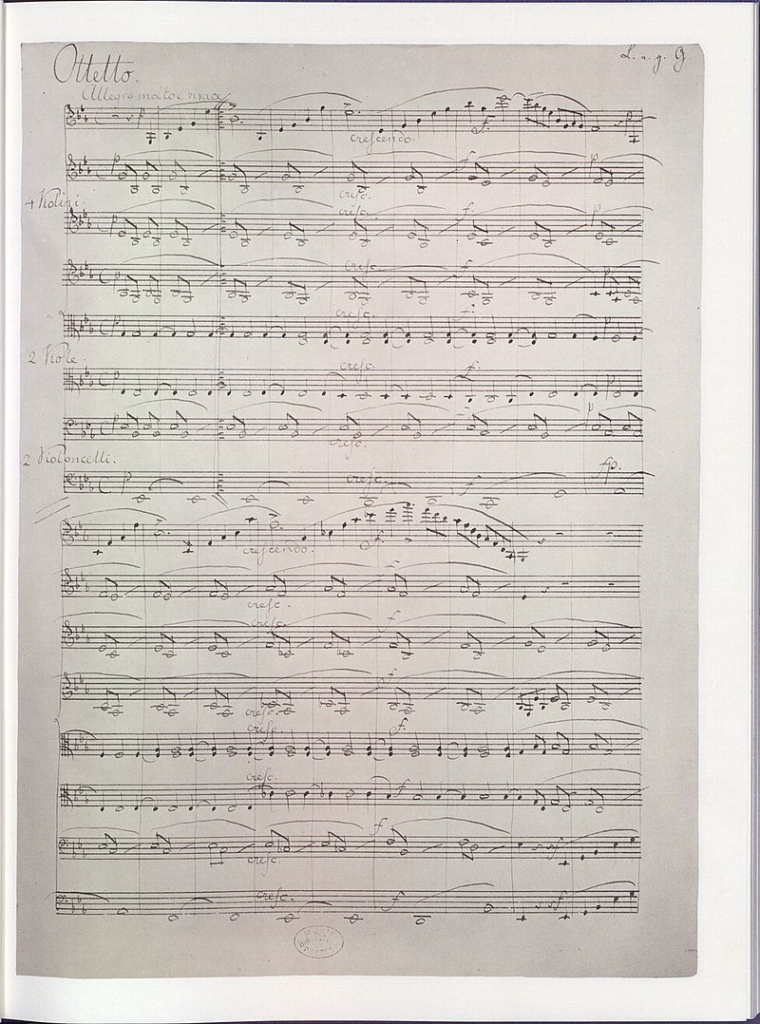
This Octet and his Overture to Shakespeare’s A Midsummer Night’s Dream, which Mendelssohn wrote a year later in 1826, are the best-known of his early works.
(Later, in 1843, he also wrote incidental music for the play, including the famous “Wedding March“.)

The Overture is perhaps the earliest example of a concert overture – that is, a piece not written deliberately to accompany a staged performance but to evoke a literary theme in performance on a concert platform.
This was a genre which became a popular form in musical Romanticism.
In 1824, Mendelssohn studied under the composer and piano virtuoso Ignaz Moscheles, who confessed in his diaries that he had little to teach him.
Moscheles and Mendelssohn became close colleagues and lifelong friends.
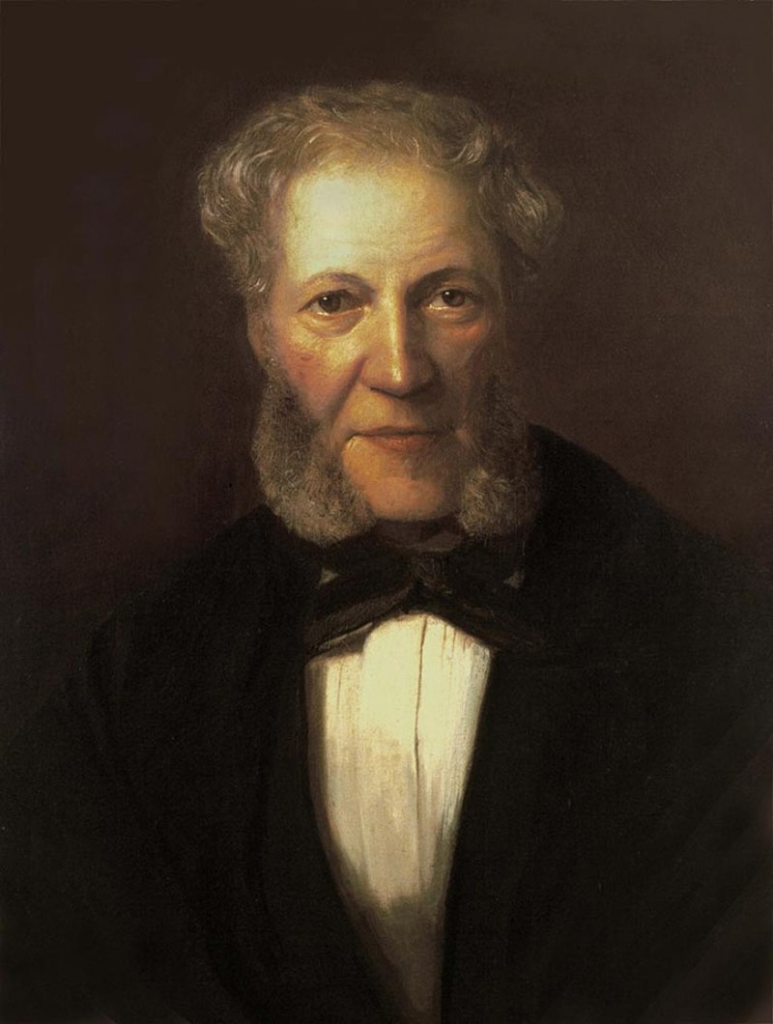
Above: Czech composer Ignaz Moscheles (1794 – 1870)
The year 1827 saw the premiere – and sole performance in his lifetime – of Mendelssohn’s opera Die Hochzeit des Camacho.
The failure of this production left him disinclined to venture into the genre again.
Besides music, Mendelssohn’s education included art, literature, languages, and philosophy.
He had a particular interest in classical literature and translated Terence’s Andria for his tutor Heyse in 1825.

Above: Roman playwright Publius Terentius Afer (195 – 159 BC), better known in English as Terence
Heyse was impressed and had it published in 1826 as a work of “his pupil, F****” [i.e. “Felix” (asterisks as provided in original text)].
This translation also qualified Mendelssohn to study at the University of Berlin, where from 1826 to 1829 he attended lectures on aesthetics by Georg Wilhelm Friedrich Hegel, on history by Eduard Gans, and on geography by Carl Ritter.
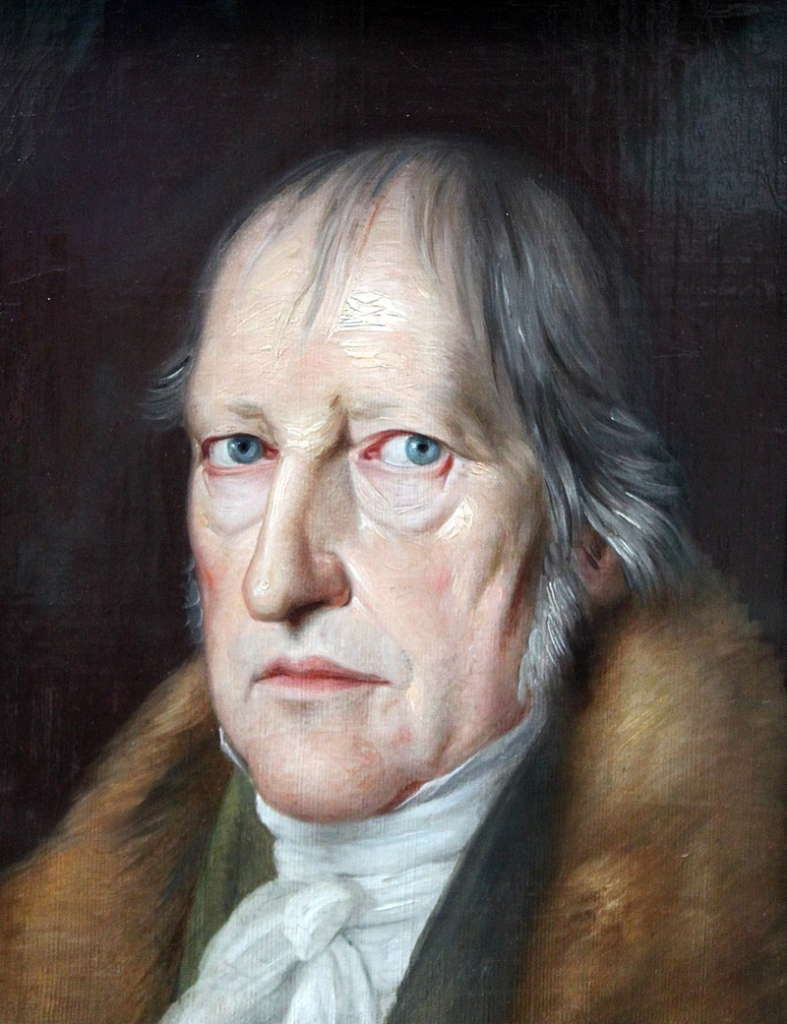
Above: German philosopher Georg Wilhelm Friedrich Hegel (1770 – 1831)

Above: German jurist Eduard Gans (1797 – 1839)

Above: German geographer Carl Ritter (1779 – 1859)
In 1821, Zelter introduced Mendelssohn to his friend and correspondent, the writer Johann Wolfgang von Goethe (then in his 70s), who was greatly impressed by the child, leading to perhaps the earliest confirmed comparison with Mozart in the following conversation between Goethe and Zelter:
Musical prodigies are probably no longer so rare, but what this little man can do in extemporizing and playing at sight borders the miraculous.
I could not have believed it possible at so early an age.”
“And yet you heard Mozart in his 7th year at Frankfurt?” said Zelter.
“Yes”, answered Goethe, “but what your pupil already accomplishes, bears the same relation to the Mozart of that time that the cultivated talk of a grown-up person bears to the prattle of a child.“
Mendelssohn was invited to meet Goethe on several later occasions.
He set a number of Goethe’s poems to music.
His other compositions inspired by Goethe include the overture Calm Sea and Prosperous Voyage (Op. 27, 1828), and the cantata Die erste Walpurgisnacht (The First Walpurgis Night, Op. 60, 1832).
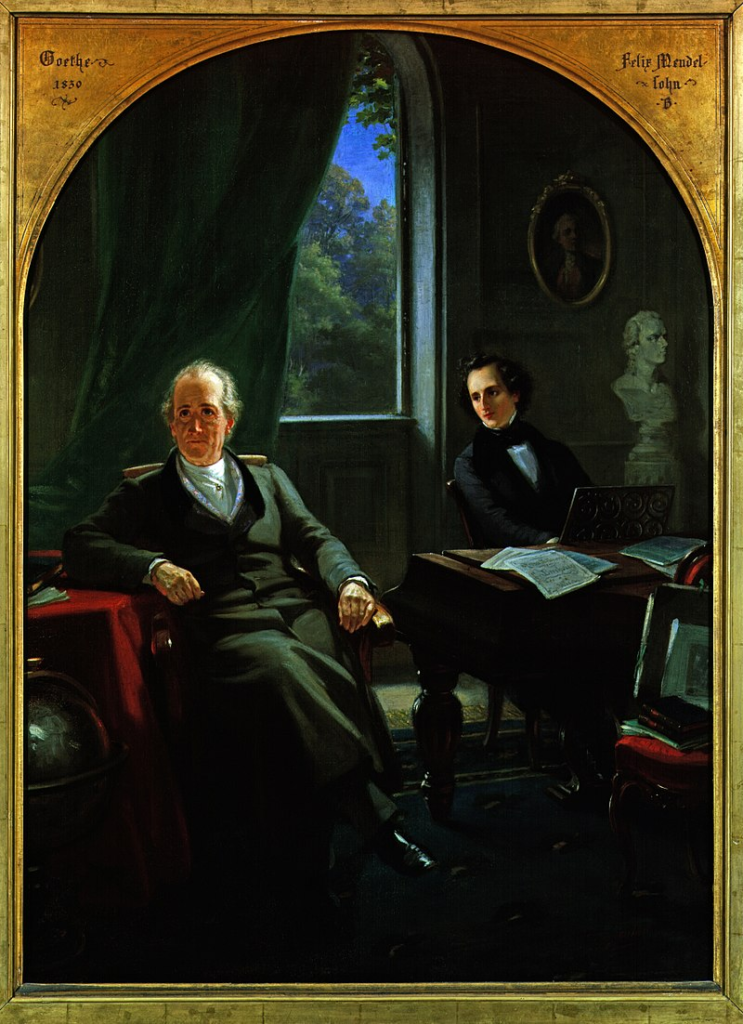
Above: Mendelssohn plays to Goethe, Moritz Oppenheim (1864)
In 1829, with the backing of Zelter and the assistance of the actor Eduard Devrient, Mendelssohn arranged and conducted a performance in Berlin of Bach’s St. Matthew Passion.

Above: German actor Eduard Devrient (1801 – 1877)
Four years previously, his grandmother, Bella Salomon, had given him a copy of the manuscript of this (by then all-but-forgotten) masterpiece.
The orchestra and choir for the performance were provided by the Berlin Singakademie.
The success of this performance, one of the very few since Bach’s death and the first ever outside of Leipzig, was the central event in the revival of Bach’s music in Germany and, eventually, throughout Europe.
It earned Mendelssohn widespread acclaim at the age of 20.
It also led to one of the few explicit references which Mendelssohn made to his origins:
“To think that it took an actor and a Jew’s son to revive the greatest Christian music for the world!“
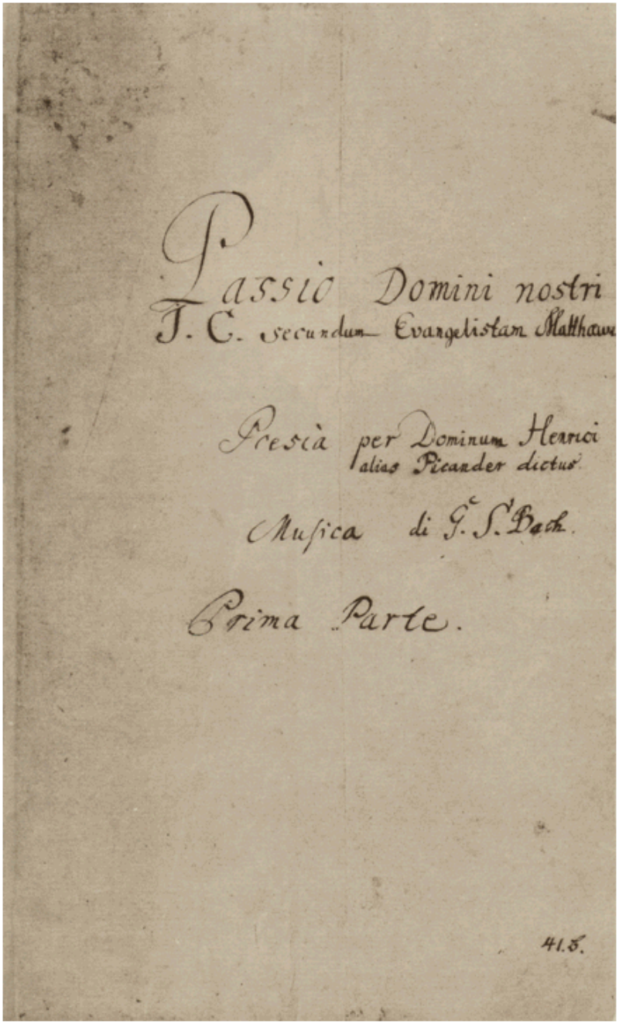
Over the next few years, Mendelssohn travelled widely.
His first visit to England was in 1829.
Other places visited during the 1830s included Vienna, Florence, Milan, Rome and Naples, in all of which he met with local and visiting musicians and artists.
These years proved to be the germination for some of his most famous works, including the Hebrides Overture and the Scottish and Italian symphonies.

Above: Sketch of a Scottish landscape by Felix Mendelssohn found in his letter of 1 August 1829 to his sister Fanny
On Zelter’s death in 1832, Mendelssohn had hopes of succeeding him as conductor of the Singakademie, but at a vote in January 1833 he was defeated for the post by Carl Friedrich Rungenhagen.

Above: German composer Carl Friedrich Rungenhagen (1778 – 1851)
This may have been because of Mendelssohn’s youth, and fear of possible innovations.
It was also suspected by some to be attributable to his Jewish ancestry.

Above: Felix Mendelssohn
Following this rebuff, Mendelssohn divided most of his professional time over the next few years between Britain and Düsseldorf, where he was appointed musical director (his first paid post as a musician) in 1833.

Above: Düsseldorf am Rhein, Deutschland
In the spring of that year Mendelssohn directed the Lower Rhenish Music Festival in Düsseldorf, beginning with a performance of George Frideric Handel’s oratorio Israel in Egypt prepared from the original score, which he had found in London.
This precipitated a Handel revival in Germany, similar to the reawakened interest in J. S. Bach following his performance of the St. Matthew Passion.

Above: German composer Georg Frideric Handel (1685 – 1759)
Mendelssohn worked with the dramatist Karl Immermann to improve local theatre standards.
He made his first appearance as an opera conductor in Immermann’s production of Mozart’s Don Giovanni at the end of 1833, where he took umbrage at the audience’s protests about the cost of tickets.
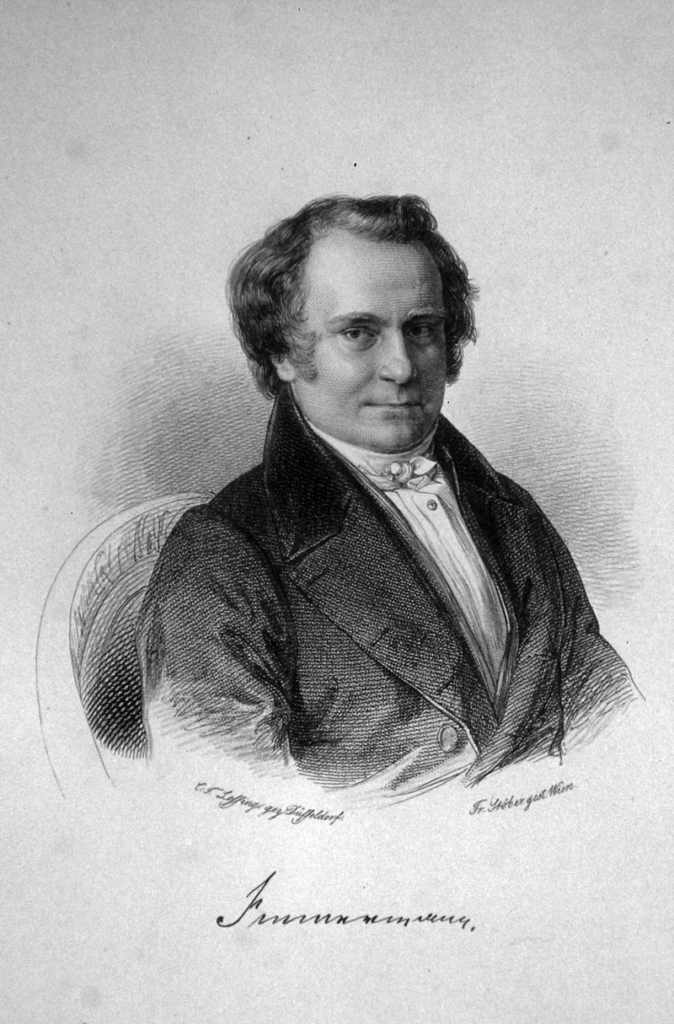
Above: German dramatist Carl Leberecht Immermann (1796 – 1840)
Mendelssohn’s frustration at his everyday duties in Düsseldorf, and the city’s provincialism, led him to resign his position at the end of 1834.
He had offers from both Munich and Leipzig for important musical posts, namely, direction of the Munich Opera, the editorship of the prestigious Leipzig music journal the Allgemeine musikalische Zeitung, and direction of the Leipzig Gewandhaus Orchestra.
He accepted the latter in 1835.

In Leipzig, Mendelssohn concentrated on developing the town’s musical life by working with the orchestra, the opera house, the Thomanerchor (of which Bach had been a director), and the city’s other choral and musical institutions.

Mendelssohn’s concerts included, in addition to many of his own works, three series of “historical concerts” featuring music of the 18th century, and a number of works by his contemporaries.
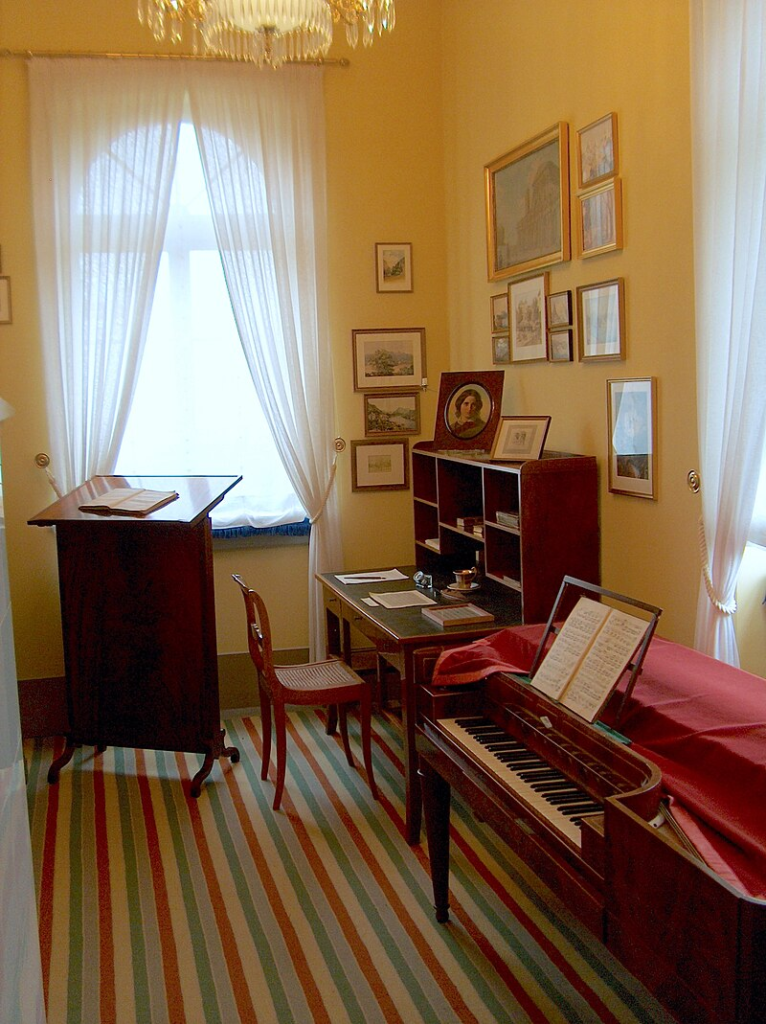
Above: The composer’s study in Mendelssohn House, a museum in Leipzig
Mendelssohn was deluged by offers of music from rising and would-be composers:
Among these was Richard Wagner, who submitted his early Symphony, the score of which, to Wagner’s disgust, Mendelssohn lost or mislaid.
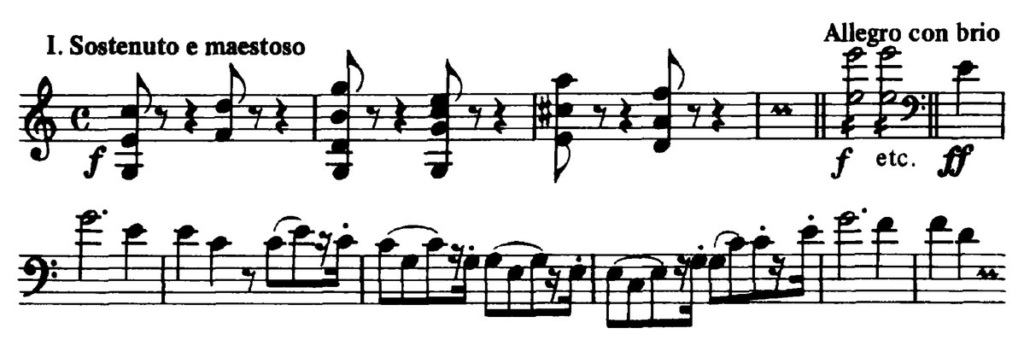
Mendelssohn also revived interest in the music of Franz Schubert.
Robert Schumann discovered the manuscript of Schubert’s 9th Symphony and sent it to Mendelssohn, who promptly premiered it in Leipzig on 21 March 1839, more than a decade after Schubert’s death.

A landmark event during Mendelssohn’s Leipzig years was the premiere of his oratorio Paulus, (the English version of this is known as St. Paul), given at the Lower Rhenish Festival in Düsseldorf in 1836, shortly after the death of the composer’s father, which affected him greatly.
Felix wrote that he would “never cease to endeavour to gain his approval – although I can no longer enjoy it“.
St. Paul seemed to many of Mendelssohn’s contemporaries to be his finest work, and sealed his European reputation.

Above: Felix Mendelssohn
When Friedrich Wilhelm IV came to the Prussian throne in 1840 with ambitions to develop Berlin as a cultural centre (including the establishment of a music school, and reform of music for the church), the obvious choice to head these reforms was Mendelssohn.
Mendelssohn was reluctant to undertake the task, especially in the light of his existing strong position in Leipzig.
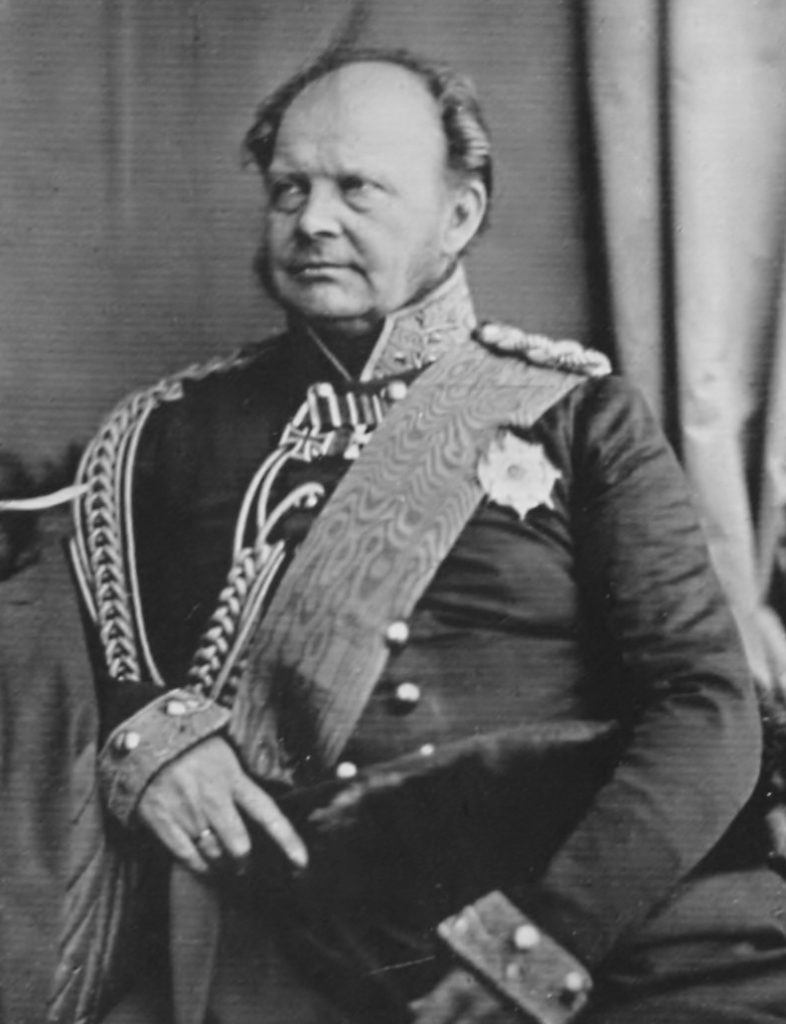
Above: Prussian King Friedrich Wilhelm IV (1795 – 1861)
Mendelssohn nonetheless spent some time in Berlin, writing some church music such as Die Deutsche Liturgie, and, at the King’s request, music for productions of Sophocles’s Antigone (1841 – an overture and seven pieces) and Oedipus at Colonus (1845), A Midsummer Night’s Dream (1843) and Racine’s Athalie (1845).
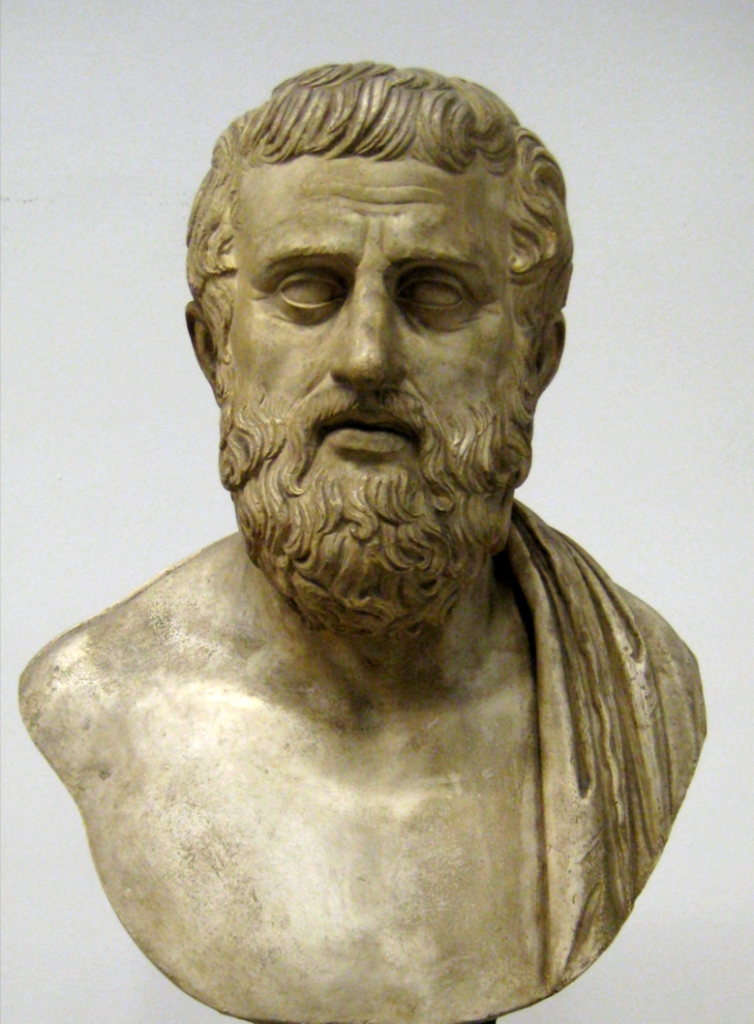
Above: Bust of the Greek tragedian Sophocles (497 – 405 BC)
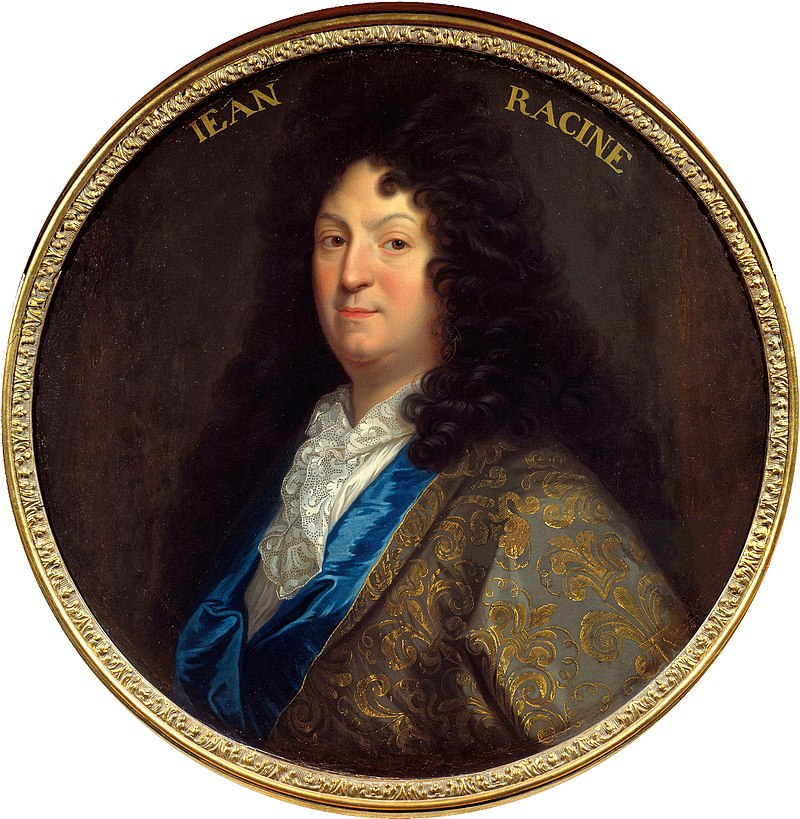
Above: French dramatist Jean-Baptiste Racine (1639 – 1699)
But the funds for the school never materialized.
Many of the court’s promises to Mendelssohn regarding finances, title, and concert programming were broken.
He was therefore not displeased to have the excuse to return to Leipzig.
In 1843, Mendelssohn founded a major music school – the Leipzig Conservatory, now the Hochschule für Musik und Theater Felix Mendelssohn Bartholdy. where he persuaded Ignaz Moscheles and Robert Schumann to join him.
After Mendelssohn’s death in 1847, his musically conservative tradition was carried on when Moscheles succeeded him as head of the Conservatory.

Above: Felix Mendelssohn
Mendelssohn first visited Britain in 1829, where Moscheles, who had already settled in London, introduced him to influential musical circles.
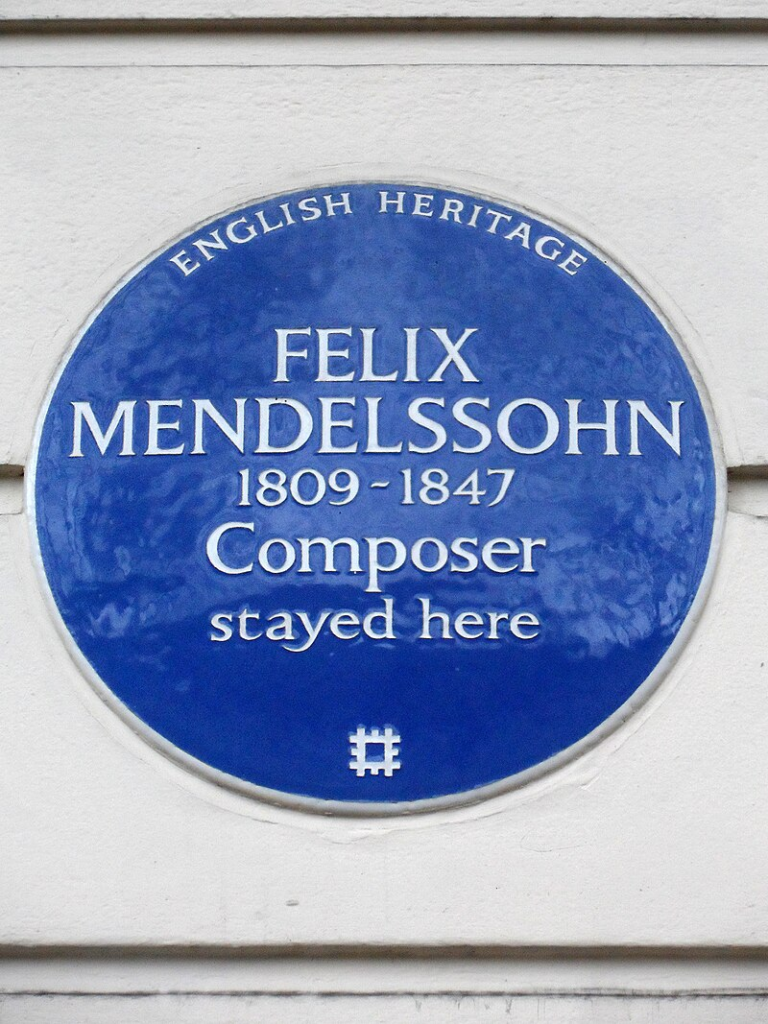
Above: English Heritage blue plaque commemorating Mendelssohn’s residence in England at 4 Hobart Place in Belgravia, London
In the summer, Mendelssohn visited Edinburgh, where he met, among others, the composer John Thomson, whom he later recommended for the post of Professor of Music at Edinburgh University.

Above: Scottish composer John Thomson (1805 – 1841)
Mendelssohn made ten visits to Britain, lasting altogether about 20 months.
He won a strong following, which enabled him to make a good impression on British musical life.
He composed and performed.
He also edited, for British publishers, the first critical editions of oratorios of Handel and of the organ music of J. S. Bach.

Above: Flag of the United Kingdom of Great Britain and Northern Ireland
Scotland inspired two of his most famous works:
The overture The Hebrides (also known as Fingal’s Cave) and the Scottish Symphony (Symphony No. 3).

Above: Flag of Scotland
His protégé, the British composer and pianist William Sterndale Bennett, worked closely with Mendelssohn during this period, both in London and Leipzig.
He first heard Bennett perform in London in 1833, age 17.
Bennett appeared with Mendelssohn in concerts in Leipzig throughout the 1836 – 1837 season.
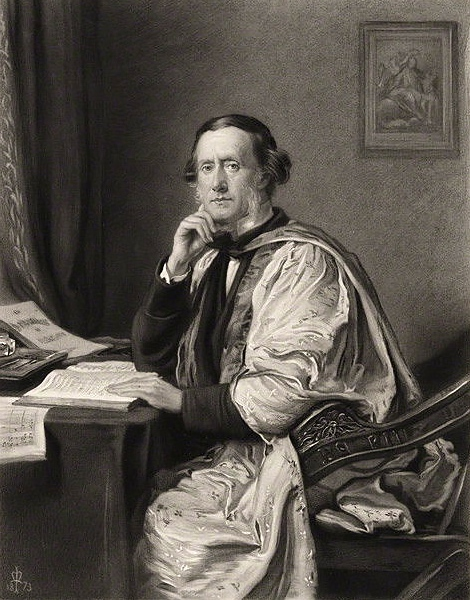
Above: English composer William Sterndale Bennett (1816 – 1875)
On Mendelssohn’s 8th British visit in the summer of 1844, he conducted five of the Philharmonic concerts in London.
He wrote:
“Never before was anything like this season – we never went to bed before half-past one, every hour of every day was filled with engagements three weeks beforehand.
I got through more music in two months than in all the rest of the year.”
(Letter to Rebecka Mendelssohn Bartholdy, Soden, 22 July 1844).
On subsequent visits Mendelssohn met Queen Victoria and her husband Prince Albert, himself a composer, who both greatly admired his music.
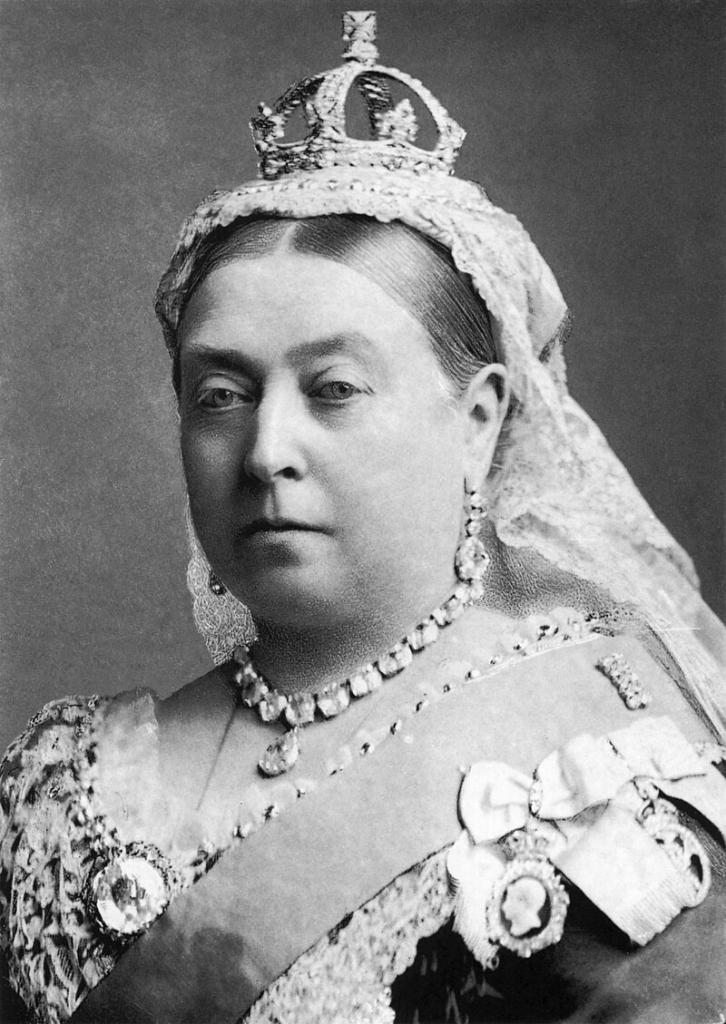
Above: Queen Victoria (1819 – 1901)

Above: Prince Albert (1819 – 1861)
Mendelssohn’s oratorio Elijah was commissioned by the Birmingham Triennial Music Festival (the longest-running classical music festival of its kind: 1784 – 1912) and premiered on 26 August 1846, at the Town Hall, Birmingham.

Above: Birmingham Town Hall interior (1845)
It was composed to a German text translated into English by William Bartholomew, who authored and translated many of Mendelssohn’s works during his time in England.

On his last visit to Britain in 1847, Mendelssohn was the soloist in Beethoven’s Piano Concerto No. 4 and conducted his own Scottish Symphony with the Philharmonic Orchestra before the Queen and Prince Albert.

Above: Ludwig van Beethoven
Mendelssohn suffered from poor health in the final years of his life, probably aggravated by nervous problems and overwork.
A final tour of England left him exhausted and ill.
The death of his sister, Fanny, on 14 May 1847, caused him further distress.
Less than six months later, on 4 November, aged 38, Mendelssohn died in Leipzig after a series of strokes.
His grandfather Moses, Fanny, and both his parents had all died from similar apoplexies.
Although he had been generally meticulous in the management of his affairs, he died intestate (without a will).
Mendelssohn’s funeral was held at the Paulinerkirche, Leipzig.
He was buried at the Dreifaltigkeitsfriedhof I in Berlin-Kreuzberg.
The pallbearers included Moscheles, Schumann and Niels Gade.
Mendelssohn had once described death, in a letter to a stranger, as a place “where it is to be hoped there is still music, but no more sorrow or partings“.

Above: Mendelssohn’s gravestone at the Dreifaltigkeitsfriedhof, Berlin
While Mendelssohn was often presented as equable, happy, and placid in temperament, particularly in the detailed family memoirs published by his nephew Sebastian Hensel after the composer’s death, this was misleading.
The music historian R. Larry Todd notes “the remarkable process of idealization” of Mendelssohn’s character “that crystallized in the memoirs of the composer’s circle“.
The nickname “discontented Polish count” was given to Mendelssohn on account of his aloofness, and he referred to the epithet in his letters.
He was frequently given to fits of temper which occasionally led to collapse.
Devrient mentions that on one occasion in the 1830s, when his wishes had been crossed:
“His excitement was increased so fearfully, that when the family was assembled, he began to talk incoherently in English.
The stern voice of his father at last checked the wild torrent of words.
They took him to bed, and a profound sleep of twelve hours restored him to his normal state.”
Such fits may be related to his early death.
Mendelssohn was an enthusiastic visual artist who worked in pencil and watercolor, a skill which he enjoyed throughout his life.
His correspondence indicates that he could write with considerable wit in German and English – his letters were sometimes accompanied by humorous sketches and cartoons.

Above: View of Luzern, Schweiz – watercolor by Mendelssohn (1847)
Throughout his life, Mendelssohn was wary of the more radical musical developments undertaken by some of his contemporaries.
He was generally on friendly, if sometimes somewhat cool, terms with Hector Berlioz, Franz Liszt, and Giacomo Meyerbeer, but in his letters expresses his frank disapproval of their works:
For example writing of Liszt that his compositions were “inferior to his playing, and only calculated for virtuosos“.
… of Berlioz’s overture Les francs-juges:
“The orchestration is such a frightful muddle that one ought to wash one’s hands after handling one of his scores.” .
… and of Meyerbeer’s opera Robert le diable –
“I consider it ignoble.”,
…. calling its villain Bertram “a poor devil“.
When his friend the composer Ferdinand Hiller suggested in conversation to Mendelssohn that he looked rather like Meyerbeer – they were actually distant cousins, both descendants of Rabbi Moses Isserles – Mendelssohn was so upset that he immediately went to get a haircut to differentiate himself.

Above: Polish rabbi Moses Isserles (1530 – 1572)
In particular, Mendelssohn seems to have regarded Paris and its music with the greatest of suspicion and an almost puritanical distaste.
Attempts made during his visit there to interest him in Saint-Simonianism ended in embarrassing scenes.
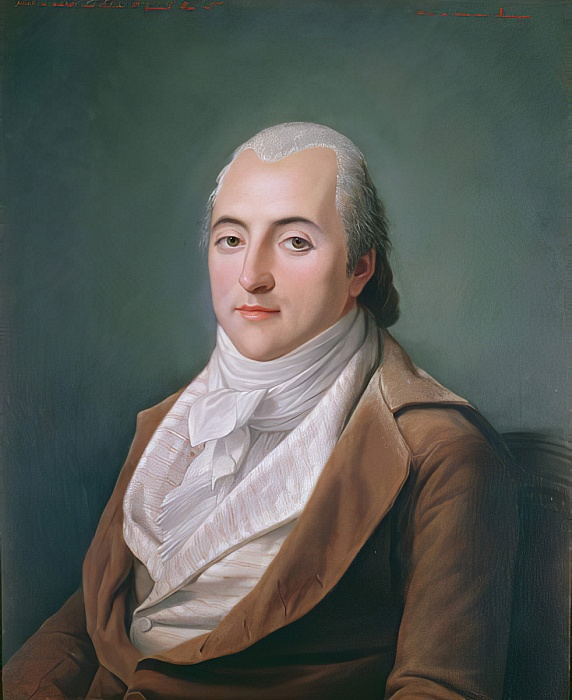
Above: French theorist Claude-Henri de Rouvroy, comte de Saint-Simon (1760 – 1825)
It is significant that the only musician with whom Mendelssohn remained a close personal friend, Ignaz Moscheles, was of an older generation and equally conservative in outlook.
Moscheles preserved this conservative attitude at the Leipzig Conservatory until his own death in 1870.
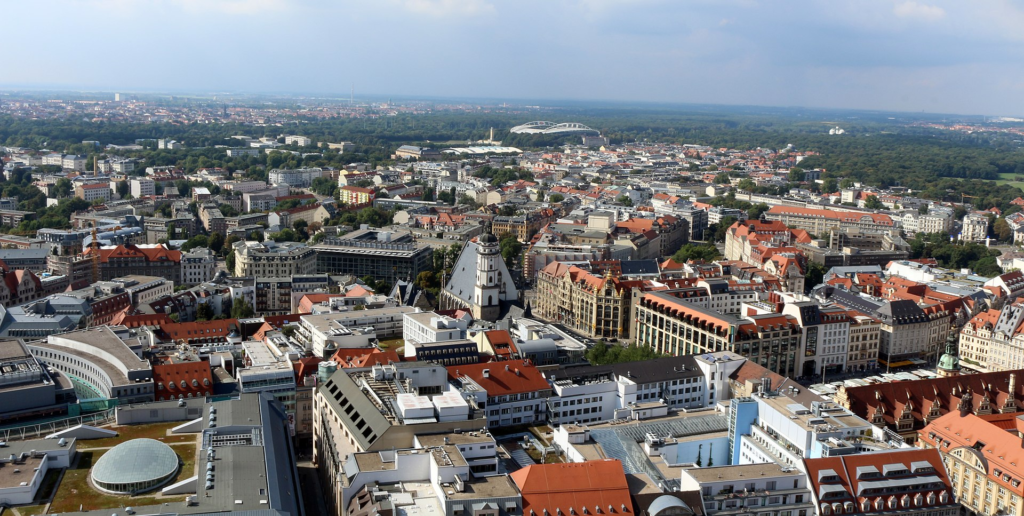
Above: Leipzig, Deutschland
Mendelssohn married Cécile Charlotte Sophie Jeanrenaud (1817 – 1853), the daughter of a French Reformed Church clergyman, on 28 March 1837.
The couple had five children:
Carl, Marie, Paul, Lili and Felix August.
Cécile Mendelssohn Bartholdy died less than six years after her husband, on 25 September 1853.
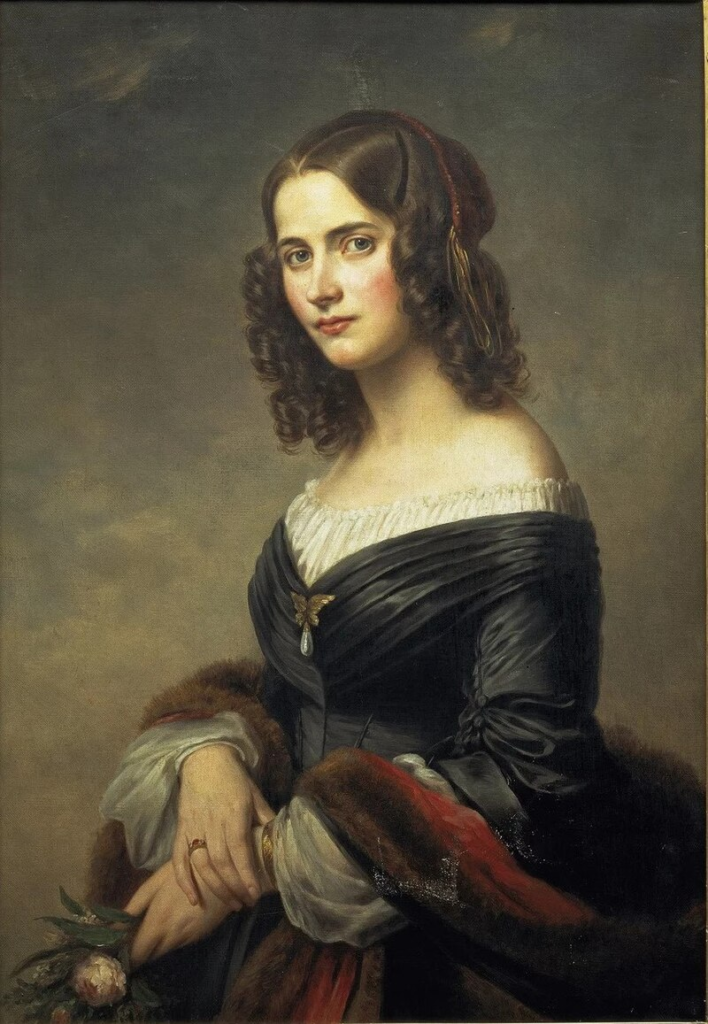
Above: Cecile Mendelssohn (1817 – 1853)
The second youngest child, Felix August, contracted measles in 1844 and was left with impaired health.
He died in 1851.
The eldest, Carl Mendelssohn Bartholdy (1838 – 1897), became a historian, and professor of history at Heidelberg and Freiburg Universities.
He died in a psychiatric institution in Freiburg, age 59.

Above: Freiburg im Breisgau, Deutschland
Paul Mendelssohn Bartholdy was a noted chemist and pioneered the manufacture of aniline dye.

Above: German chemist Paul Mendelssohn Bartholdy (1841 – 1880)
Marie married Victor Benecke and lived in London.
Lili married Adolf Wach, later professor of law at Leipzig University.
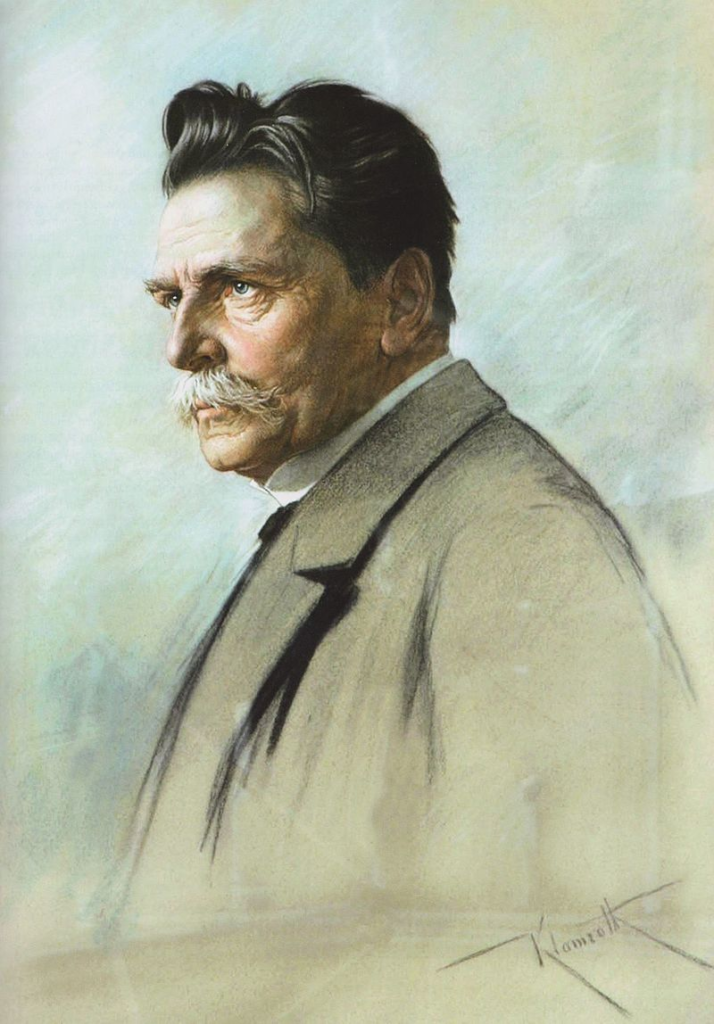
Above: German jurist Adolf Wach (1843 – 1926)
The family papers inherited by Marie’s and Lili’s children form the basis of the extensive collection of Mendelssohn manuscripts, including the “Green Books” of his correspondence, now in the Bodleian Library at Oxford University.
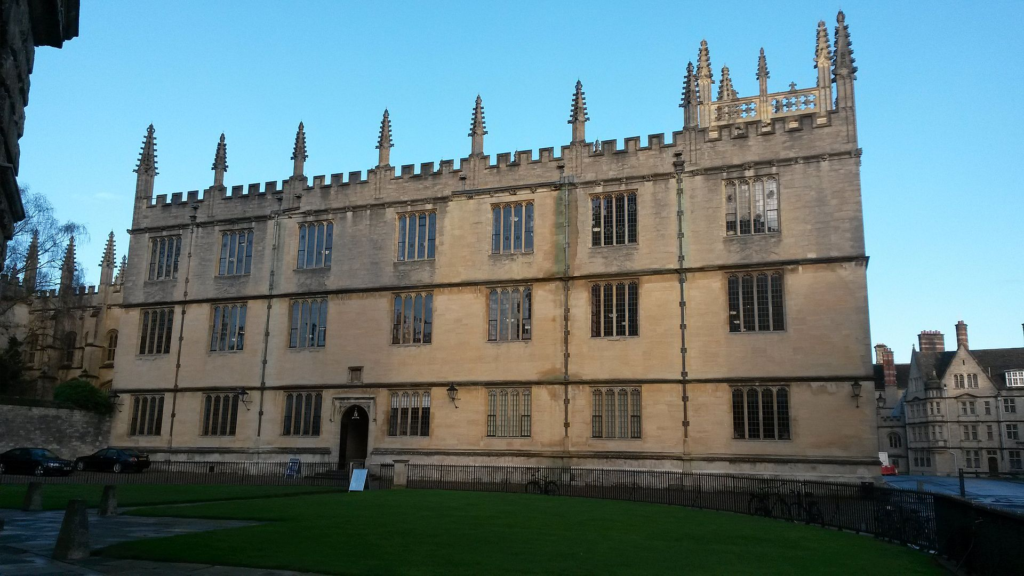
Above: Bodleian Library, Oxford, England
Mendelssohn became close to the Swedish soprano Jenny Lind, whom he met in October 1844.
Papers confirming their relationship had not been made public.
In 2013, George Biddlecombe confirmed in the Journal of the Royal Musical Association that:
“The Committee of the Mendelssohn Scholarship Foundation possesses material indicating that Mendelssohn wrote passionate love letters to Jenny Lind entreating her to join him in an adulterous relationship and threatening suicide as a means of exerting pressure upon her.
These letters were destroyed on being discovered after her death.”
Mendelssohn met and worked with Lind many times, and started an opera, Lorelei, for her, based on the legend of the Lorelei Rhine maidens.
The opera was unfinished at his death.
He is said to have tailored the aria “Hear Ye Israel“, in his oratorio Elijah, to Lind’s voice, although she did not sing the part until after his death, at a concert in December 1848.
In 1847, Mendelssohn attended a London performance of Meyerbeer’s Robert le diable – an opera that musically he despised – in order to hear Lind’s British debut, in the role of Alice.
The music critic Henry Chorley, who was with him, wrote:
“I see as I write the smile with which Mendelssohn, whose enjoyment of Mdlle.
Lind’s talent was unlimited, turned round and looked at me, as if a load of anxiety had been taken off his mind.
His attachment to Mdlle. Lind’s genius as a singer was unbounded, as was his desire for her success.“
Upon Mendelssohn’s death, Lind wrote:
“He was the only person who brought fulfillment to my spirit, and almost as soon as I found him I lost him again.”
In 1849, she established the Mendelssohn Scholarship Foundation, which makes an award to a young resident British composer every two years in Mendelssohn’s memory.
The first winner of the scholarship, in 1856, was Arthur Sullivan, then aged 14.
In 1869, Lind erected a plaque in Mendelssohn’s memory at his birthplace in Hamburg.
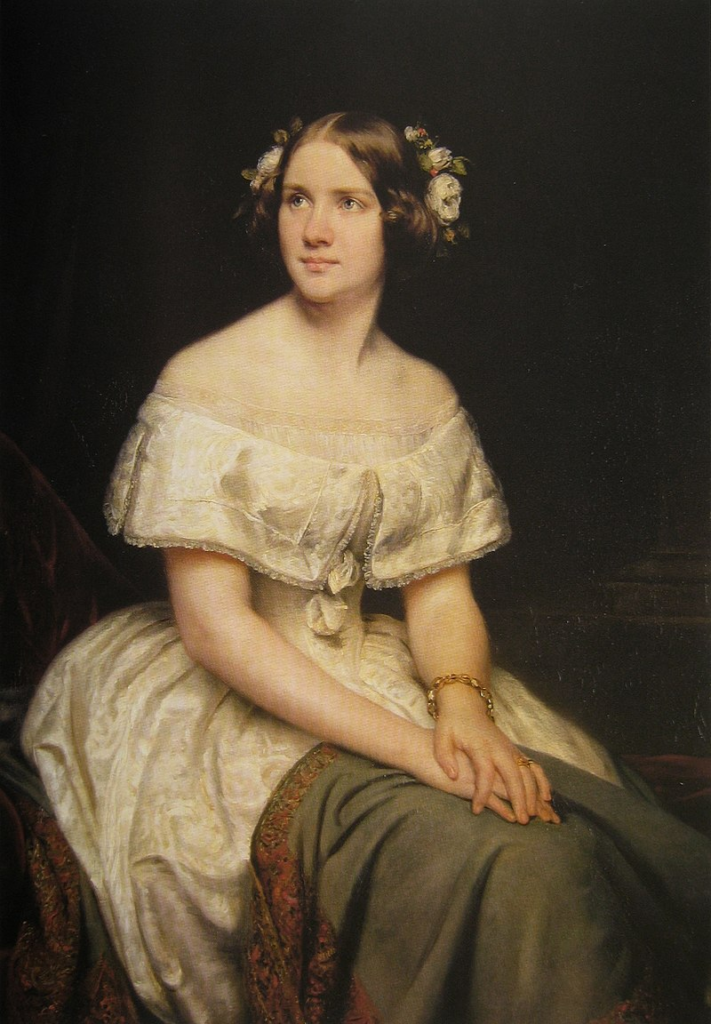
Above: Swedish soprano Jenny Lind (1820 – 1887)
Something of Mendelssohn’s intense attachment to his personal vision of music is conveyed in his comments to a correspondent who suggested converting some of the Songs Without Words into lieder by adding texts:
“What the music I love expresses to me, are not thoughts that are too indefinite for me to put into words, but on the contrary, too definite.”

Schumann wrote of Mendelssohn that he was “the Mozart of the 19th century, the most brilliant musician, the one who most clearly sees through the contradictions of the age and for the first time reconciles them“.
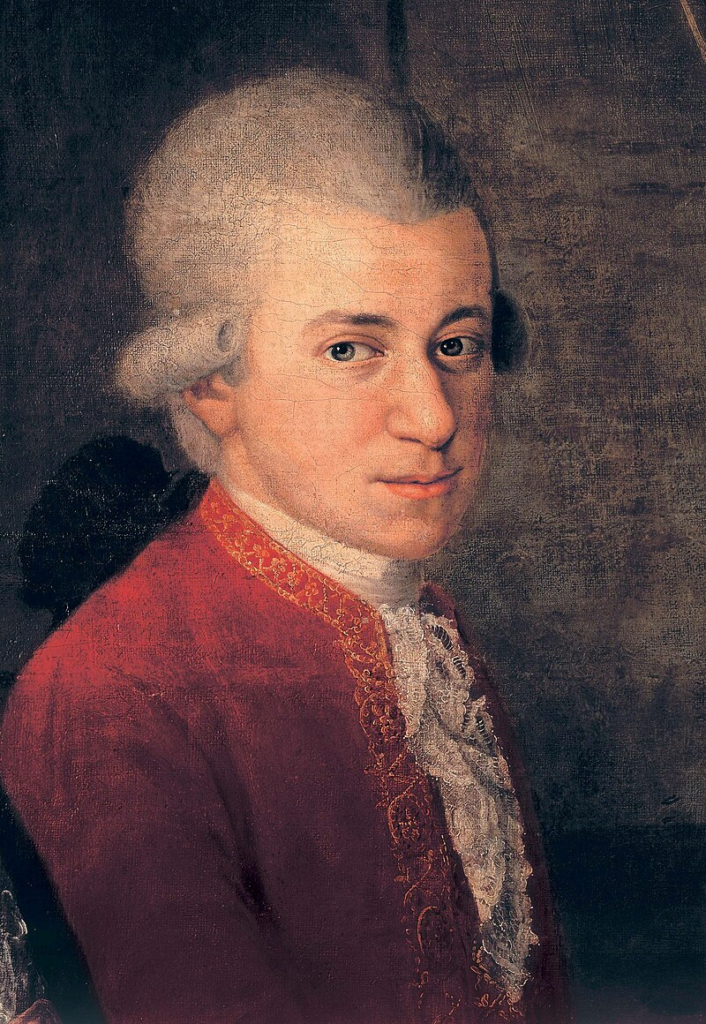
Above: Austrian composer Wolfgang Amadeus Mozart (1756 – 1791)
Two features characterized Mendelssohn’s compositions and his compositional process:
First, that his inspiration for musical style was rooted in his technical mastery and his interpretation of the style of previous masters, although he certainly recognized and developed the strains of early Romanticism in the music of Beethoven and Weber.
The historian James Garratt writes that from his early career:
“The view emerged that Mendelssohn’s engagement with early music was a defining aspect of his creativity.”
This approach was recognized by Mendelssohn himself, who wrote that, in his meetings with Goethe, he gave the poet “historical exhibitions” at the keyboard.
“Every morning, for about an hour, I have to play a variety of works by great composers in chronological order, and must explain to him how they contributed to the advance of music.“
Secondly, it highlights that Mendelssohn was more concerned to reinvigorate the musical legacy which he inherited, rather than to replace it with new forms and styles, or with the use of more exotic orchestration.
In these ways he differed significantly from many of his contemporaries in the early Romantic period, such as Wagner, Berlioz and Franz Liszt.
Whilst Mendelssohn admired Liszt’s virtuosity at the keyboard, he found his music jejune.
Berlioz said of Mendelssohn that he had “perhaps studied the music of the dead too closely“.

Richard Taruskin wrote that, although Mendelssohn produced works of extraordinary mastery at a very early age:
He never outgrew his precocious youthful style.
He remained stylistically conservative feeling no need to attract attention with a display of “revolutionary” novelty.
Throughout his short career he remained comfortably faithful to the musical status quo – that is, the “classical” forms, as they were already thought of by his time.
His version of romanticism, already evident in his earliest works, consisted in musical “pictorialism” of a fairly conventional, objective nature (though exquisitely wrought).“

Above: American musicologist Richard Taruskin (1945 – 2022)
During 1829 and 1830, Mendelssohn wrote his Symphony No. 5, known as the Reformation.
It celebrated the 300th anniversary of the Reformation.
Mendelssohn remained dissatisfied with the work and did not allow publication of the score.
The Symphony No. 5 in D major/D minor, Op. 107, known as the Reformation, was composed by Felix Mendelssohn in 1830 in honor of the 300th anniversary of the Presentation of the Augsburg Confession.

Above: Felix Mendelssohn
The Confession is a key document of Lutheranism and its Presentation to Emperor Charles V in June 1530 was a momentous event of the Protestant Reformation.
This Symphony was written for a full orchestra and was Mendelssohn’s second extended symphony.
It was not published until 1868, 21 years after the composer’s death, – hence its numbering as ‘5‘.
Although the Symphony is not very frequently performed, it is better known today than when it was originally published.
Mendelssohn’s sister, Fanny Mendelssohn Hensel, chose the name Reformation Symphony.

Above: The Luther rose – symbol of Lutheranism
In December 1829, a year before the King of Prussia Friedrich Wilhelm III had even announced the tercentennial Augsburg celebrations, Mendelssohn began work on the Reformation Symphony.
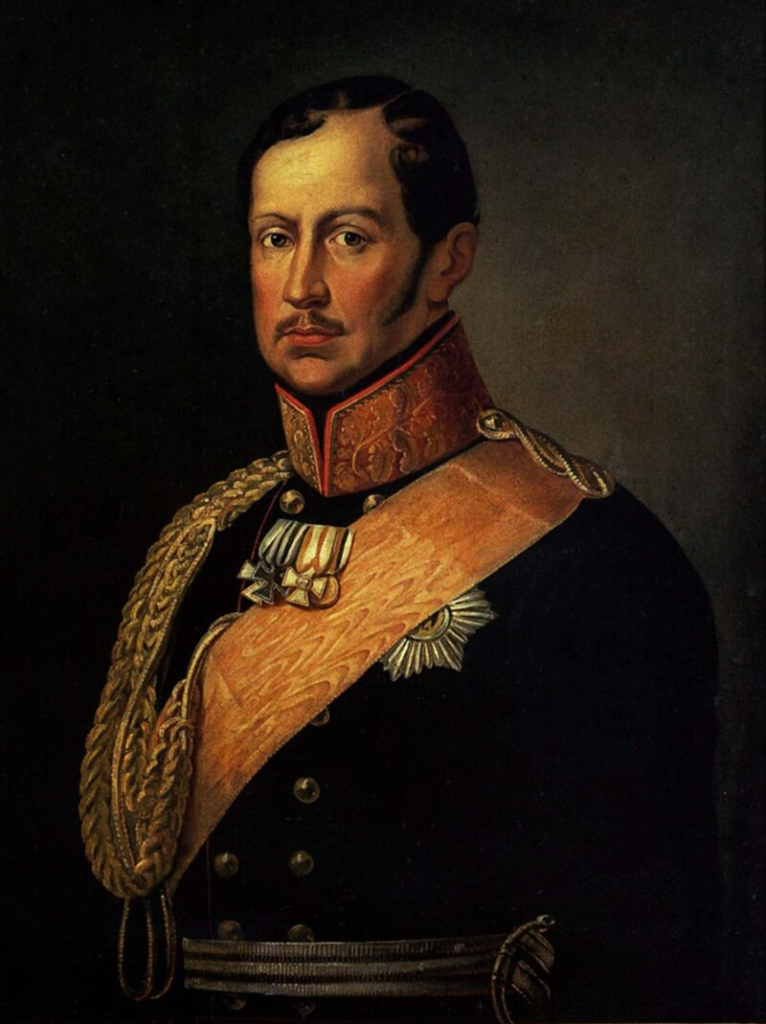
Above: Prussian King Friedrich Wilhelm III (1770 – 1840)
Mendelssohn hoped to have it performed at the festivities in Berlin which took place on 25 June 1830.
He had intended to finish the composition by January 1830 and tour for four months before the celebrations began in June.
However, his ill health caused the Reformation Symphony to take longer to compose than he had initially expected.
In late March, the Symphony was still in a state of fabrication.
In an inauspicious turn of events, Mendelssohn caught measles from his sister Rebecka.
With a further delay of the composing and touring, Mendelssohn eventually completed the Symphony in May.
Unfortunately, it was too late for the Augsburg commission to recognize the Symphony for the celebrations.
Some authorities have suggested that antisemitism may have played a role in the Symphony‘s absence from Augsburg.
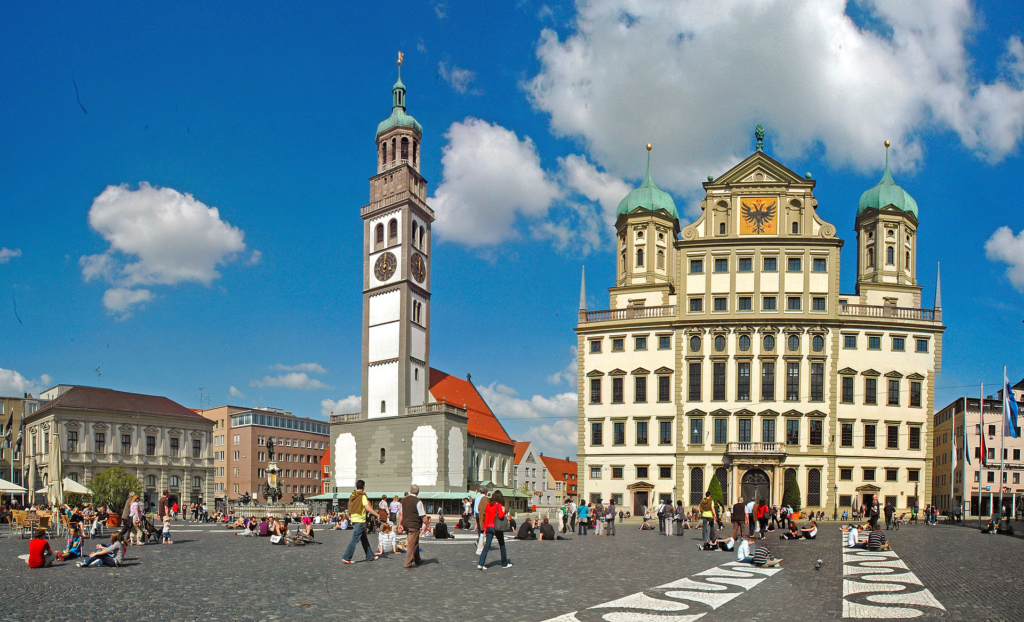
Above: Rathausplatz, Augsburg, Deutschland
But the successful competitor, Eduard Grell, had already established himself as a competent and successful composer who was gaining considerable popularity in Berlin.
Grell was extremely conservative in his compositions.
His piece for male chorus perhaps matched what the Augsburg celebrations demanded, in contrast to Mendelssohn’s extensive Symphony, which may have been thought inappropriate at the time.
Mendelssohn resumed his touring immediately after he had completed the Reformation Symphony.

Above: German composer Eduard Grell (1800 – 1886)
In Paris, in 1832, François Antoine Habeneck’s orchestra turned the work down as ‘too learned‘.
The music historian Larry Todd suggests that perhaps they also felt it to be too Protestant.
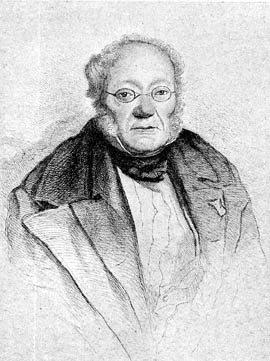
Above: French composer François-Antoıne Habeneck (1781 – 1849)
Mendelssohn did not offer the Symphony for performance at London.
During the summer of 1832, Mendelssohn returned to Berlin where he revised the Symphony.
Later that year a performance of the Reformation Symphony finally took place.
By 1838 however Mendelssohn regarded the Symphony as ‘a piece of juvenilia‘.
He never performed it again.
It was not performed again until 1868, more than 20 years after the composer’s death.

Above: Felix Mendelssohn
The Symphony is scored for two flutes, two oboes, two clarinets, two bassoons, “serpente” and contrabassoon, two horns, two trumpets, three trombones, timpani and strings.
Wikipedia makes no mention of a piano.

Above: Logo of Wikipedia
Fast forward from the age of Berlioz, Liszt and Mendelssohn….
The Atatürk Culture Art and Congress Center at Cumhuriyet Boulevard 104 in Eskişehir’s Ottoman quarter of Odunpazari seems like a building deliberately designed to intimidate visitors.
Stout and striking, gloomy and grand, the Center is a challenge to reach by cab – the streets choked with impatience, a vying writhing maze of men and their machines manically bound to reach either destination or death.
I make it with a mere ten minutes to spare.
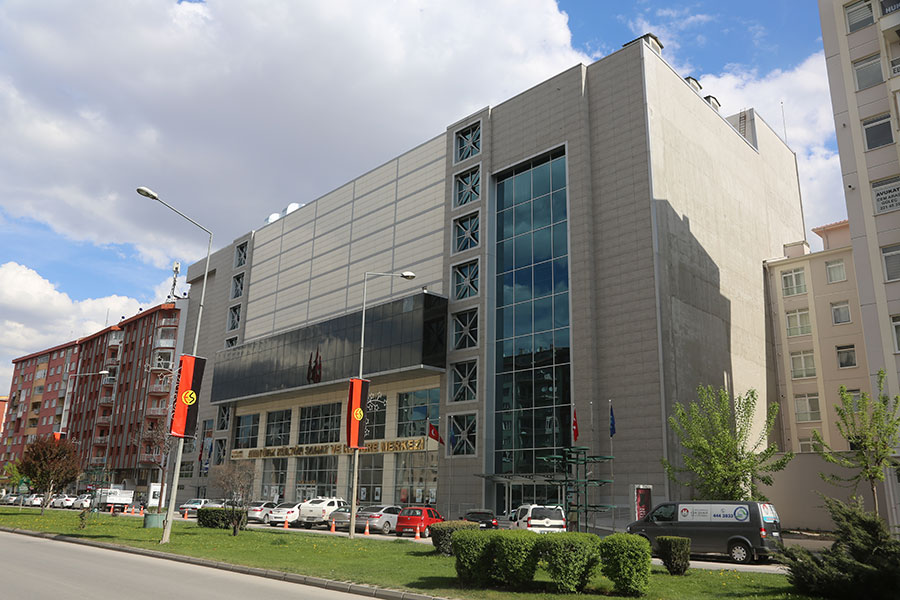
Above: Atatürk Culture Art and Congress Center, Eskişehir, Türkiye
I have made an effort.
I look resplendent, arrayed in my finest, albeit only, suit.
I need not have bothered.
The hoi polloi do not congregate here.
It is a working class crowd, only slightly superior to an average blue collar laborer.
As par for the course the lady voyeurs are more bedecked and adorned than their male companions.
I am immediately struck by a feeling of isolation.
I feel overdressed and I seem to be, as ever, the only person present who is unaccompanied by anyone else.
I am only slightly discomfited, for I am present for the primary purpose of showing my support for my student, I am here for my hero.

As I sit in my seat by the left wall facing the stage, I feel like an imposter, a freak, a creep.
Radiohead croons in my head.
But I’m a creep, I’m a weirdo.
What the hell am I doin’ here?
I don’t belong here.

Will I capture the passion that drives Eren to practice and perform and single-mindedly defend a style of music invisible and inaudible to most of the world of modern mass entertainment?
We gather to listen to the music of the dead, the legacy of decomposing composers.

Beethoven’s gone, but his music lives on,
And Mozart don’t go shopping no more.
You’ll never meet Liszt or Brahms again,
And Elgar doesn’t answer the door.
Schubert and Chopin used to chuckle and laugh,
Whilst composing a long symphony,
But one hundred and fifty years later,
There’s very little of them left to see.
They’re decomposing composers.
There’s nothing much anyone can do.
You can still hear Beethoven,
But Beethoven cannot hear you.
Handel and Haydn and Rachmaninov
Enjoyed a nice drink with their meal,
But nowadays, no one will serve them,
And their gravy is left to congeal.
Verdi and Wagner delighted the crowds
With their highly original sound.
The pianos they played are still working,
But they’re both six feet underground.
They’re decomposing composers.
There’s less of them every year.
You can say what you like to Debussy,
But there’s not much of him left to hear.
Claude Achille Debussy,
Died, 1918.
Christophe Willebald Gluck,
Died, 1787.
Carl Maria von Weber,
Not at all well, 1825.
Died, 1826.
Giacomo Meyerbeer,
Still alive, 1863.
Not still alive, 1864.
Modeste Mussorgsky,
1880, going to parties.
No fun anymore, 1881.
Johan Nepomuk Hummel,
Chatting away nineteen to the dozen with his mates down the pub every evening, 1836.
1837, nothing.

W.H. Auden suggested that a verbal art like poetry is reflective as it stops to think, while music is immediate as it goes on to become.
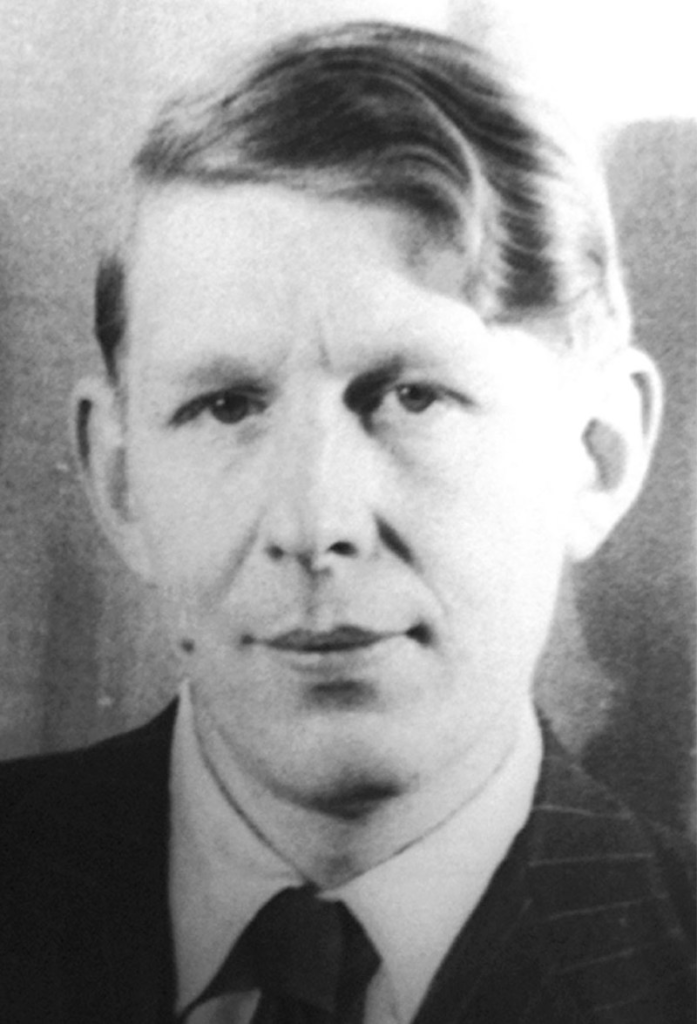
Above: English poet Wystan Hugh Auden (1907 – 1973)
That is what I am searching for:
A sense of immediacy and a longing for a lingering of intense feeling.
The scent of flowers carried aloft from the perfumed cleavage of a beautiful woman, the savory taste of sensuality found inside a lover’s offering of chocolate, the soft word whispered in the intimate embrace of a lover, where facts surrender to fancy and rationale to romance….
Let yesterday be a memory and tomorrow a mystery, but rather revel in the moment of the gift of the present.
I want to be inspired in the same manner that great literature inspires great music.
Great music which penetrates the ear with facility and leaves the memory with difficulty – a magic that never abandons its admirers.
Perhaps most of us ask as little from life as we ask from the music we listen to.
We should ask much from life as we are probably allotted only one.
Life and its expression found in art, literature and music should be capable of amazing journeys and meaning.
So, Eren Yahşi…
So, Eskişehir Symphony Orchestra…
Impress me.

Above: Atatürk Culture Art and Congress Center, Eskişehir, Türkiye
I think what bothers me about classical music is that the average man is unaware, with the exception of film soundtracks, of any novel creations in this genre.
Say what one will about modern music, it produces more tunes an average man can whistle and melodies his mouth can hum, because for all the majesty that songs without words evoke, it is the language of lyrics that speak to him more personally, more powerfully.
Yes, there is much to honor and respect of those ancestorial giants from whence modern music owes its existence, but of the youth who ride the rails and haunt school hallways, they who are, Heaven help us, the future, it seems that what music came before their existence lies neglected in a graveyard of ignorance and apathy.
We don’t know the names and music of these decomposing composers.
We don’t know and therefore can’t care.
The curse of modern music is that there seems to be beneath its surface a rage either against the scourge of solitude or counter to the ills that ail society.
Classical music is cruel in that it is so beautiful, the loveliness of loneliness, the pristine pain, the subtle strength and the fervor of freedom, the desire and the disappointment, the never-satiated love, naive nature and the melody of monotony.
Classical music ceaselessly strives to reach the centre of civilization, seeking to perceive beyond the surface, mapping a maze of madness, rhythmically riding a road of reason to the essence of existence.
Songs without words that speak volumes to what lies beneath.
This is what I seek:
The promise that lyrics lack.

The Eskişehir Metropolitan Municipality Symphony Orchestra was founded in 2001 with a staff of 24 under the leadership of Professor Dr. Yılmaz Büyükerşen to provide unforgettable moments to music lovers.
The Orchestra, which has developed and grown over time, continues its activities today with a staff of 59 people, under the artistic direction of Ender Sakpınar.
Since the day it was founded with the aim of adding value to the cultural life of Eskişehir, the Orchestra has given many concerts and events, both locally and internationally.
The Eskişehir Metropolitan Municipality Symphony Orchestra aims to bring the magical world of classical music to a wide audience, to make art accessible to everyone and to inspire young musicians.
With the aim of offering a different experience to the audience in every concert, the orchestra performs with a variety of repertoires and has managed to win the appreciation of music lovers.
The Orchestra offers a rich repertoire by featuring works by contemporary composers as well as classical works.
In addition, it brings together different musical styles by organizing special concerts and musicals from time to time.
It contributes to the cultural identity of Turkey and Eskişehir by taking part in national and international culture and arts organizations.
Having an important mission in terms of discovering and supporting young talents, the Eskişehir Metropolitan Municipality Symphony Orchestra invests in the future of music by organizing various educational programs and establishing institutional collaborations.
It offers development opportunities for current and future musicians through projects carried out in cooperation with the cities of Istanbul, Ankara, Izmir and Antalya.
The Eskişehir Metropolitan Municipality Symphony Orchestra continues to direct the city’s artistic life by building cultural bridges in Eskişehir with the universal language of music.
The Orchestra aims to reach wider audiences and bring people of all age groups together with music.

The stage is set and the performers gather:
- the strings – 18 violins, 6 violas, 6 cellos and 4 double bass
- the woodwinds – 3 flutes, 3 oboes, 3 clarinets and 3 bassoon
- brass – 5 horns and 3 trumpets and a tuba
- percussion – 5 performers
- the piano
Eren and the rest are resplendent in formal wear.
He takes his seat, a king on a throne, and yet a subject of the symphony that surrounds him.
Fingers frolic.
Digits dance.
Precision prances from the belly of the beast.

Above: Eren Yahşi, the man, the music
Berlioz is bereft of life, and yet his being is buoyantly alive in the bounty of his music.
Liszt lives no longer, and yet here he lingers in the lilt of the moment.
Mendelssohn is no more, and yet he is no less a provocative presence prancing from the piano in this concert hall tonight.

Above: Eren Yahşi
Eren makes love to the music.
He attacks.
He seduces.
He coaxes.
He caresses sound from ebony and ivory, wire and wood.
His will be done.
The music becomes that which lives.

Above: Eren Yahşi
I watch, spellbound and speechless.
Even as I write these words, the fullness of the moment escapes me.
The symmetry of so many to produce so much.
46 musicians performing precisely in the synchronicity of flawless fluid motion.

As Bruce Chatwin so aptly put it:
Music is a memory bank for finding one’s way about the world.

Above: English writer Bruce Chatwin (1940 – 1989)
This concert hall is not merely in Eskişehir – a city unknown to many outside of Türkiye – but the music transports us to all the concert halls where the music of Berlioz and Liszt and Mendelssohn and the music of all those who have dared to put humanity into harmony breathes.
One needs only to learn how to listen to the ambient atmosphere, that surrounding influence, the tint of tempo.
That miracle of how mere men can create such sounds of divinity.

All men are lonely.
Only music can truly encapsulate that loneliness, that quality of longing and unrest.
Each man is an individual note.
Together we create a bittersweet symphony of breathtaking beauty.

“We don’t read and write poetry because it’s cute.
We read and write poetry because we are members of the human race.
And the human race is filled with passion.
And medicine, law, business, engineering, these are noble pursuits and necessary to sustain life.
But poetry, beauty, romance, love, these are what we stay alive for.“

To quote from Whitman:
“O me! O life!
Of the questions of these recurring
Of the endless trains of the faithless,
Of cities fill’d with the foolish…
What good amid these,
O me, O life?
Answer:
That you are here —
That life exists, and identity,
That the powerful play goes on,
And you may contribute a verse.”

Above: American poet Walt Whitman (1812 – 1892)
“That the powerful play goes on,
And you may contribute a verse.
What will your verse be?”
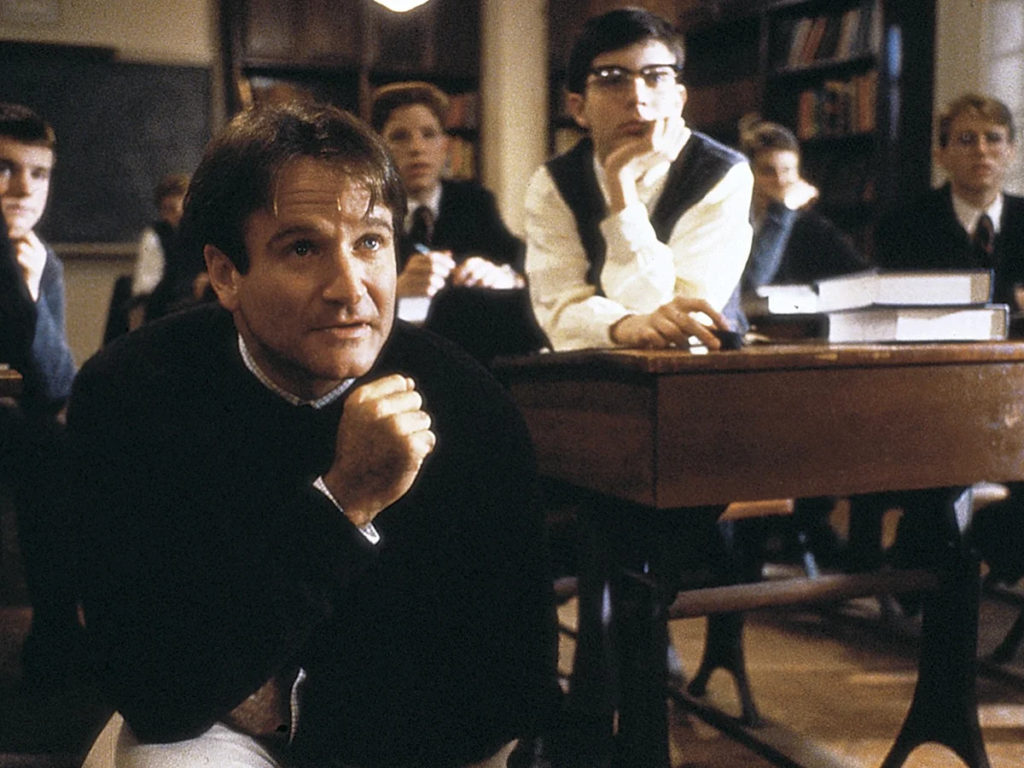
Above: John Keating (Robin Williams), Dead Poets Society
We are all so full of restraint.
In music, we can lose ourselves and rediscover ourselves once again.
Music is a symbol of our sin and the source of our salvation.
Words lose their meaning in translation, but music speaks to us all in a language we can all understand.
Music is your own experiment, your own thoughts, your wisdom, your identity.
We don’t listen to music.
We live it.

Music travels from the ears to the heart, from the illumination of the imagination to the gluttony of genitalia, stimulating the senses and arousing the animal within.
Even the mechanics of sex has music in its motions.

I pity the 46 performers, for all a musician can do is to get closer to the sources of nature and so feel that communion with the laws of sound might be possible and so believe that they can be interpreted to the best of a musician’s ability.
This is the agony and the ecstasy – that glorious struggle to give life to the listener of the many wonderful things he knows of and senses in the universe – this big beautiful universe gifted to us in all its magnificence and splendor.

Songs without lyrics:
If the music cannot speak to you, then how can lyrics speak for the music?
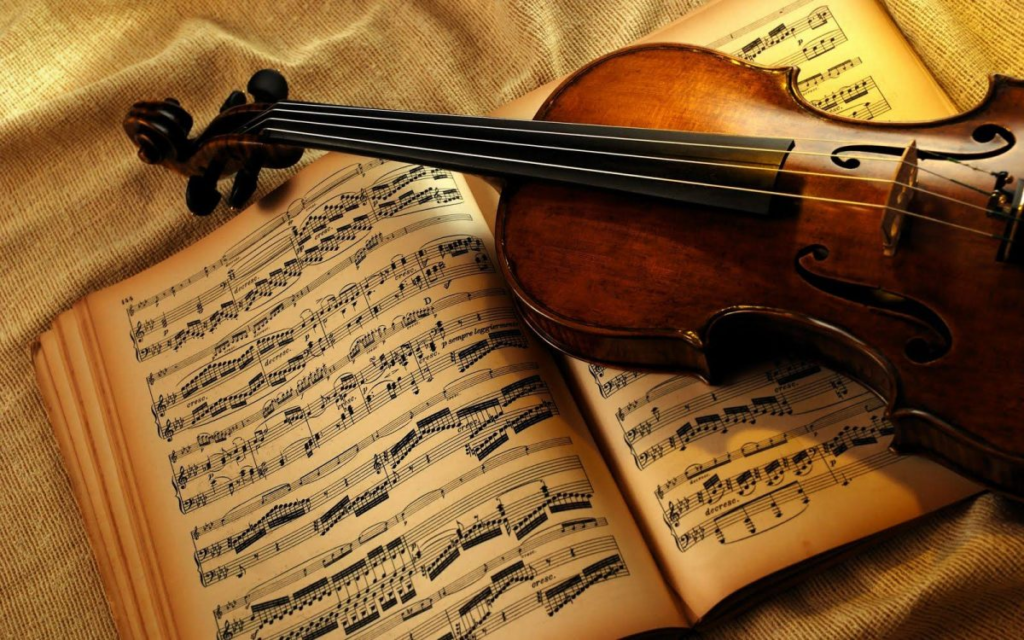
For the answer to the question of whether there is meaning to music is “Yes“, but to state in words what that meaning is, then the answer is “No“.
At no point can the musical experience be held in one’s grasp, for the never-ending flow of music triggers the imagination – and the human imagination knows no bounds.
The greatest moments of the human spirit are expressed in music’s greatest movements.

I had hoped to speak with Eren before leaving the concert hall, but he performs the three-posted pieces that his billboard promised and leaves, while the Orchestra continues to weave its spell upon the spectators.
And I don’t know, especially with Türkiye’s security-conscious paranoia (only partially justifiable), whether the concept of going backstage to speak with a symphonic performer is something that is actually done.
There is so much that I don’t know about Eren.
So much I want to ask.
So much I don’t dare ask.
Does his life resemble the lives of the composers whose music he performs?

Above: Eren Yahşi and company
His is a world of the rare.
How few of us ever enter the doorway of a conservatory!
How few of us ever perform in front of large assemblies of people!
(Teaching is as close to that experience as I have ever come.)

I have had only passing moments with the artistic.
I dated a sculptor who supplemented her art by teaching children.
She has since married another and has her own gallery.
It had not been a great relationship.
For either of us.
I hope she is truly happy.

I briefly acted in high school (Robin Goodfellow / Puck in Wake Up and Love, a modernized version of Shakespeare’s Midsummer Night’s Dream).

I was an extra on the TQS drama Lobby filmed on Ottawa’s Parliament Hill.

Above: Parliament Hill, Ottawa, Ontario, Canada
Billy McCrae of my high school class is a talented musician – but of a caliber unheralded much beyond the borders of the places he has called home.

Above: Canadian musician Billy McRae
I gave and received a massage from a ballerina performing with the Winnipeg Ballet when we were both guests of the Ottawa International Youth Hostel.

Above: Ottawa Jail Hostel
I found myself witness to impromptu jams in unusual places during my walking days across Canada.

Above: Flag of Canada
And of my WSE students, I have taught Eren the concert pianist, a woman who was part of the Eskişehir Orchestra (whose name and instrument of choice I cannot recall), another woman working in the local wax museum, and a glassblower-artisan (now resident in America).

Whether AK has student artists has yet to be discovered.

Art, excepting the writing that I attempt, has always remained in the periphery of my life.
I have never encountered celebrities that merit a Wikipedia entry.
I cannot decide if this is a good thing or not.
I long to speak to the talented, but, Heaven help me, I have no idea how to start such conversations.

I leave the hall in much the same manner I entered, almost obtrusively.
I decide that the evening is pleasant enough for a stroll.
I attempt to walk back to the Box (my name for the tiny one-room “apartment” that I lease from June to December) from the Atatürk Centre.
Somehow, I lose my bearings and need to flag down another cab to return “home“.

Unlike songs without words, the jukebox of my mind cannot replay the music of the night just experienced.
And yet…
It is not the tune that lingers with me as much as it is the feelings that the music produced that remains.
I have been witness to a magical moment – a live performance of a symphony orchestra – and I hope that this experience is only the first of many to come.
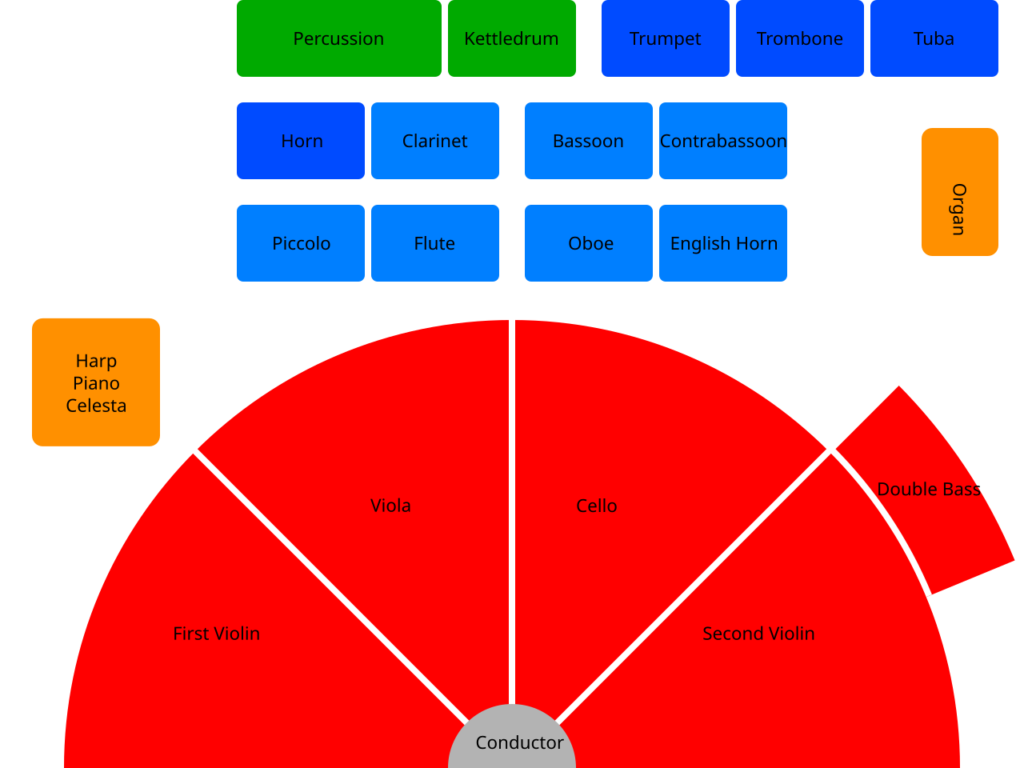
Above: Modern symphony orchestra layout

Sources
Mason Curry, Daily Rituals
Monty Python, “Decomposing Composers“, Monty Python Sings
Radiohead, “Creep“
Tom Schulman, Dead Poets Society
Sherrie Gong Taguchi, The Career Troubleshooter
Andrew Lloyd Webber, “The Music of the Night“, The Phantom of the Opera
Wikipedia